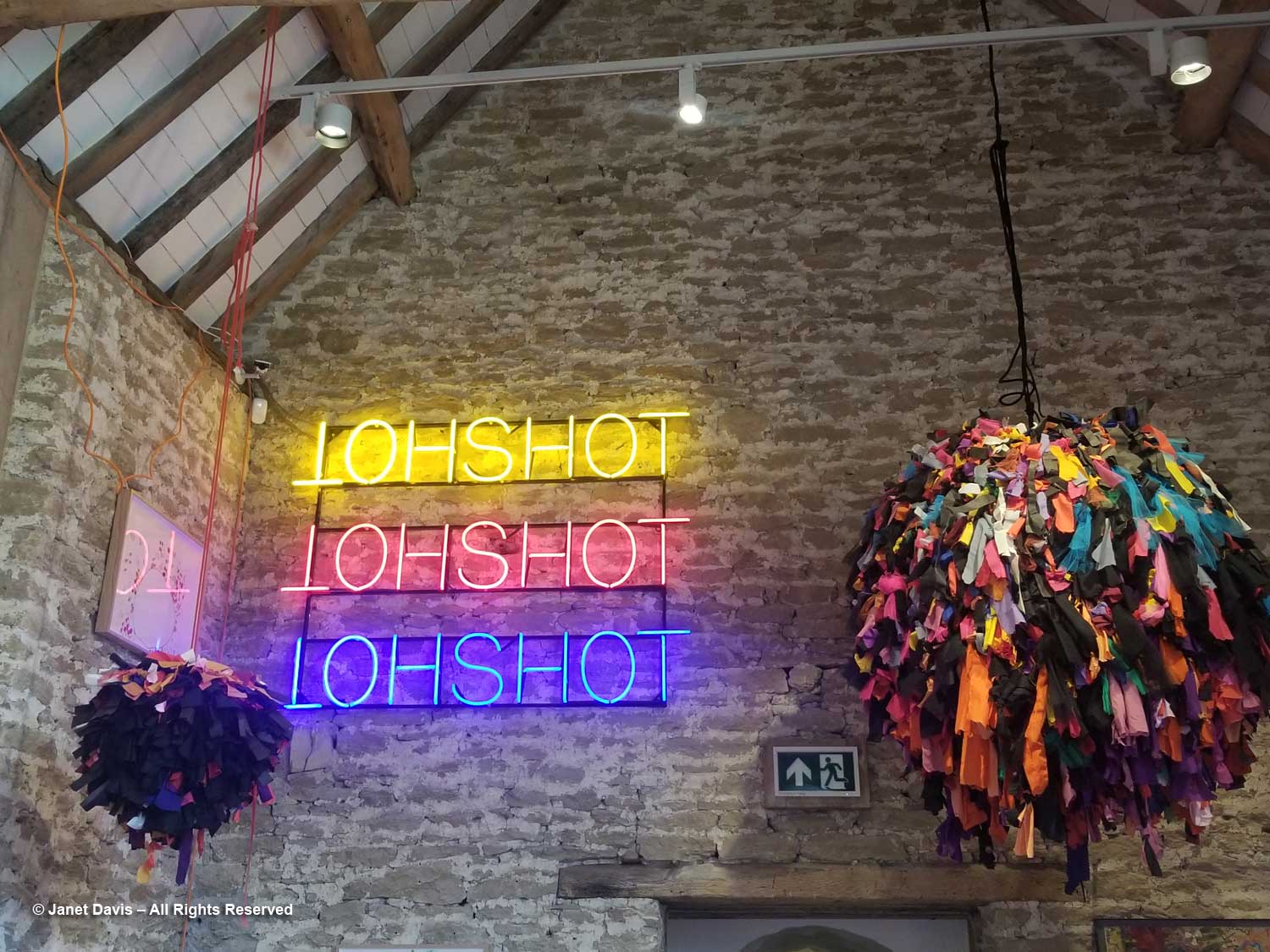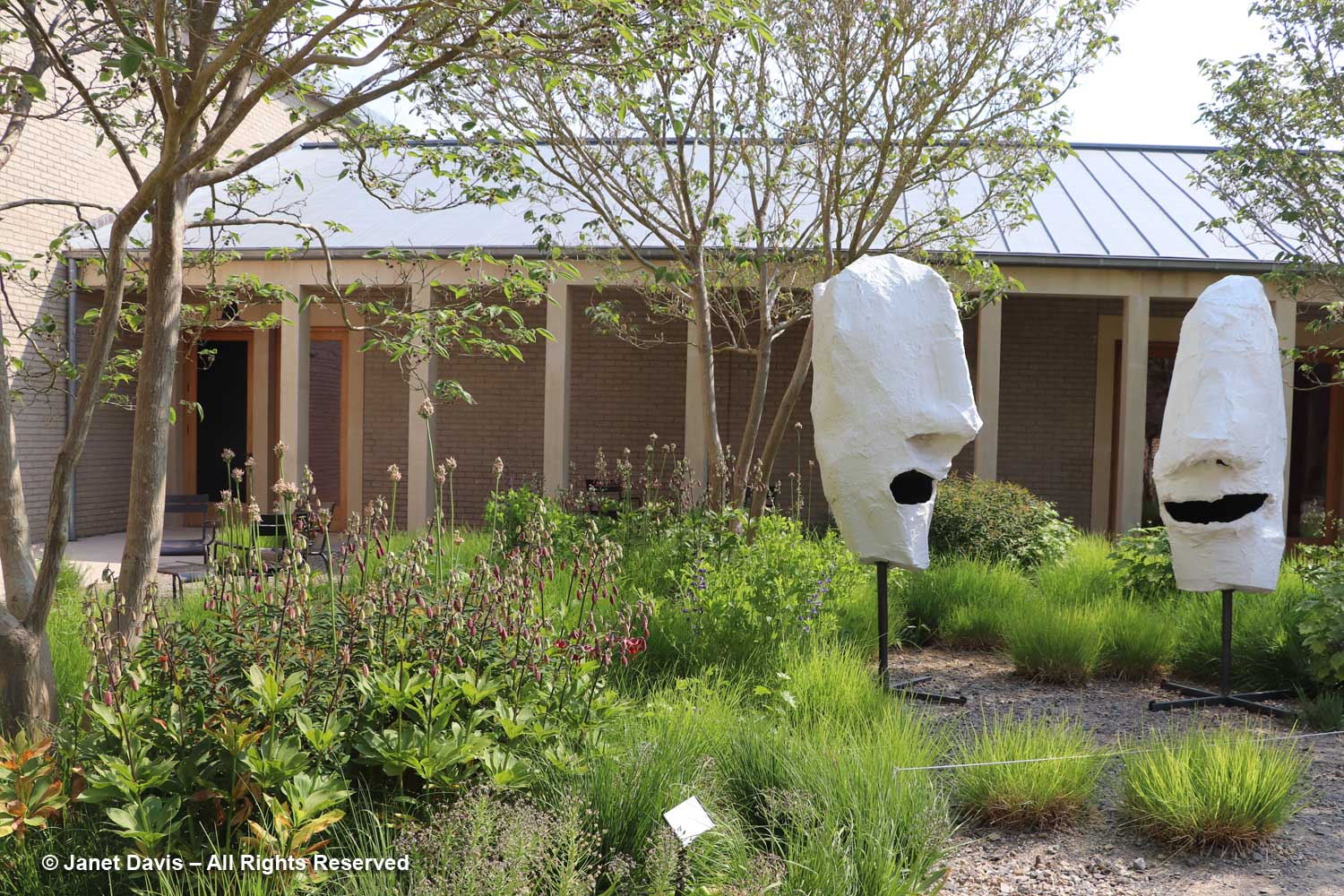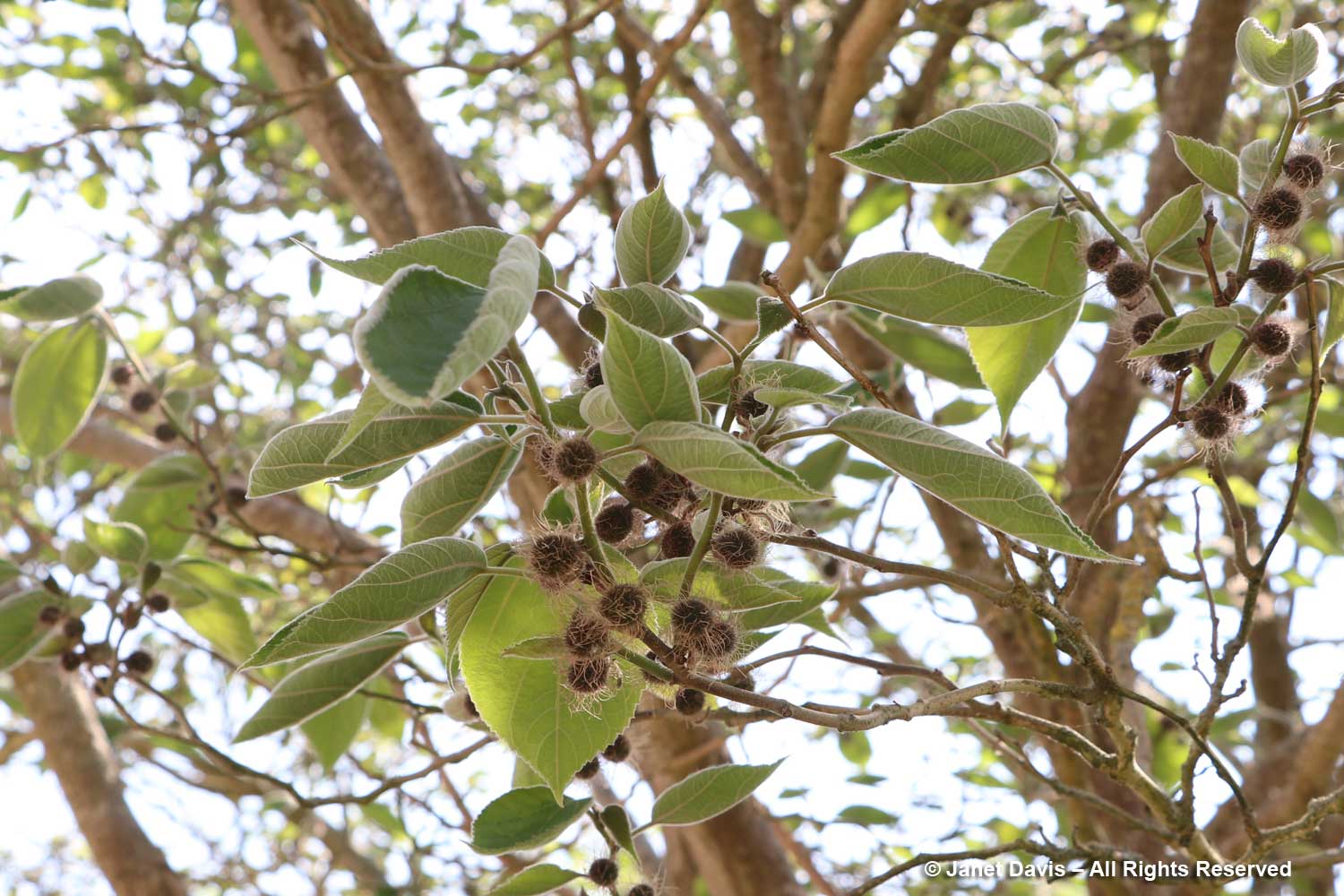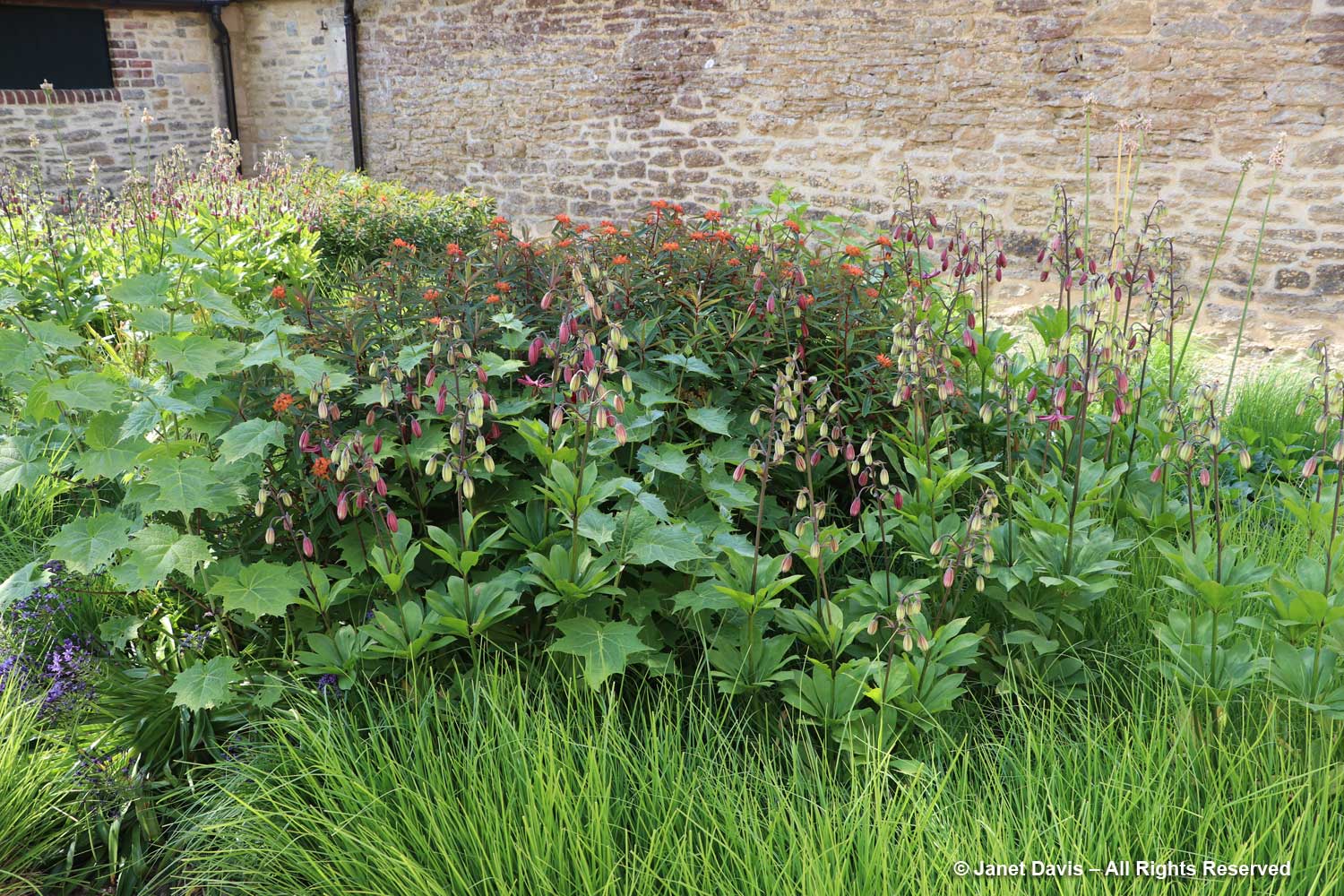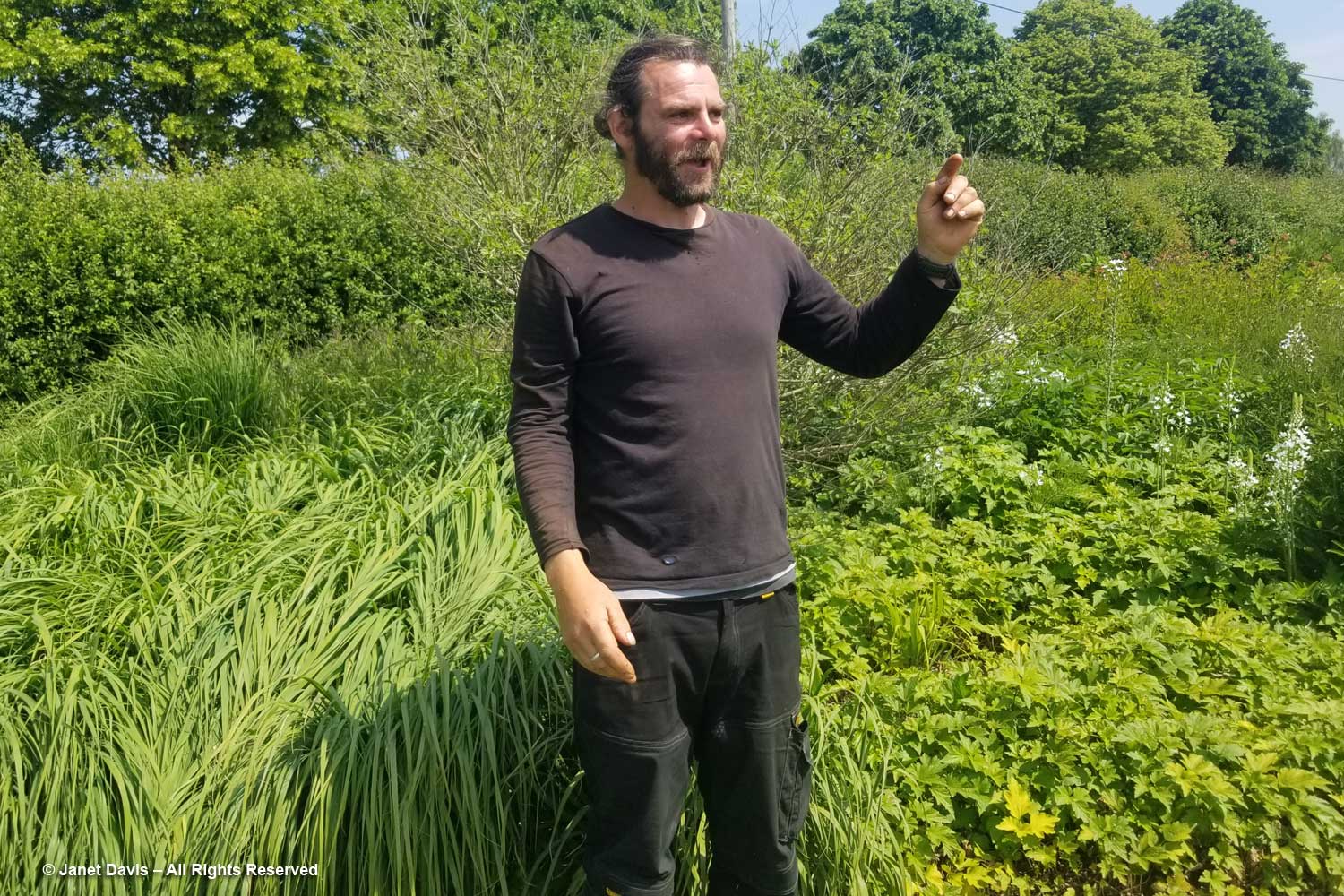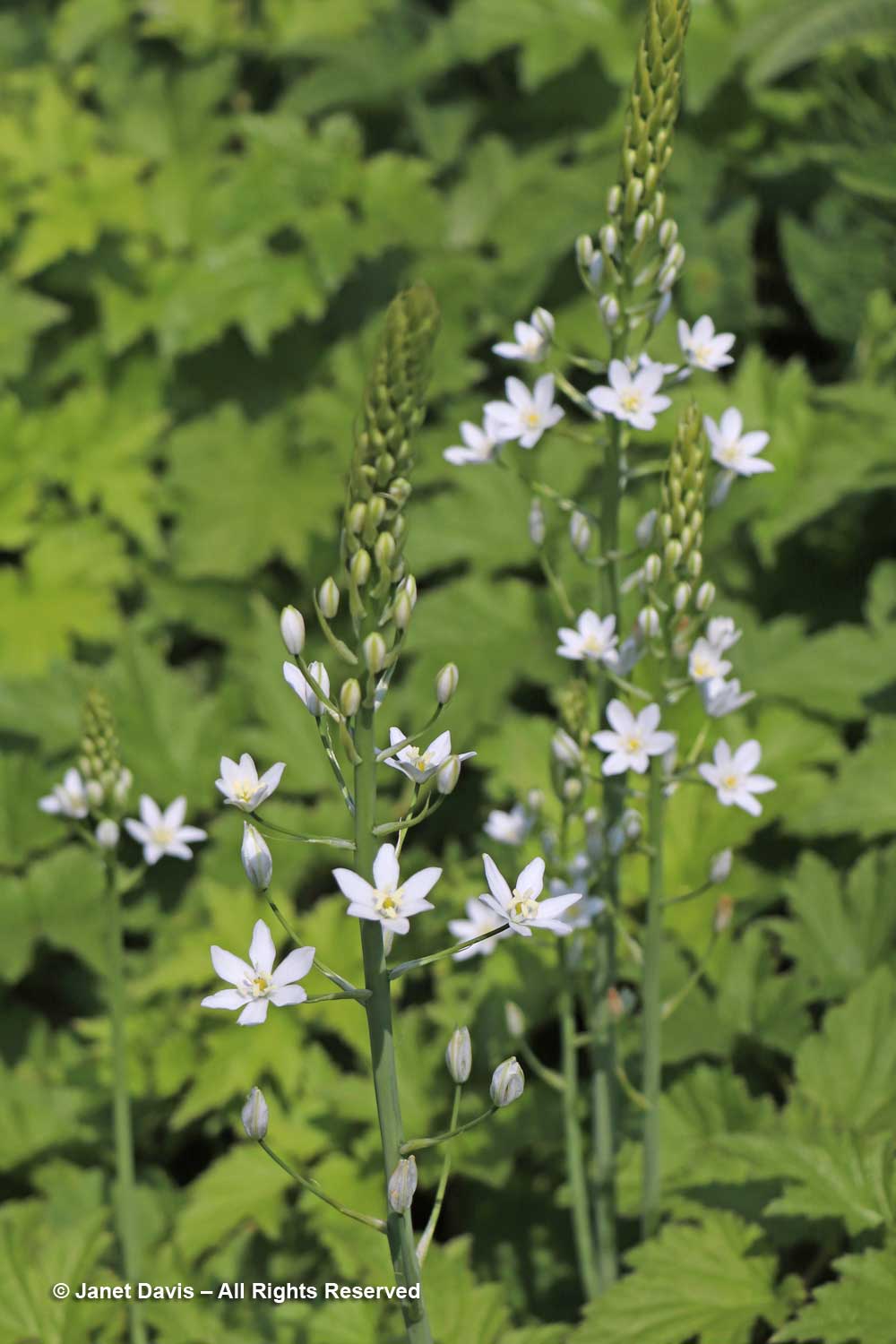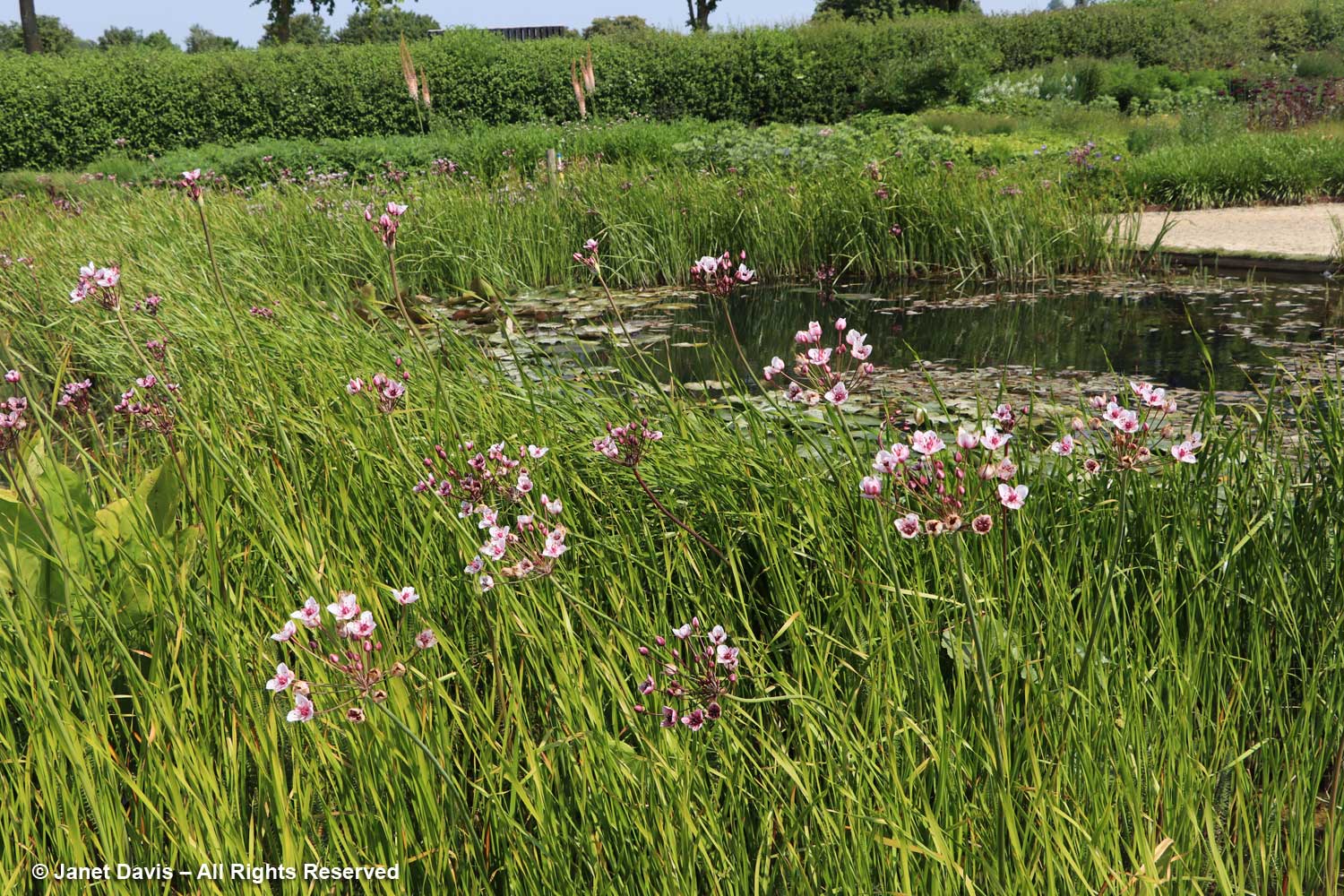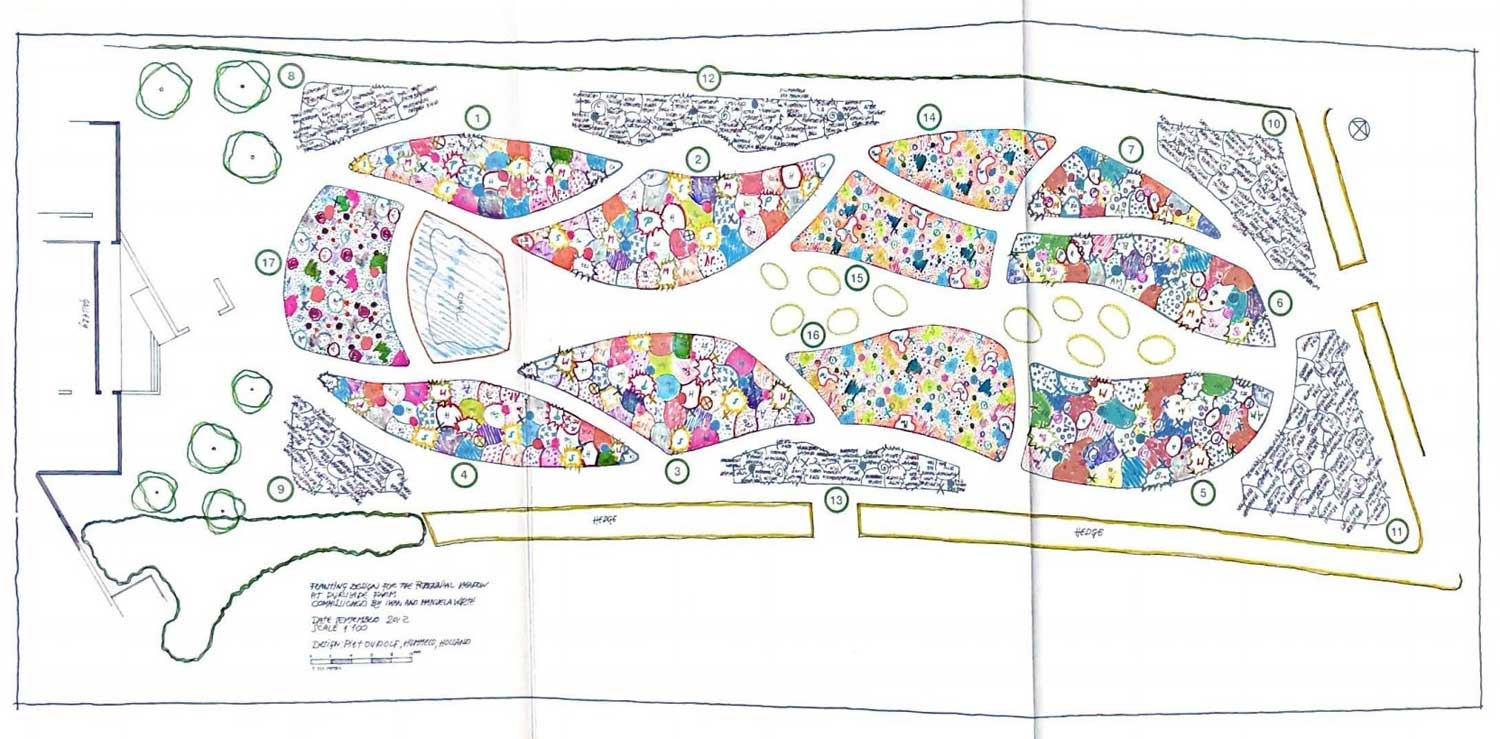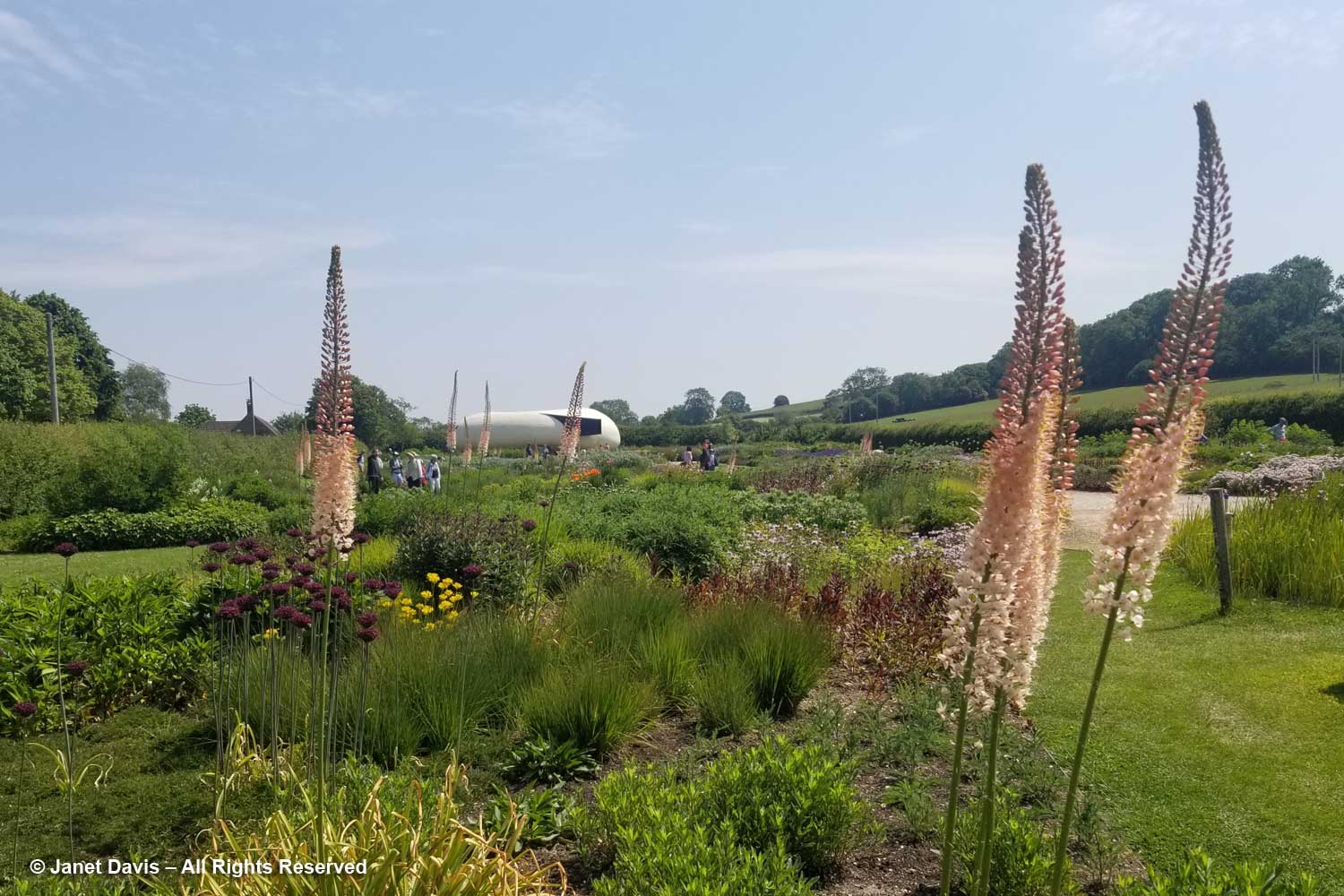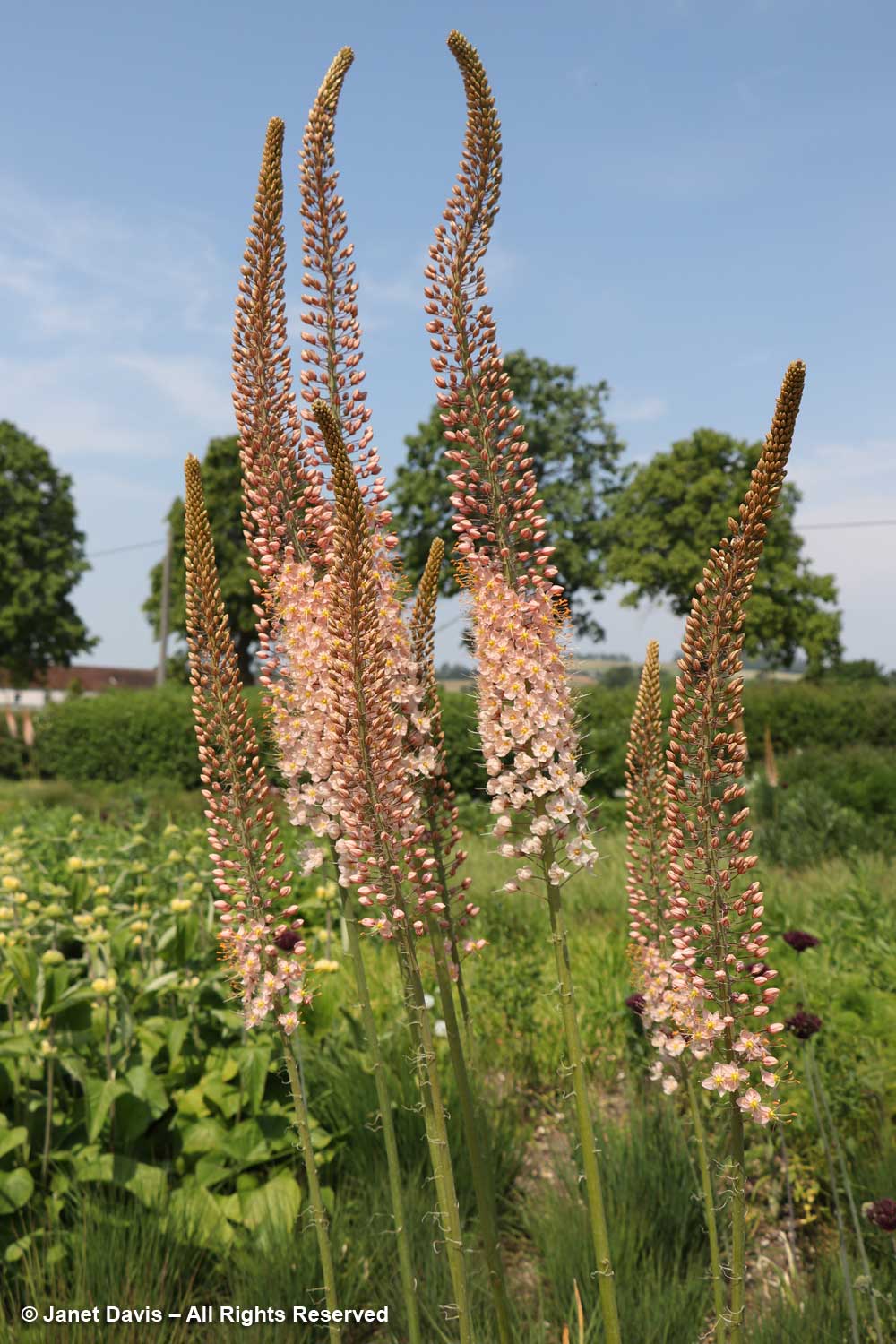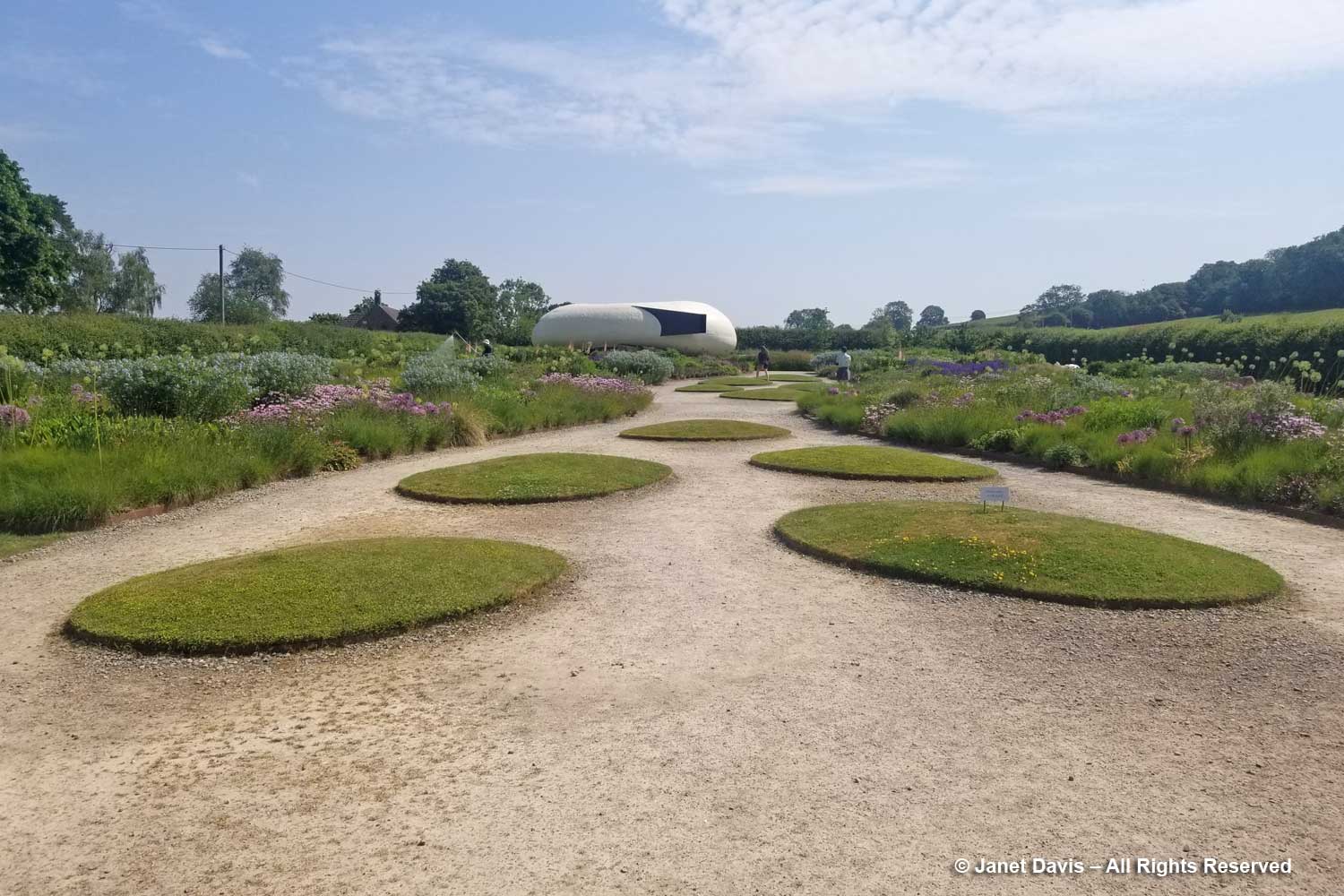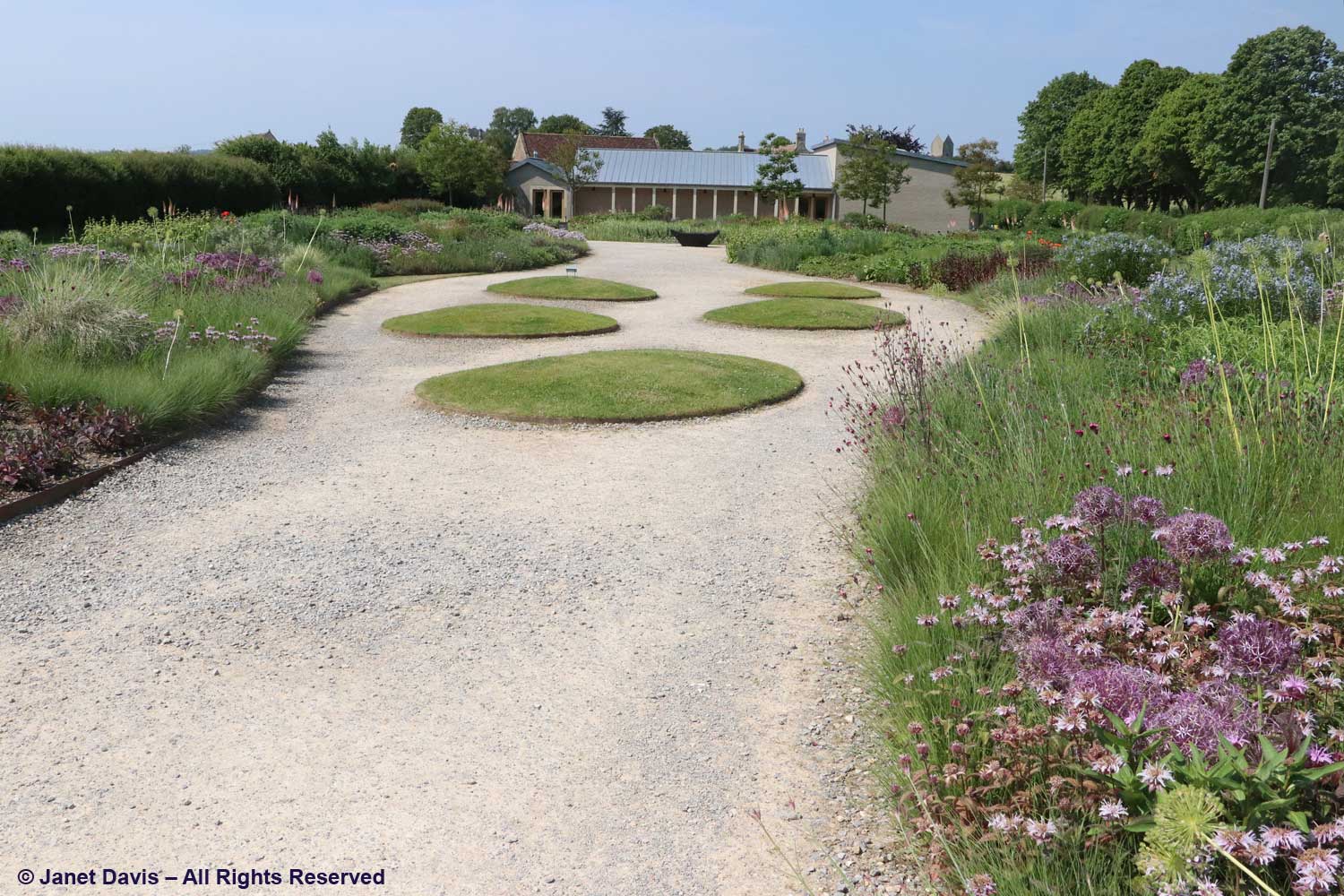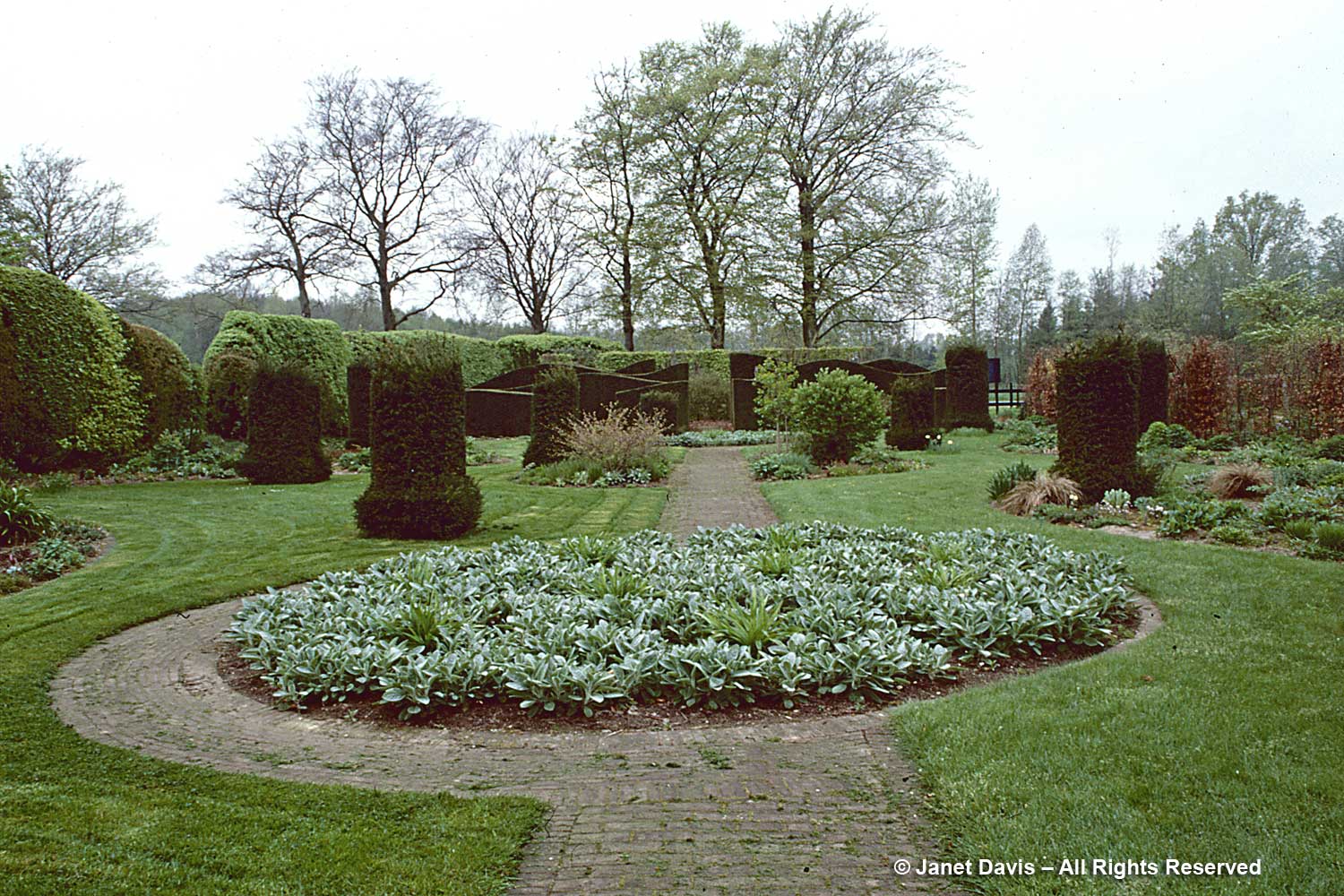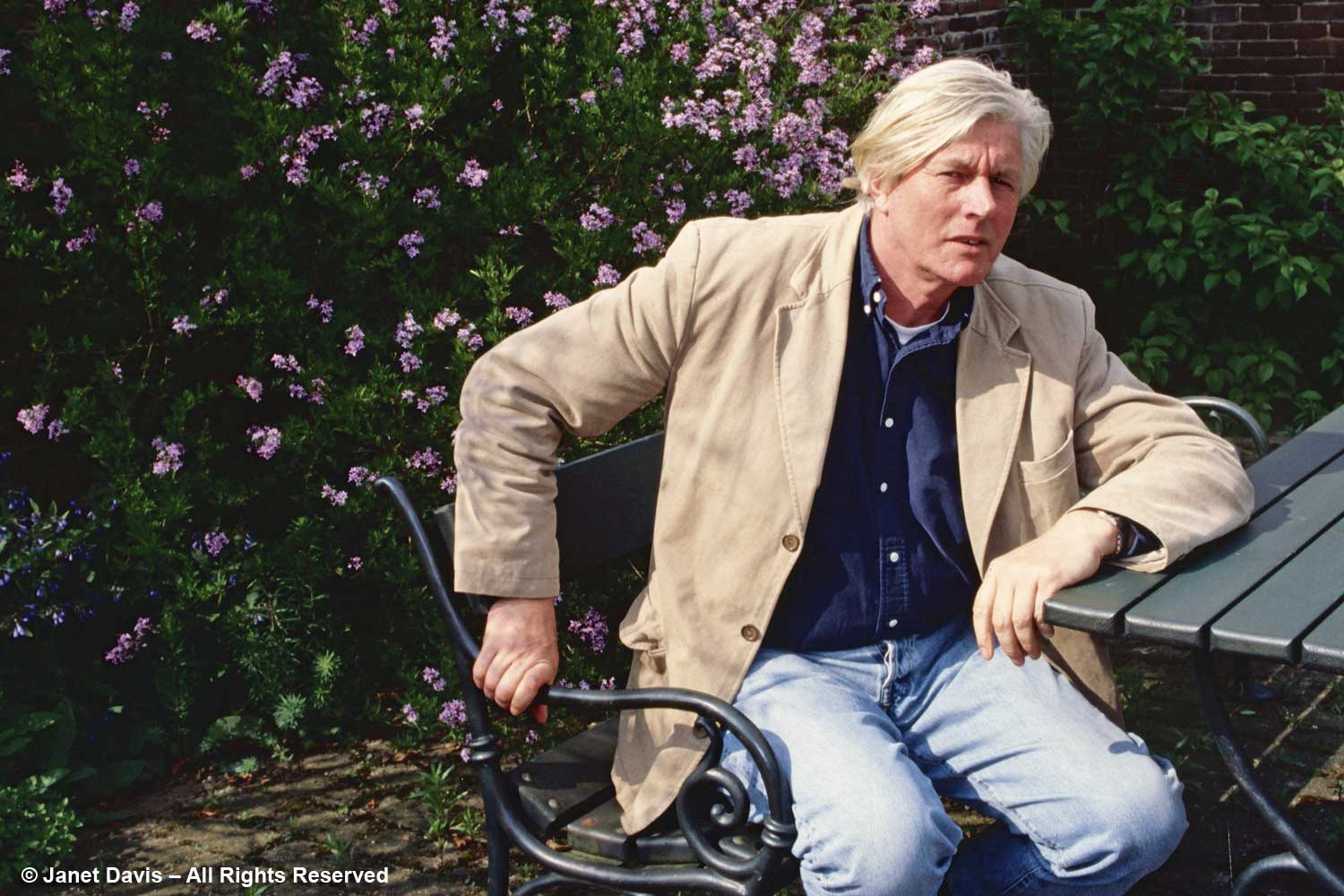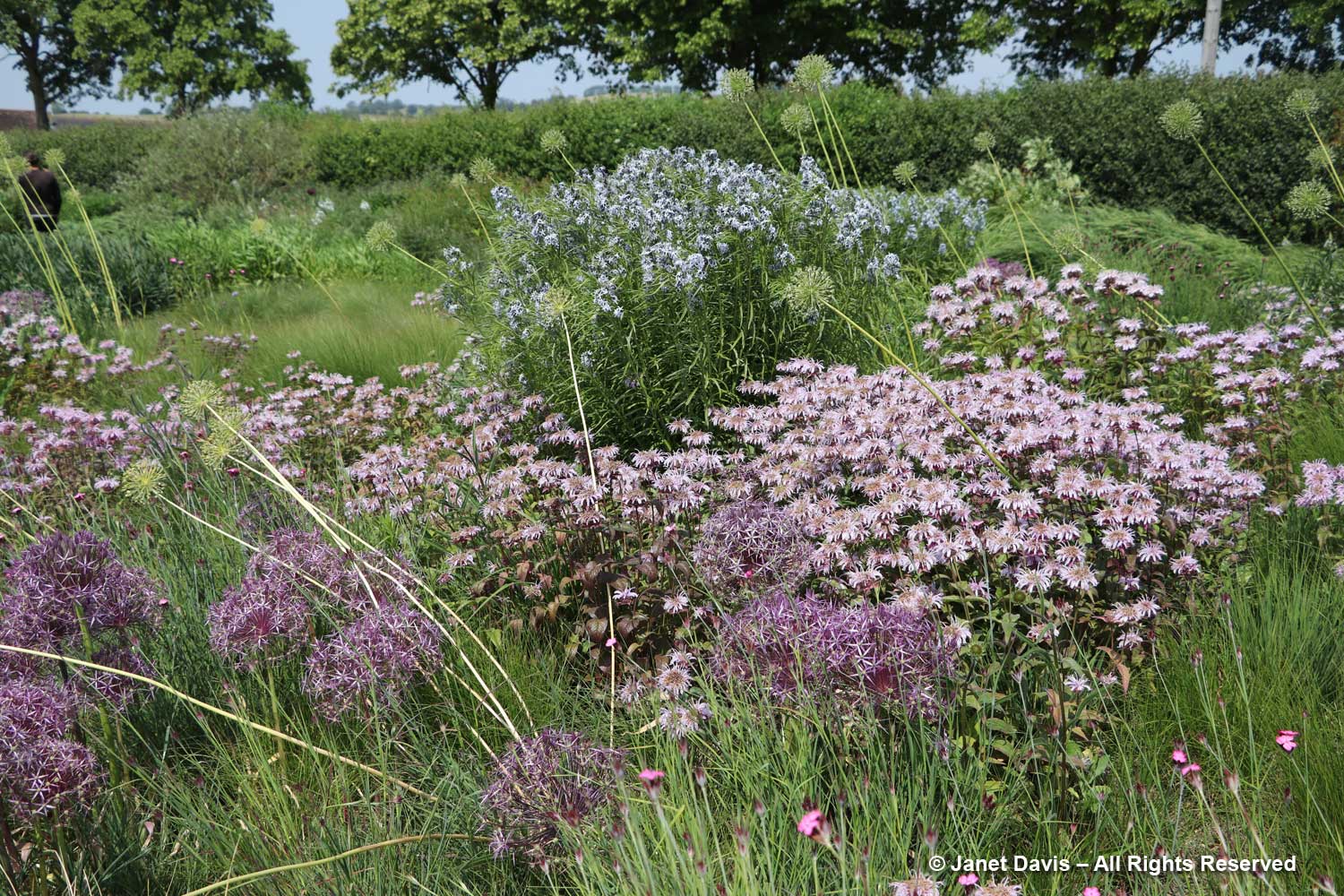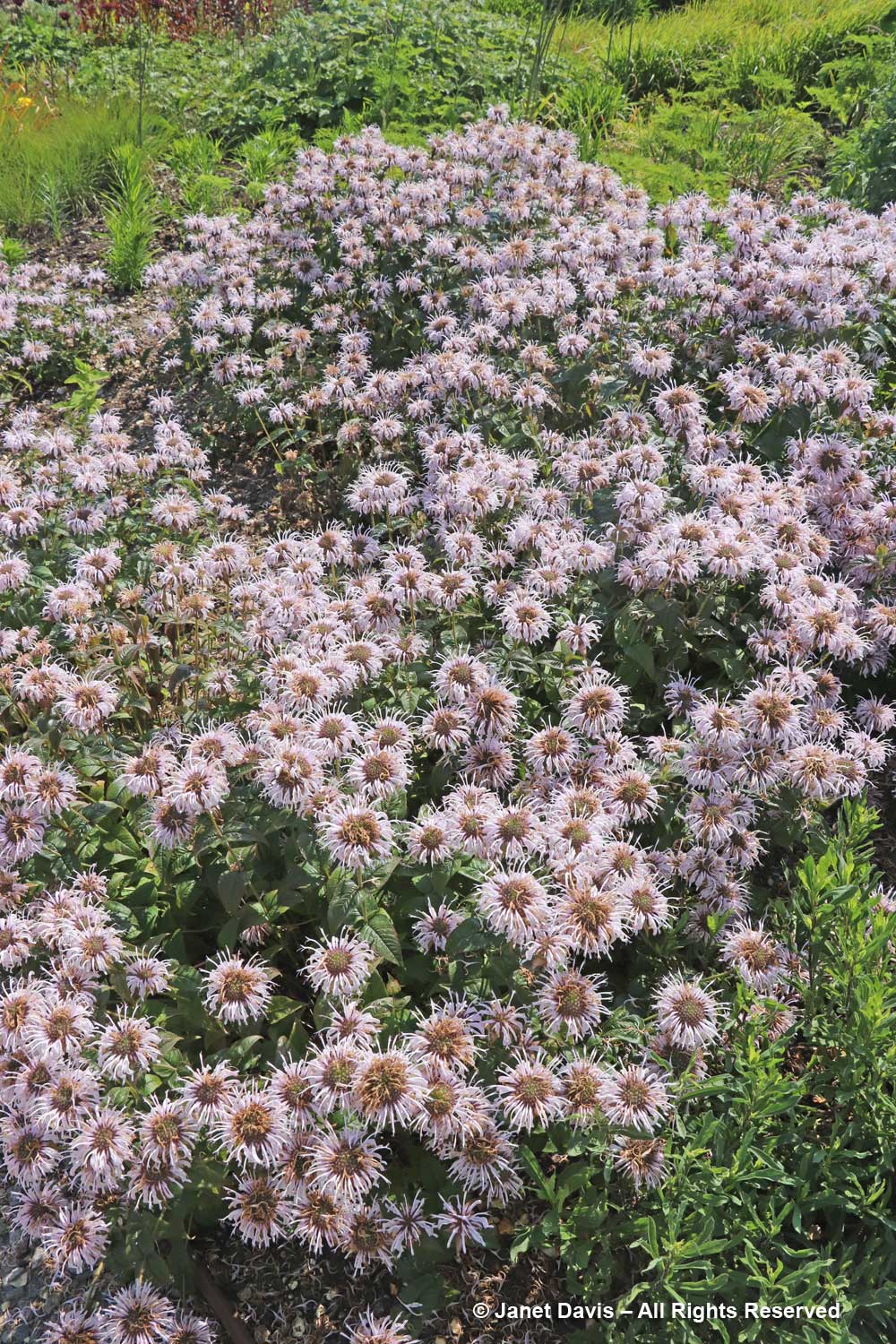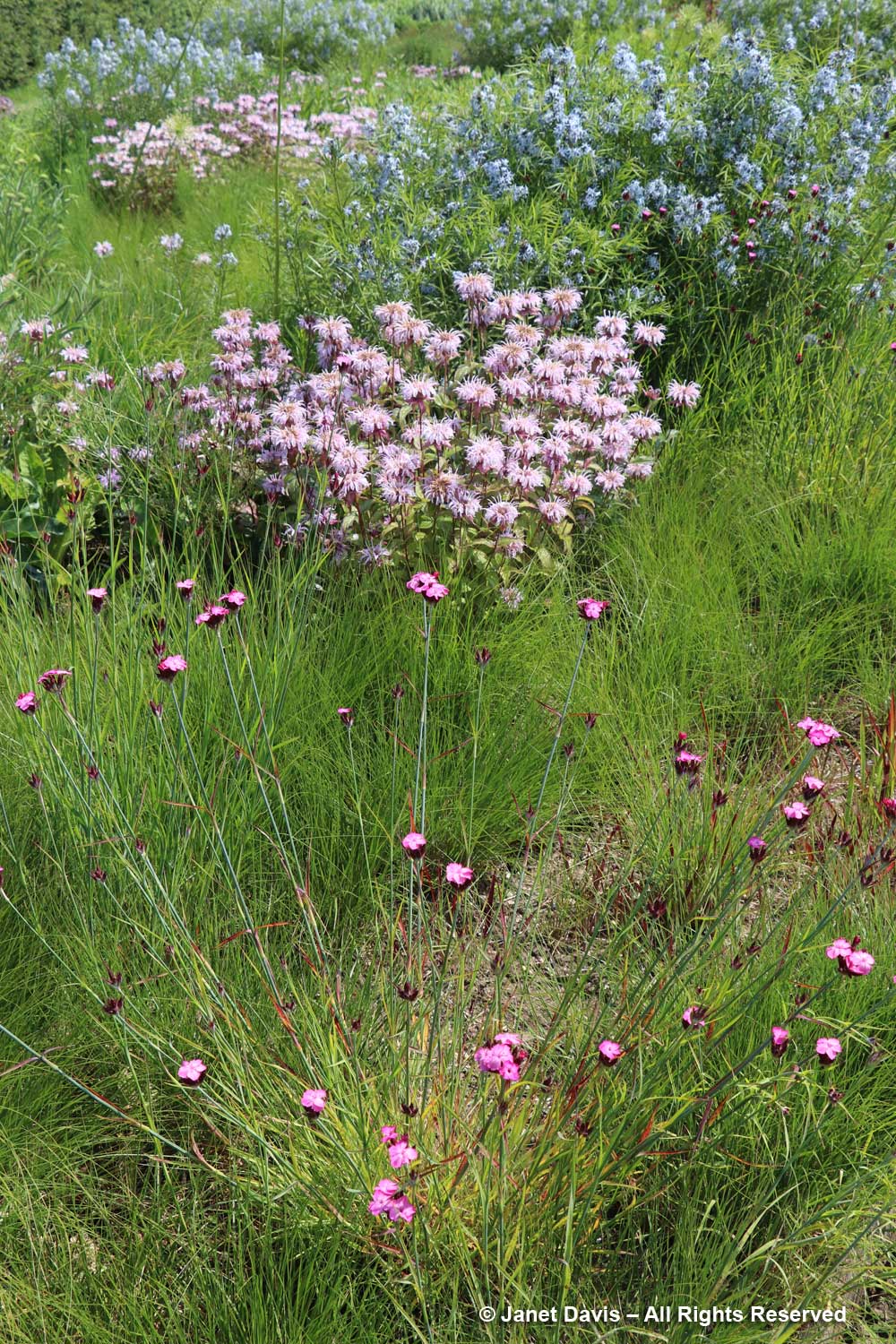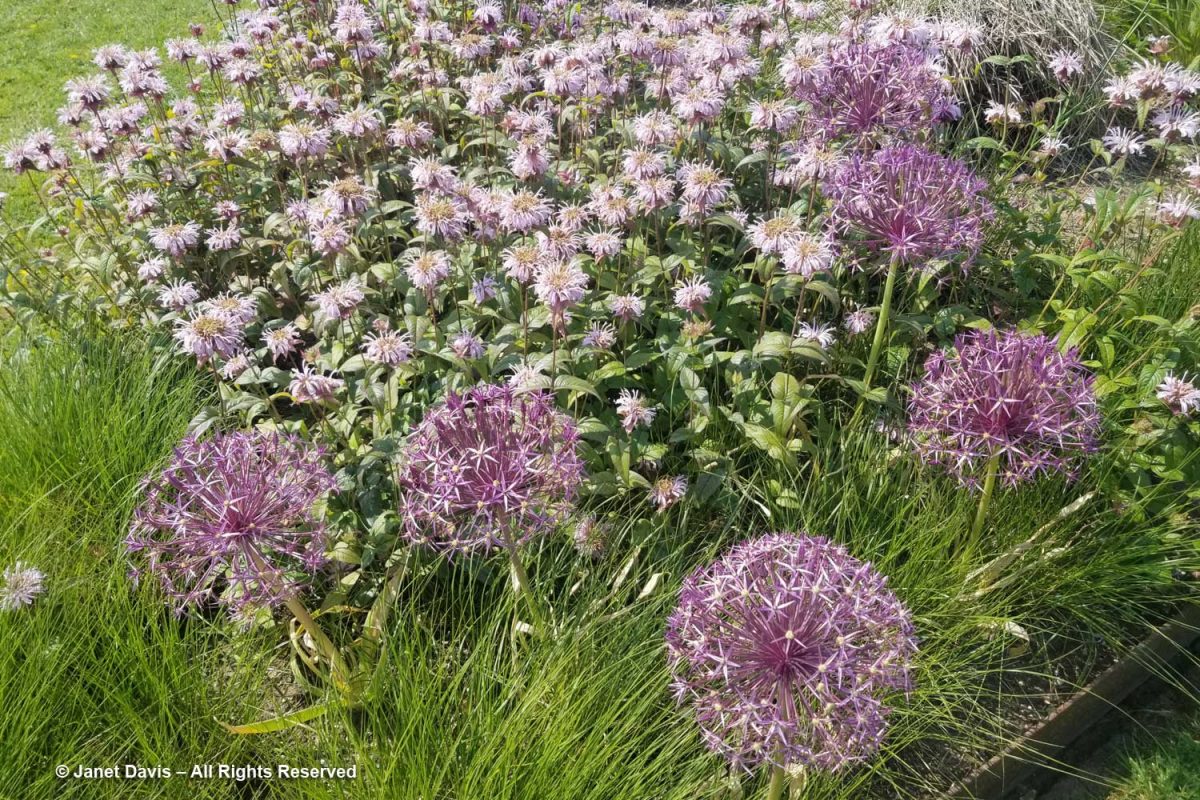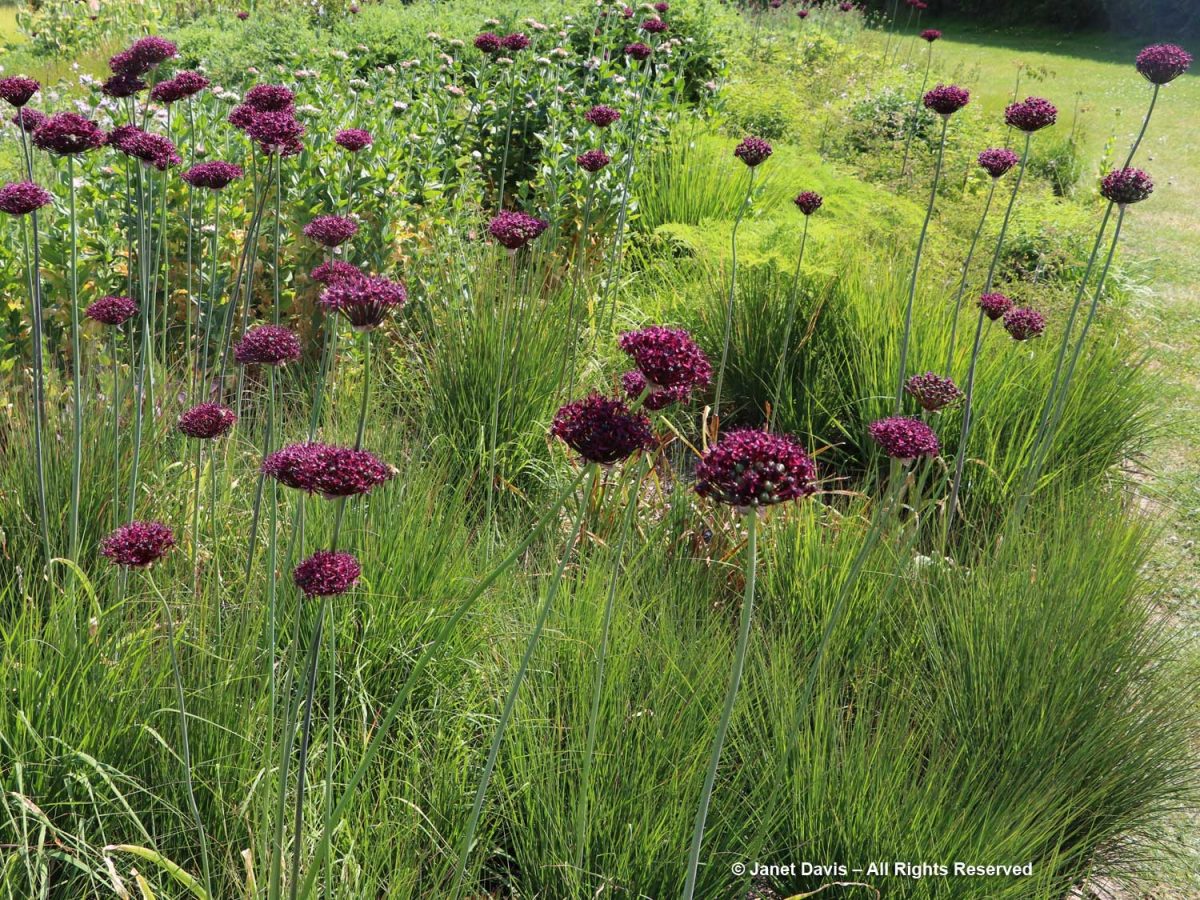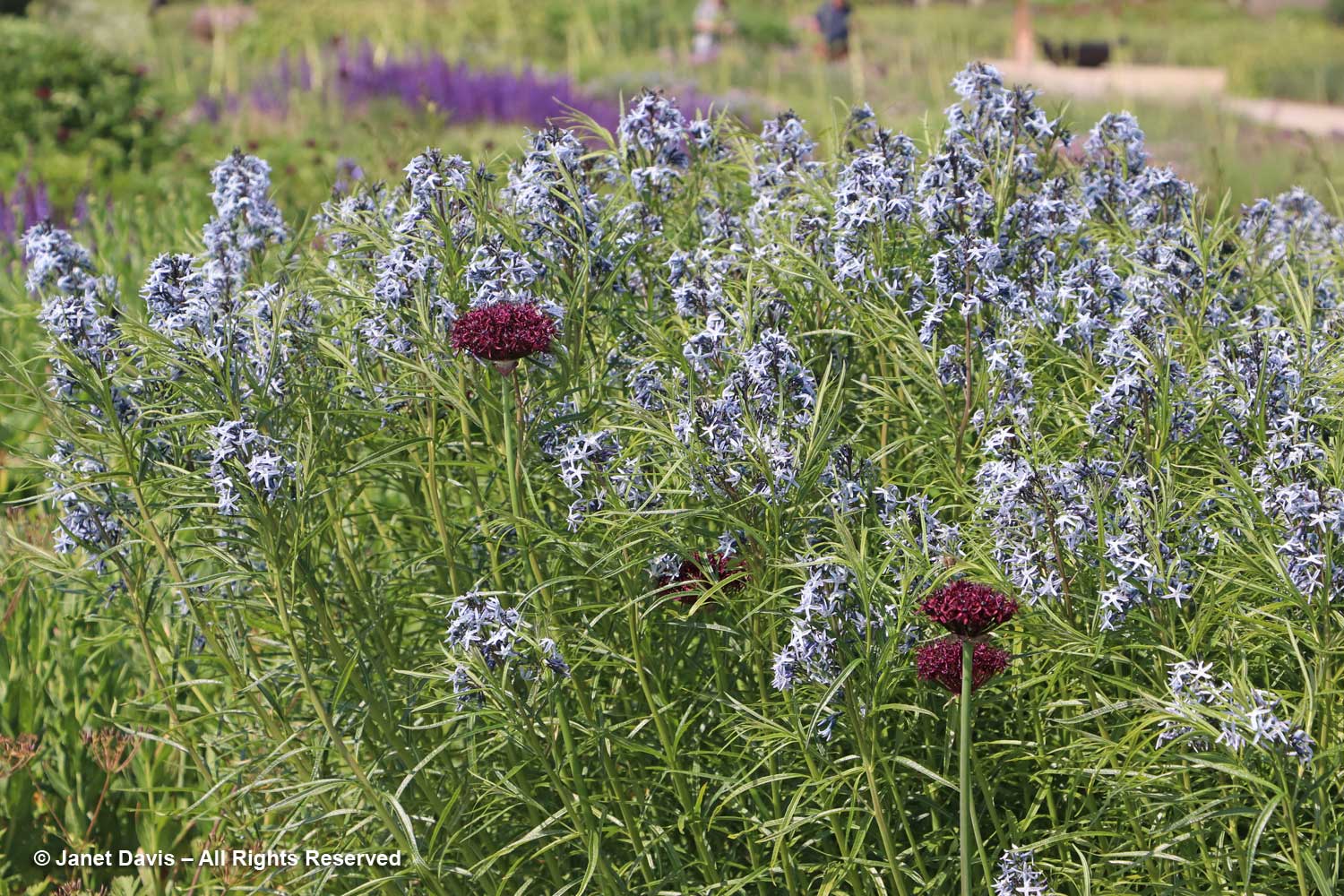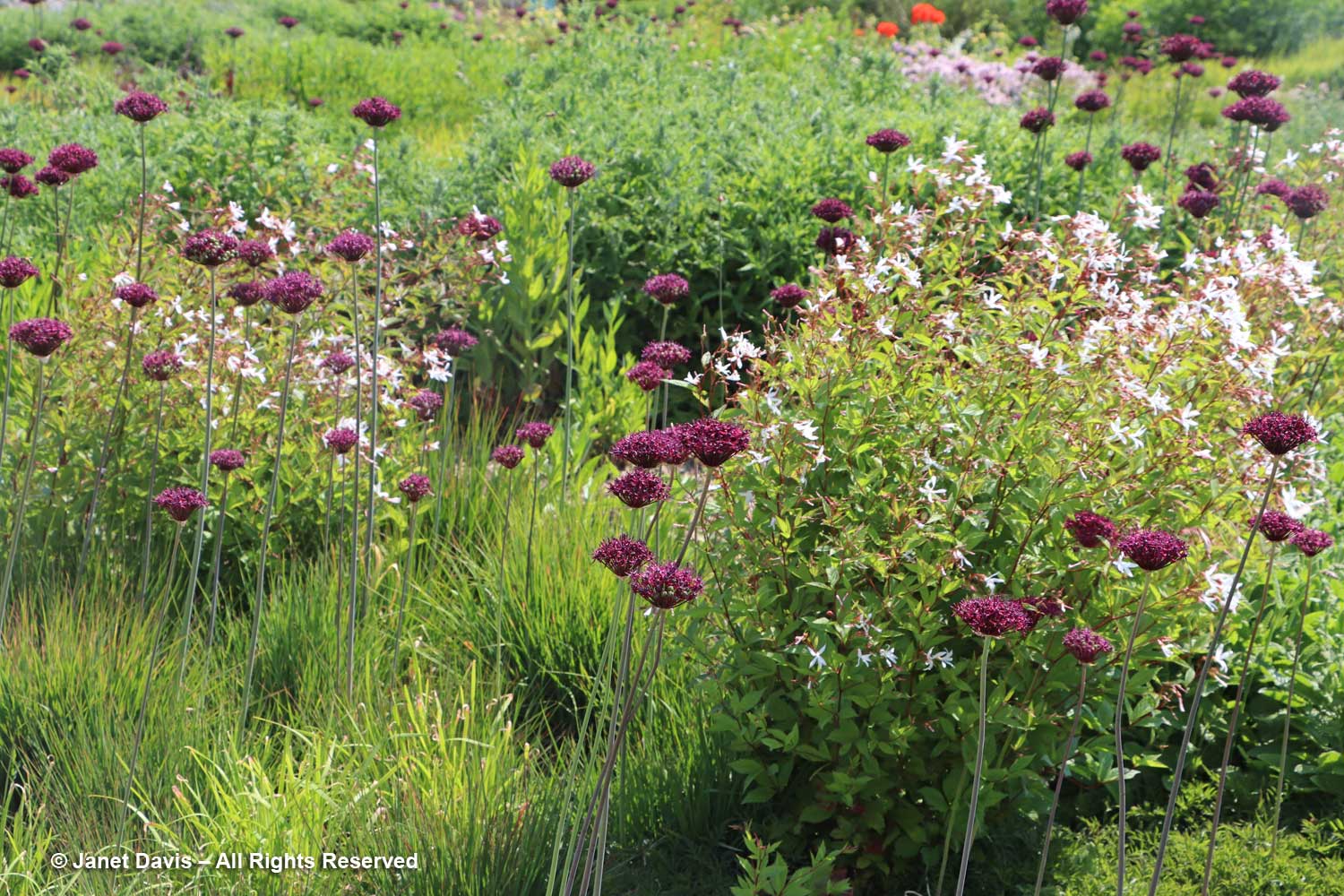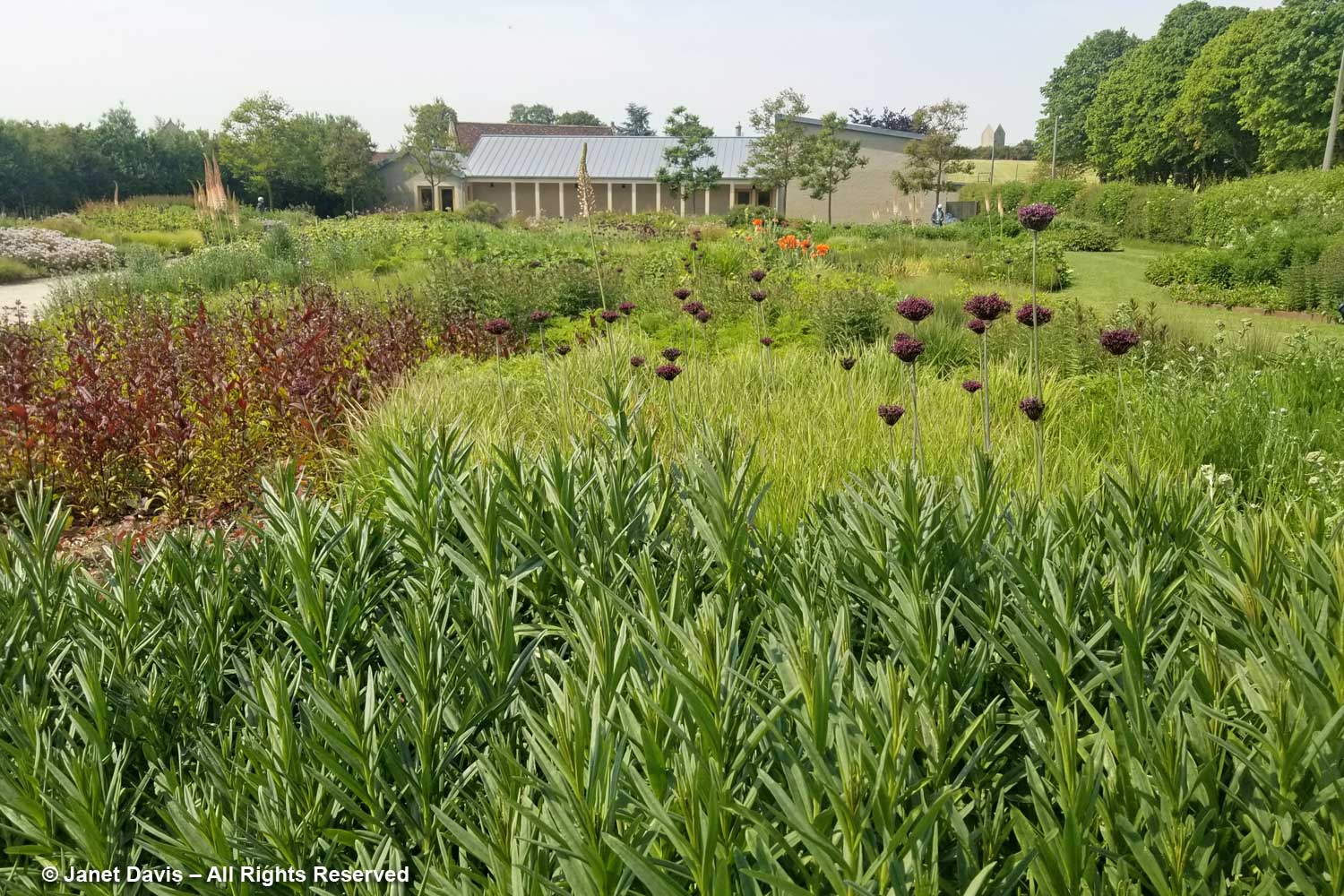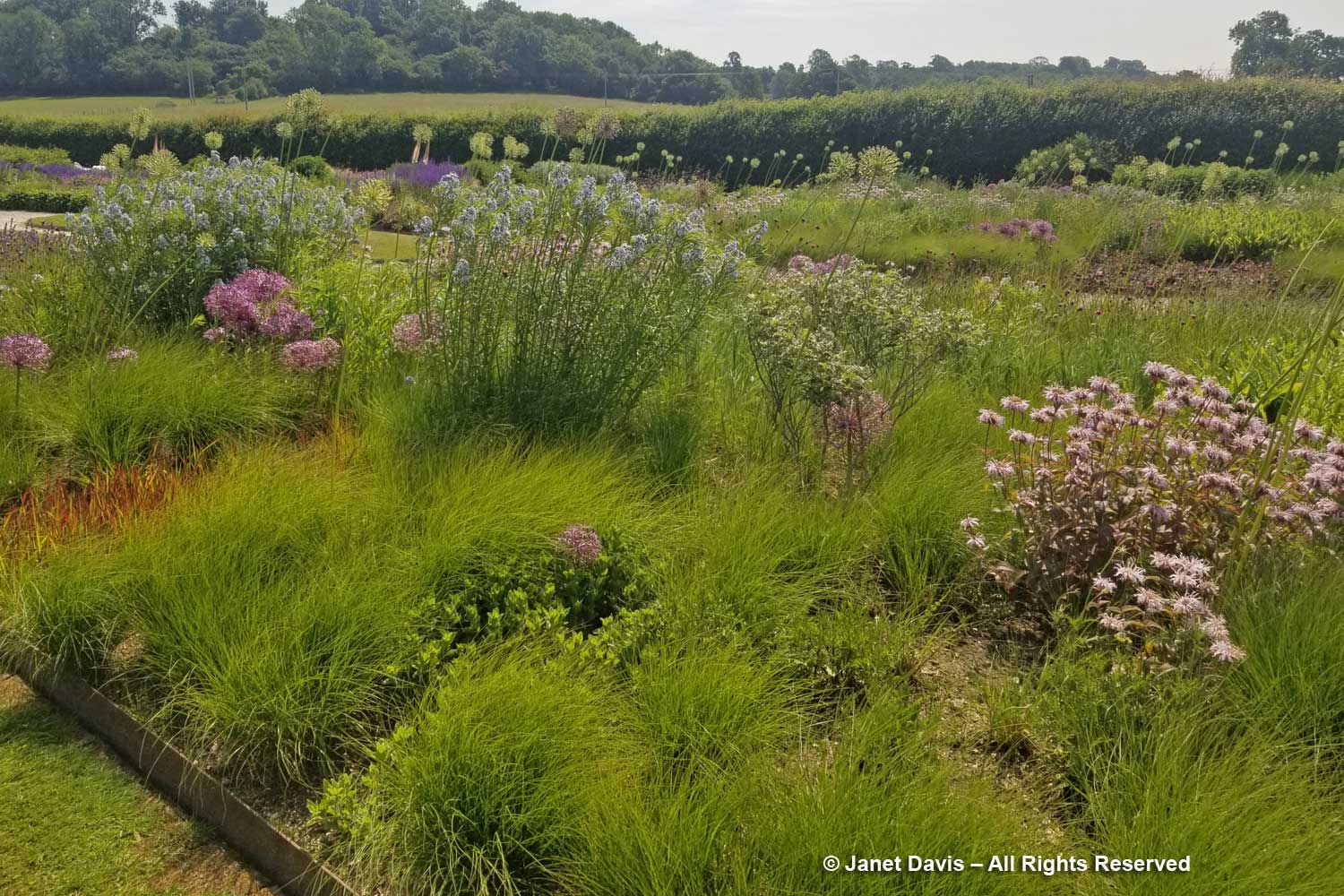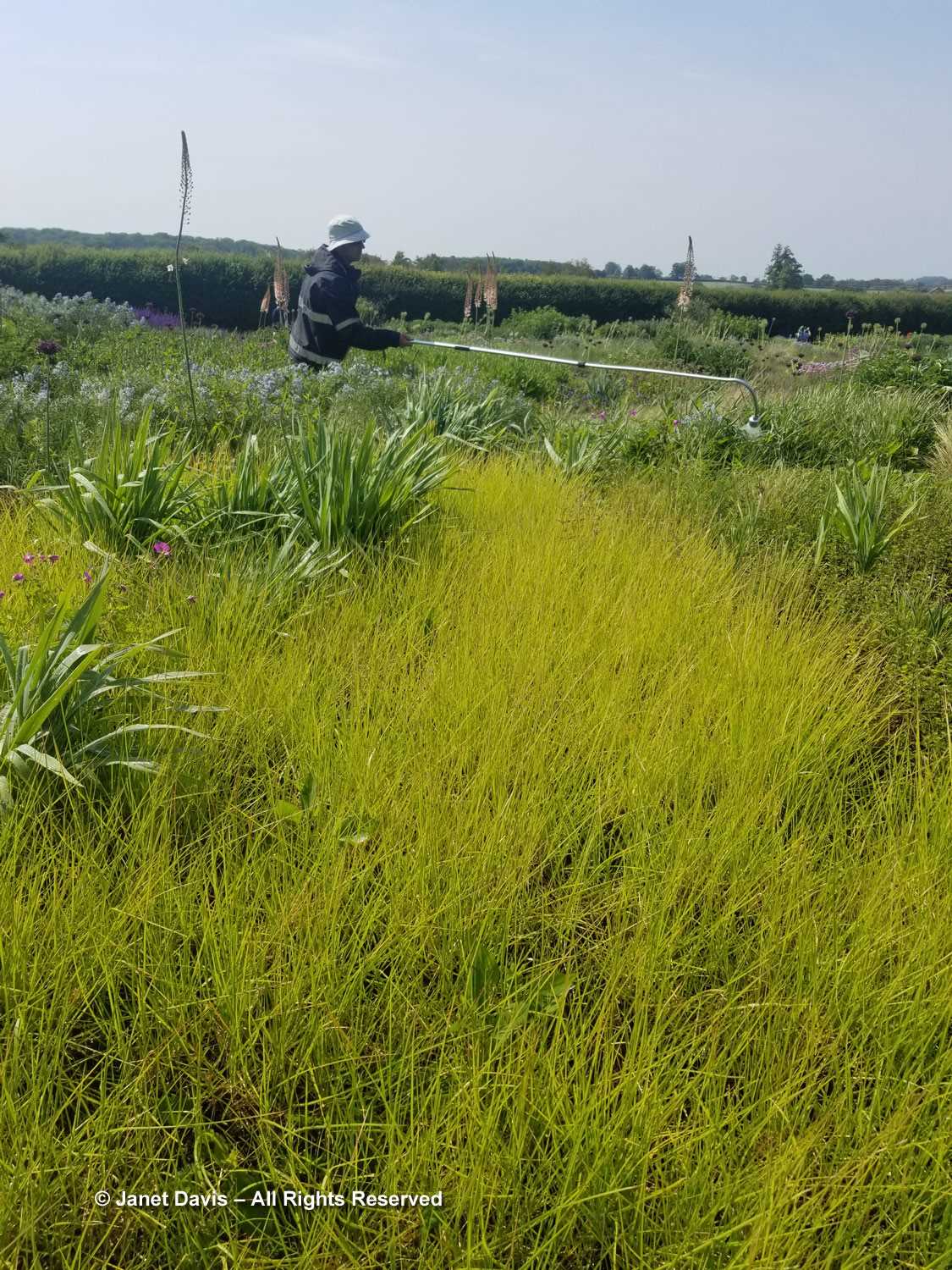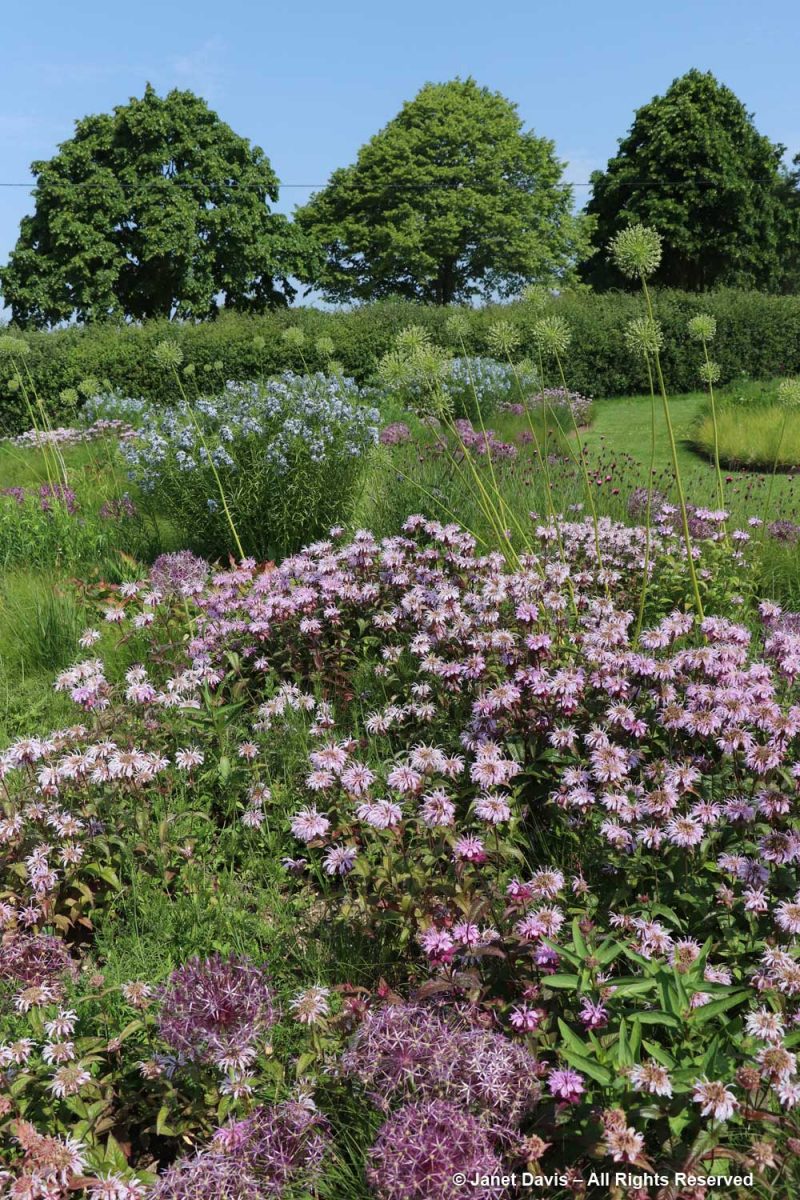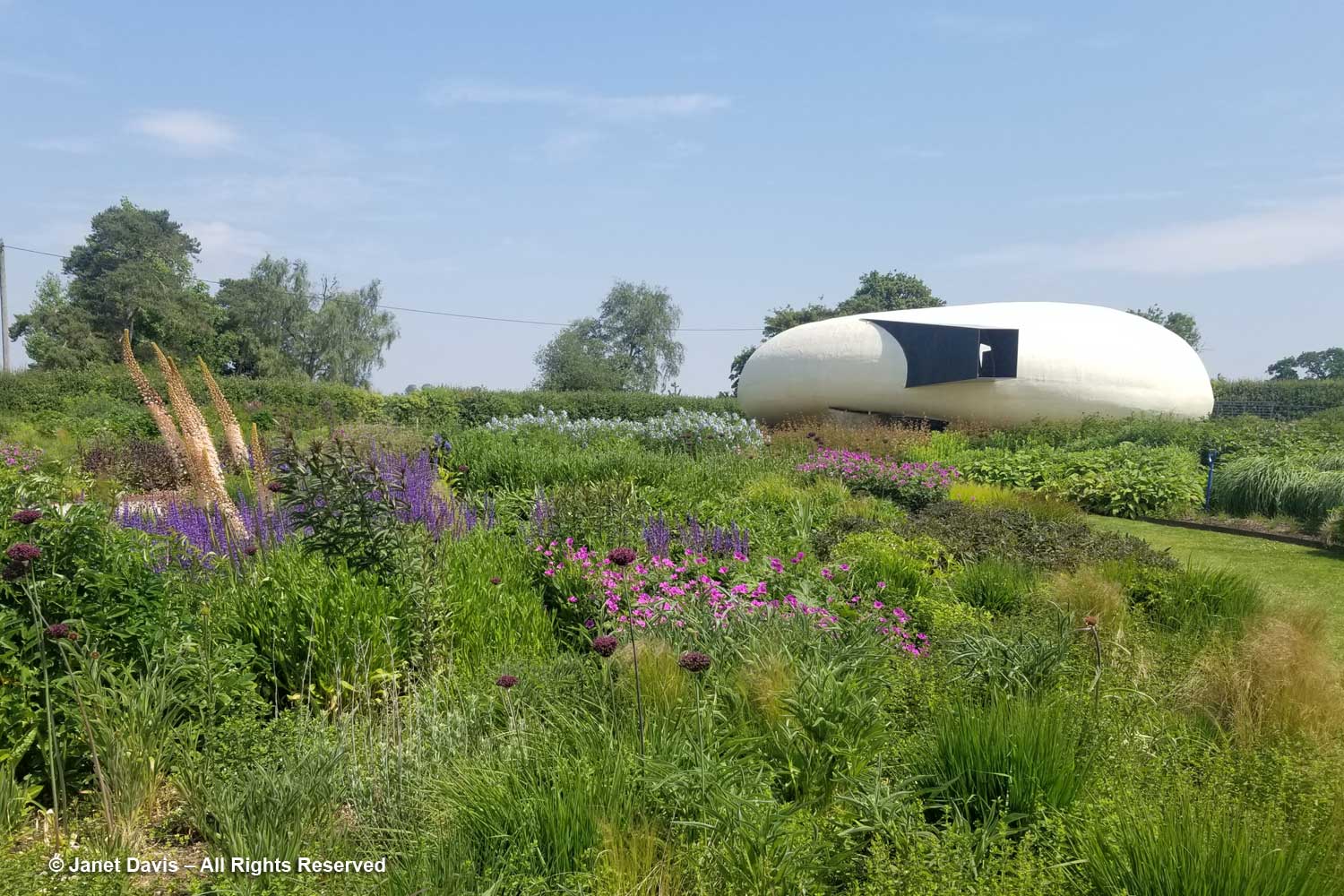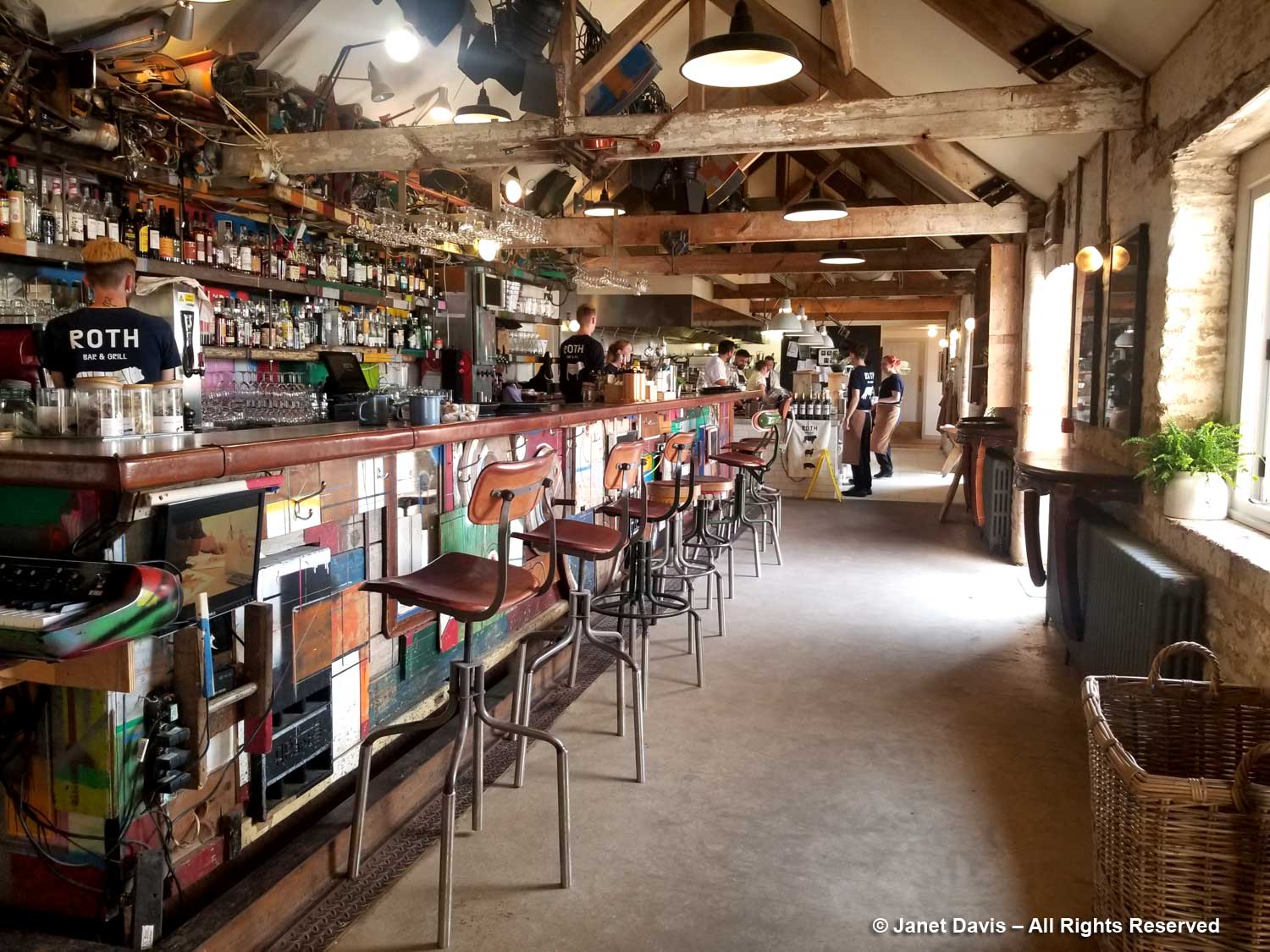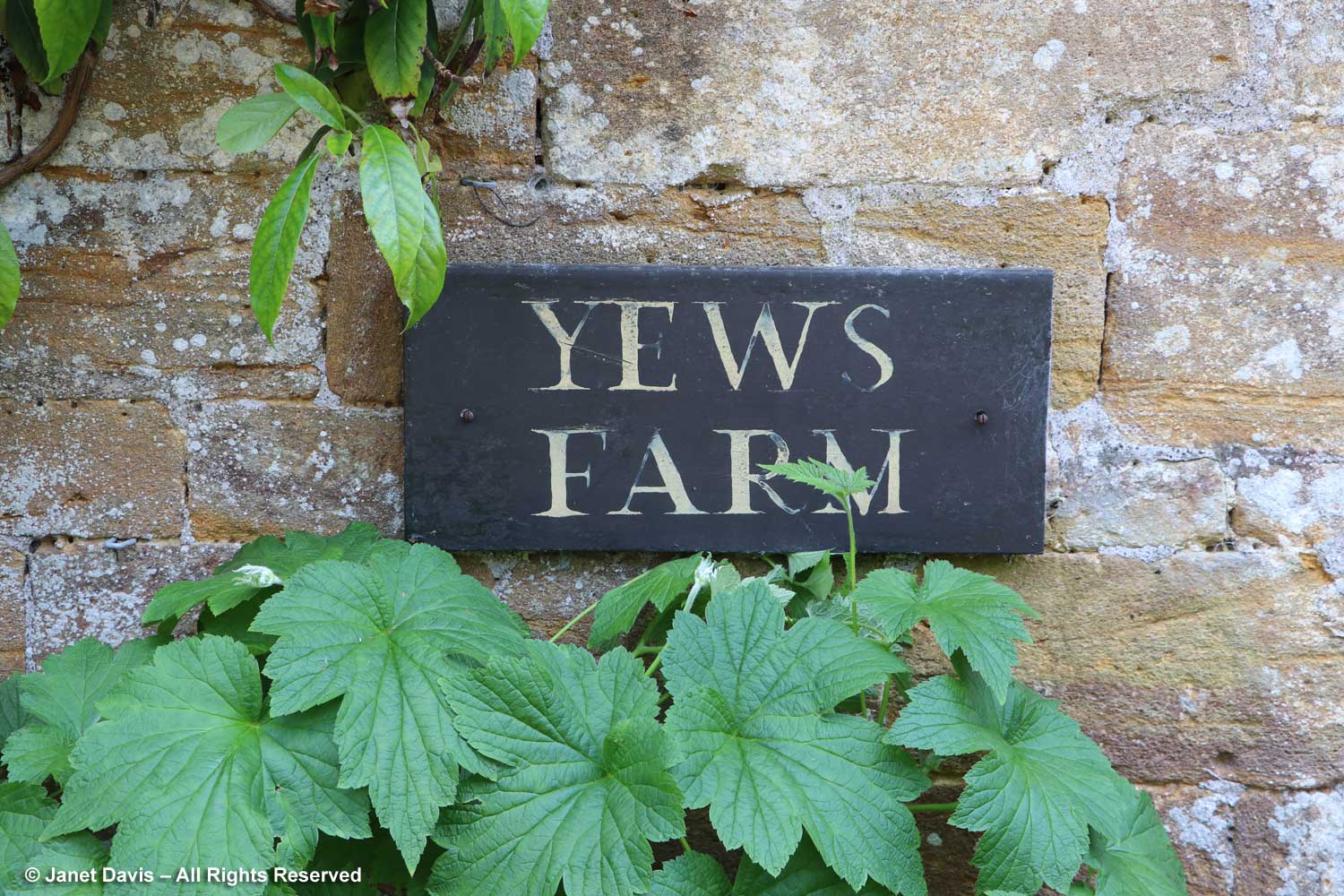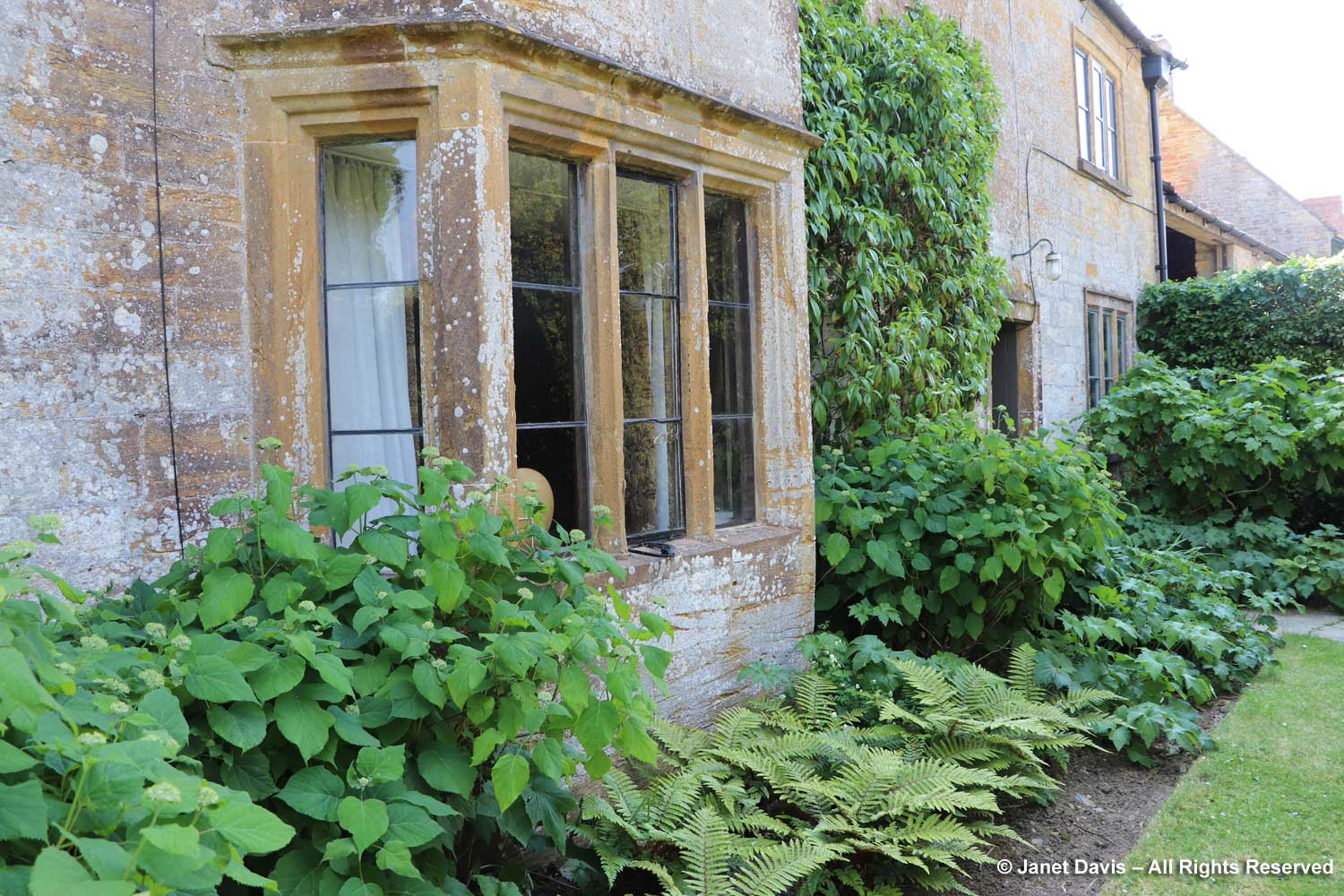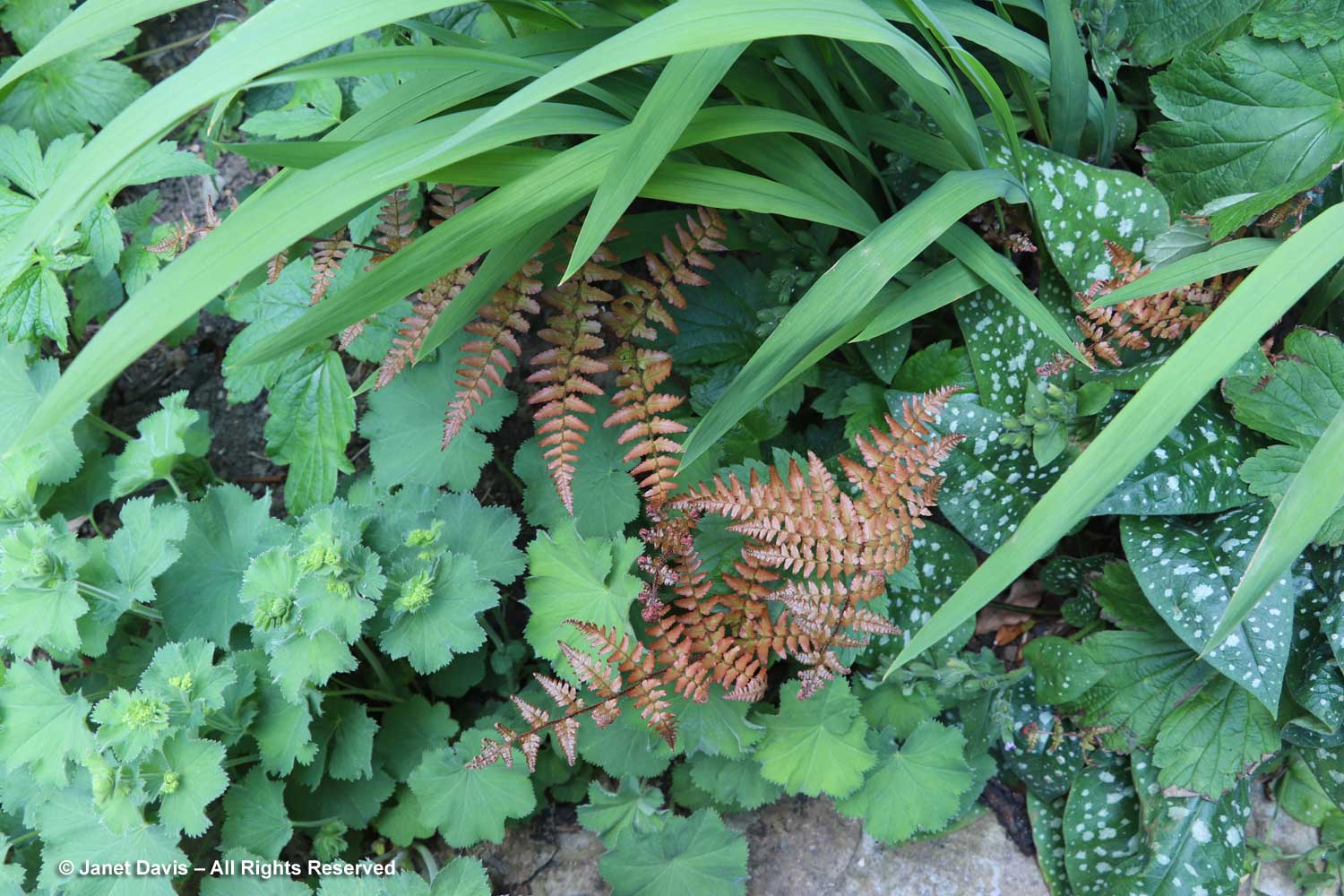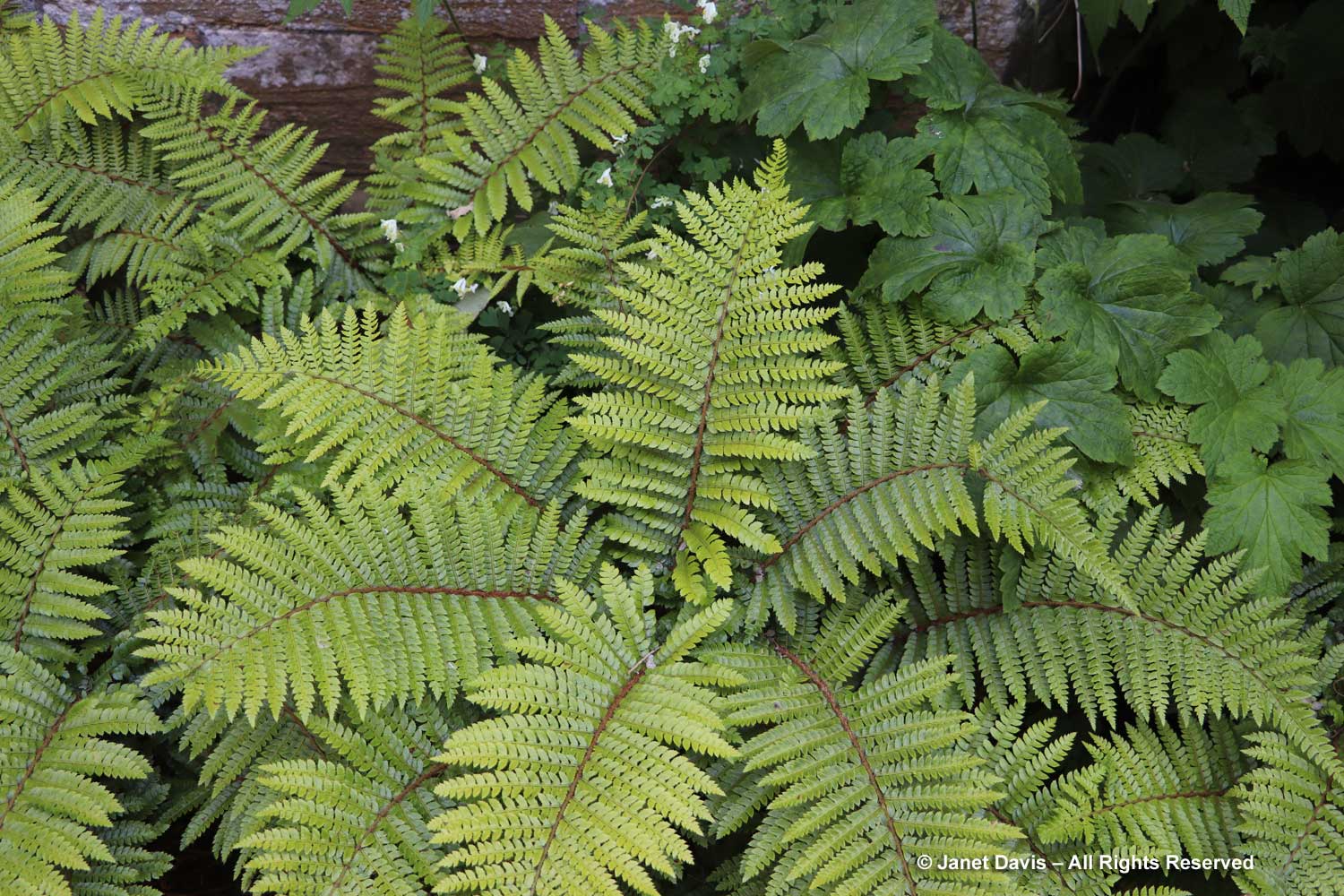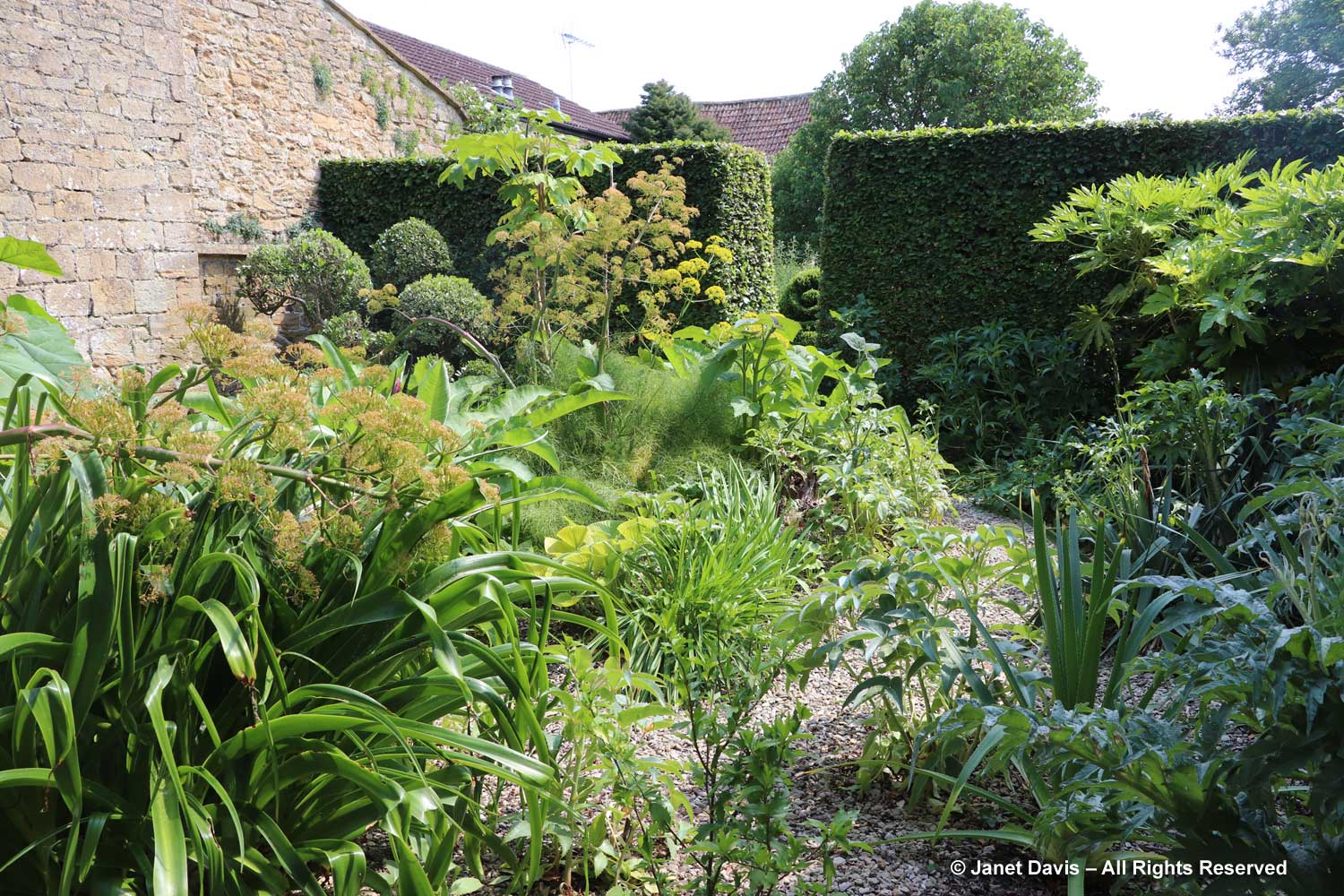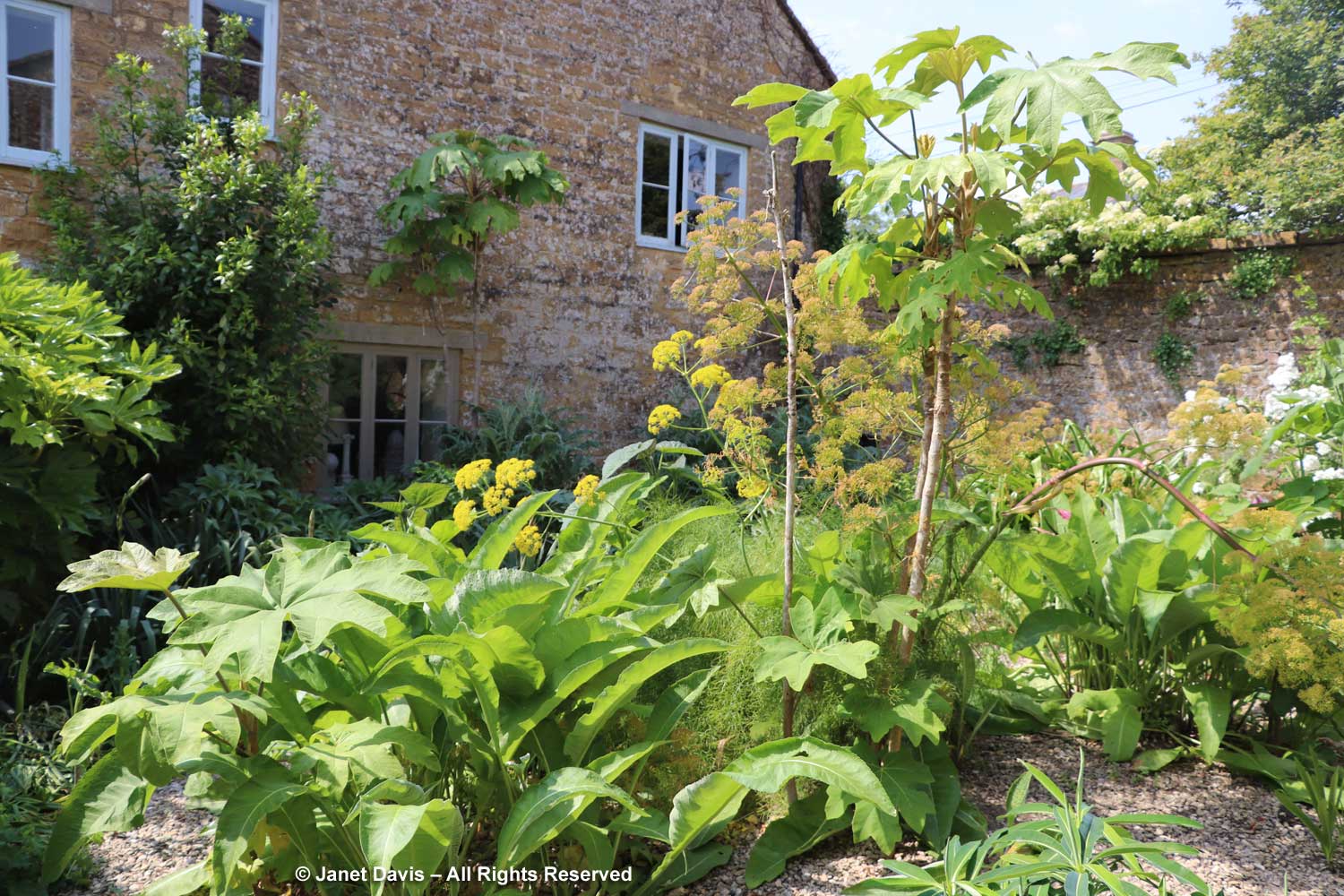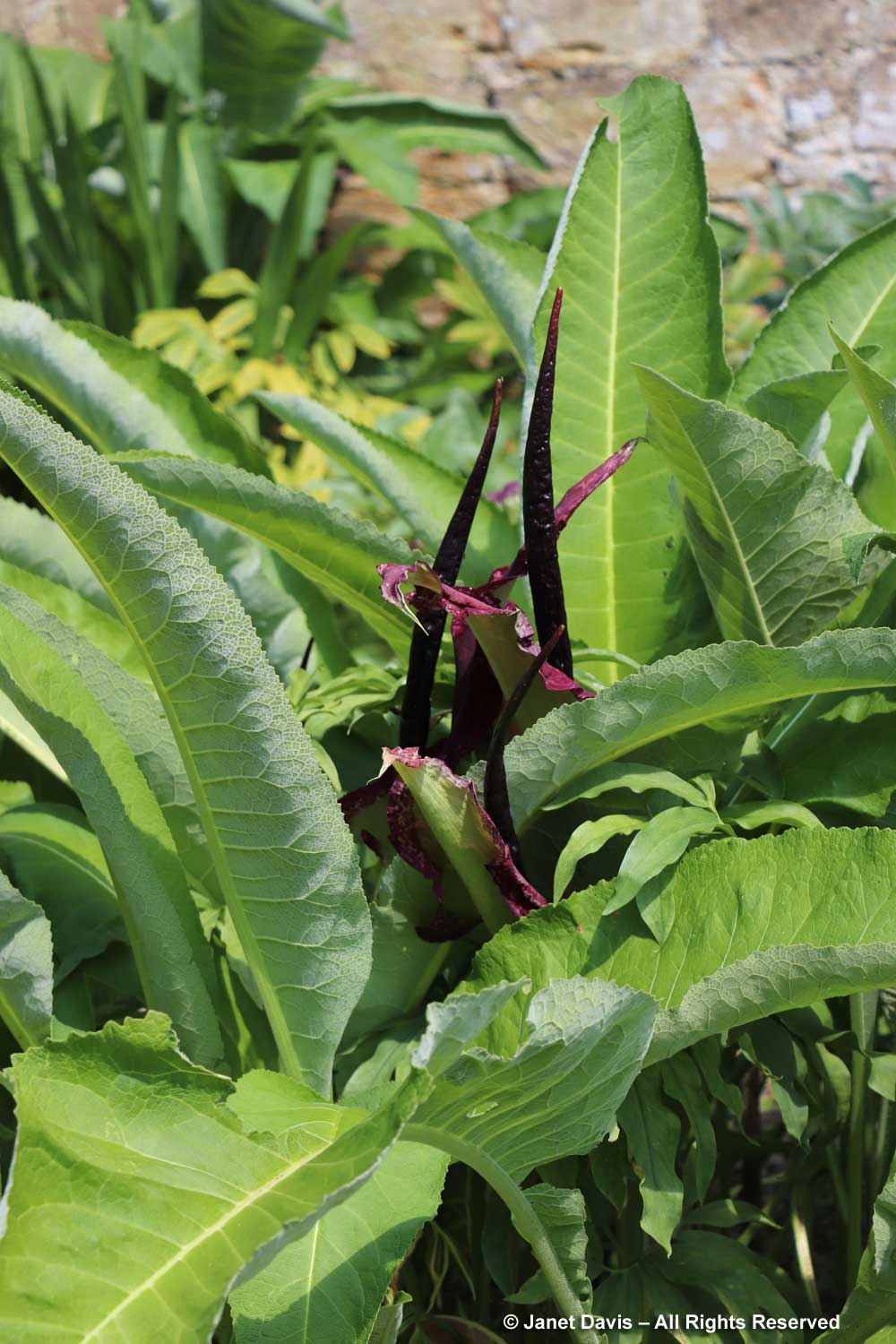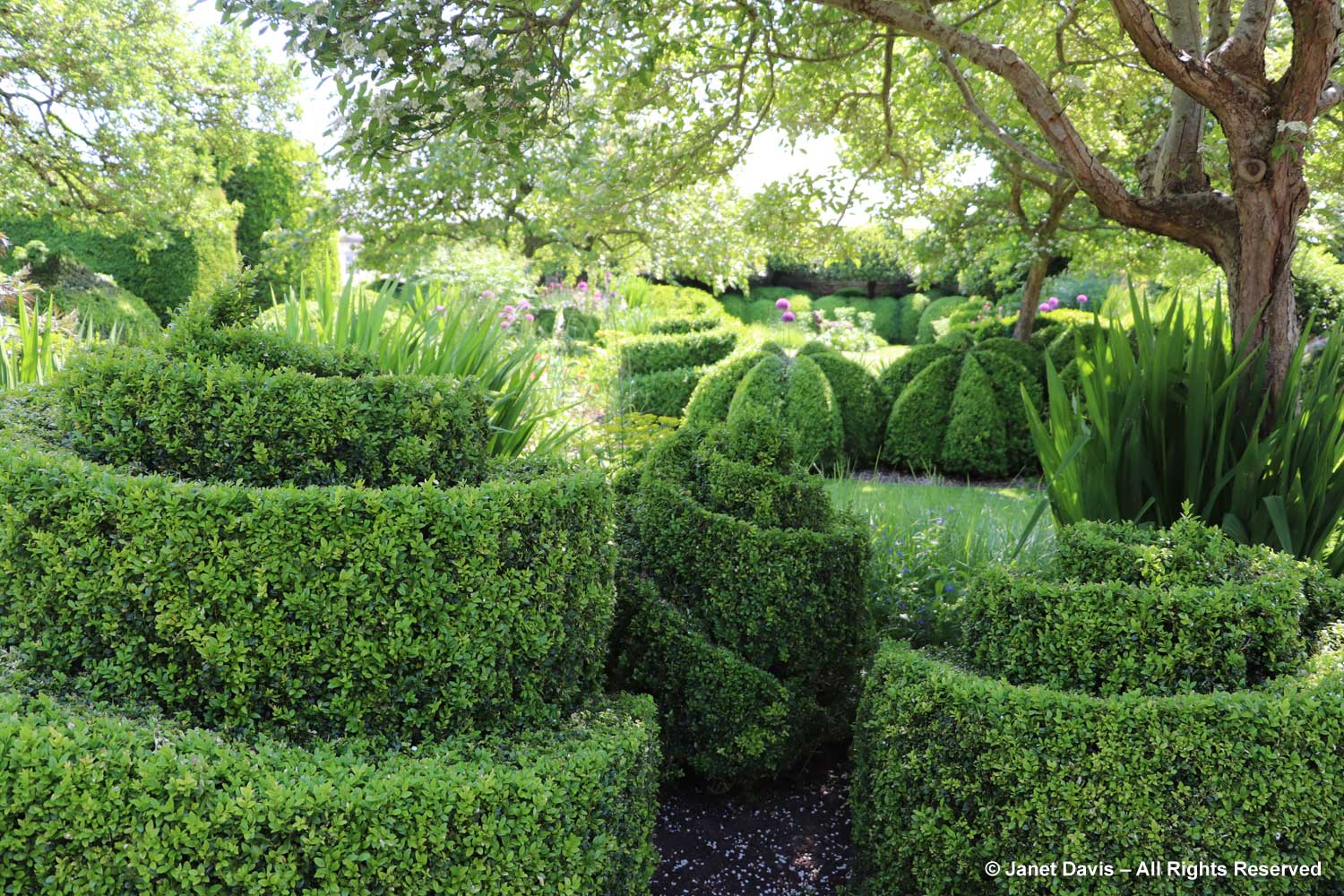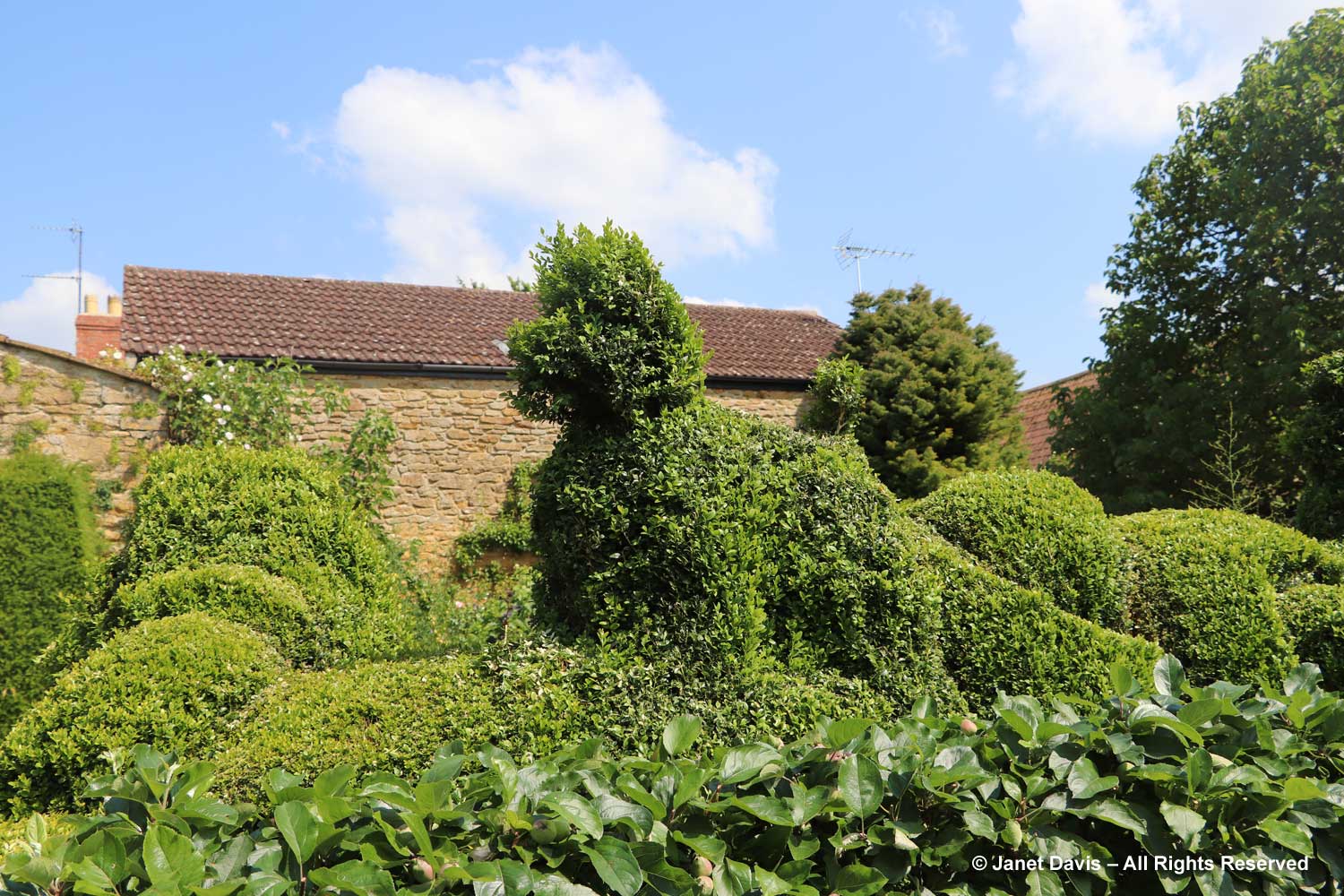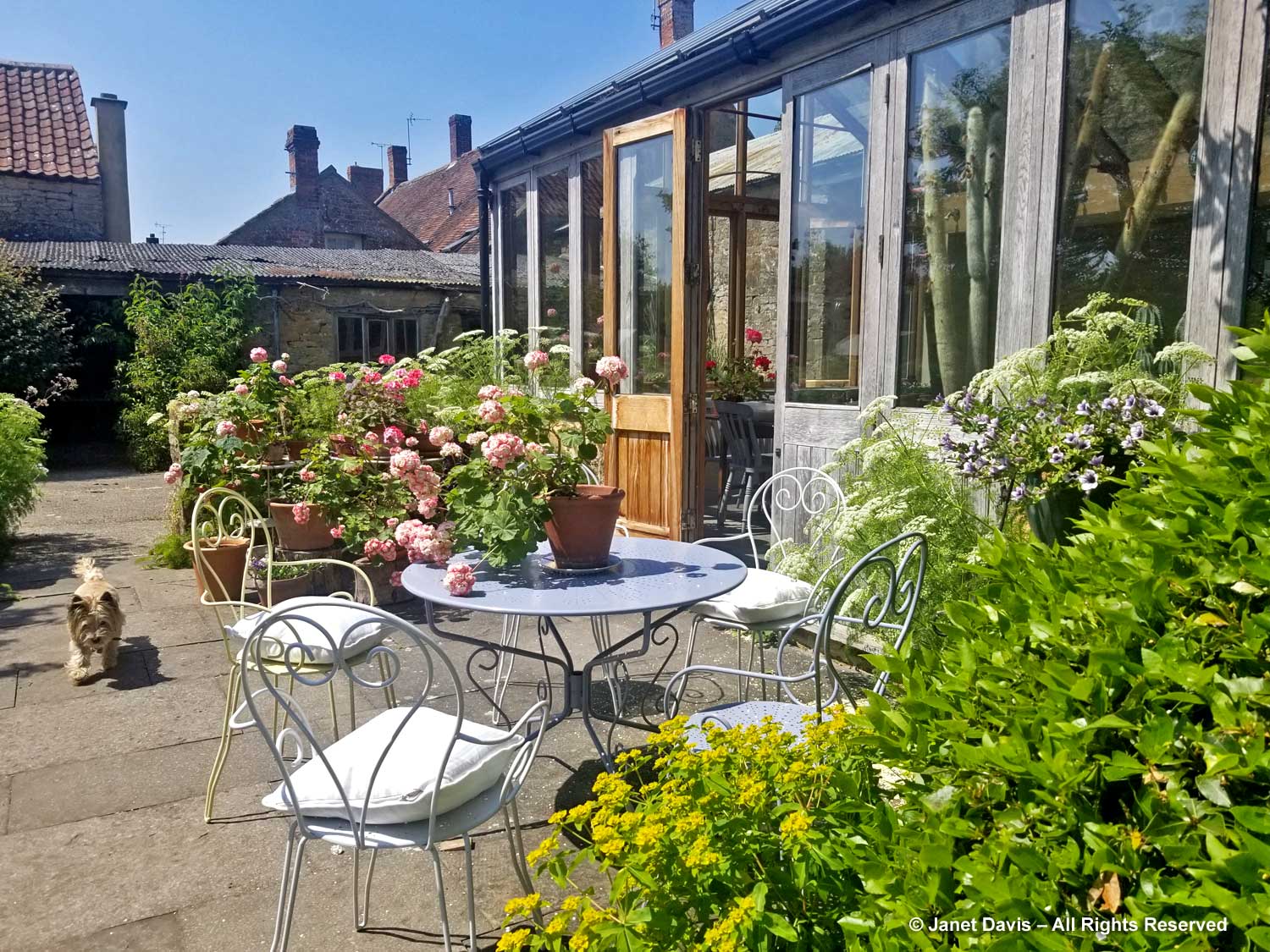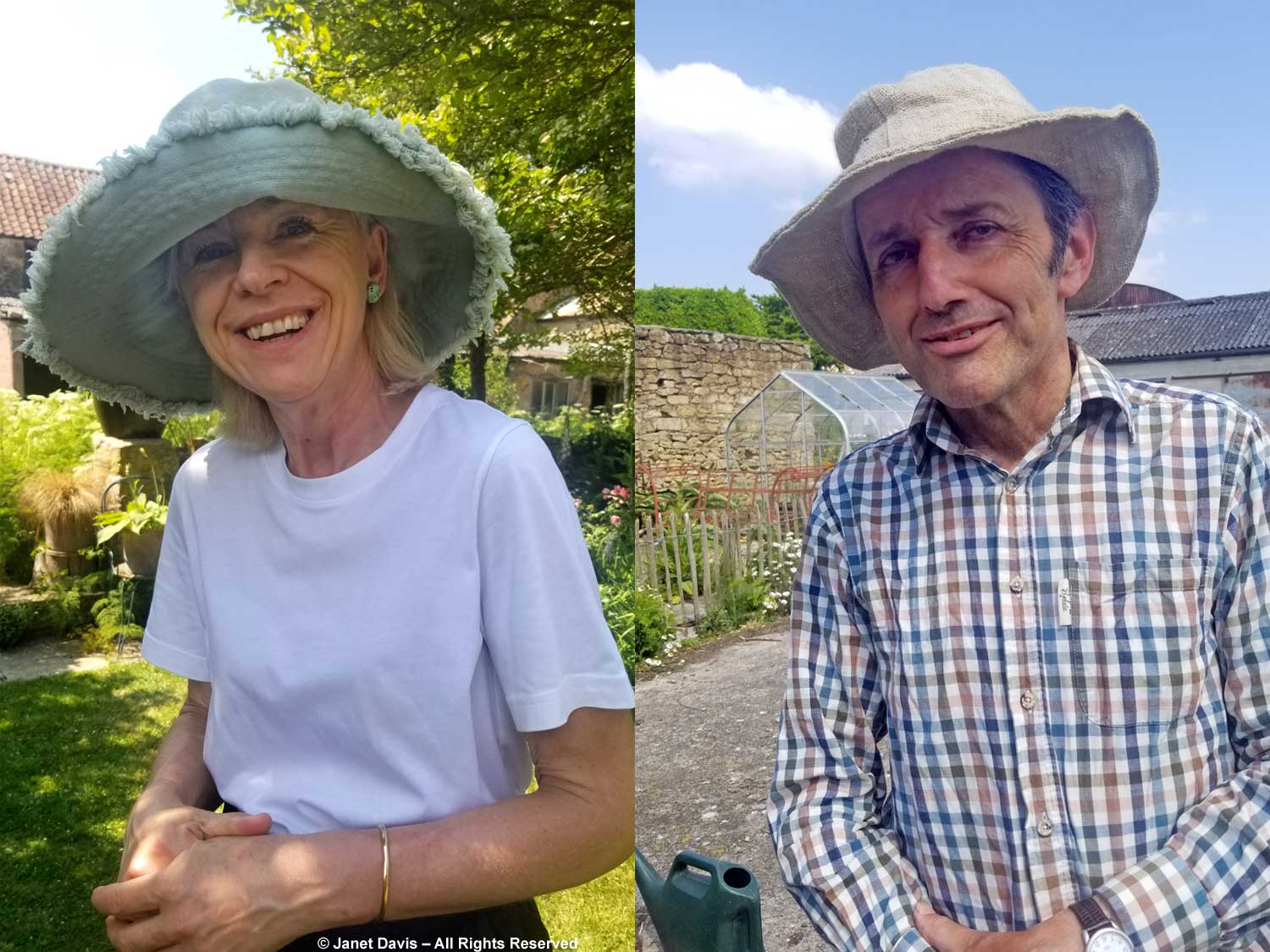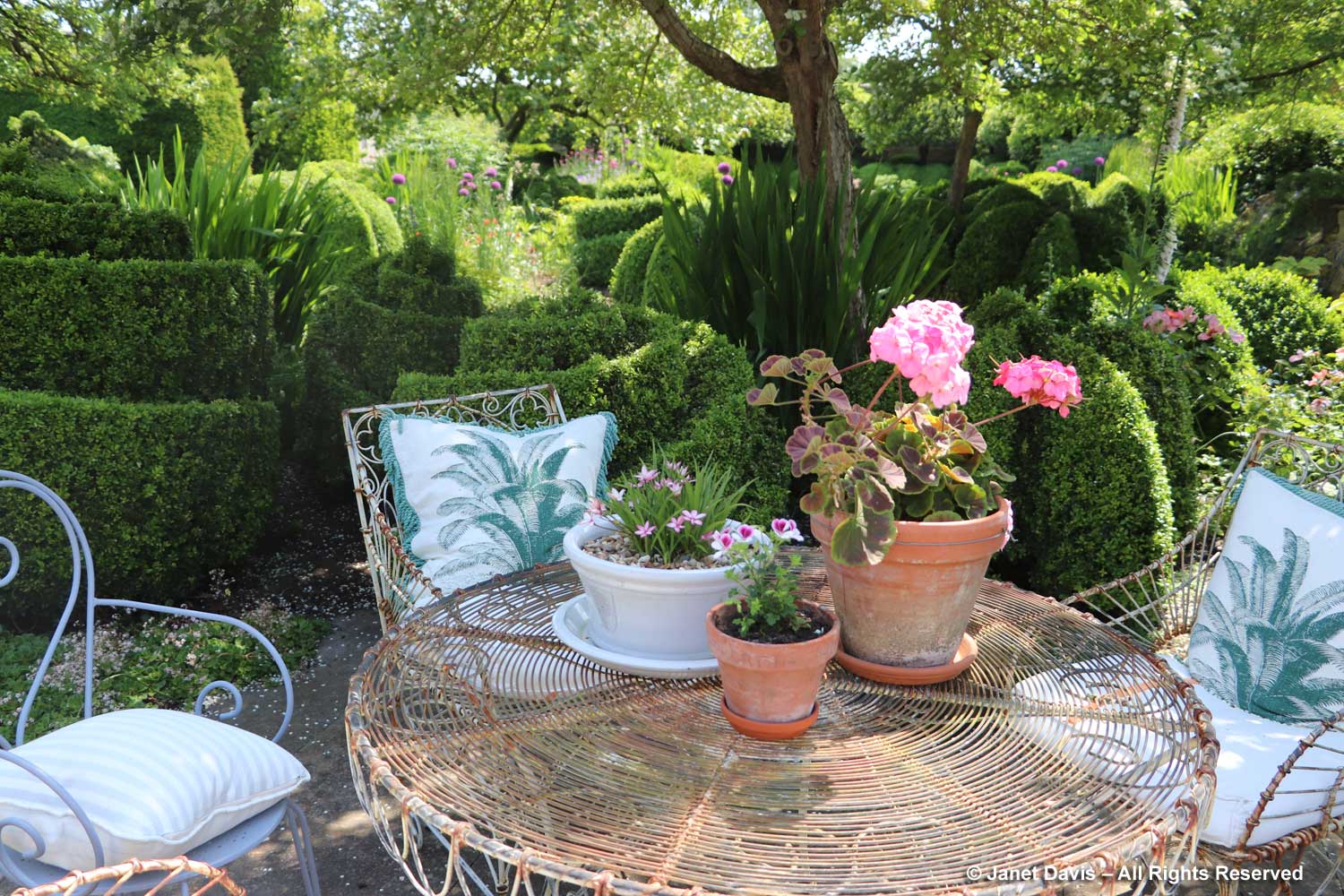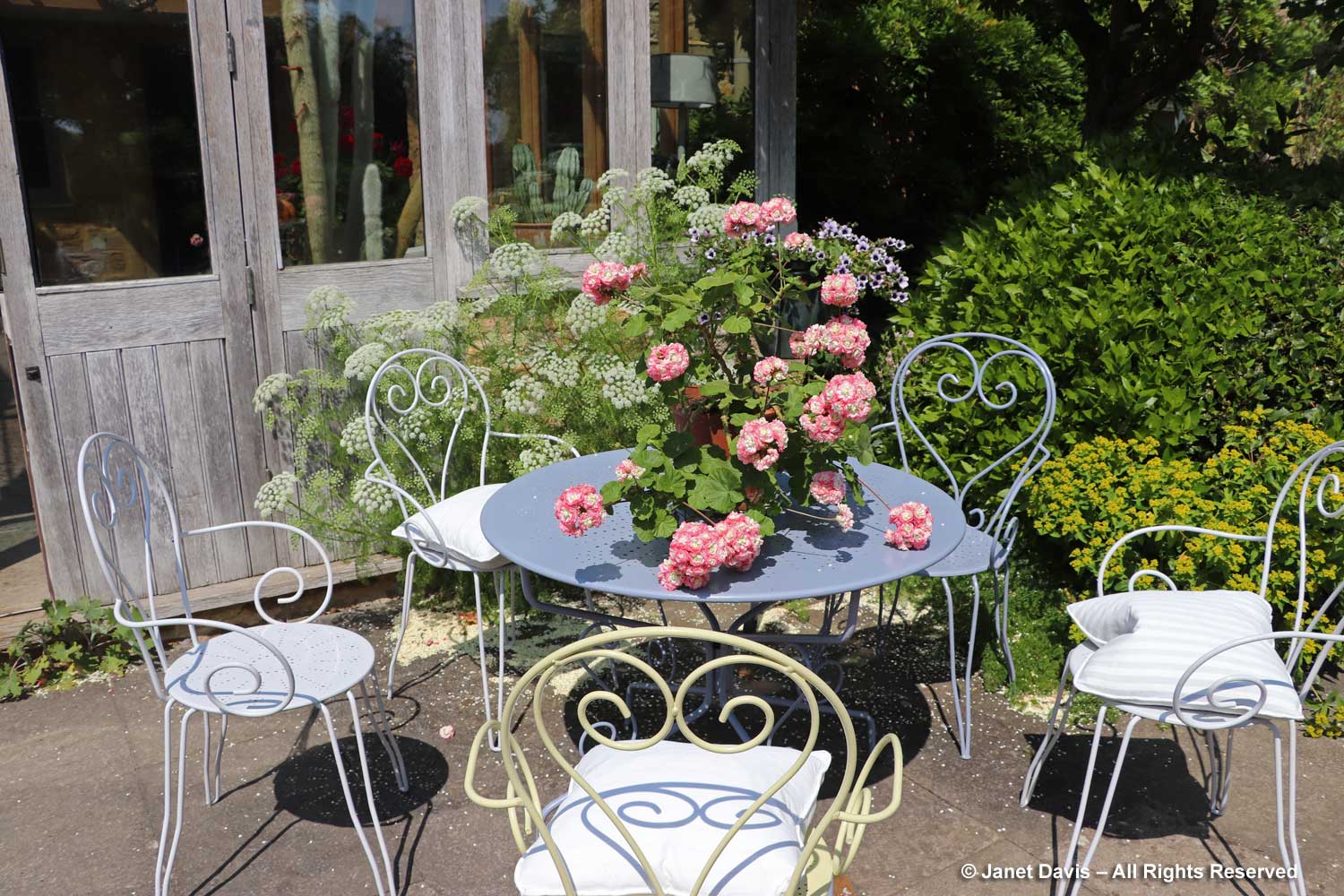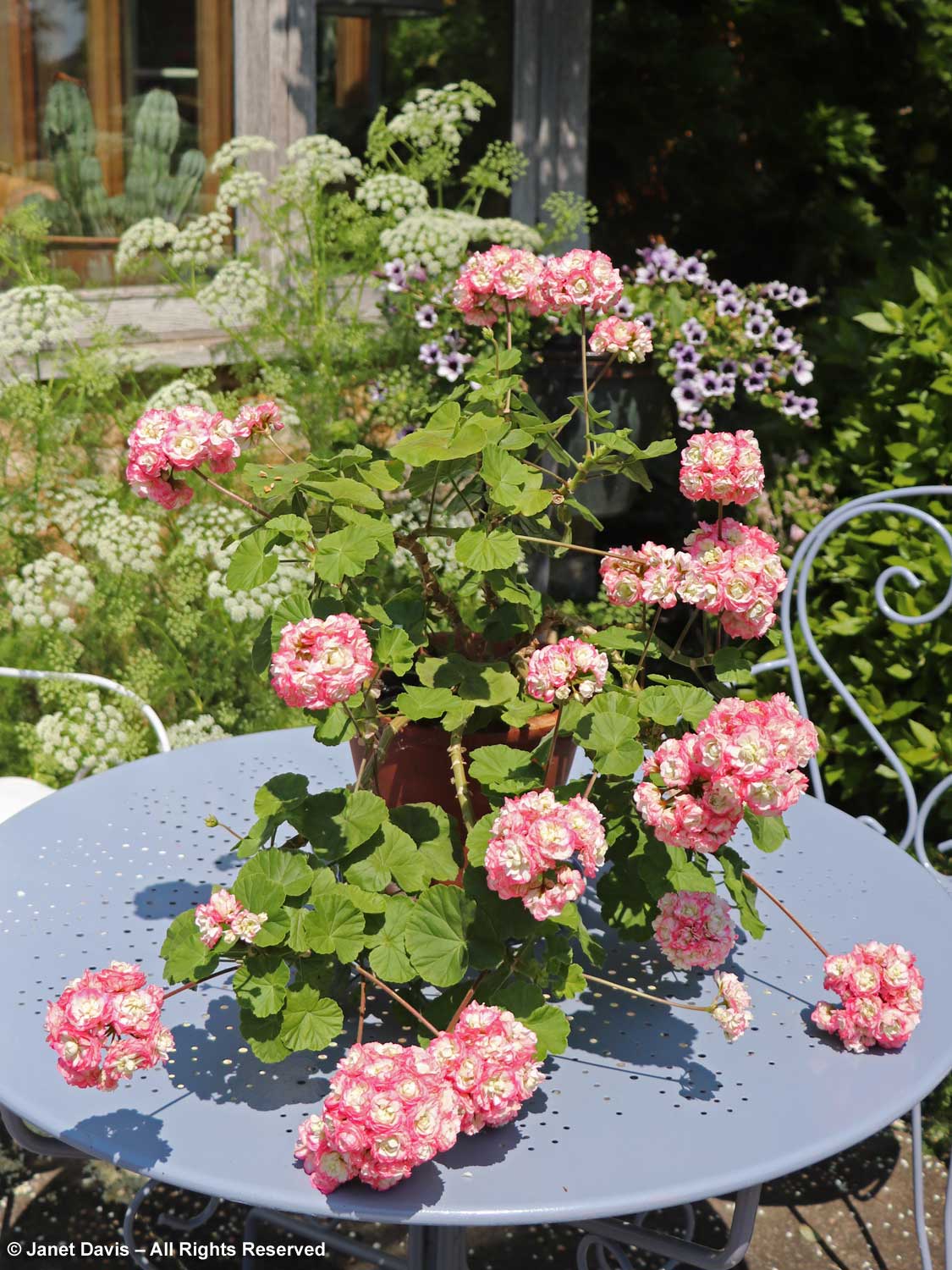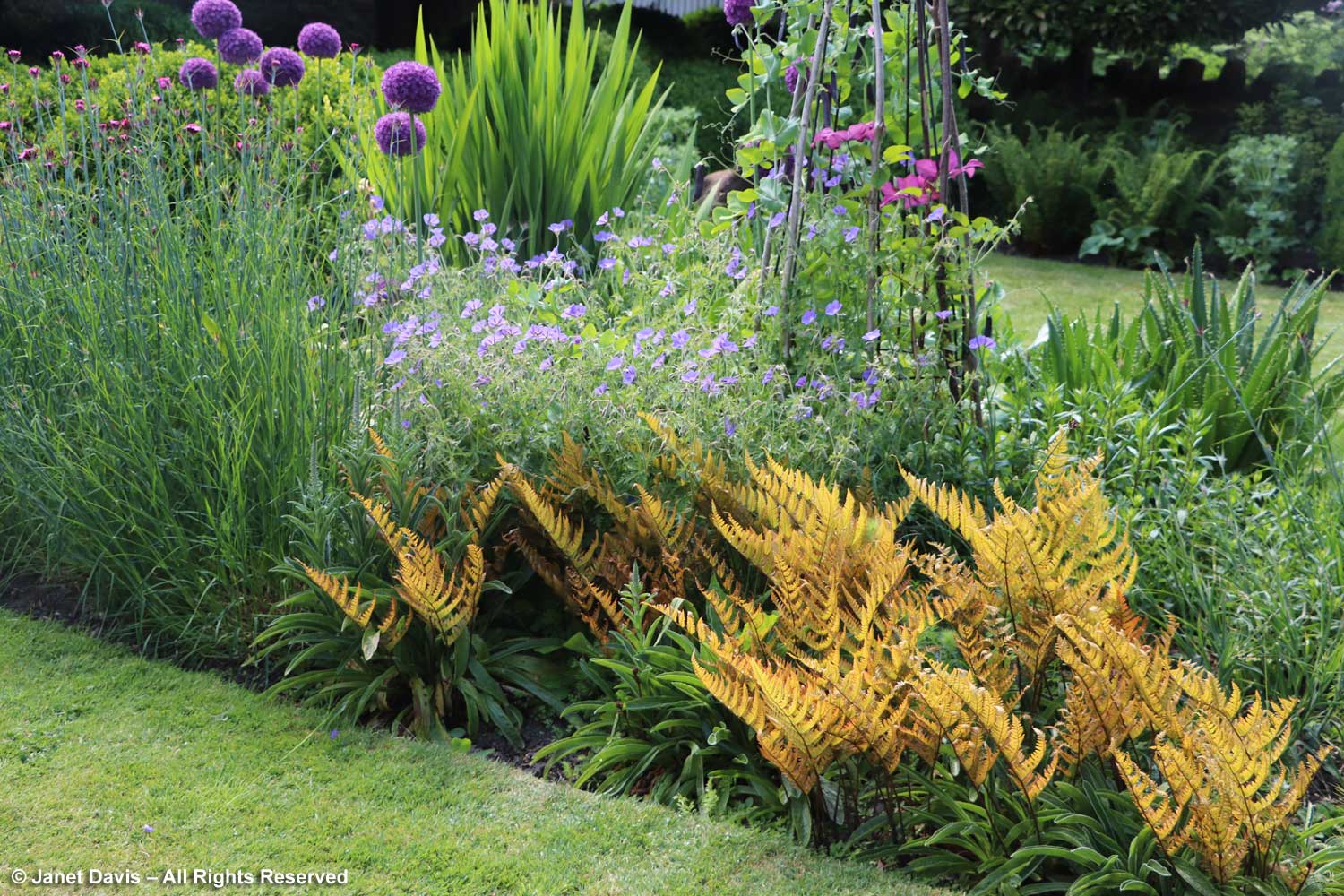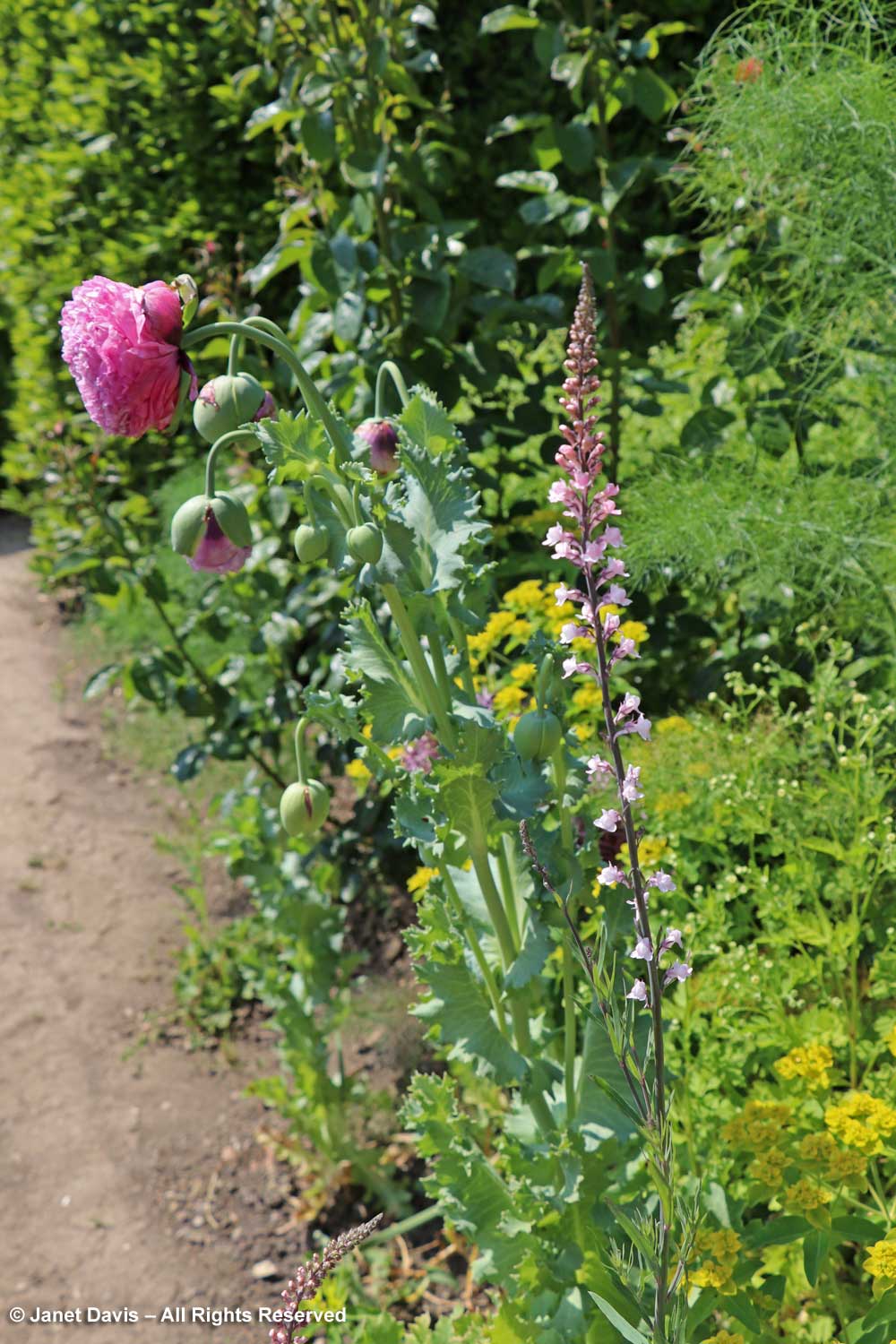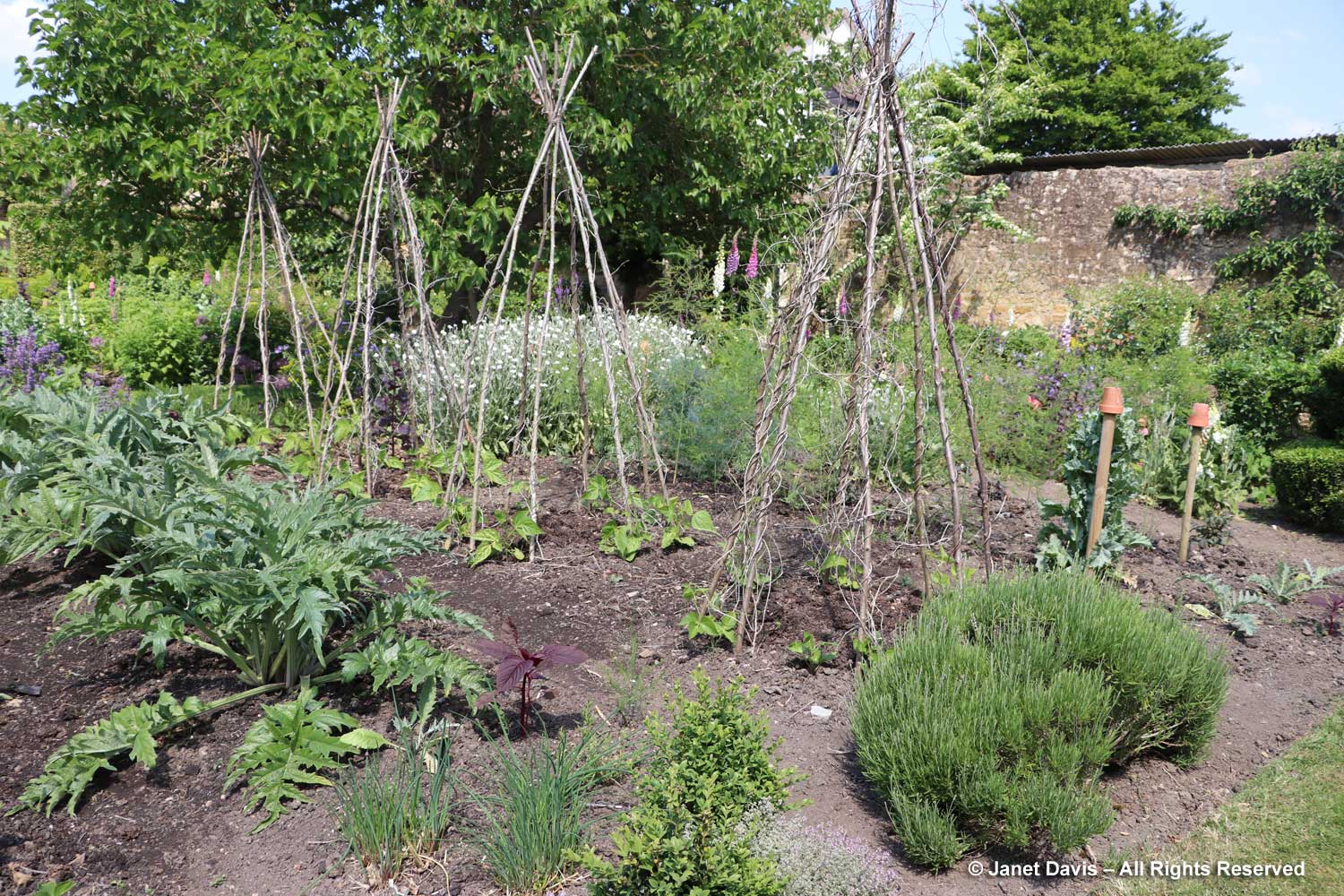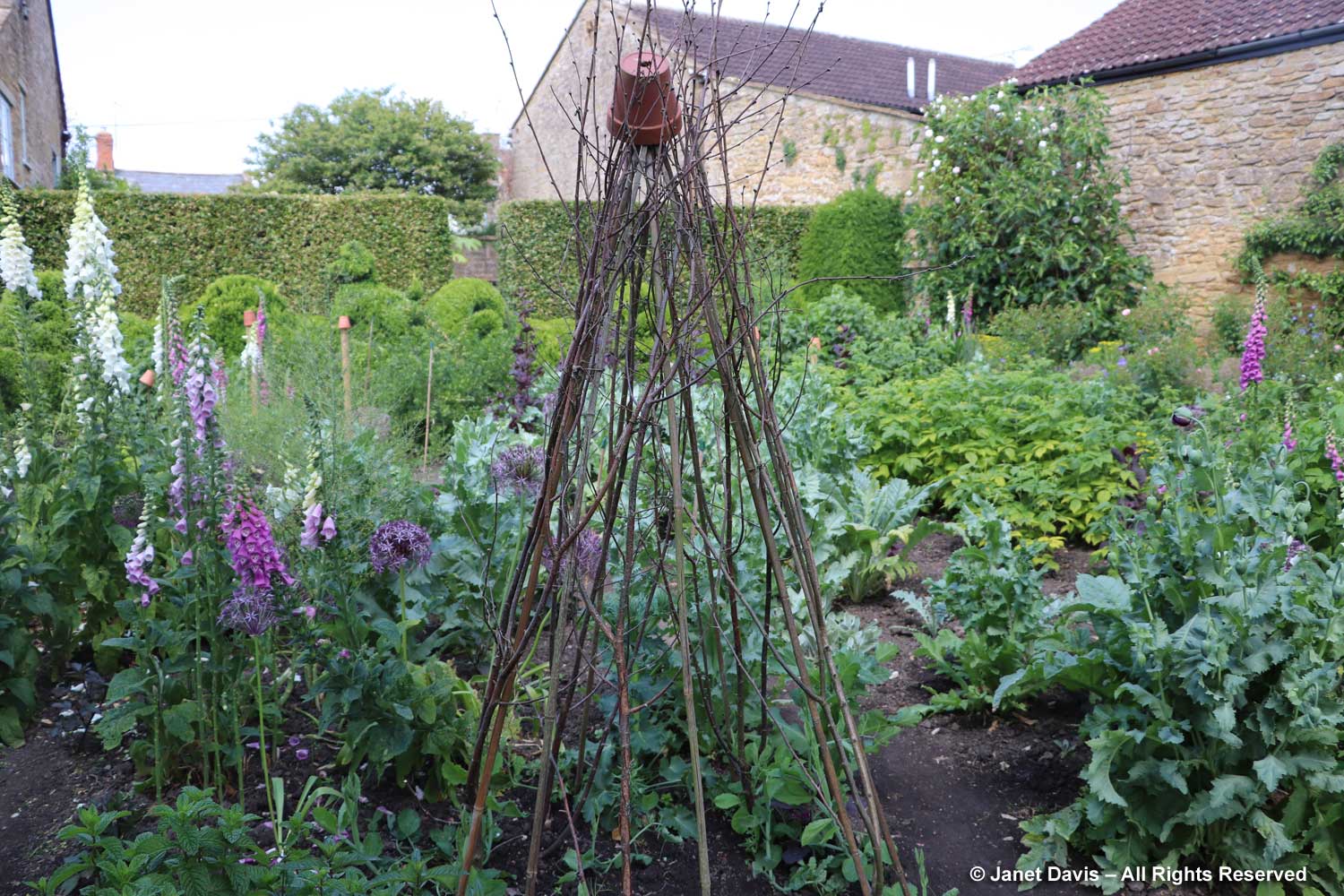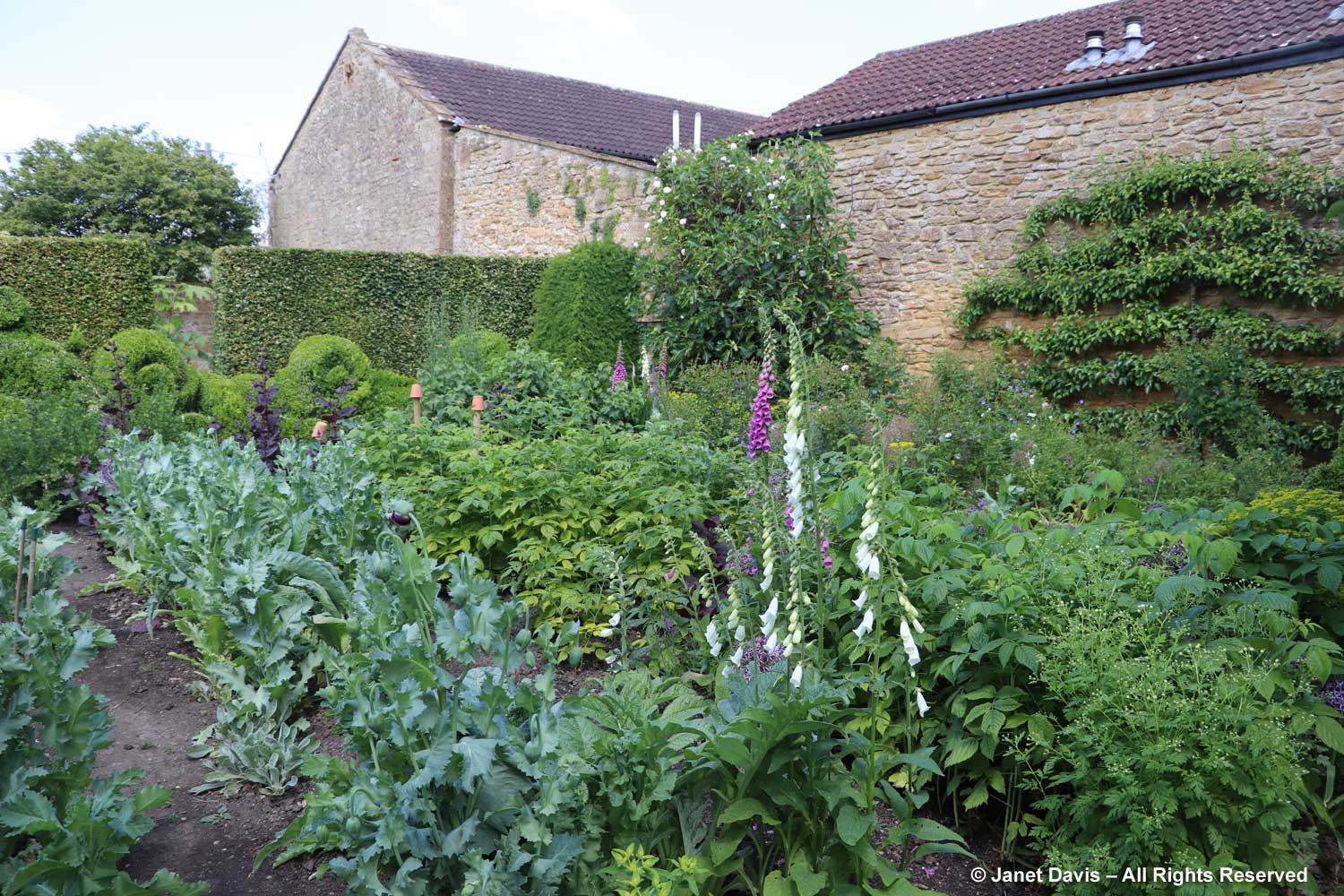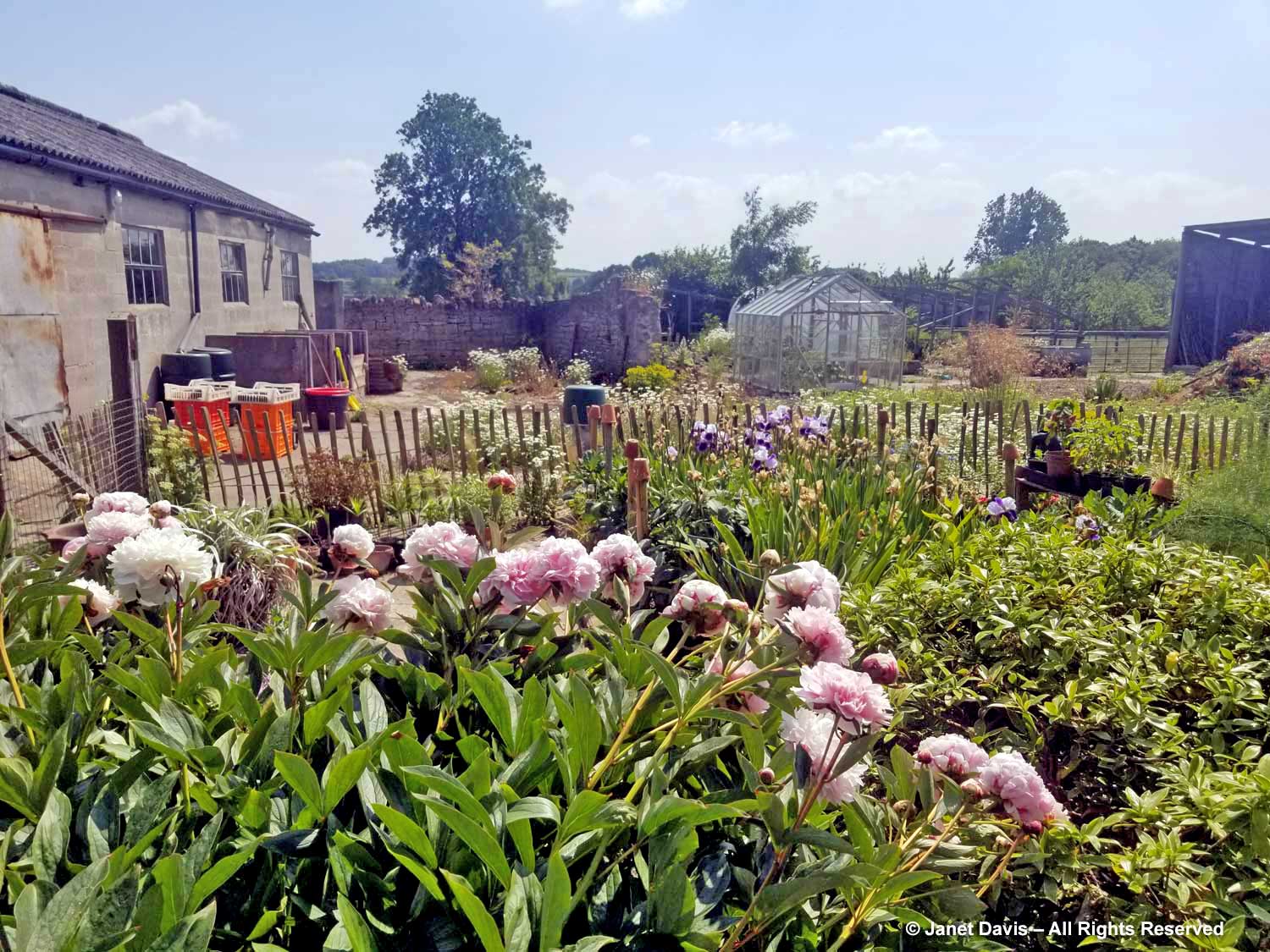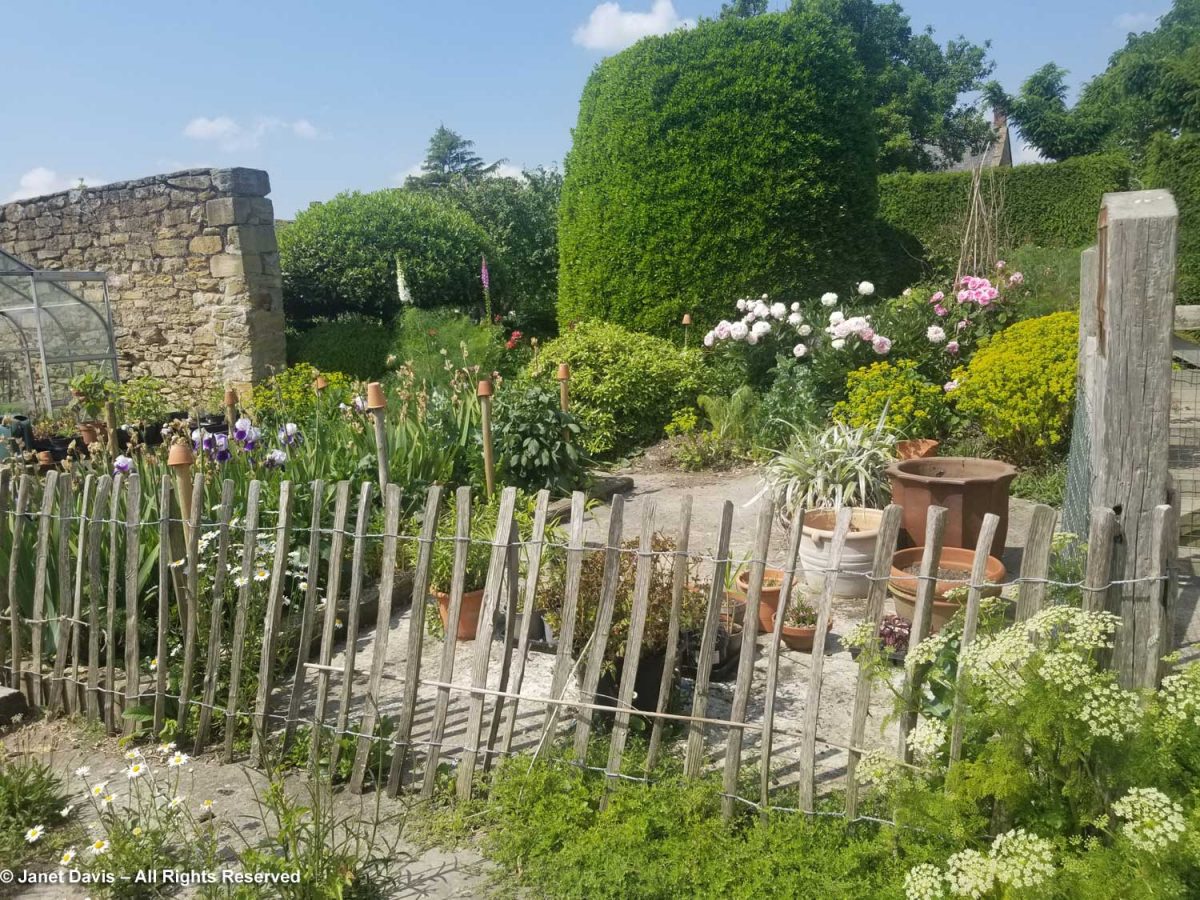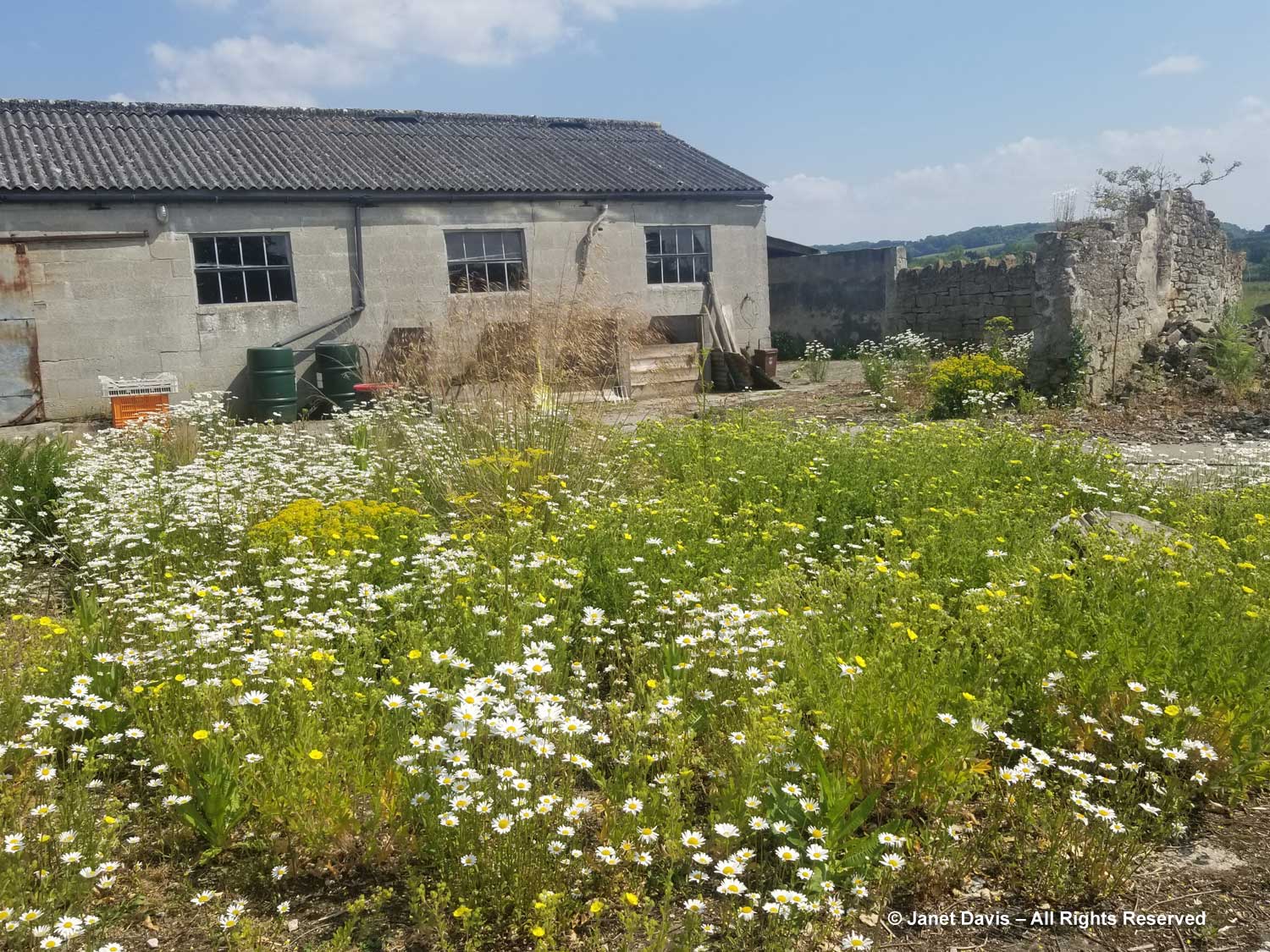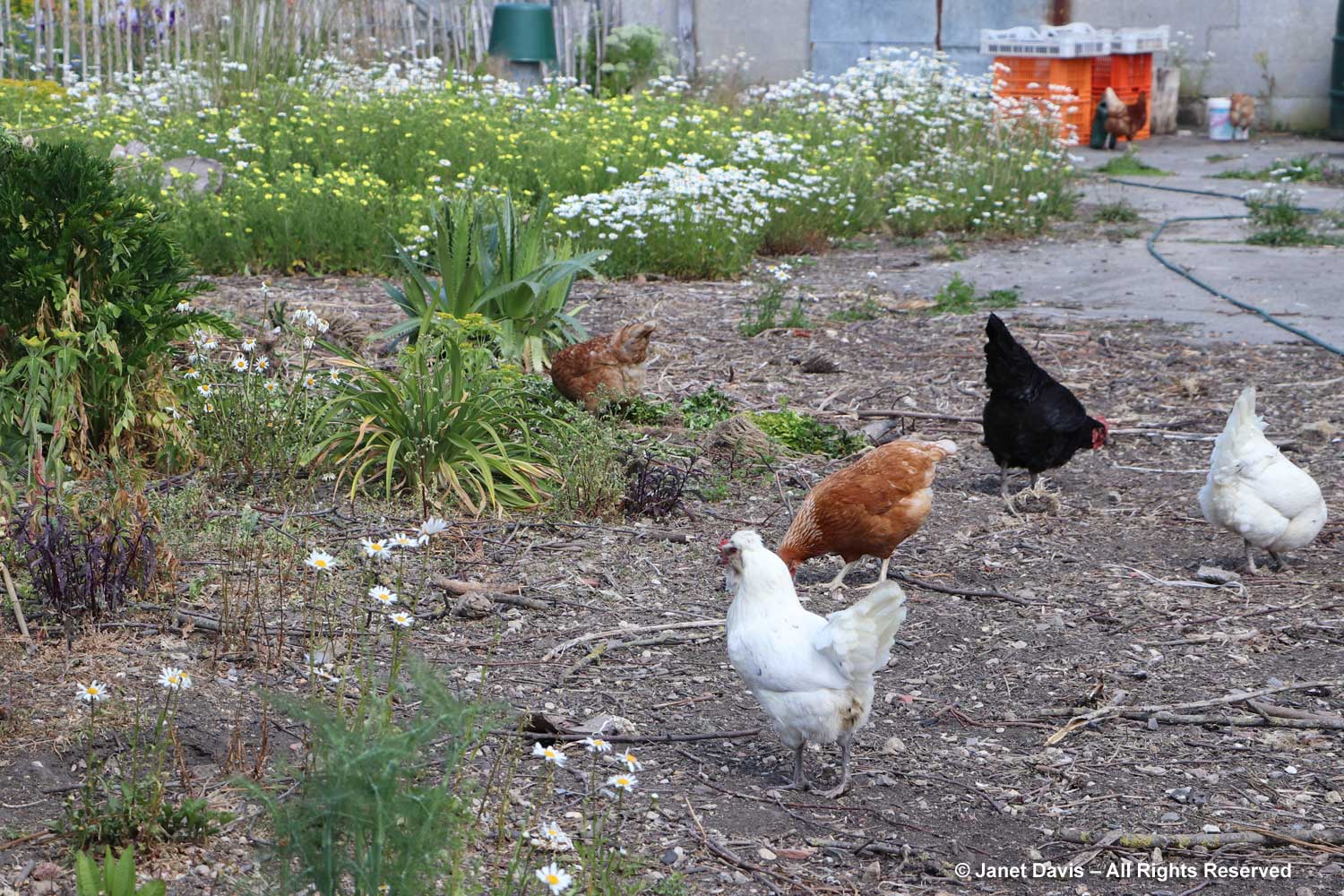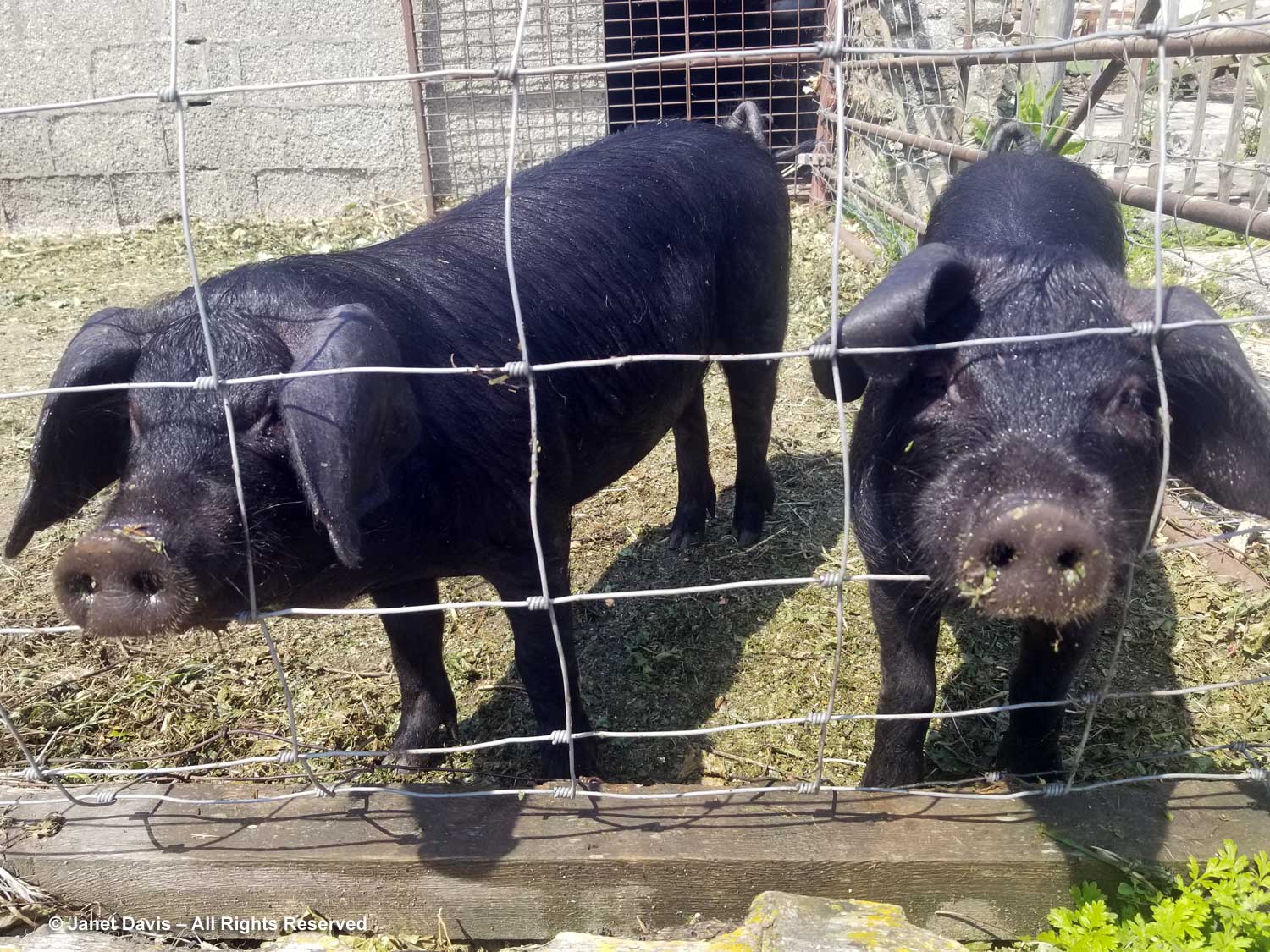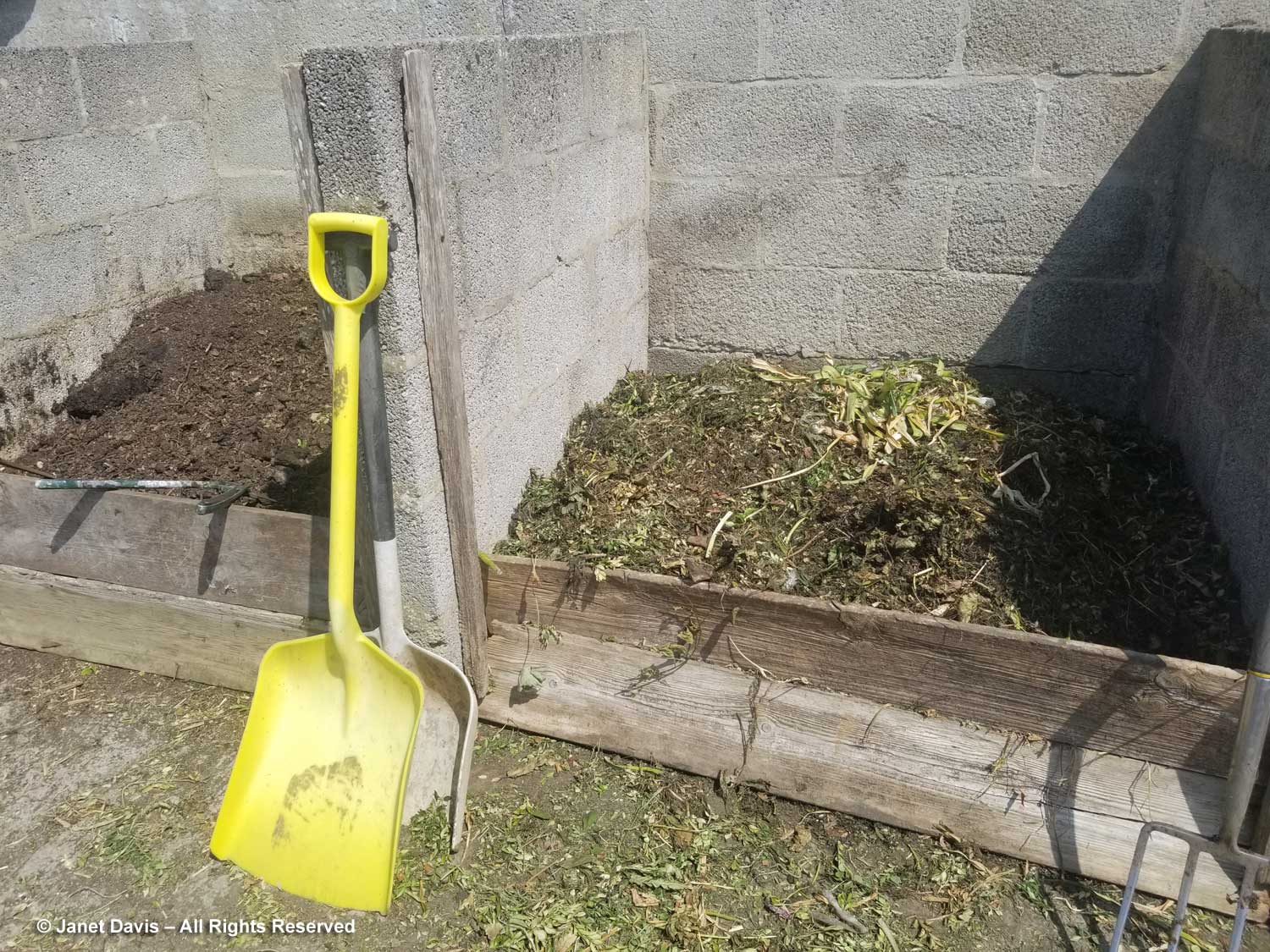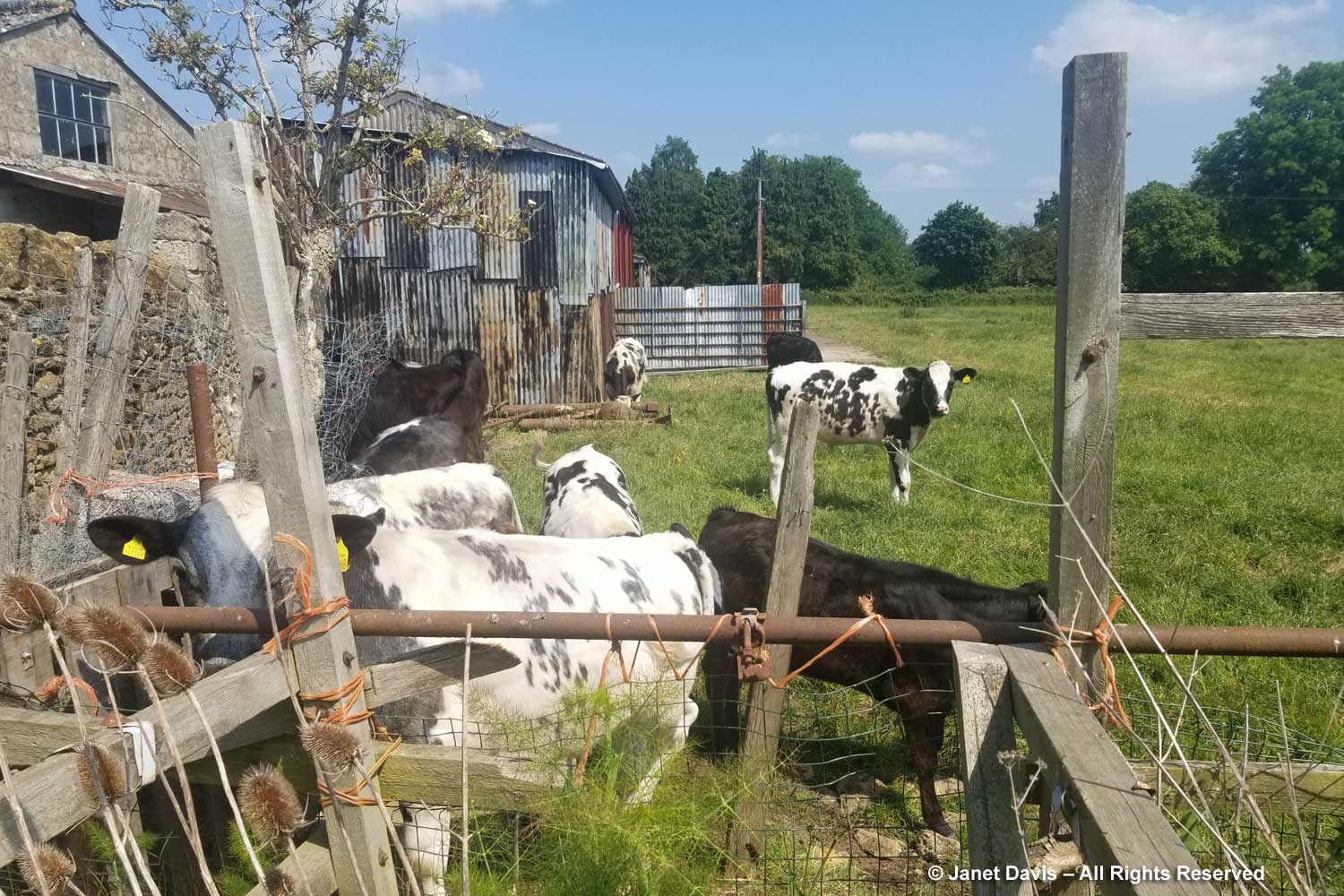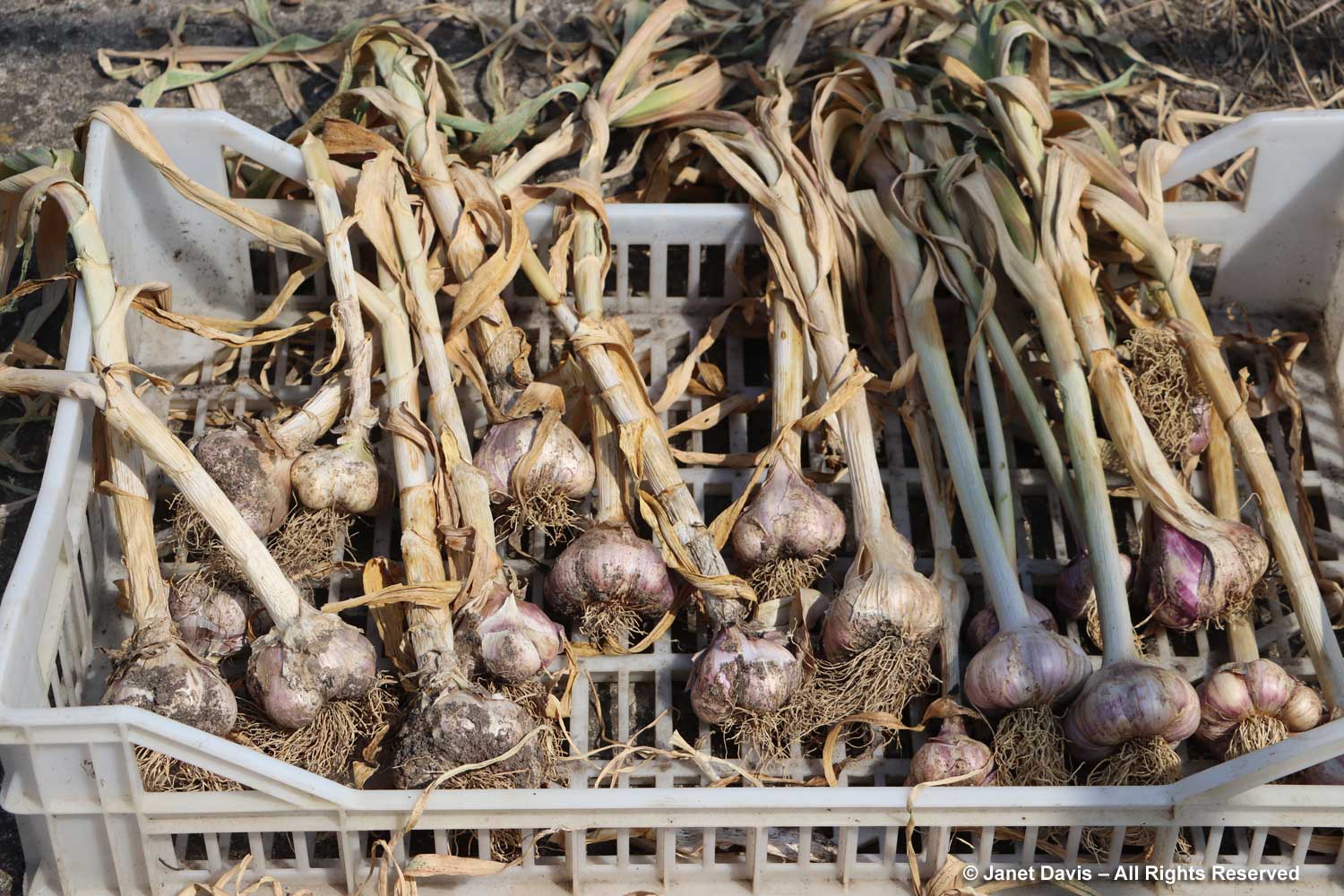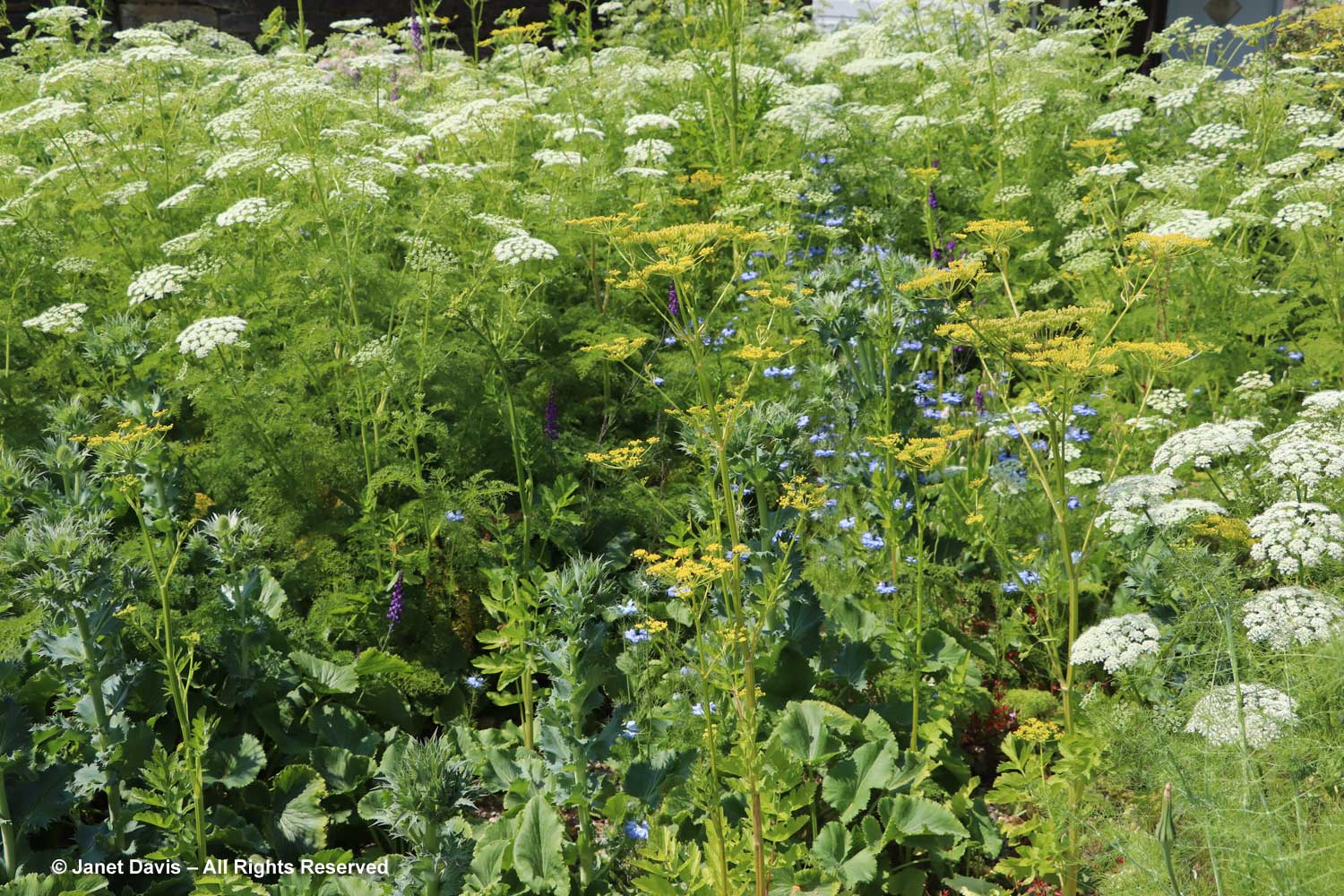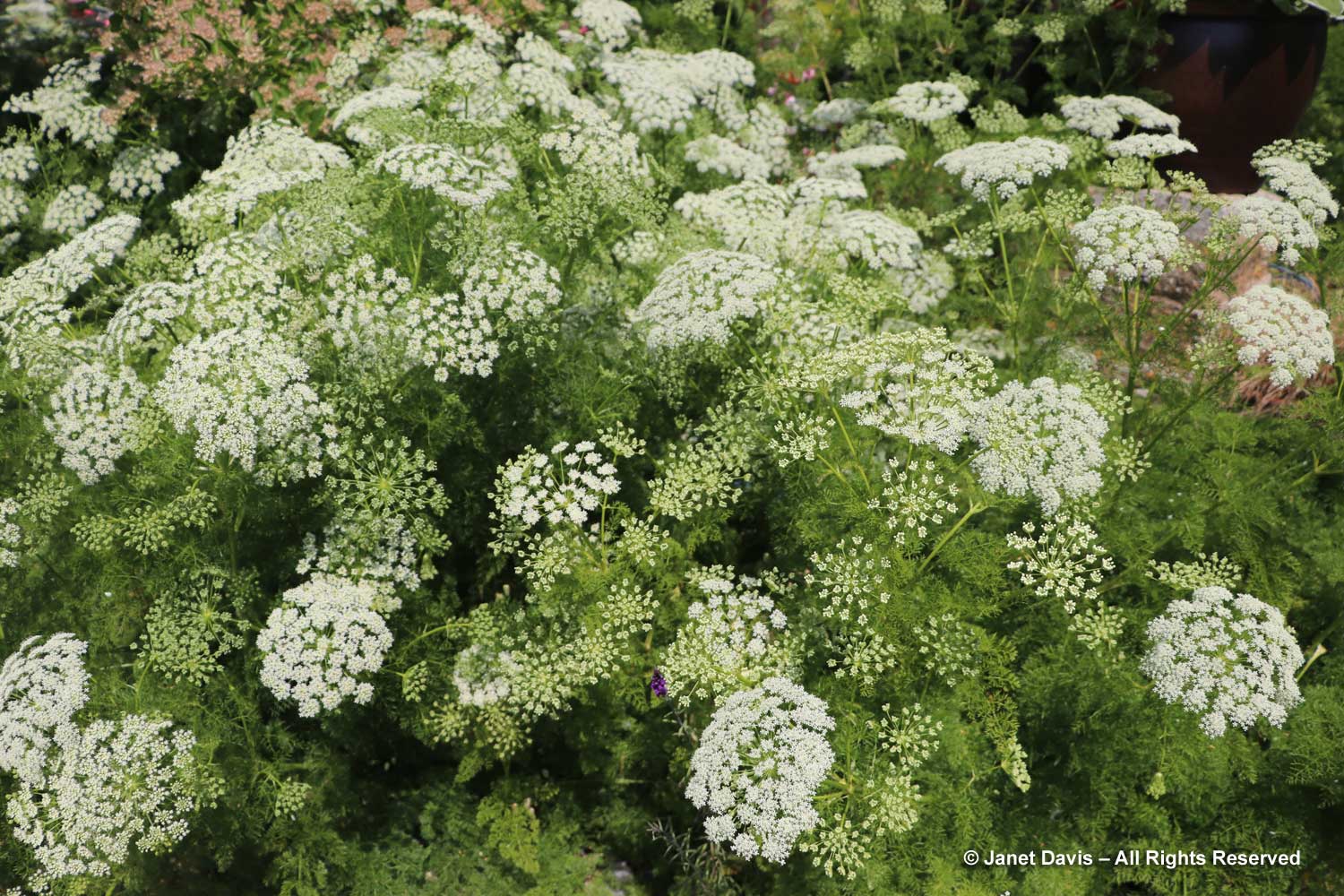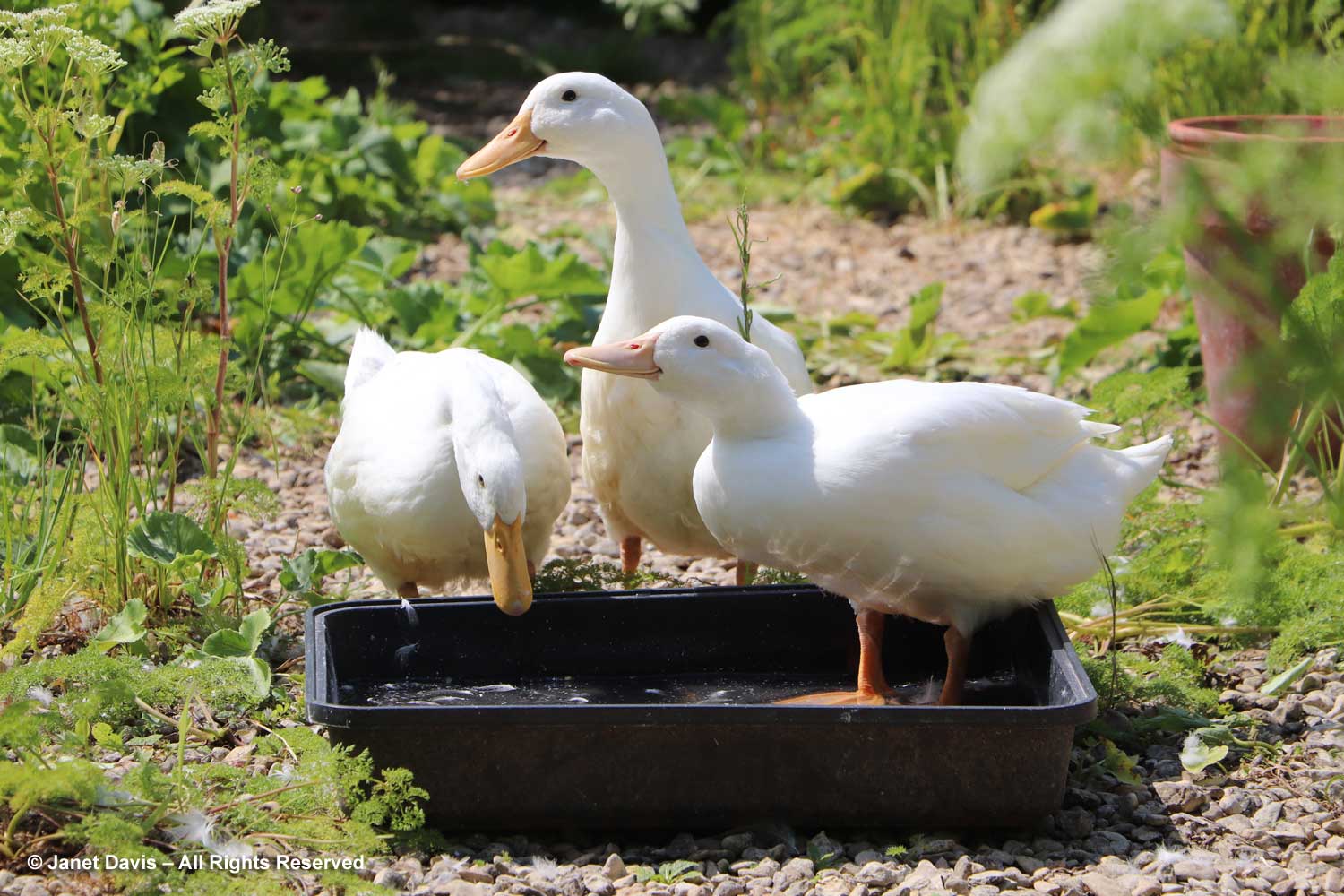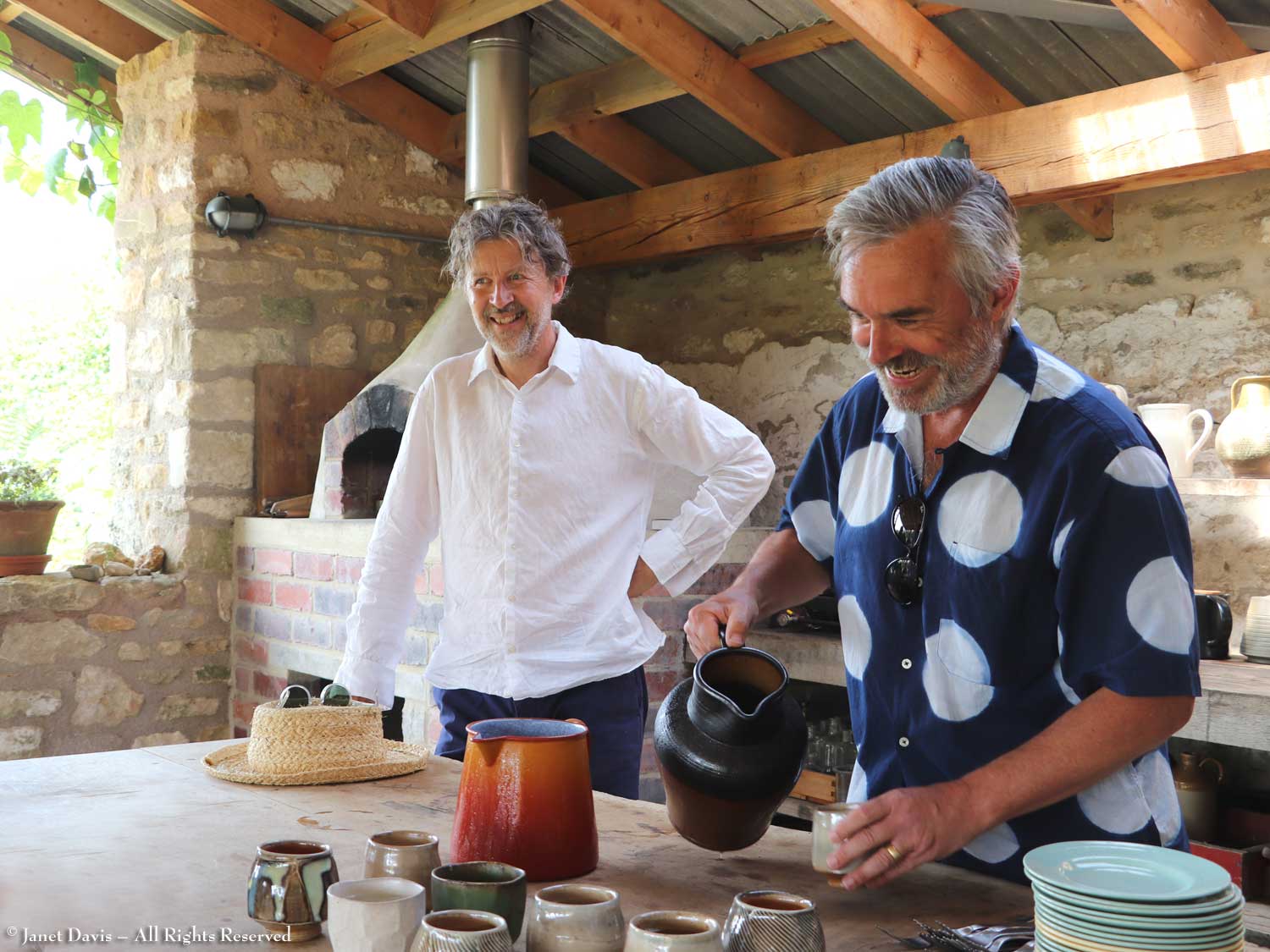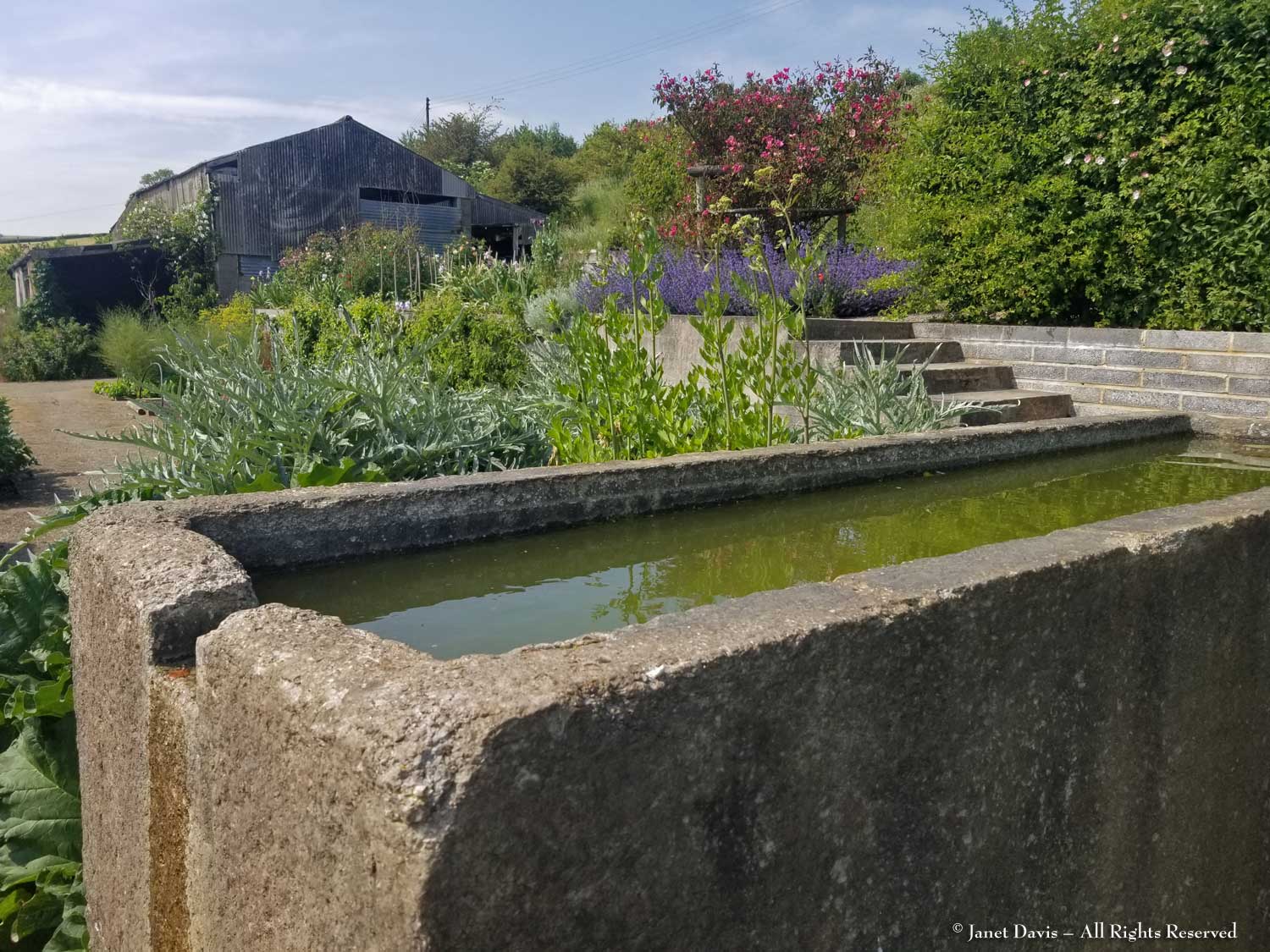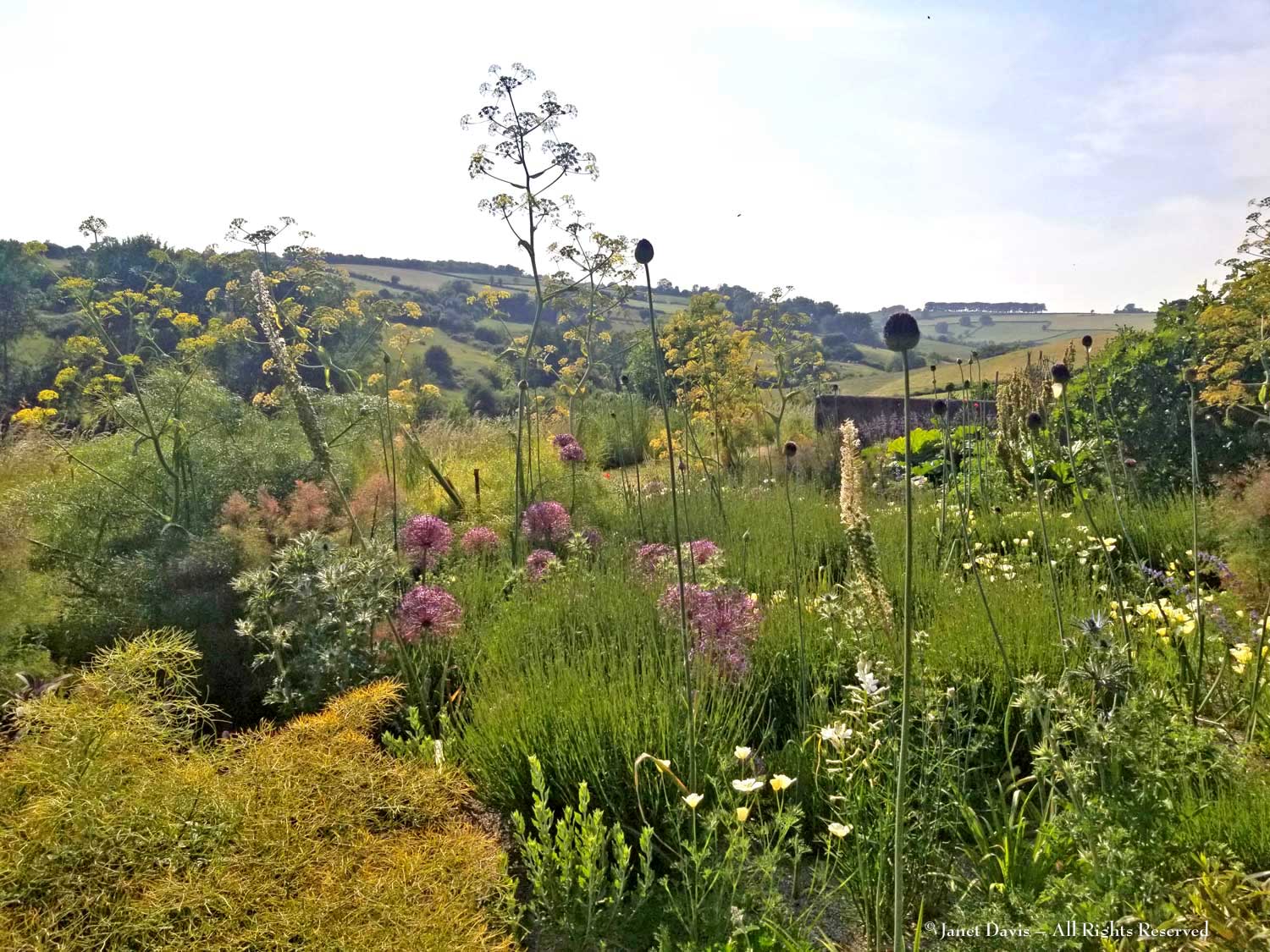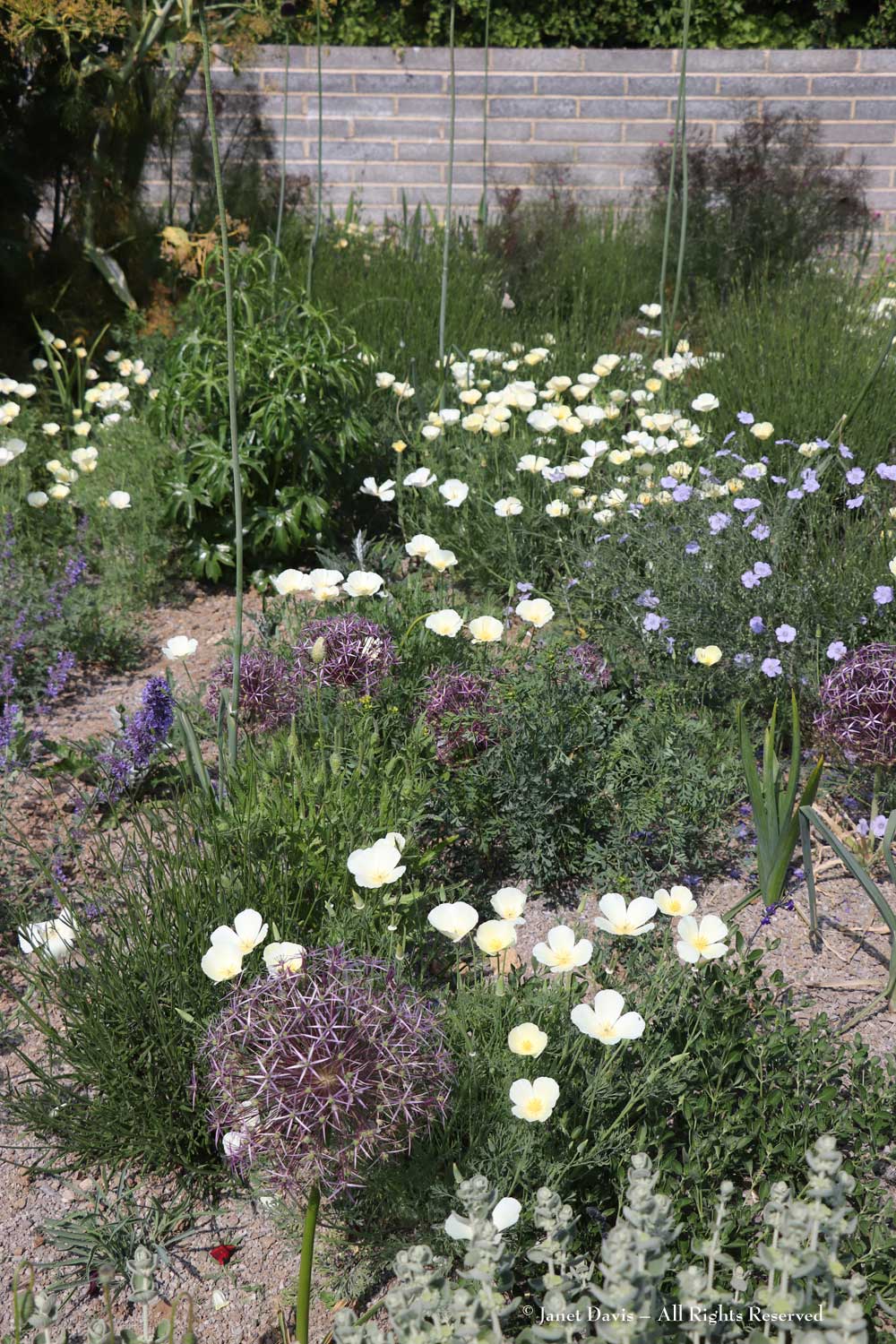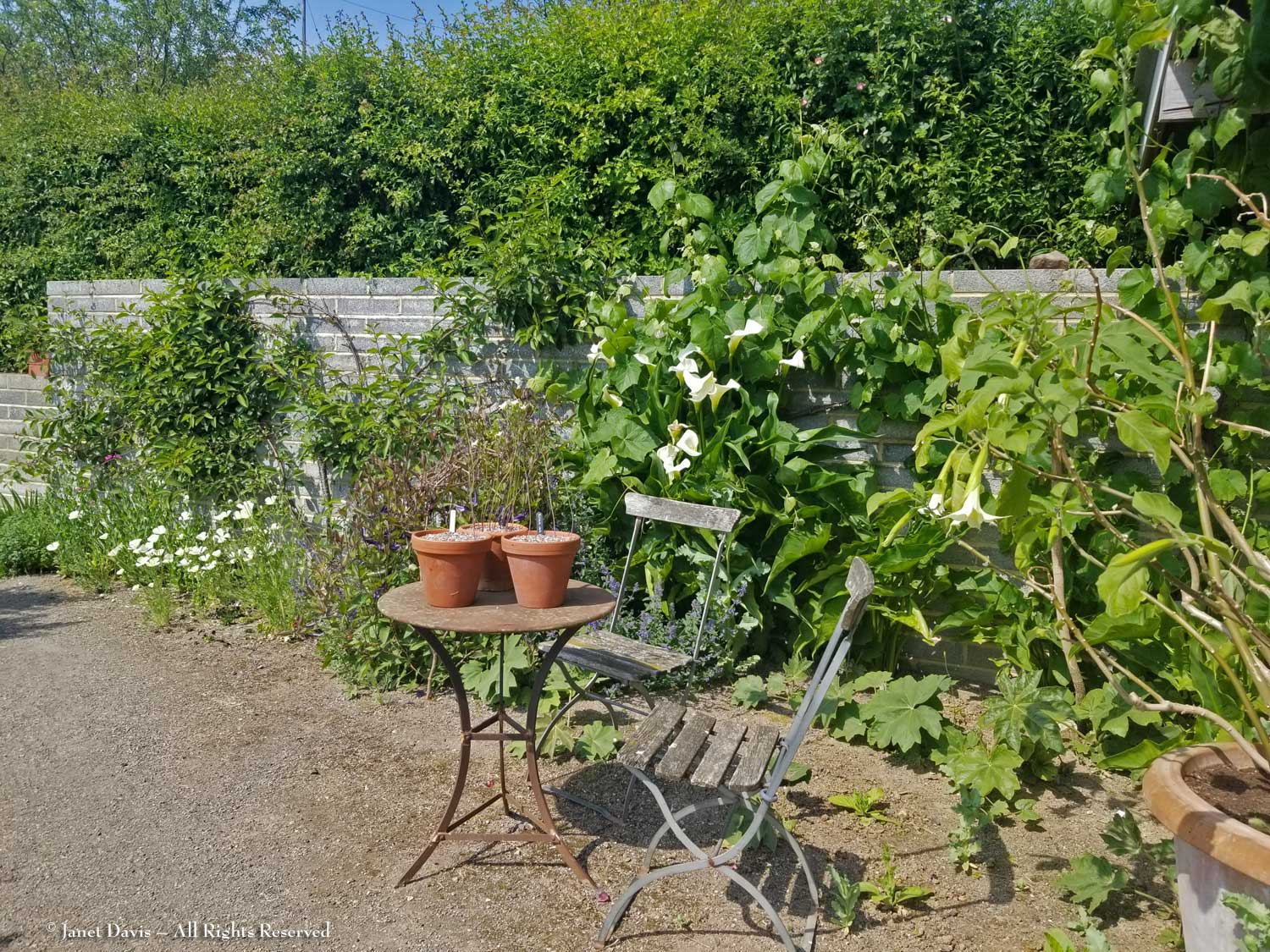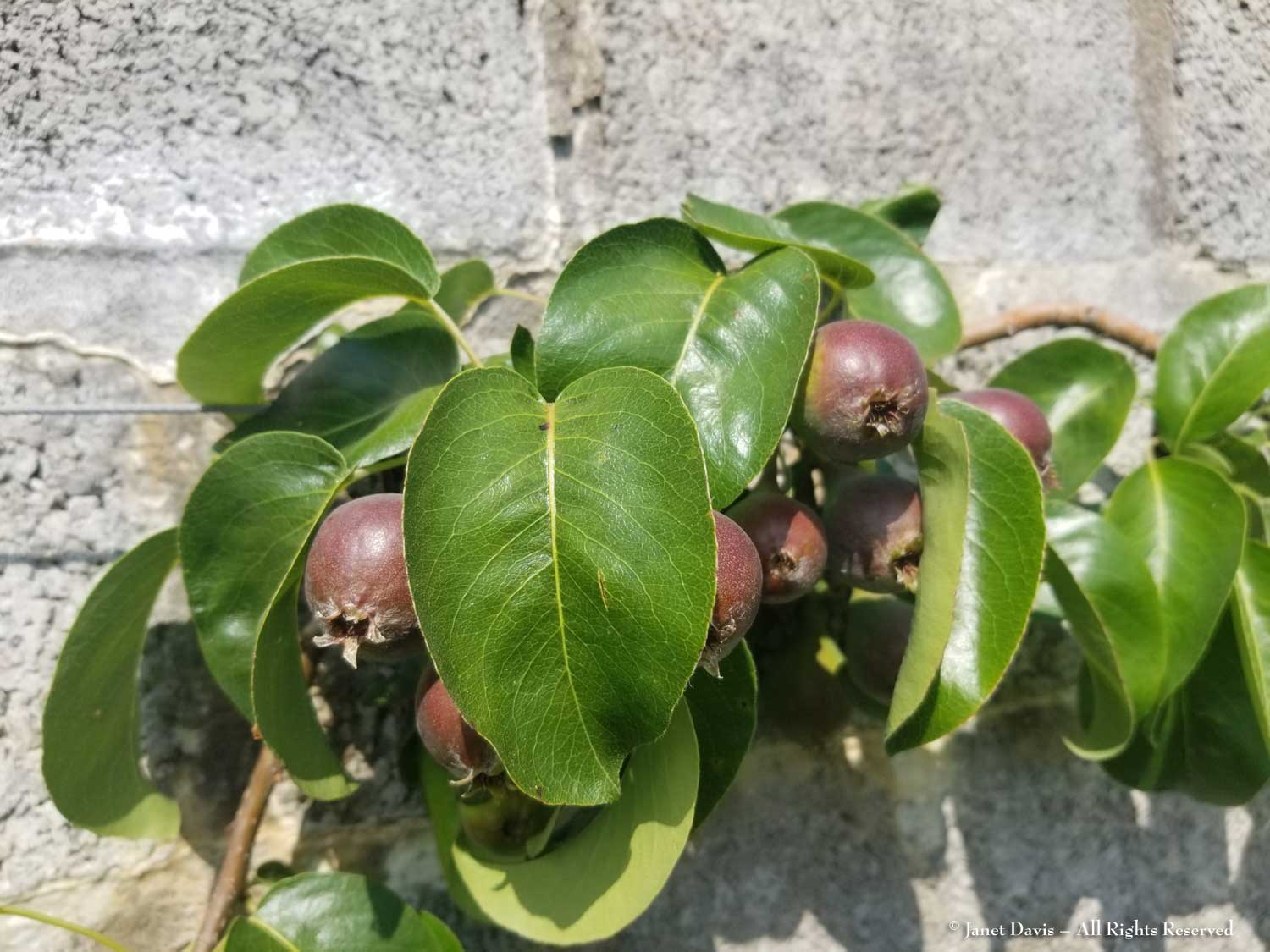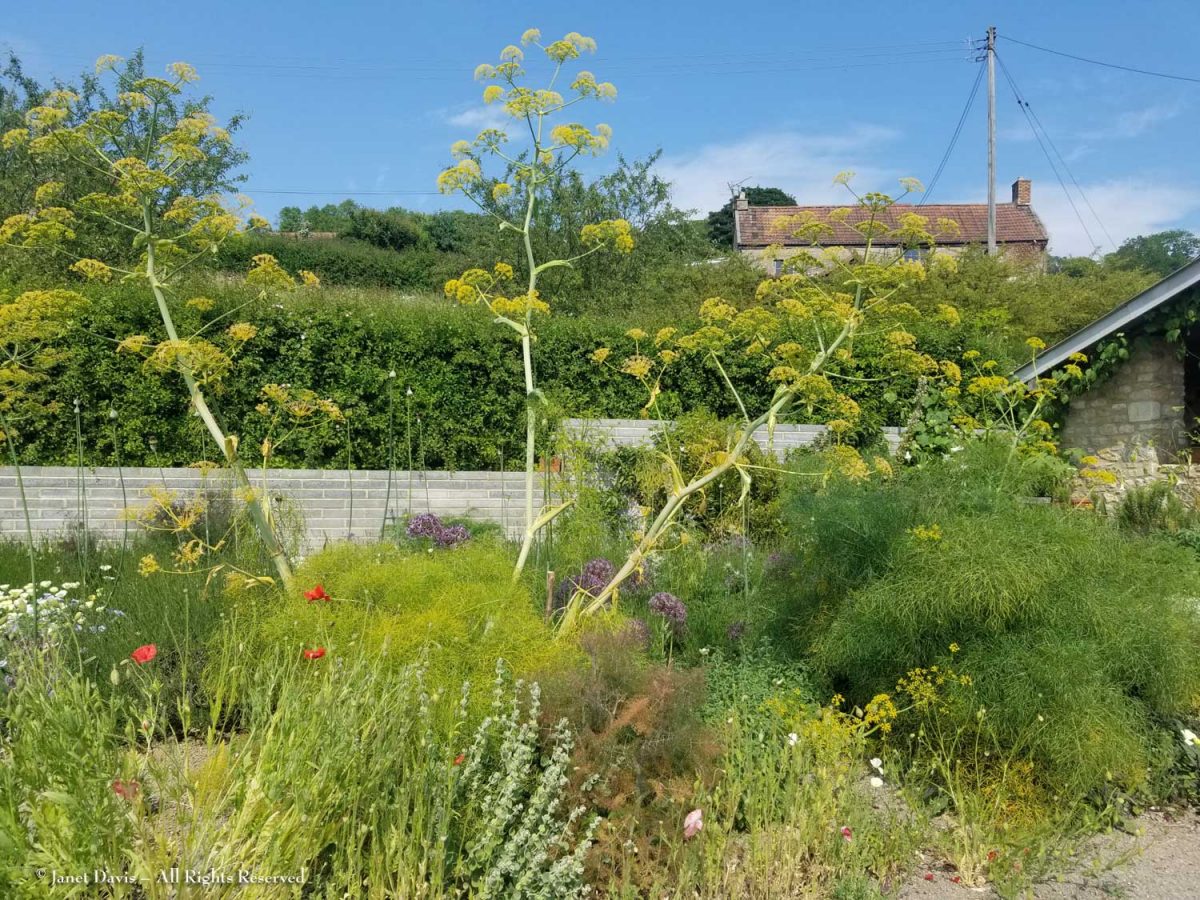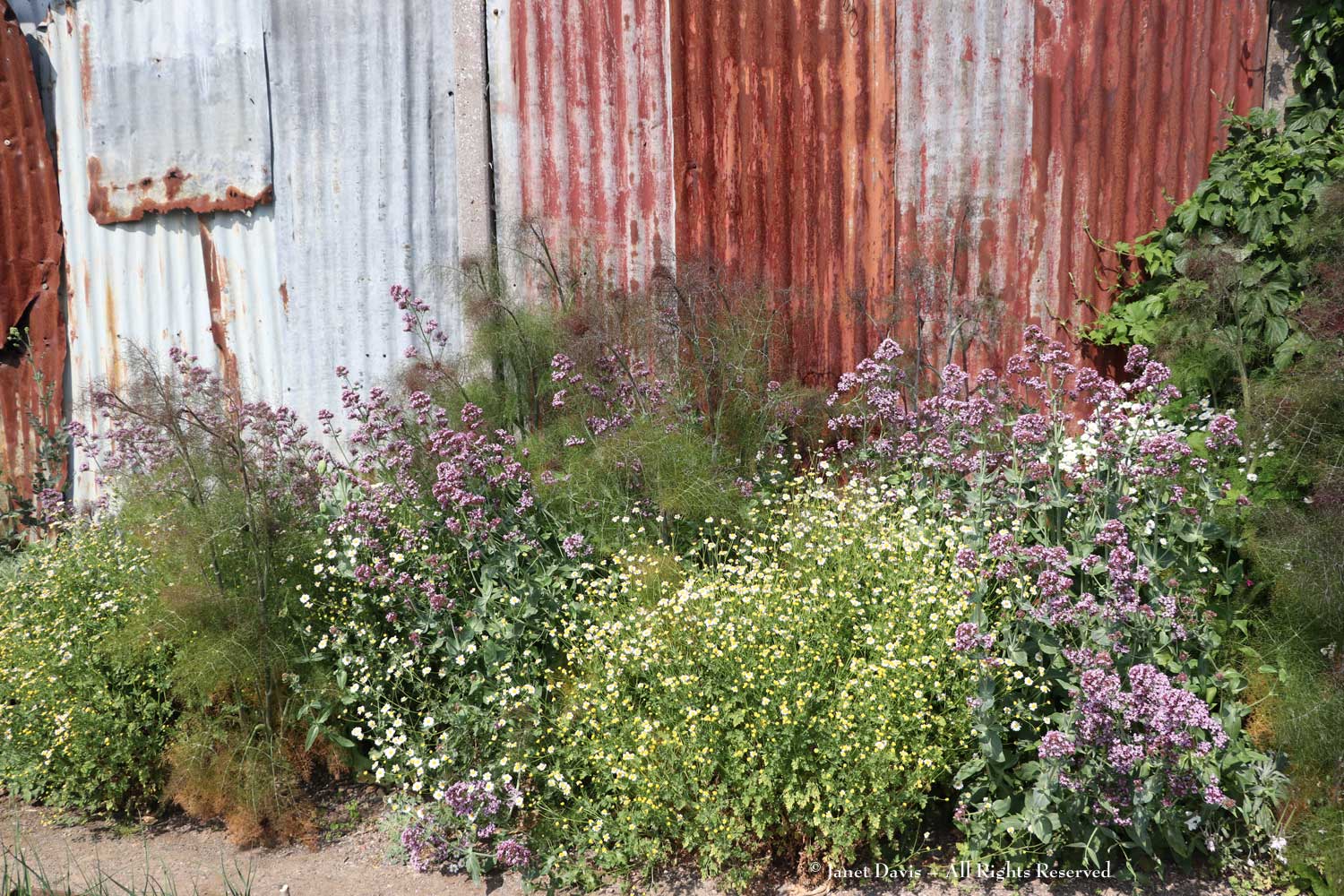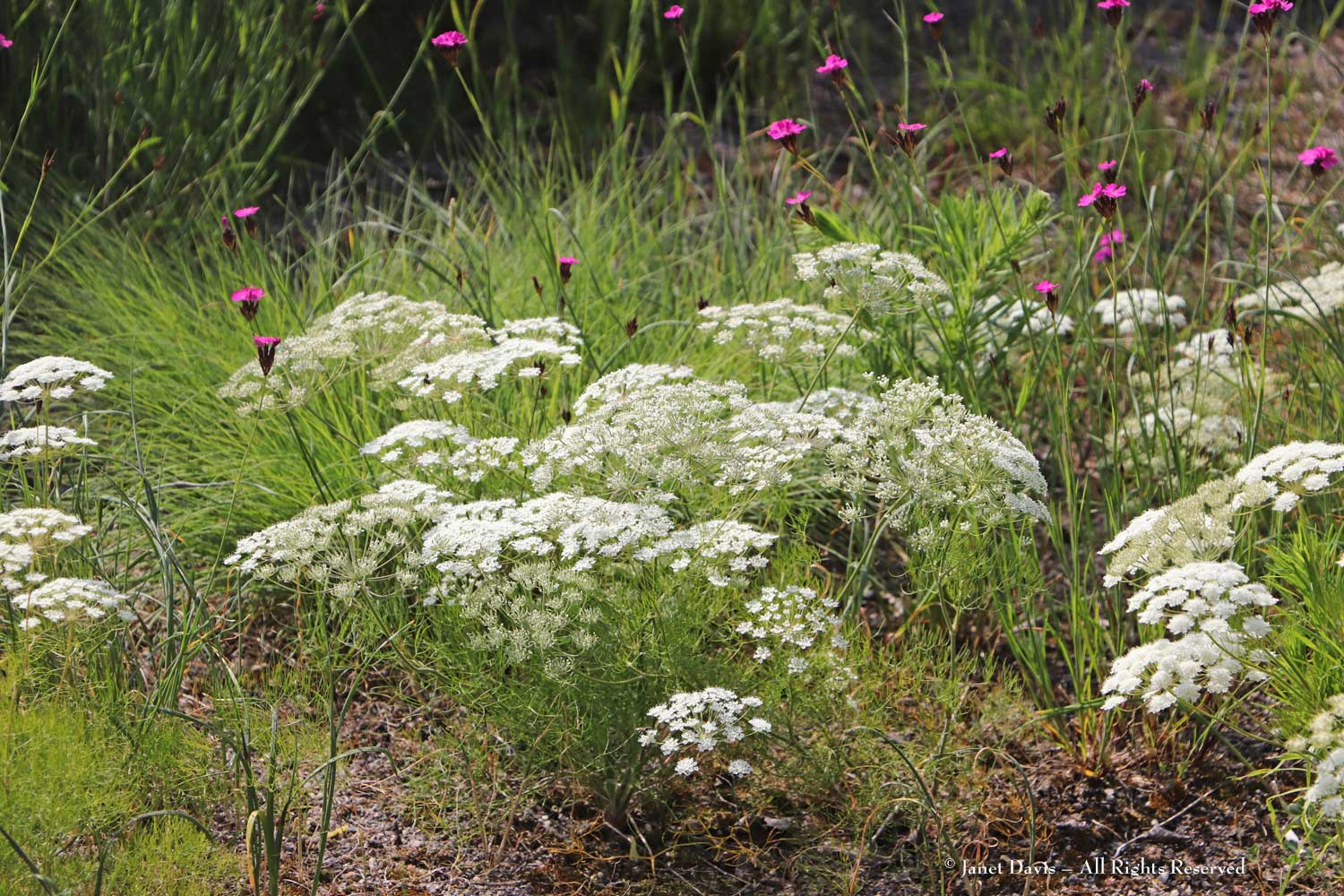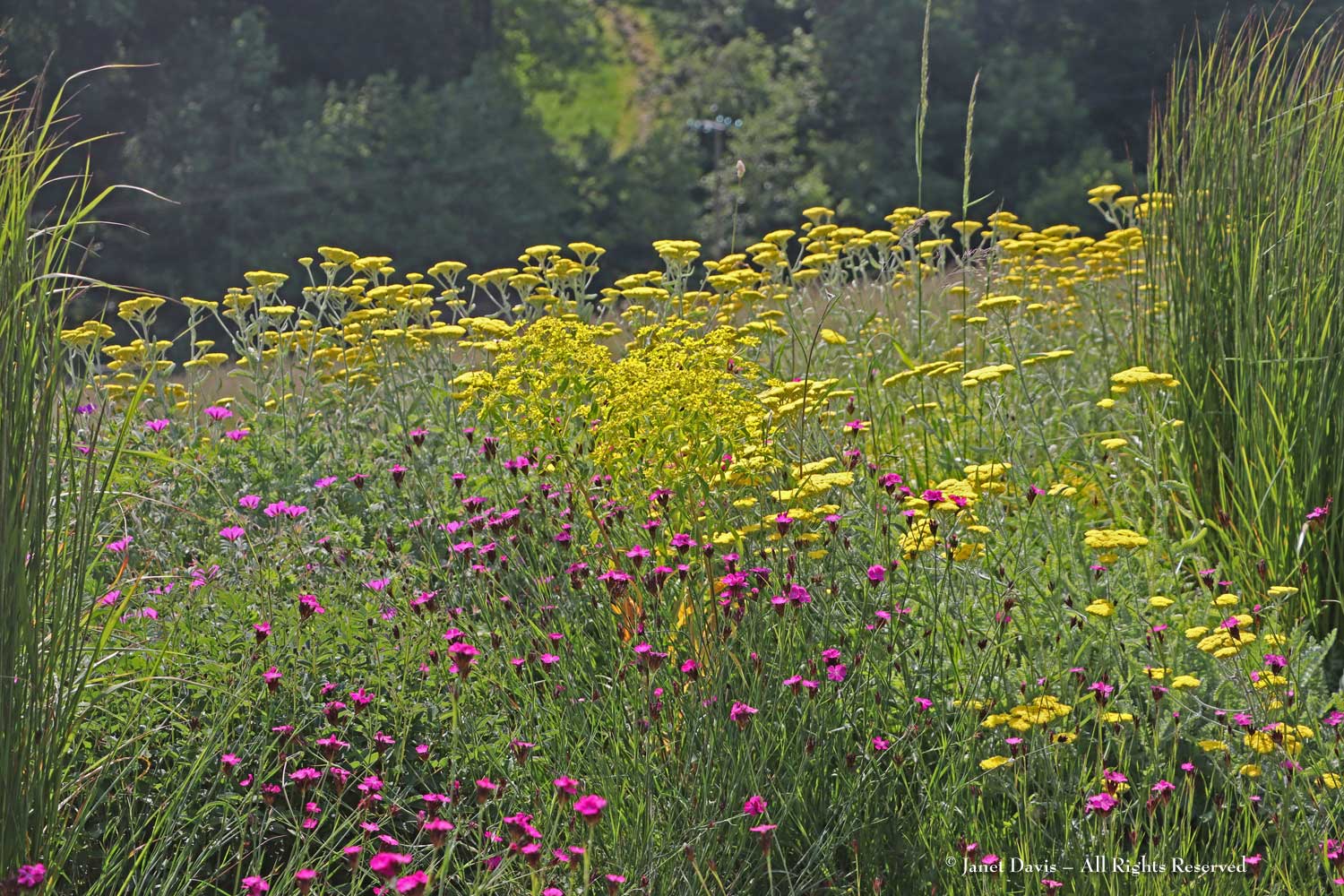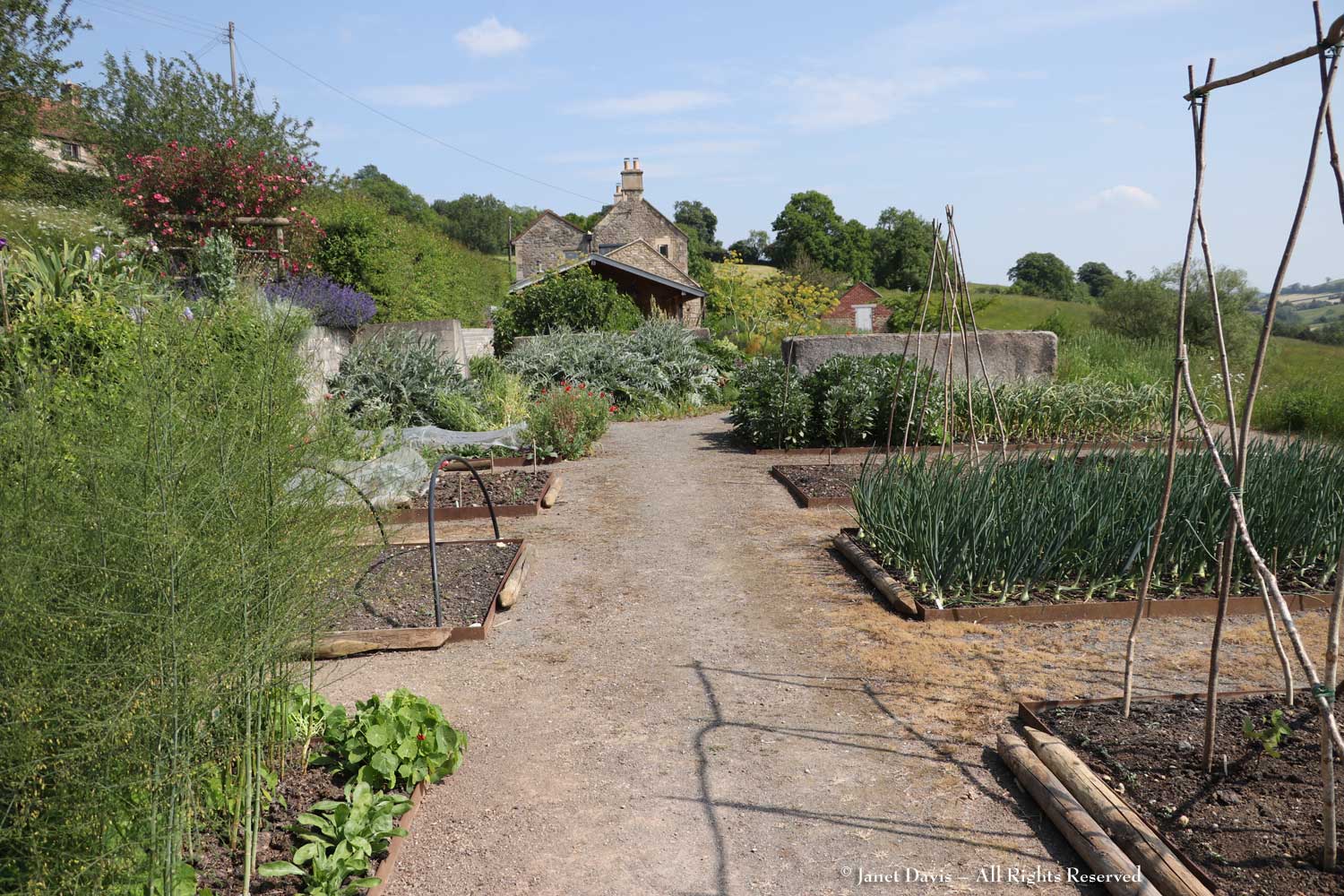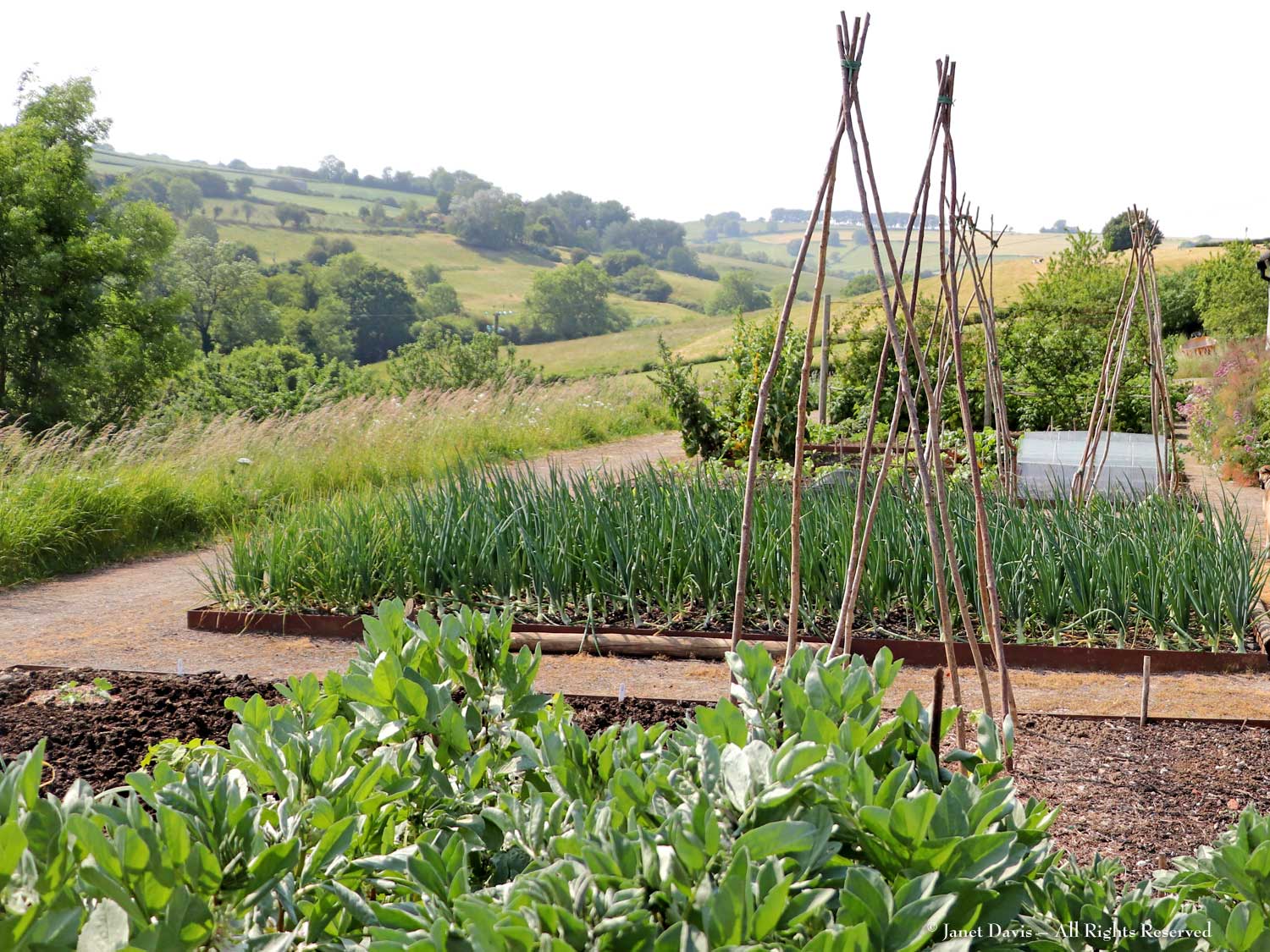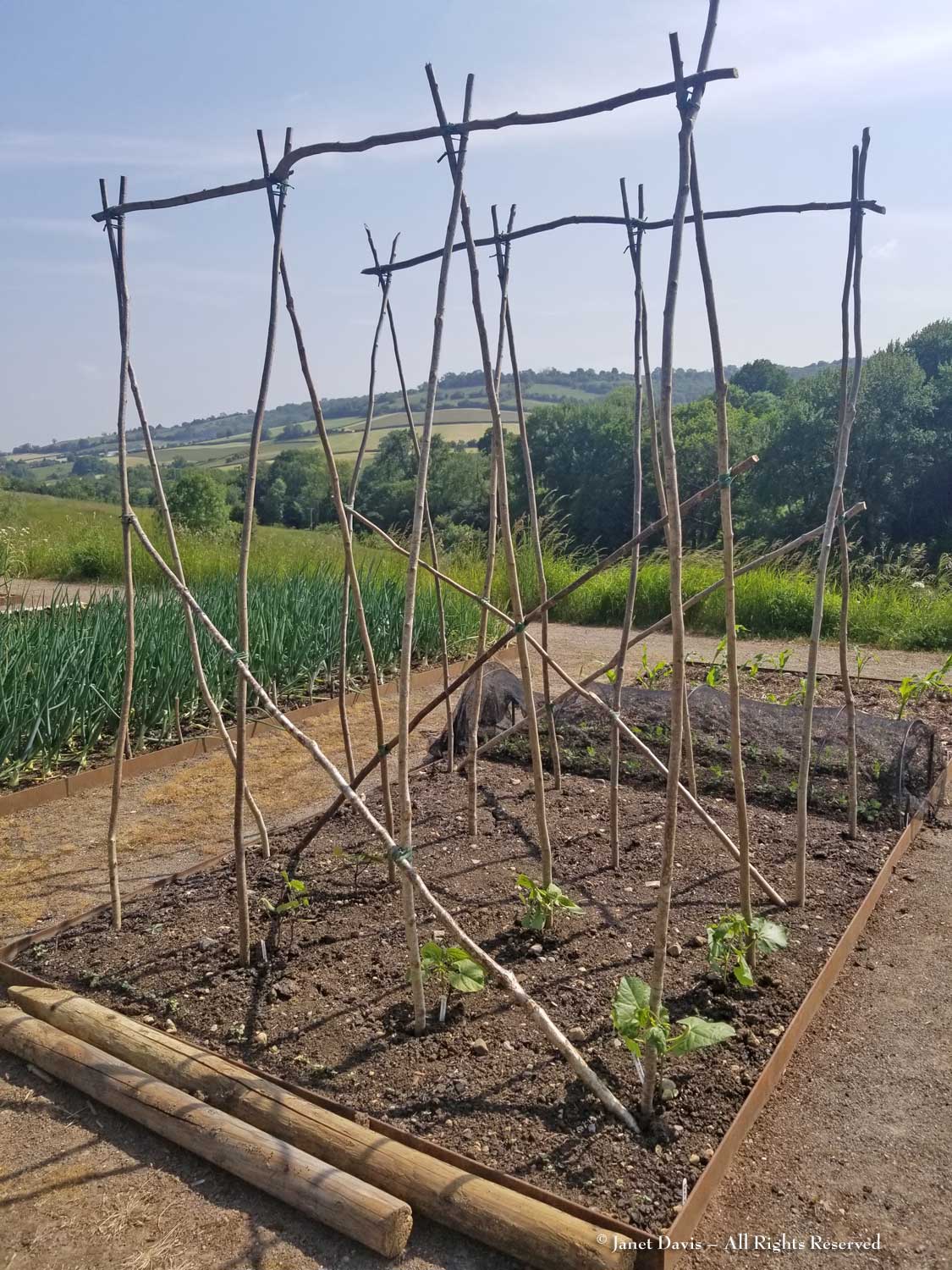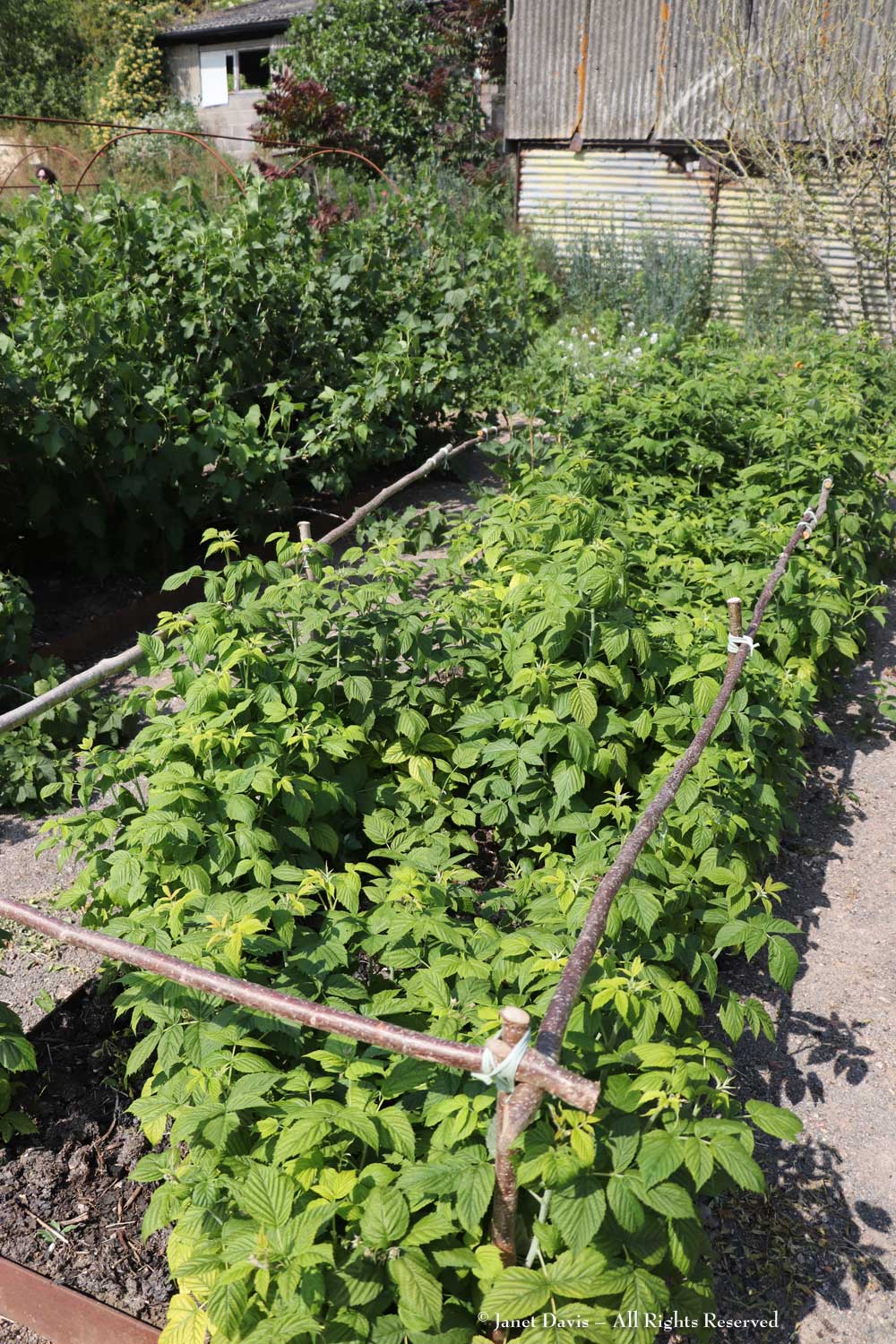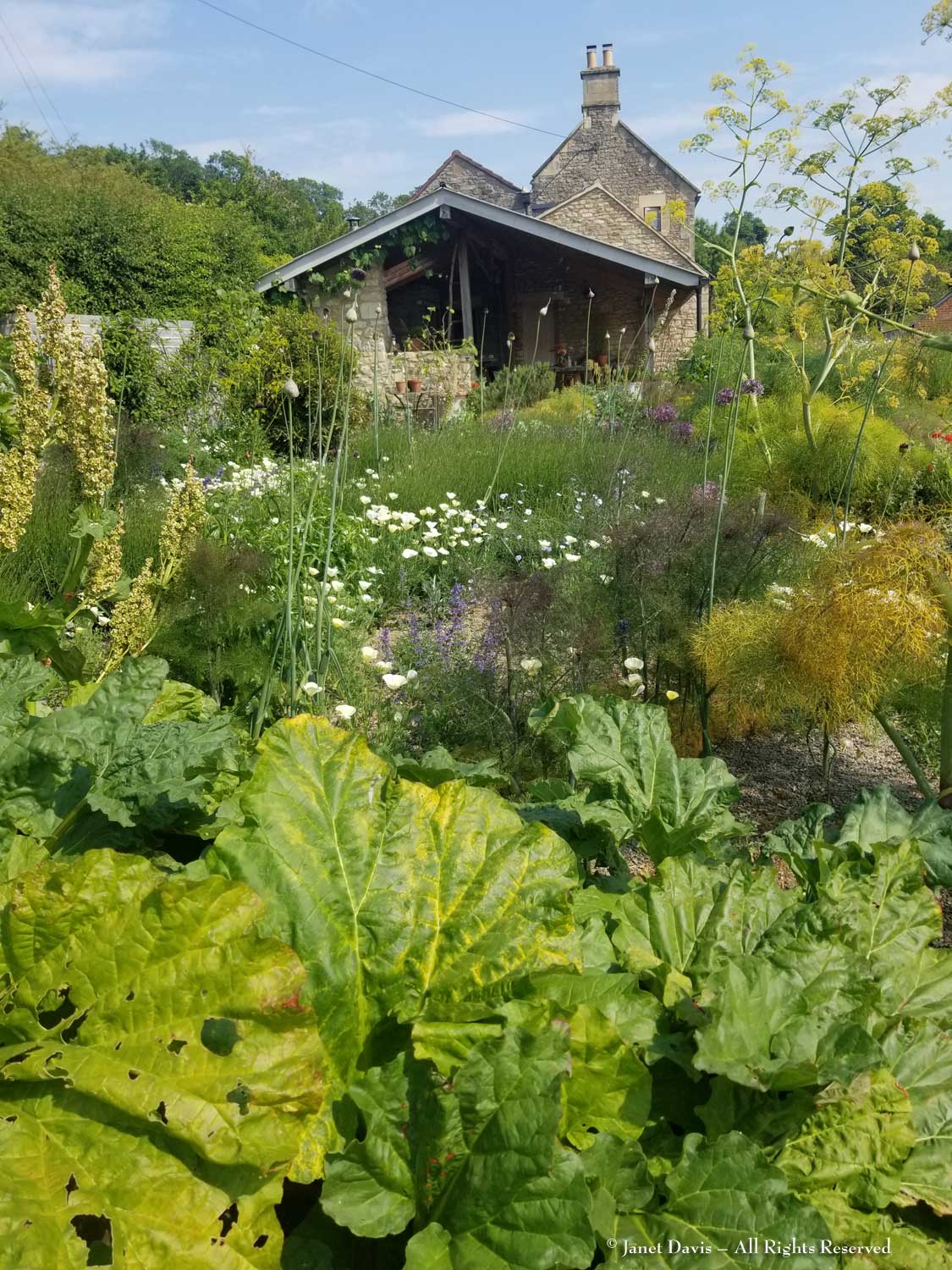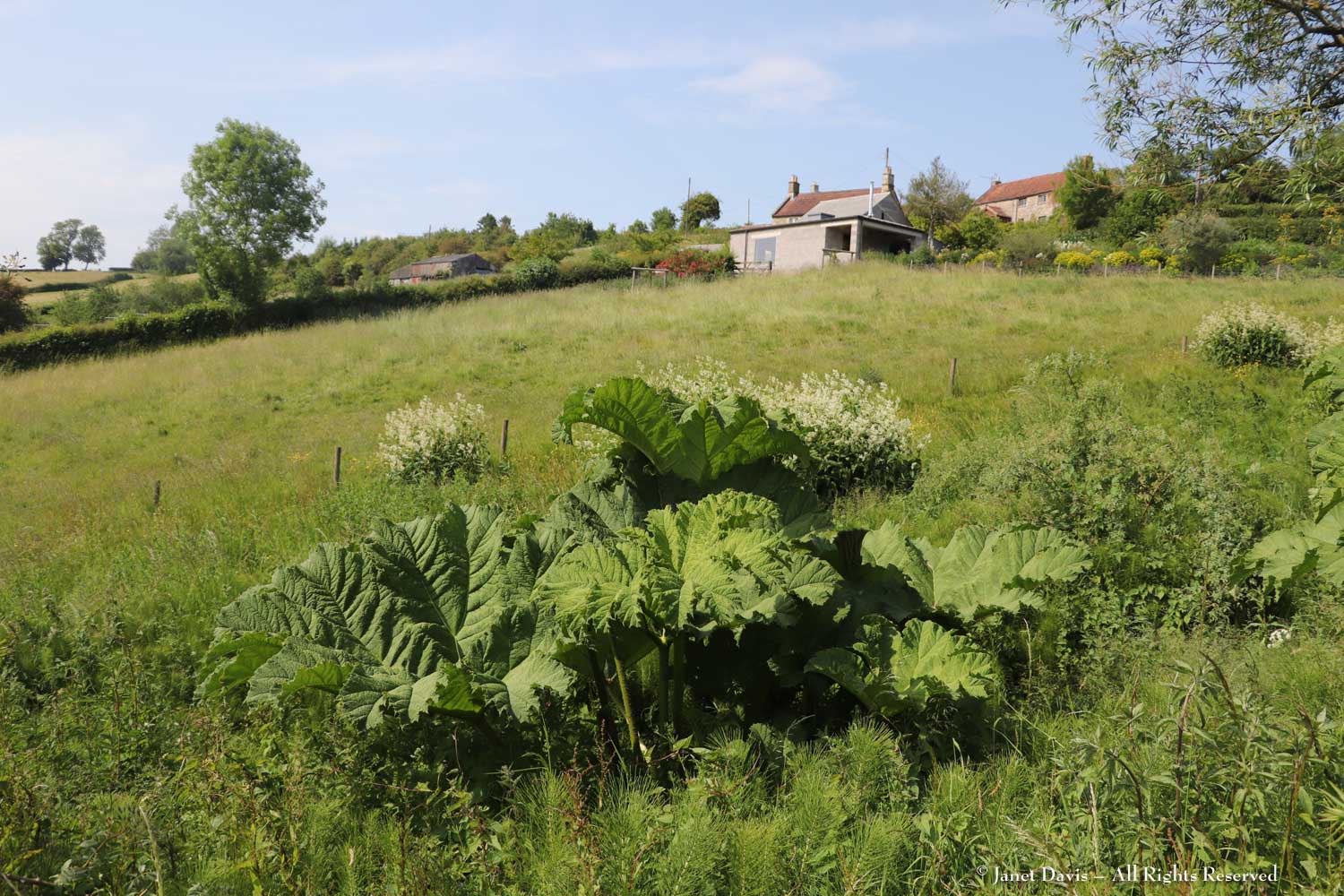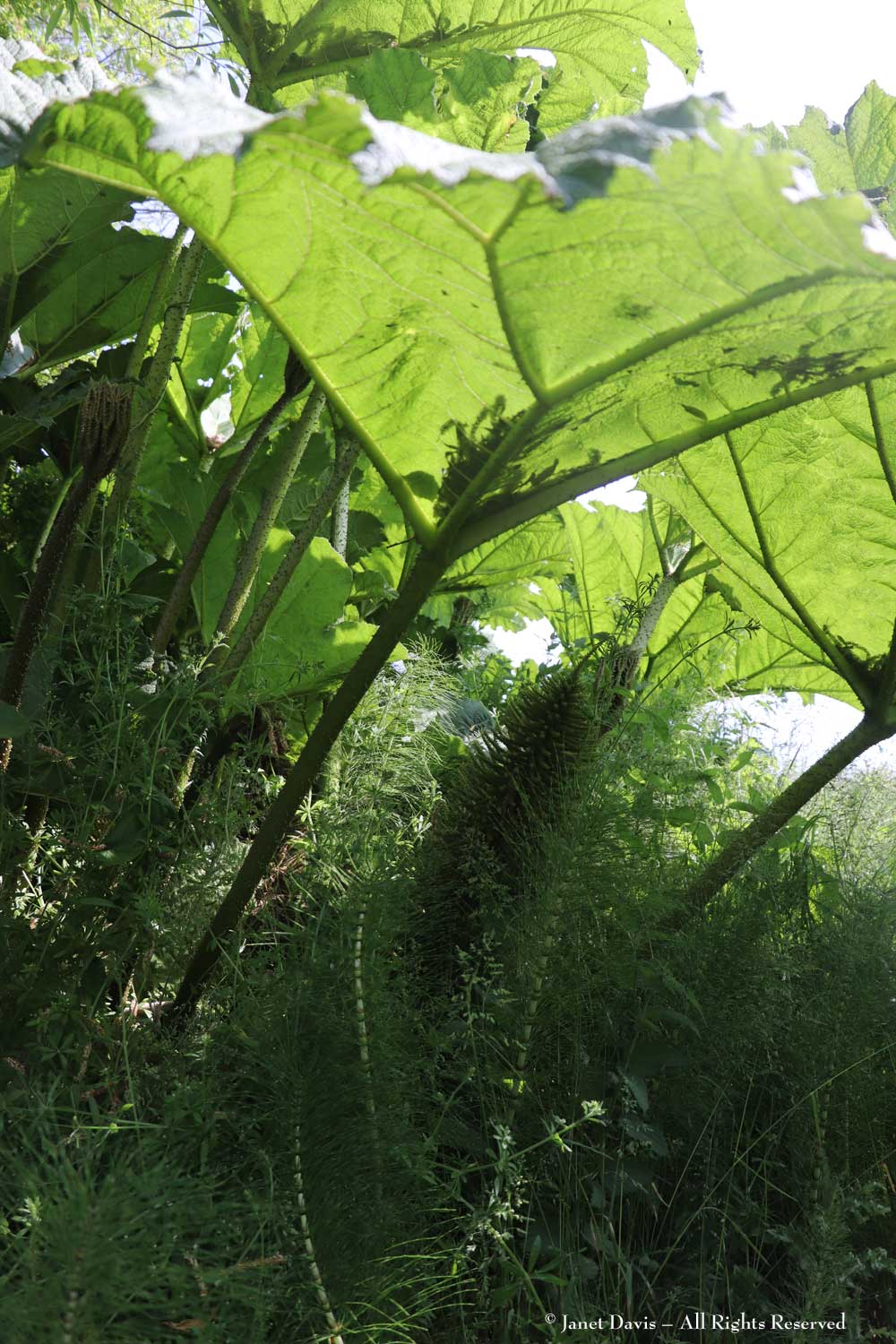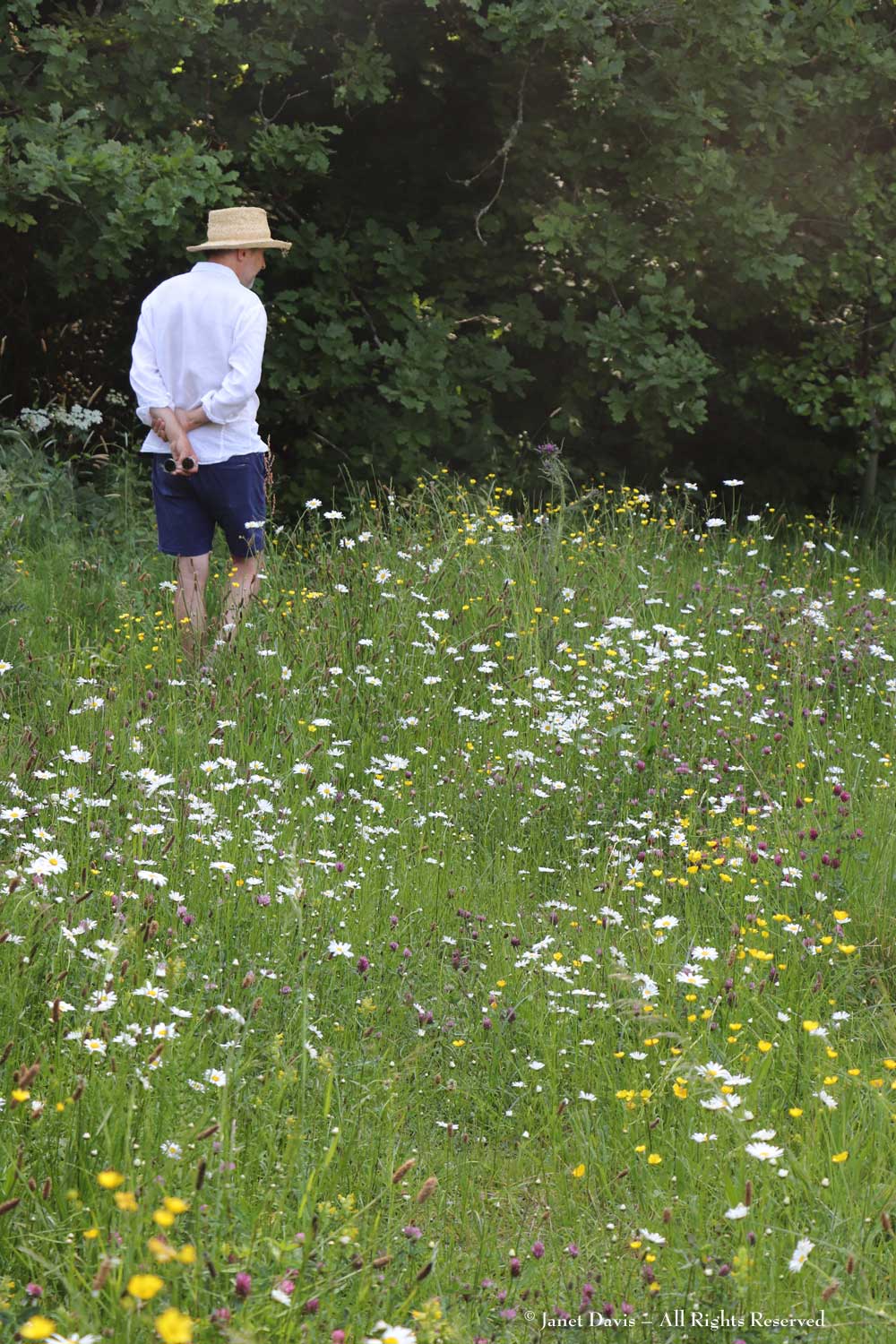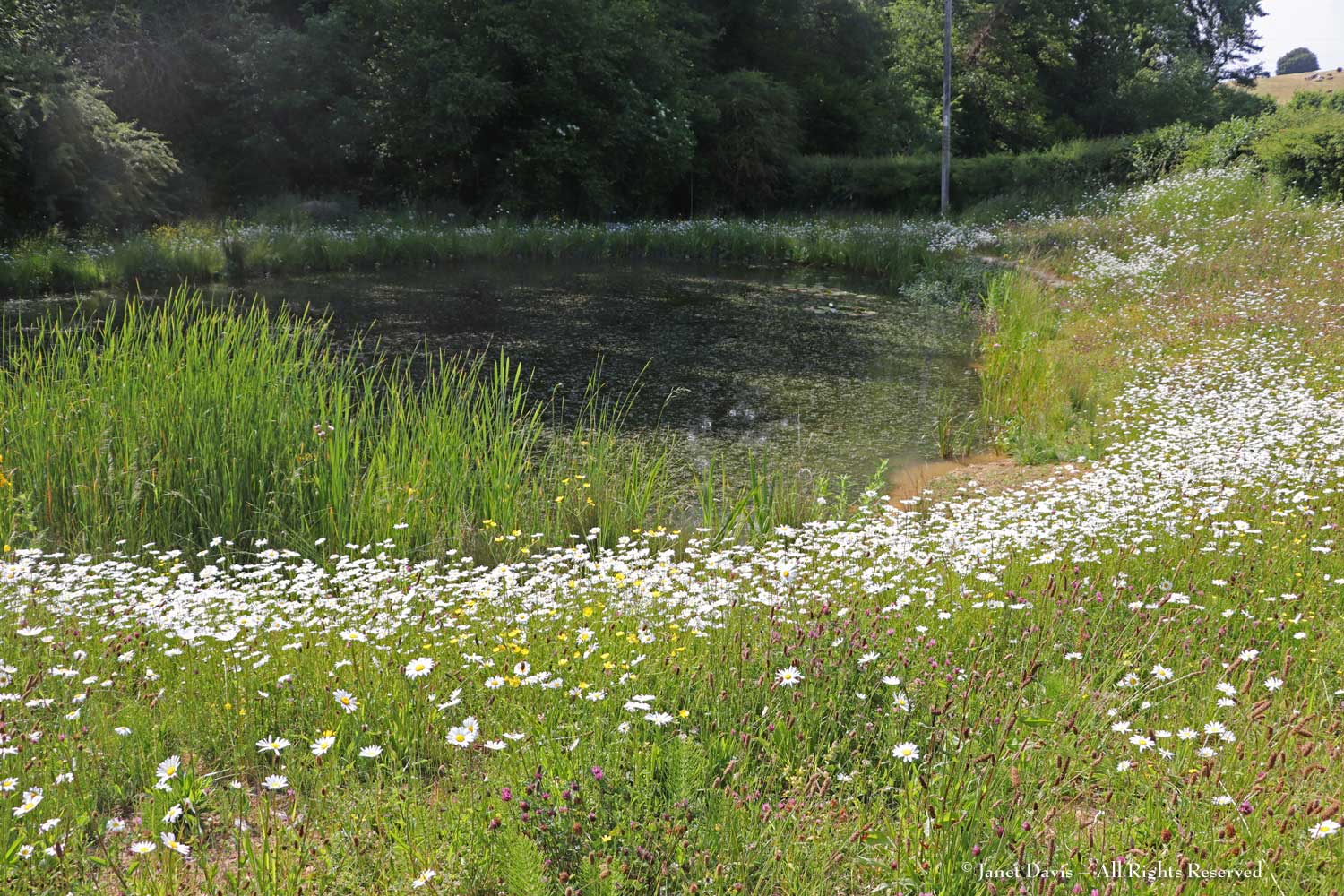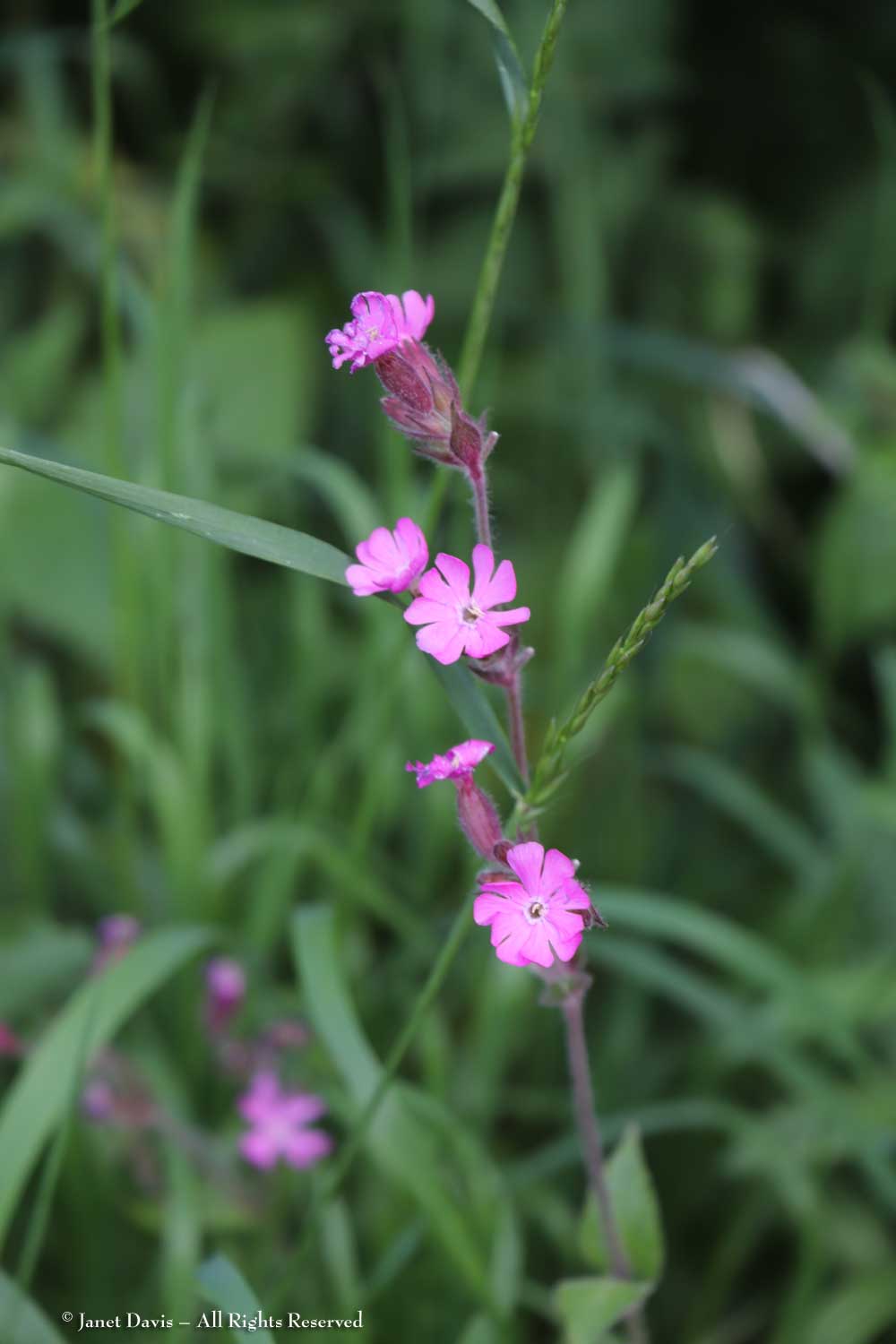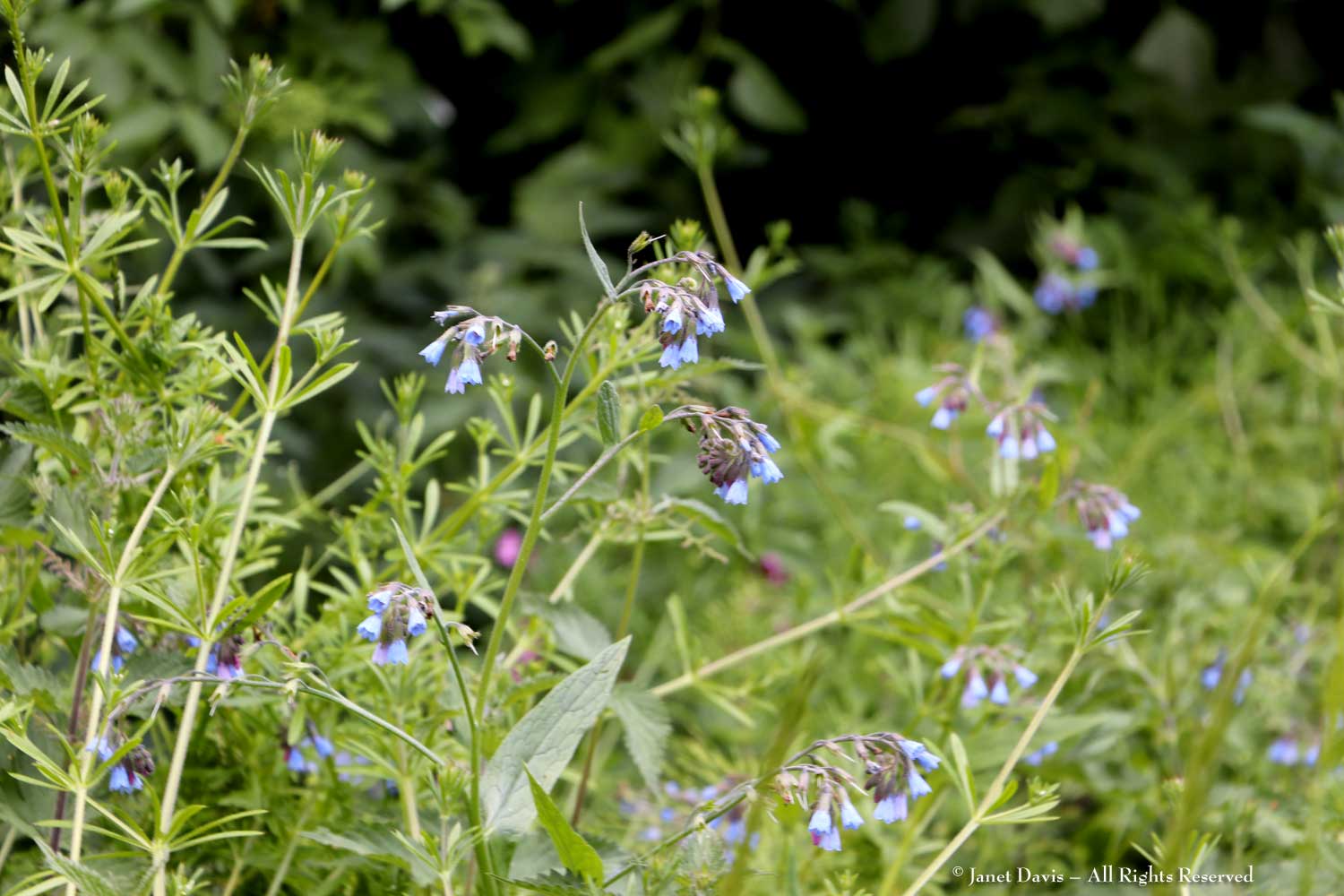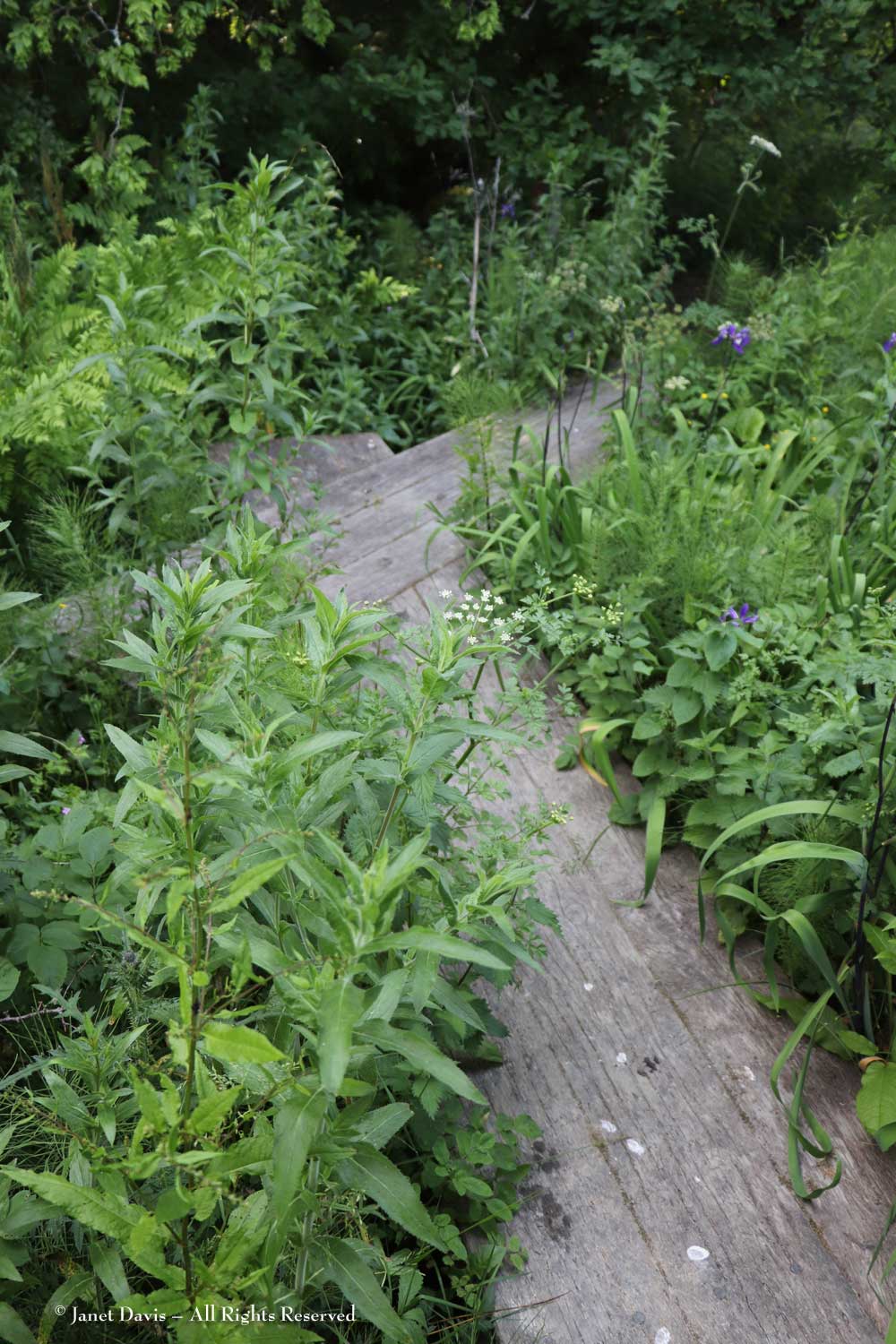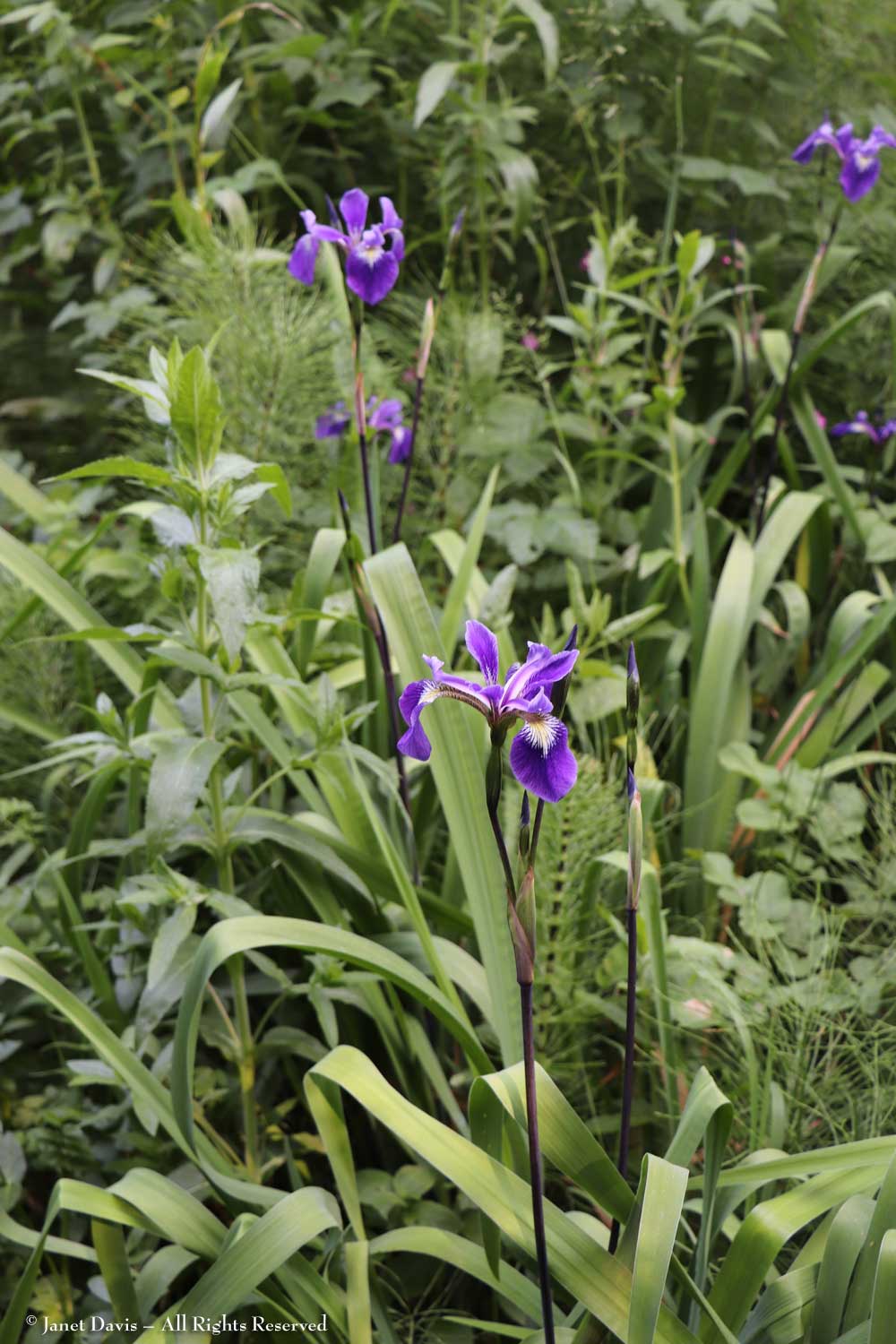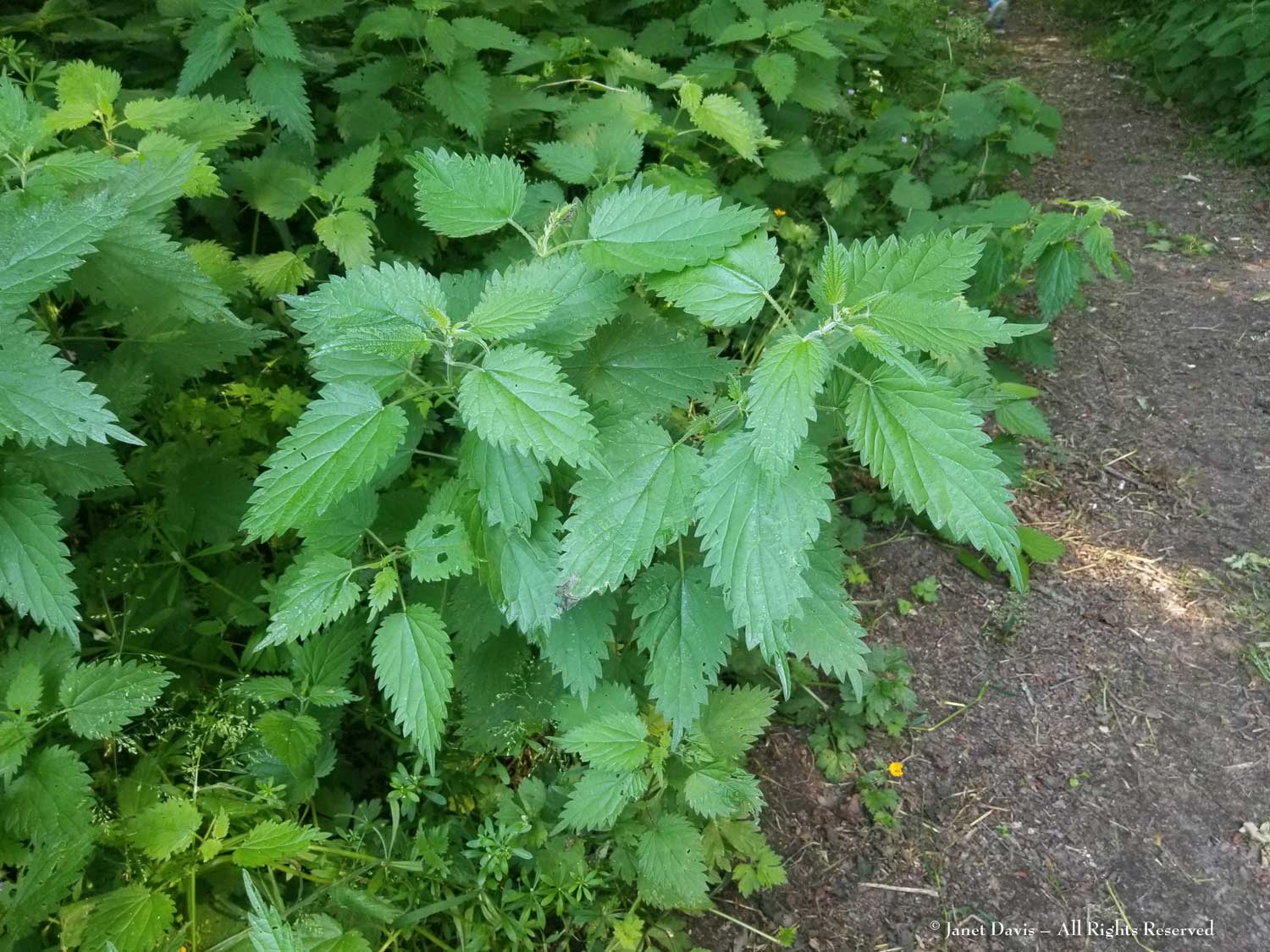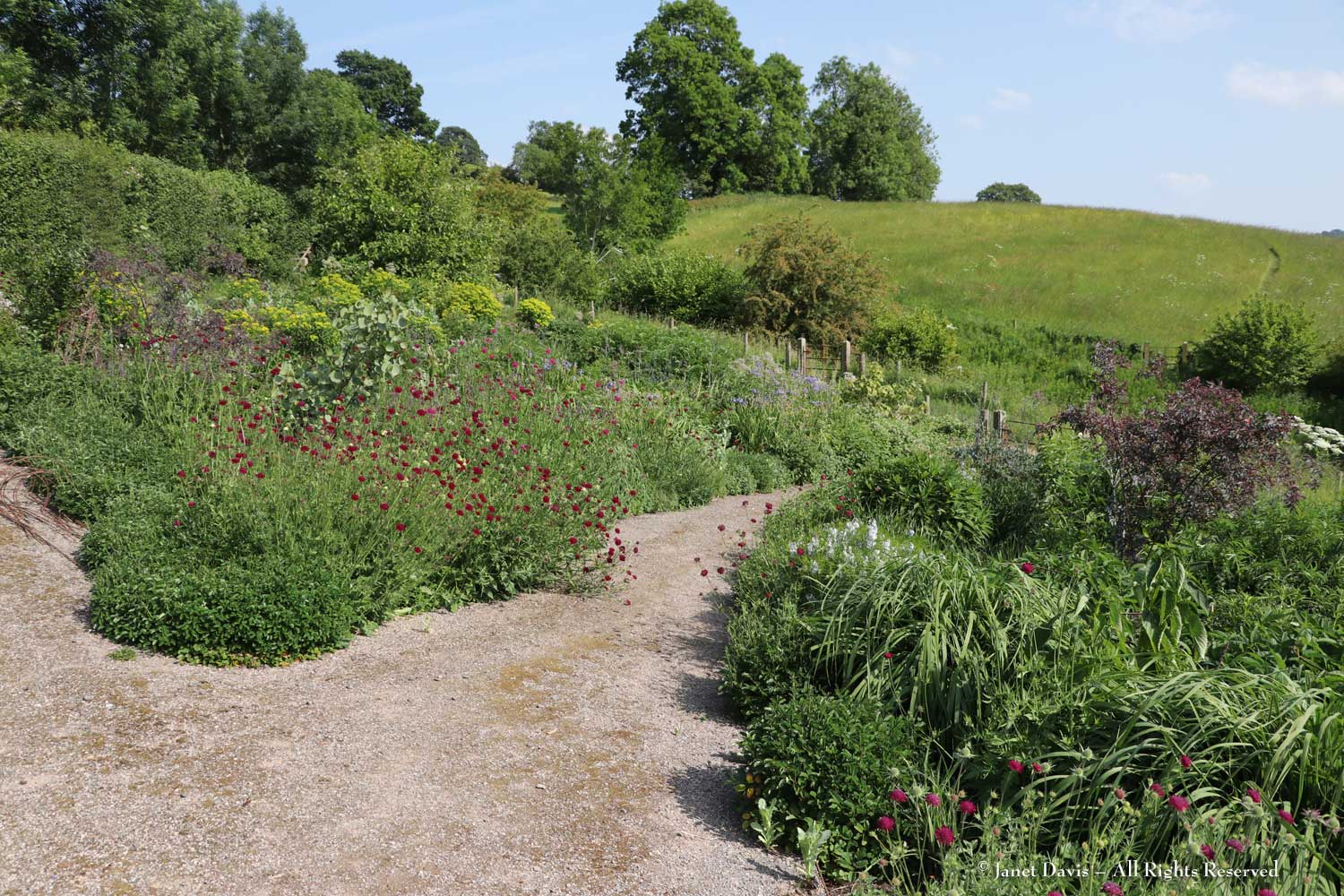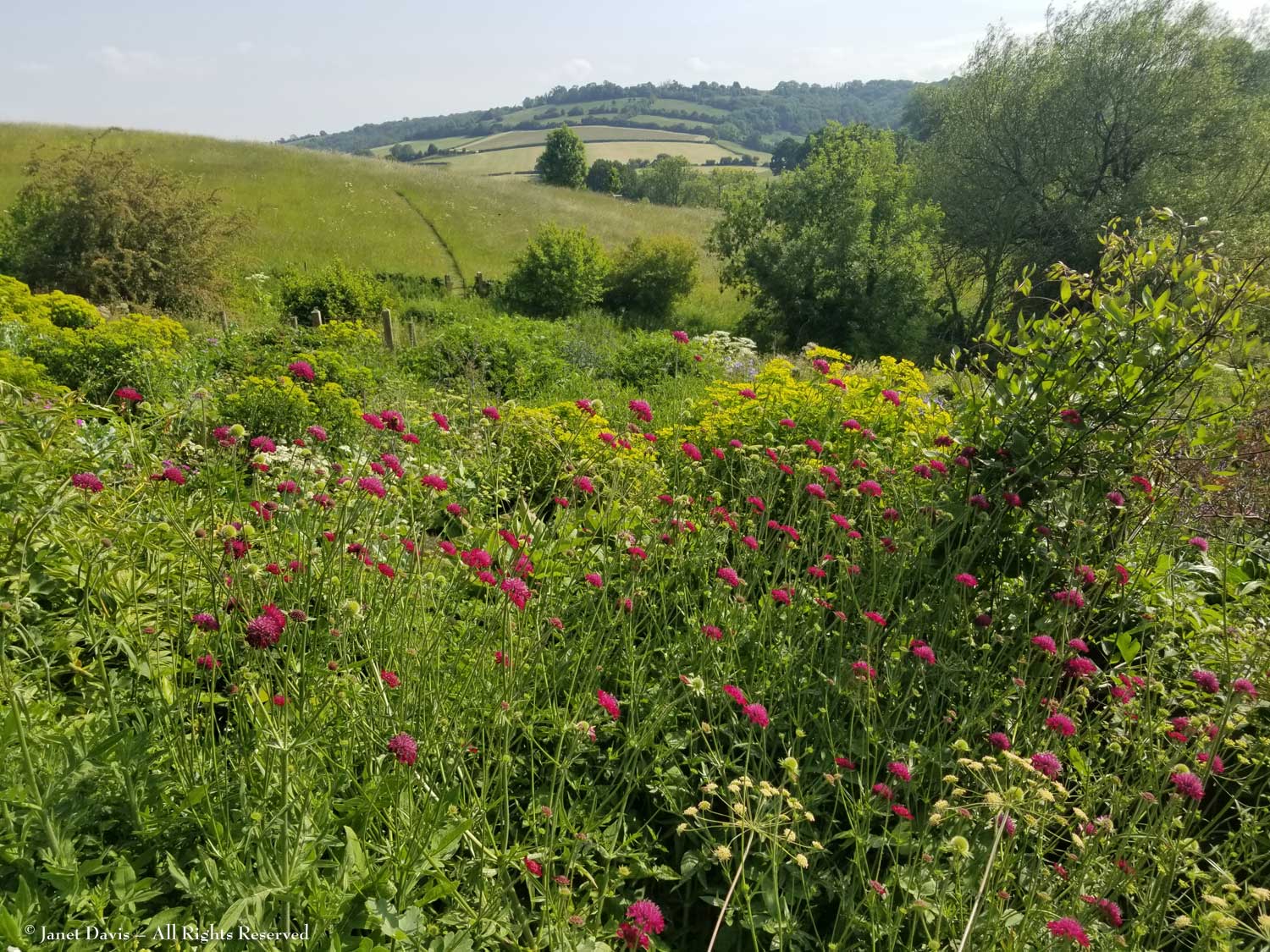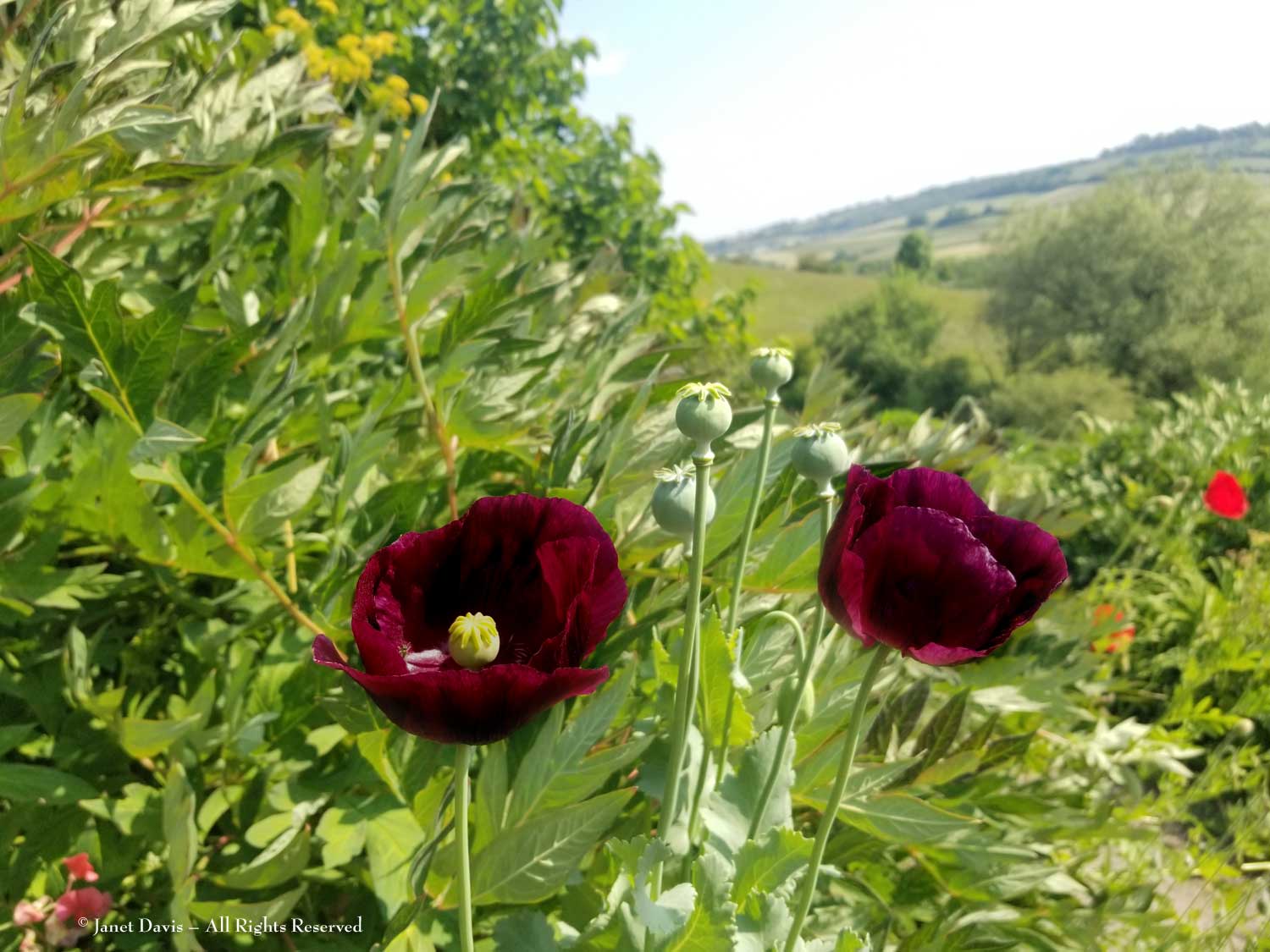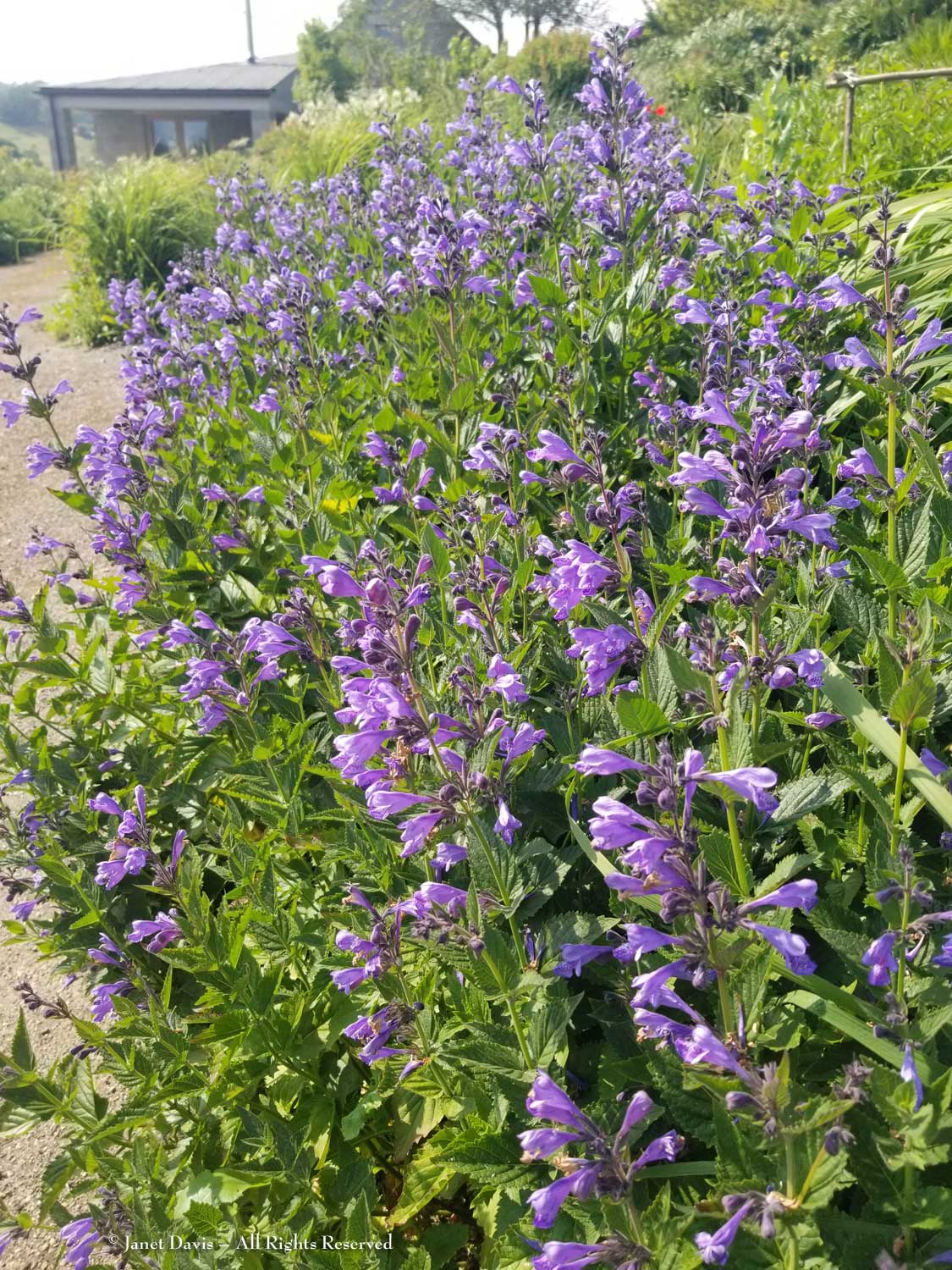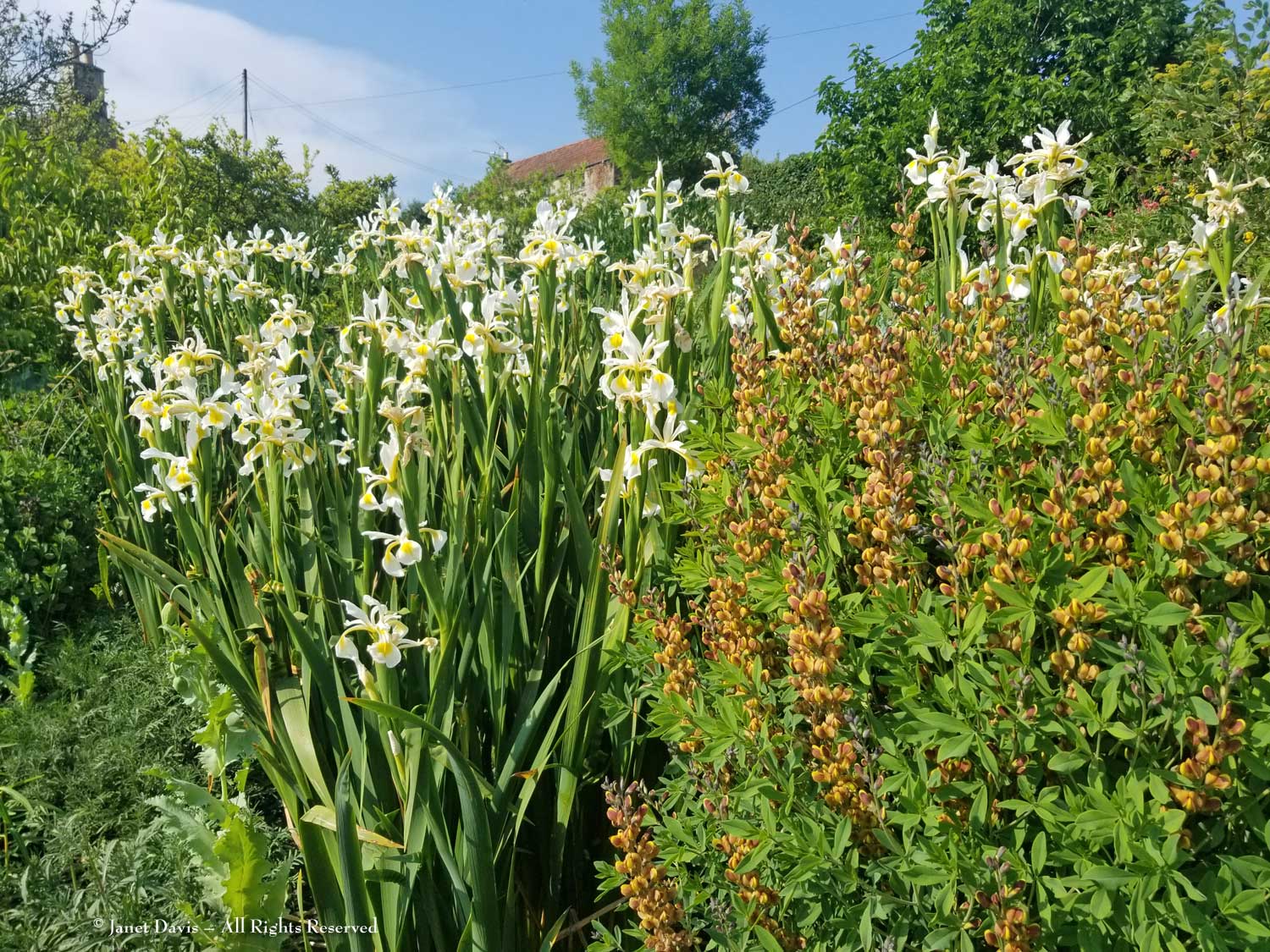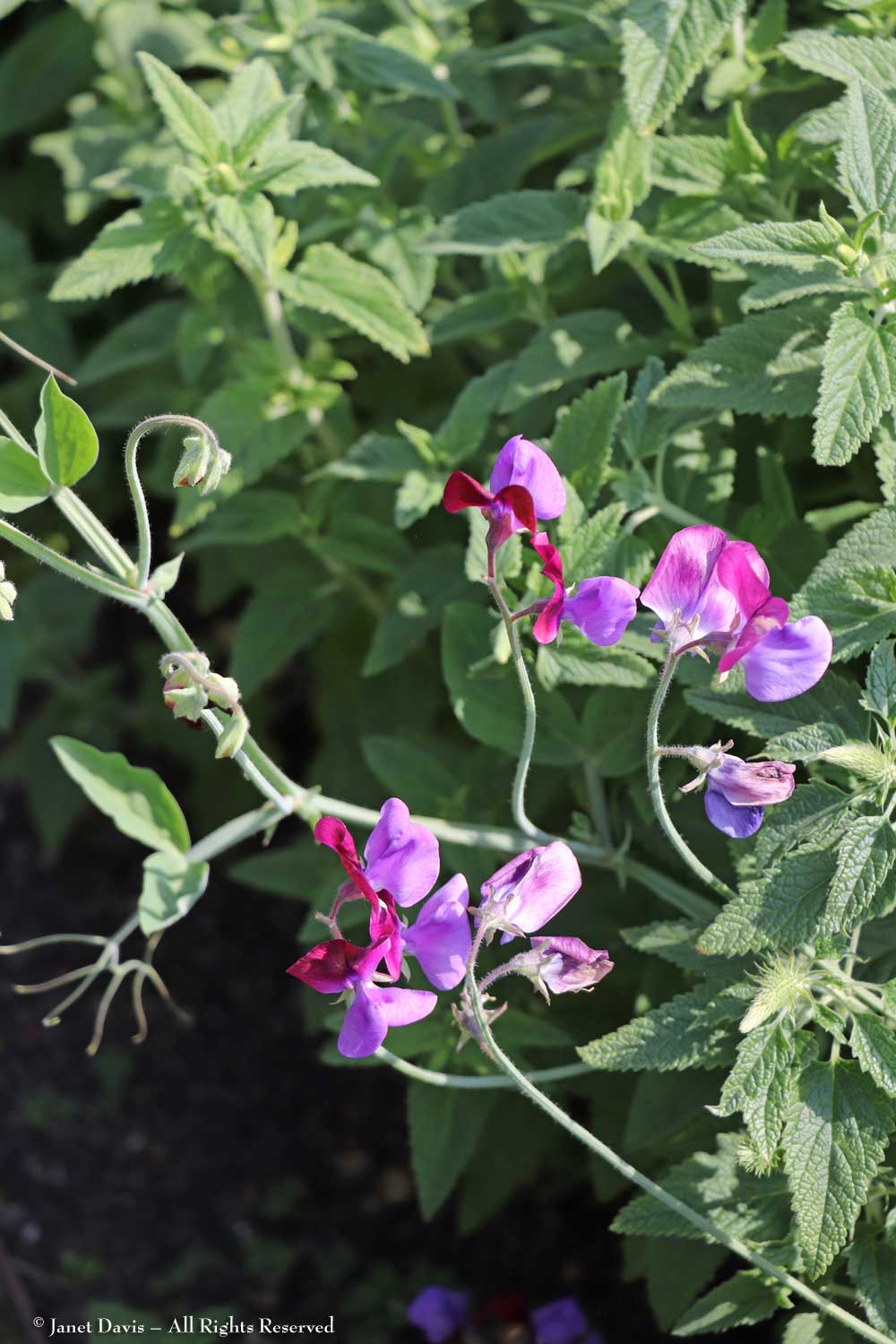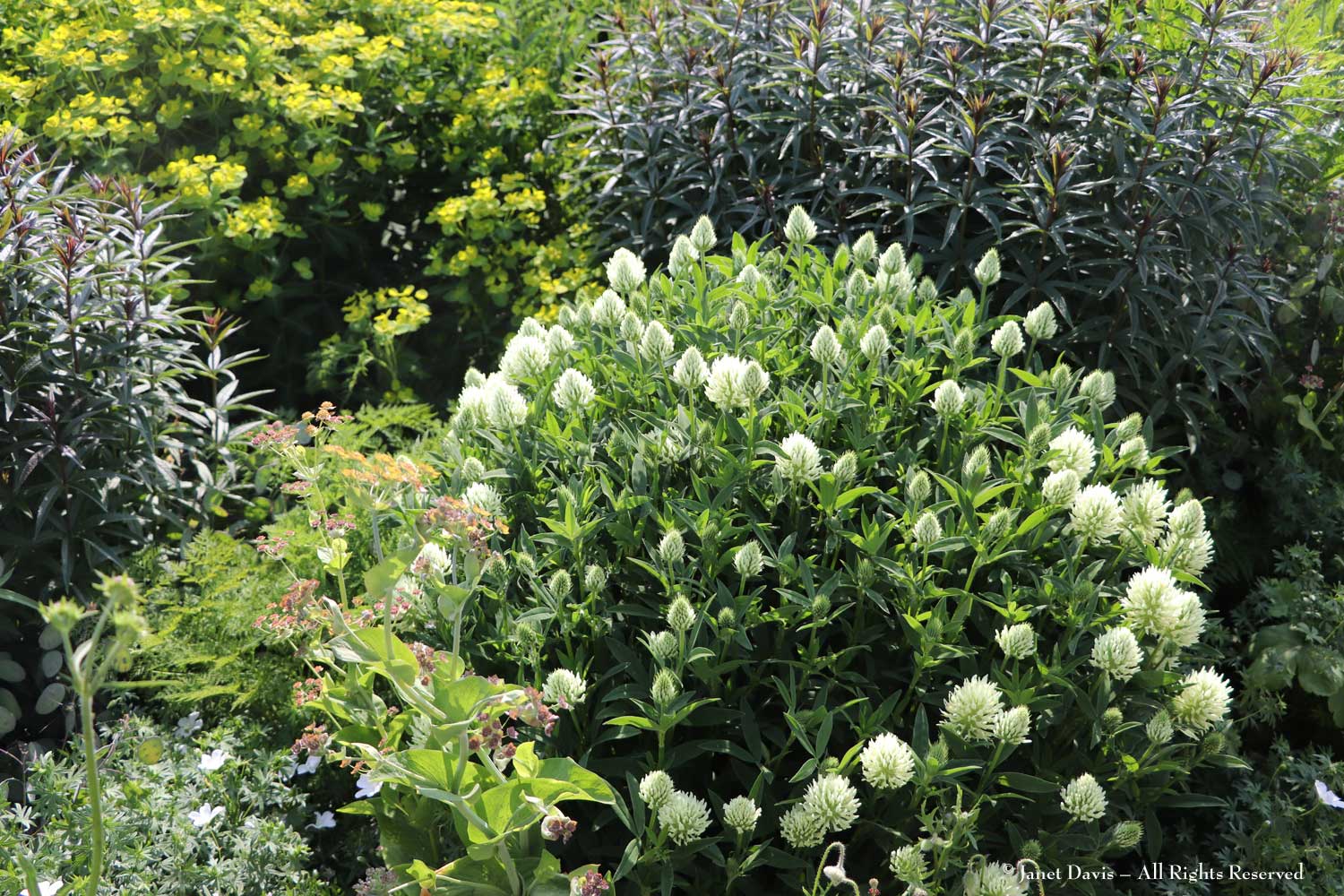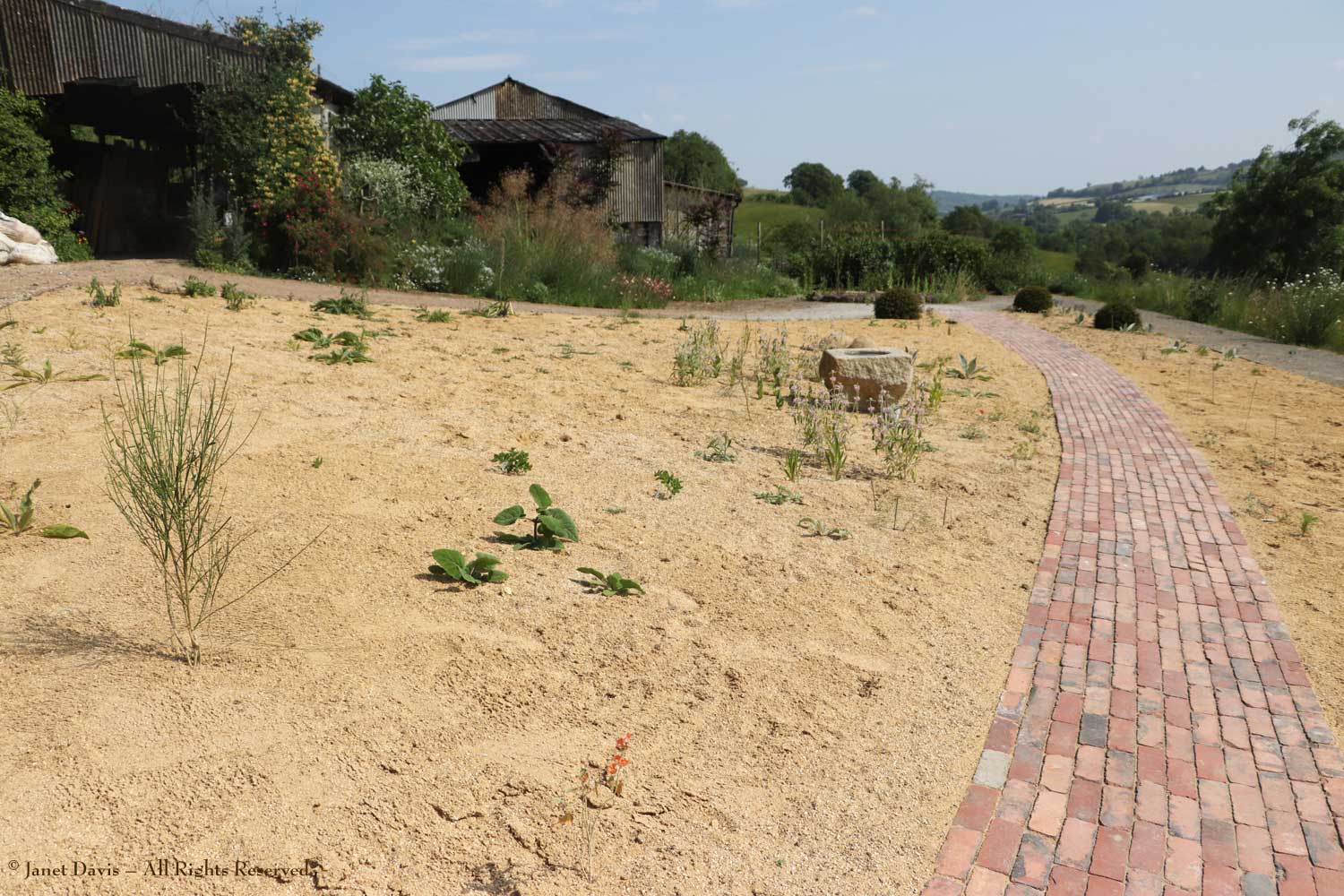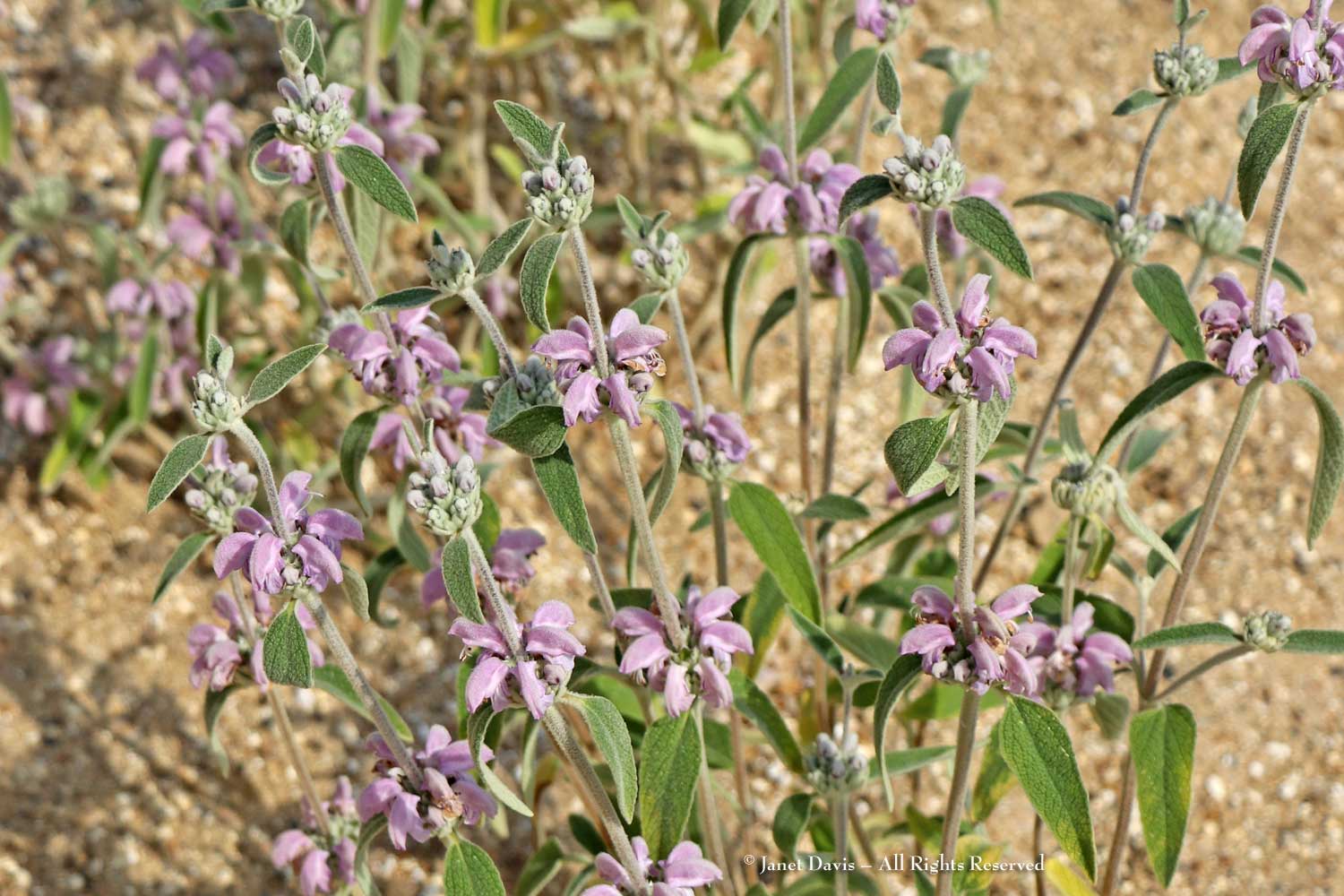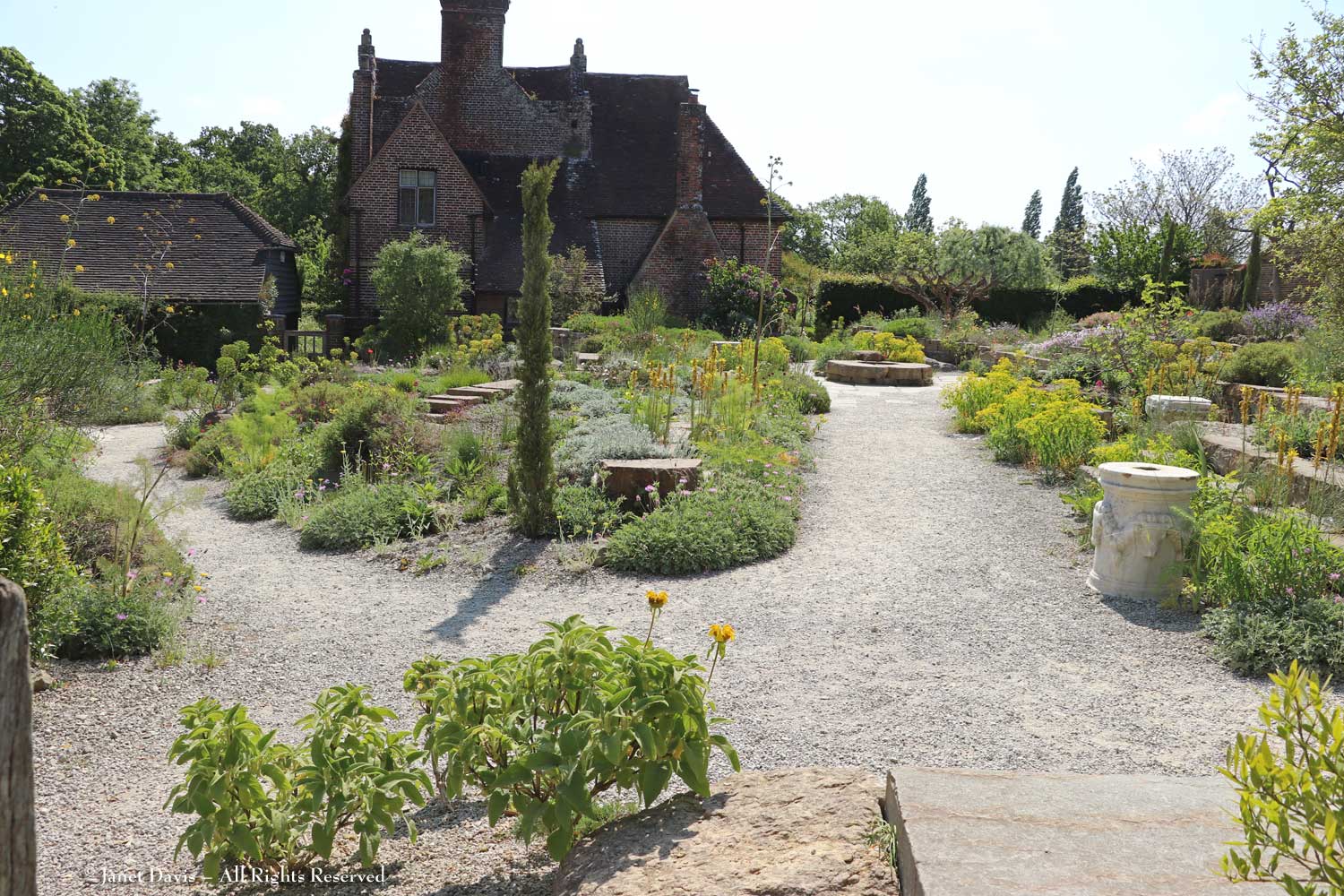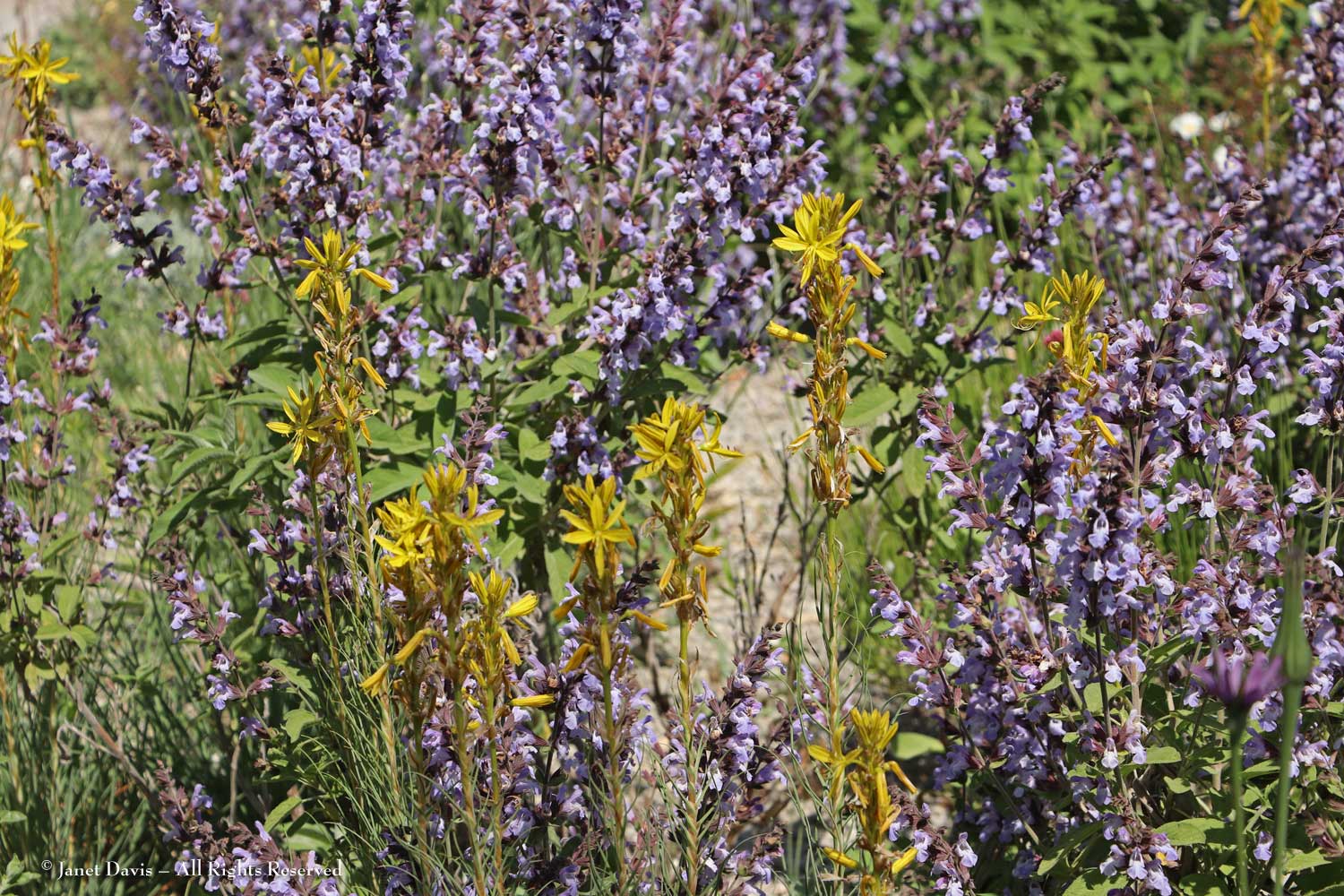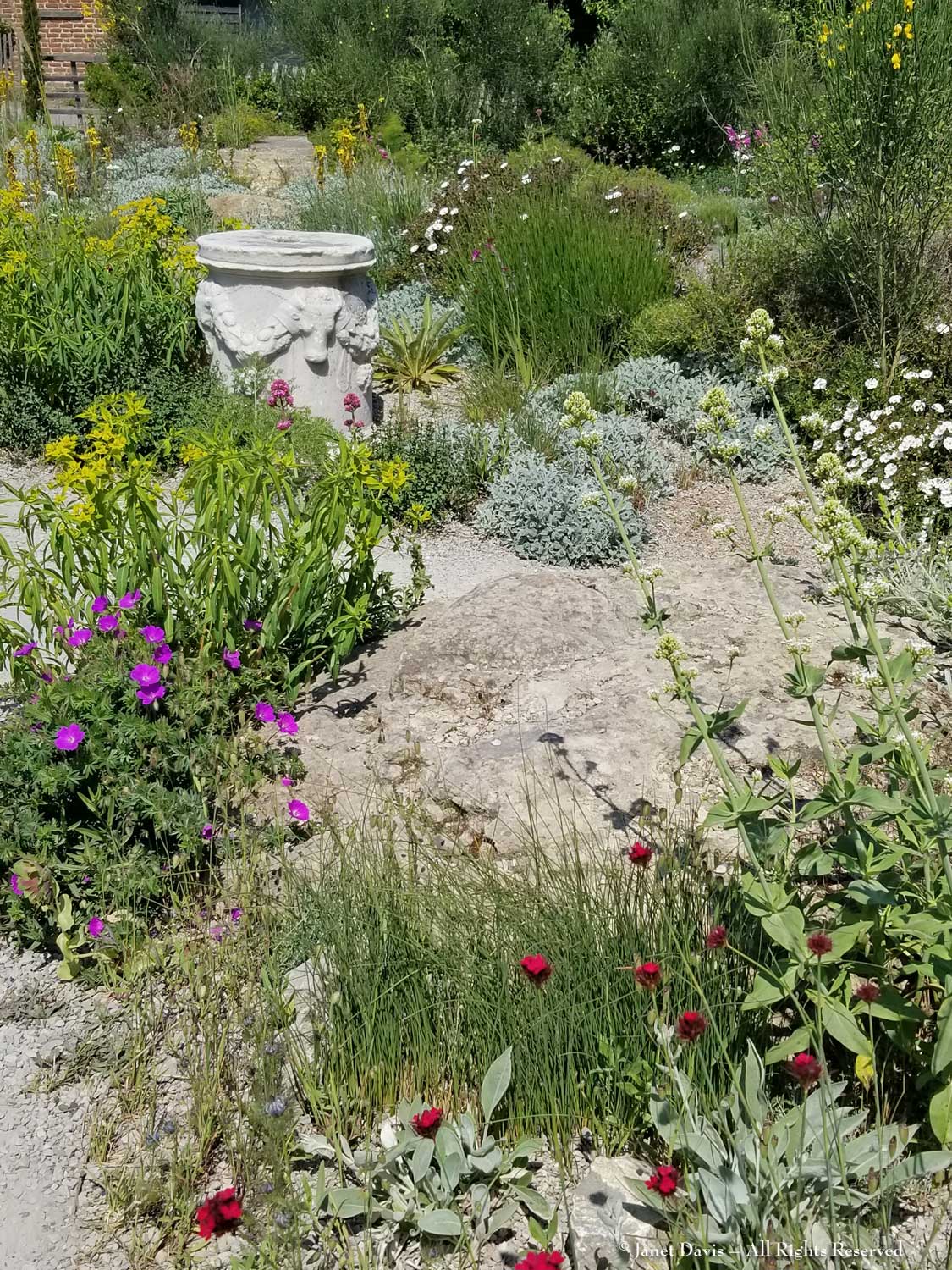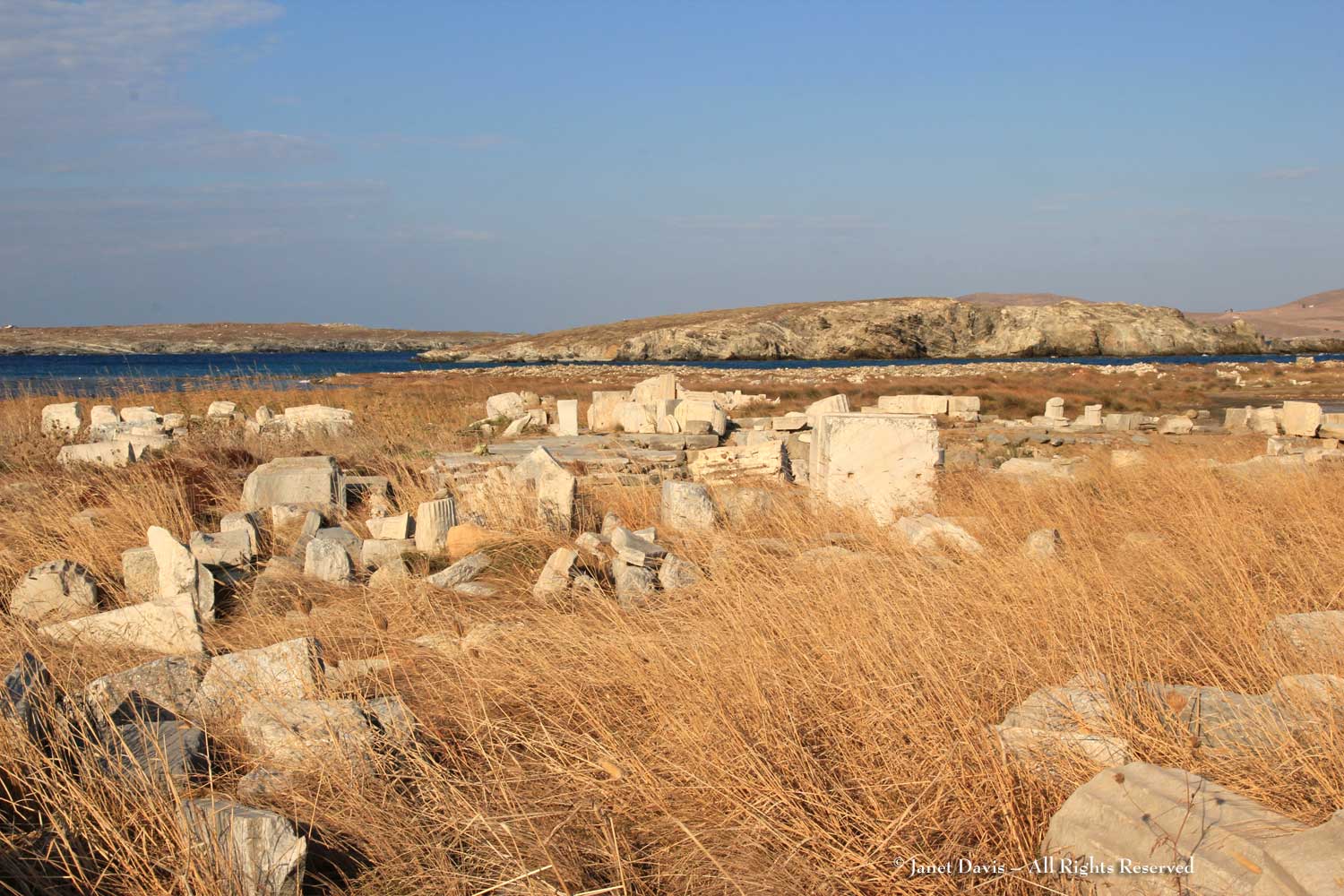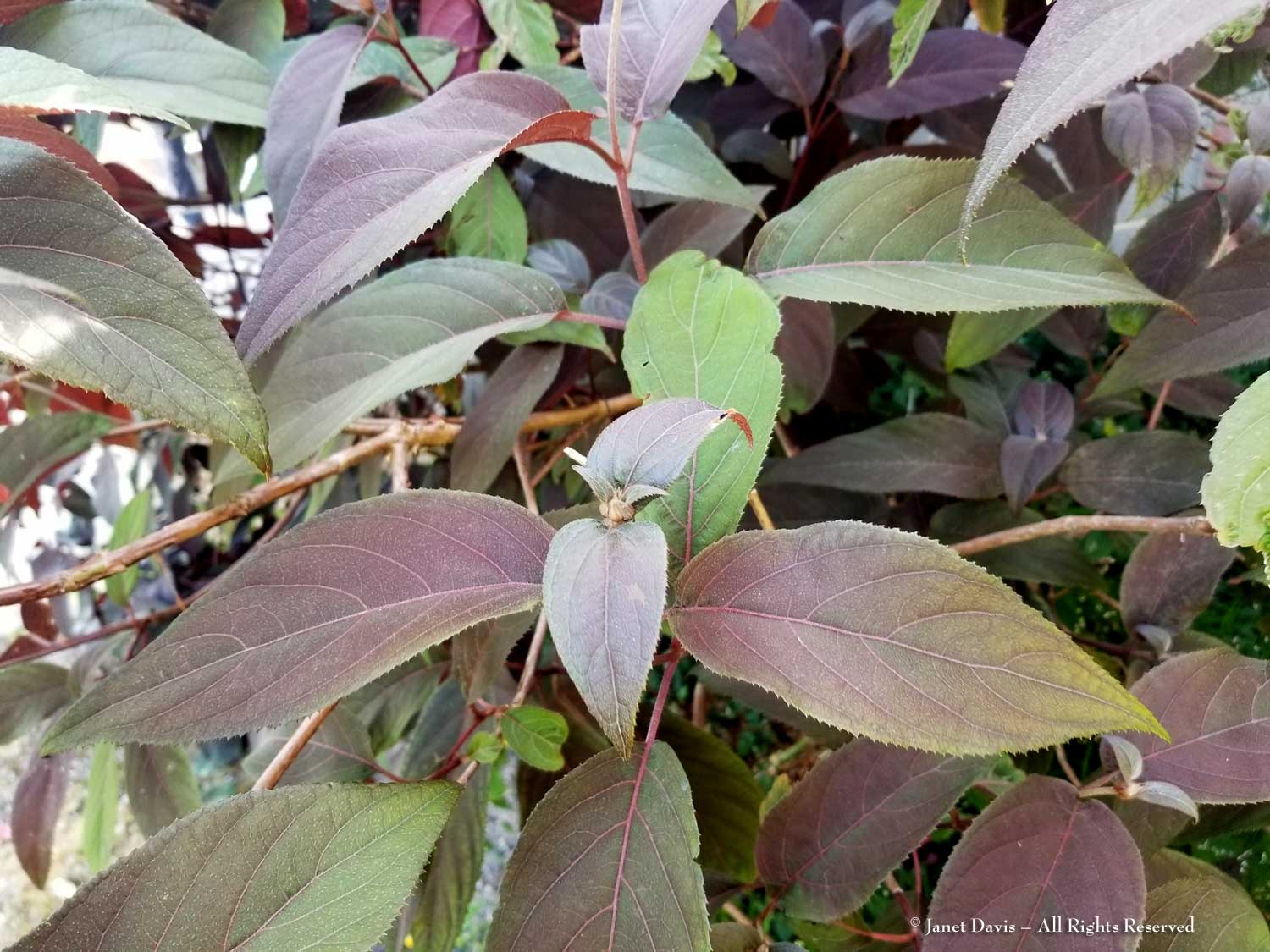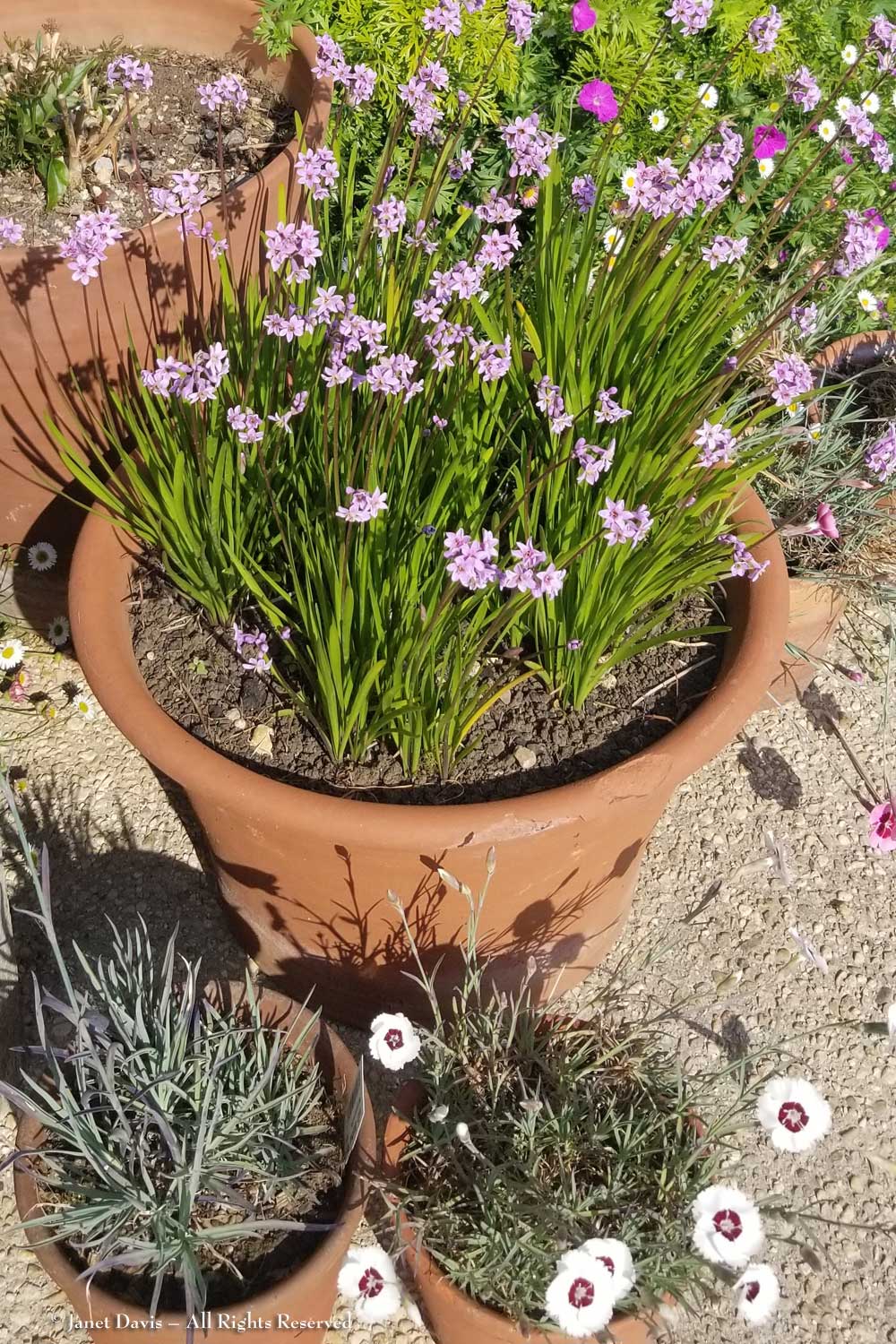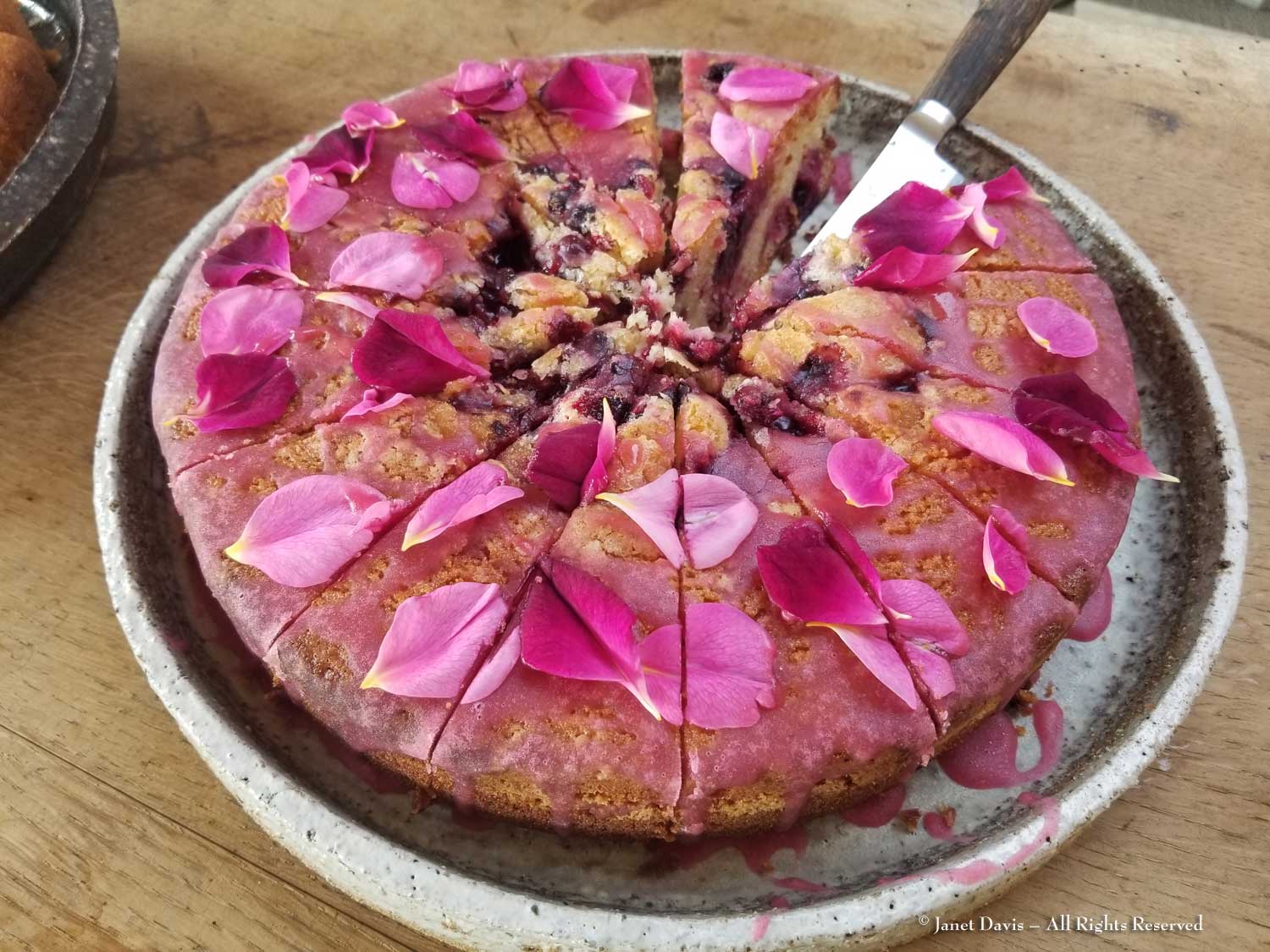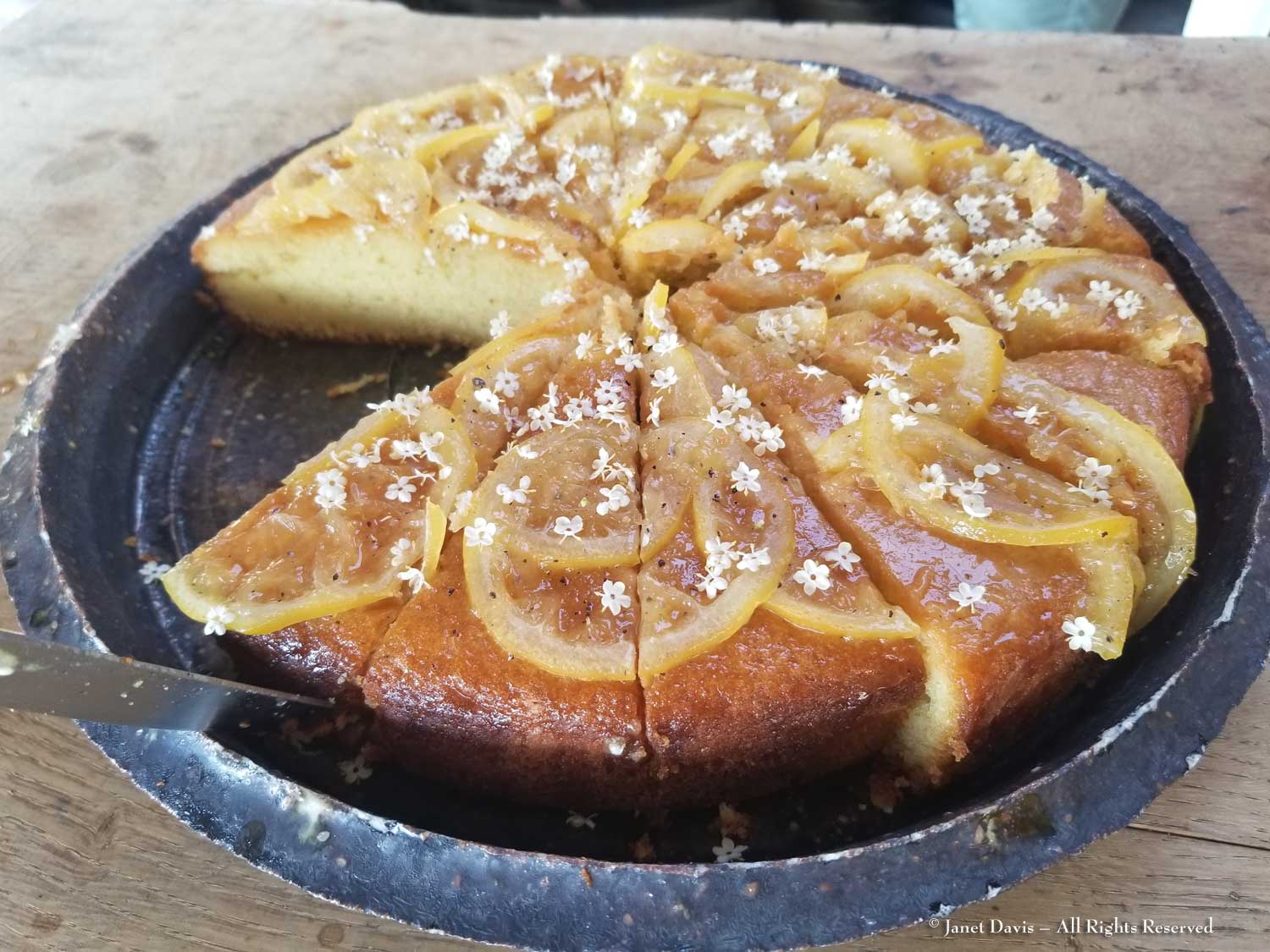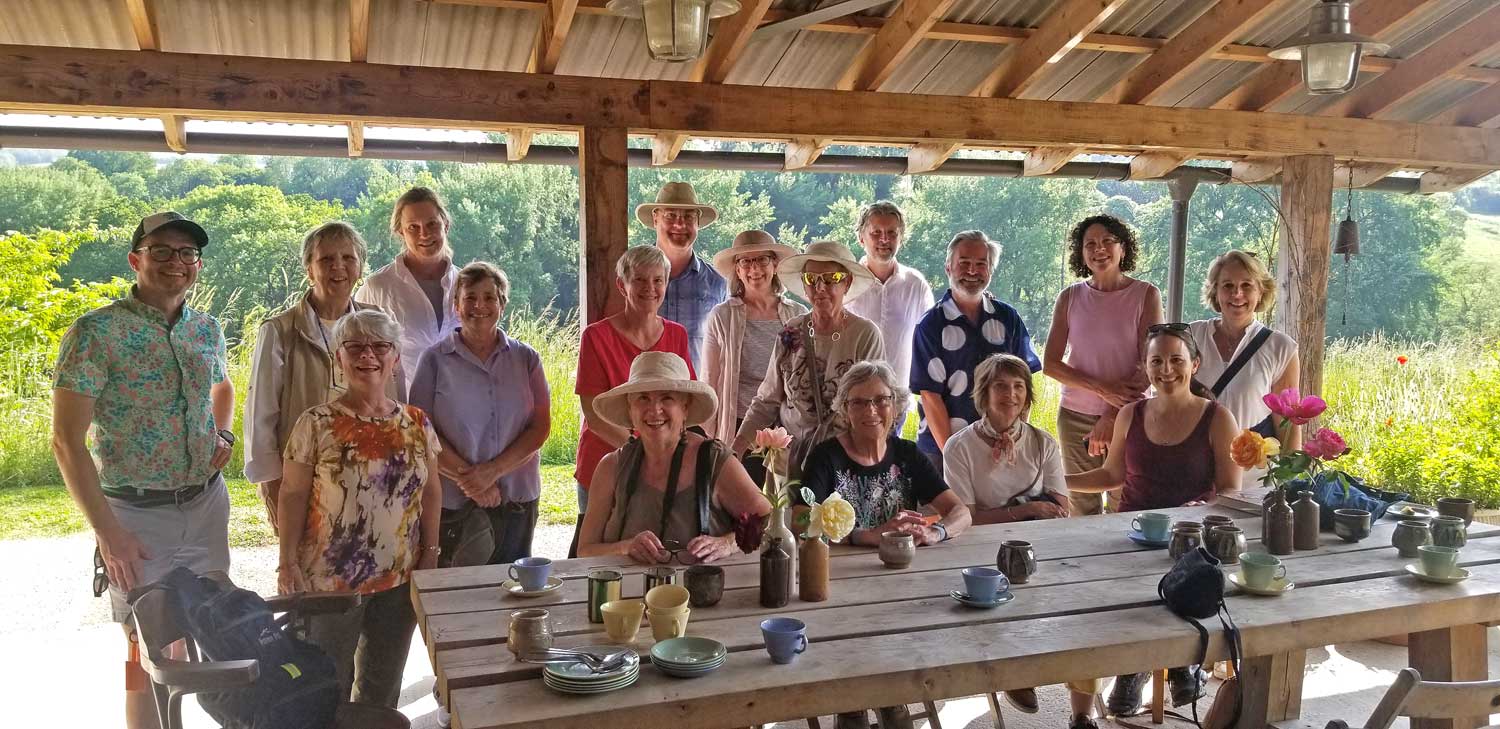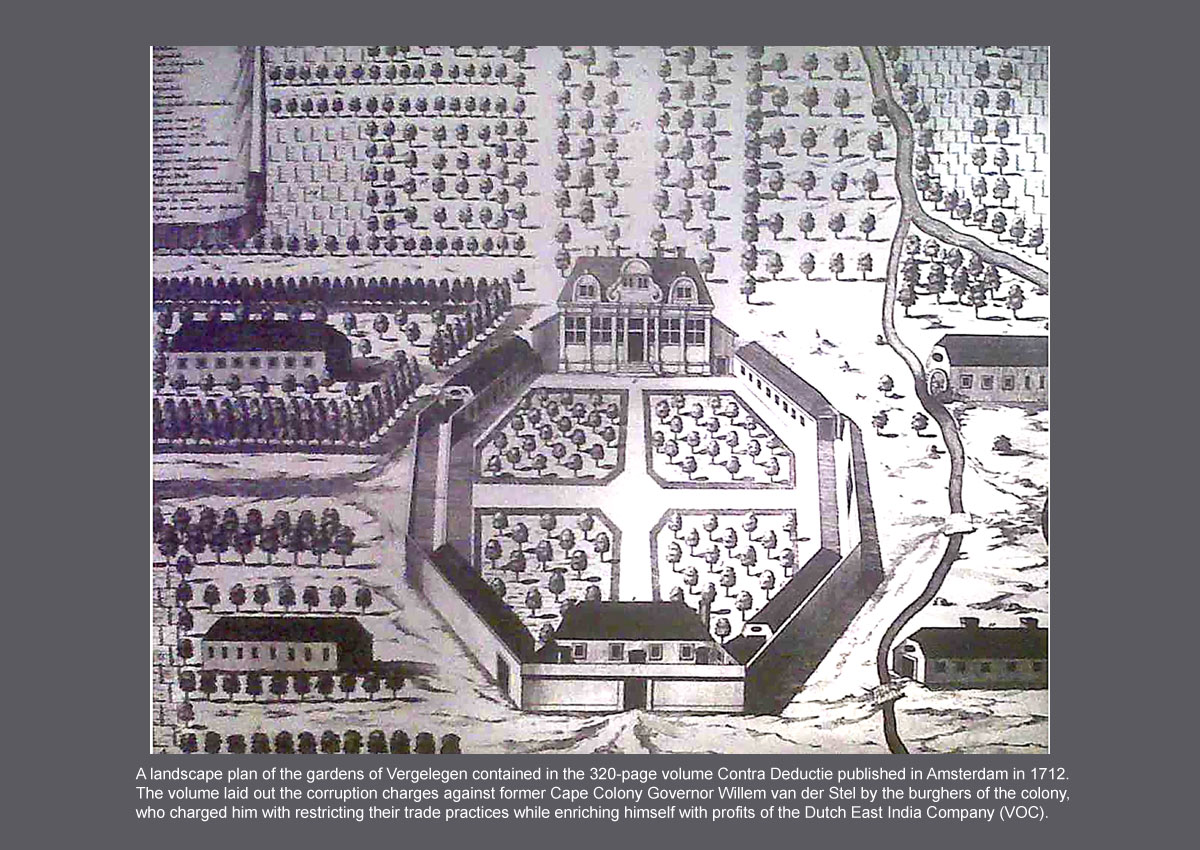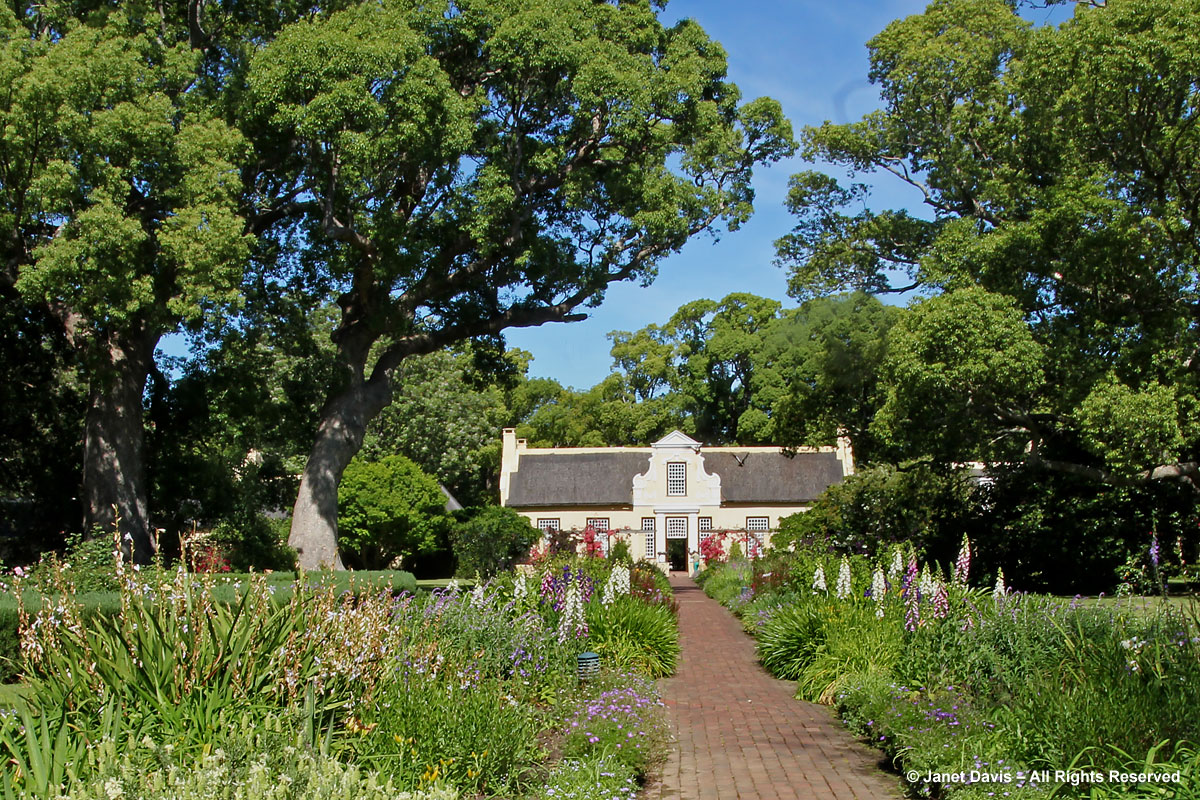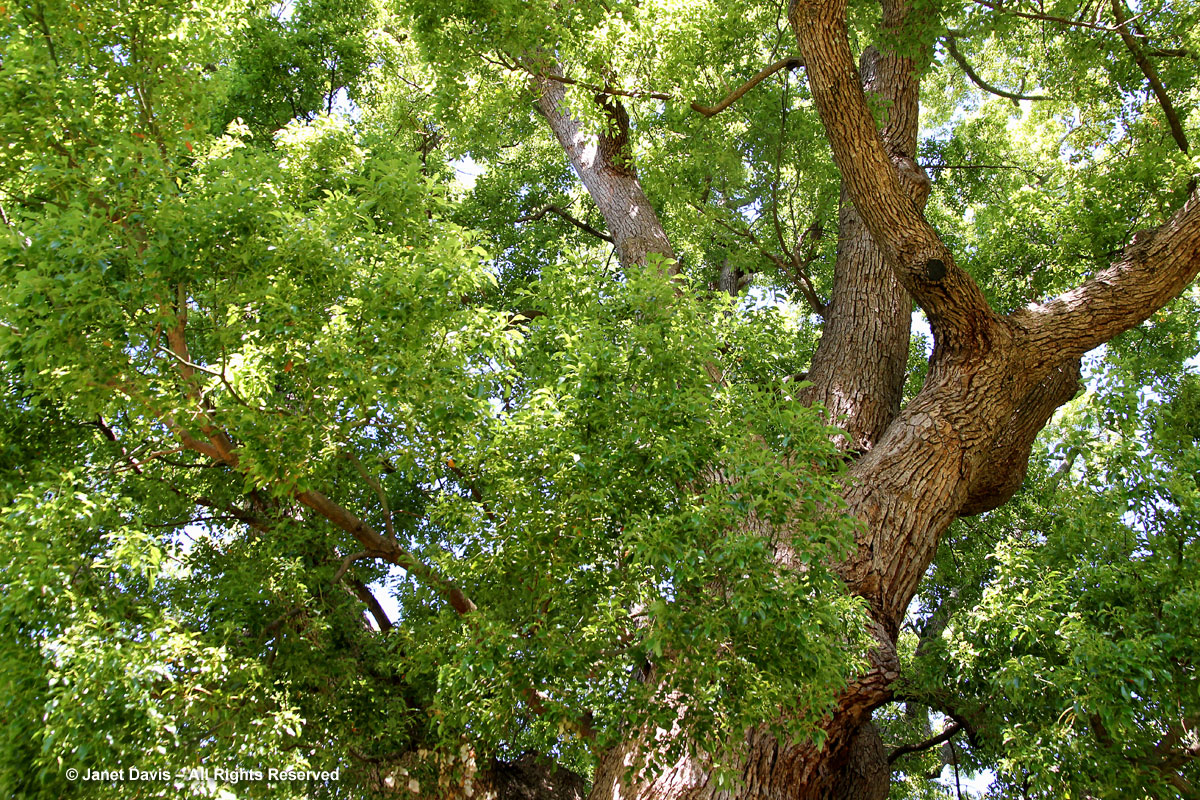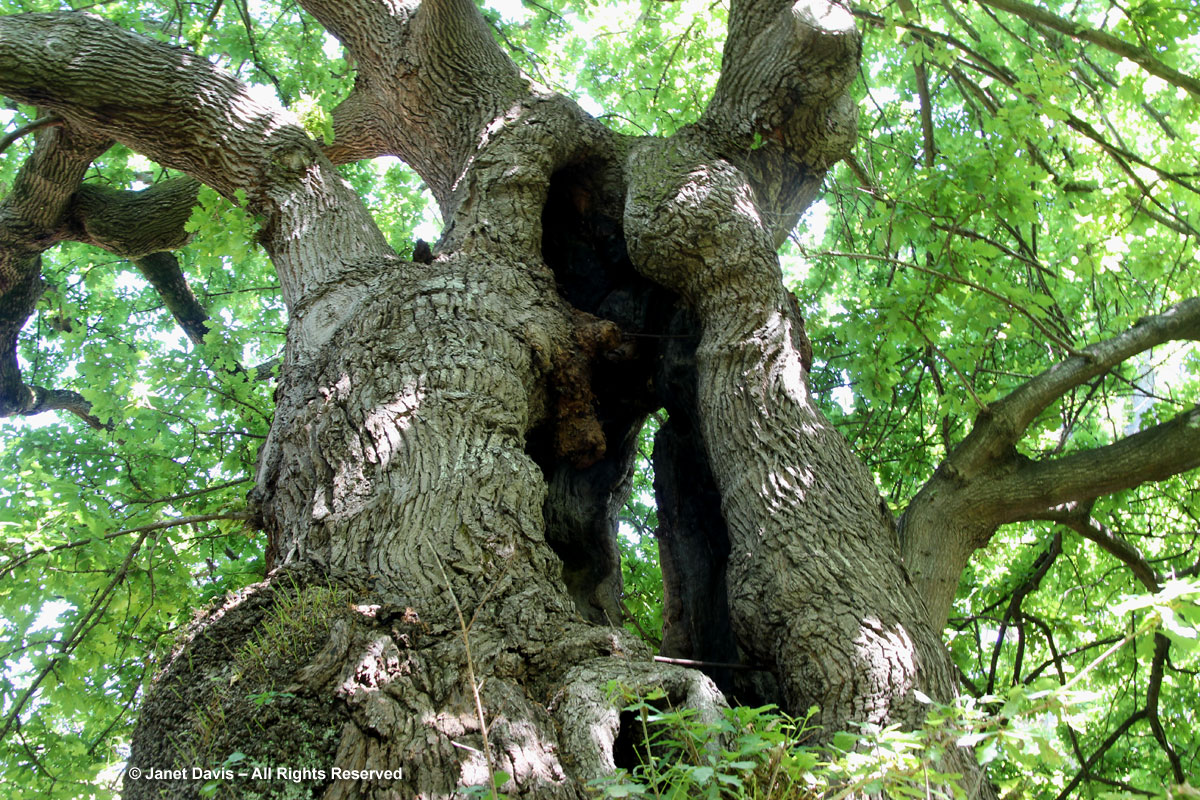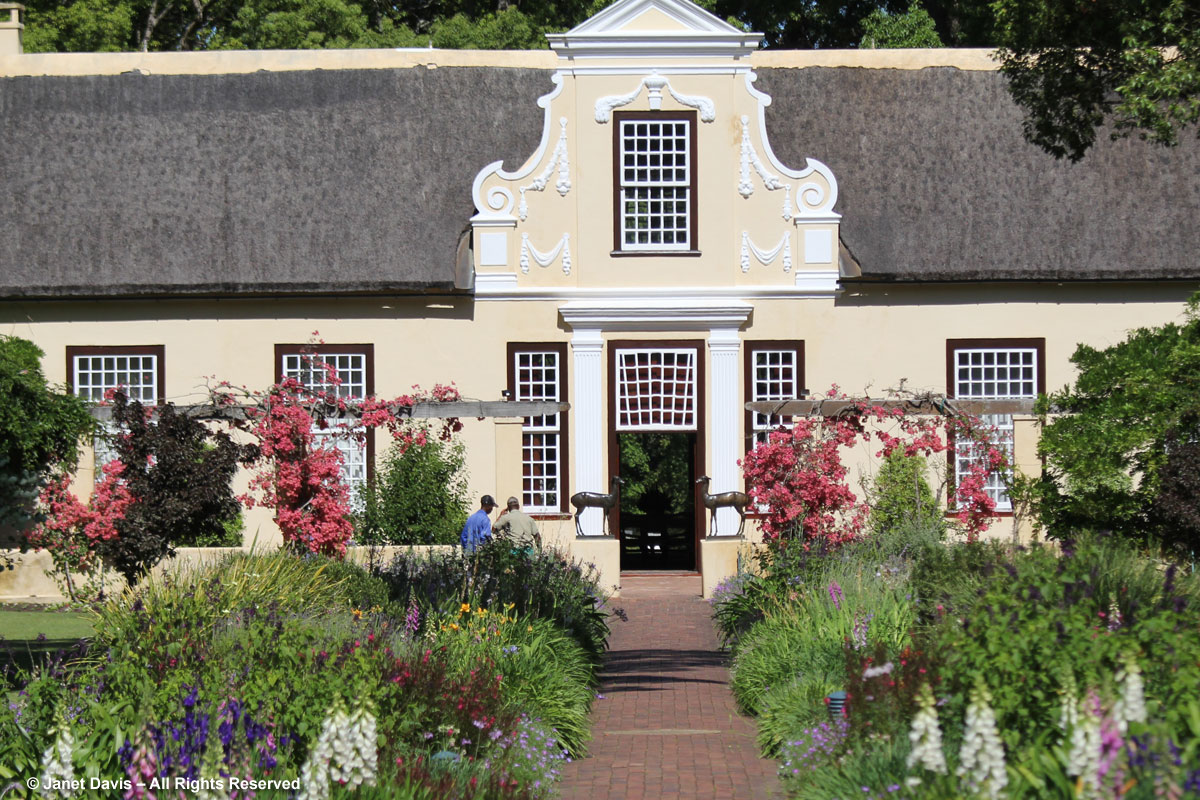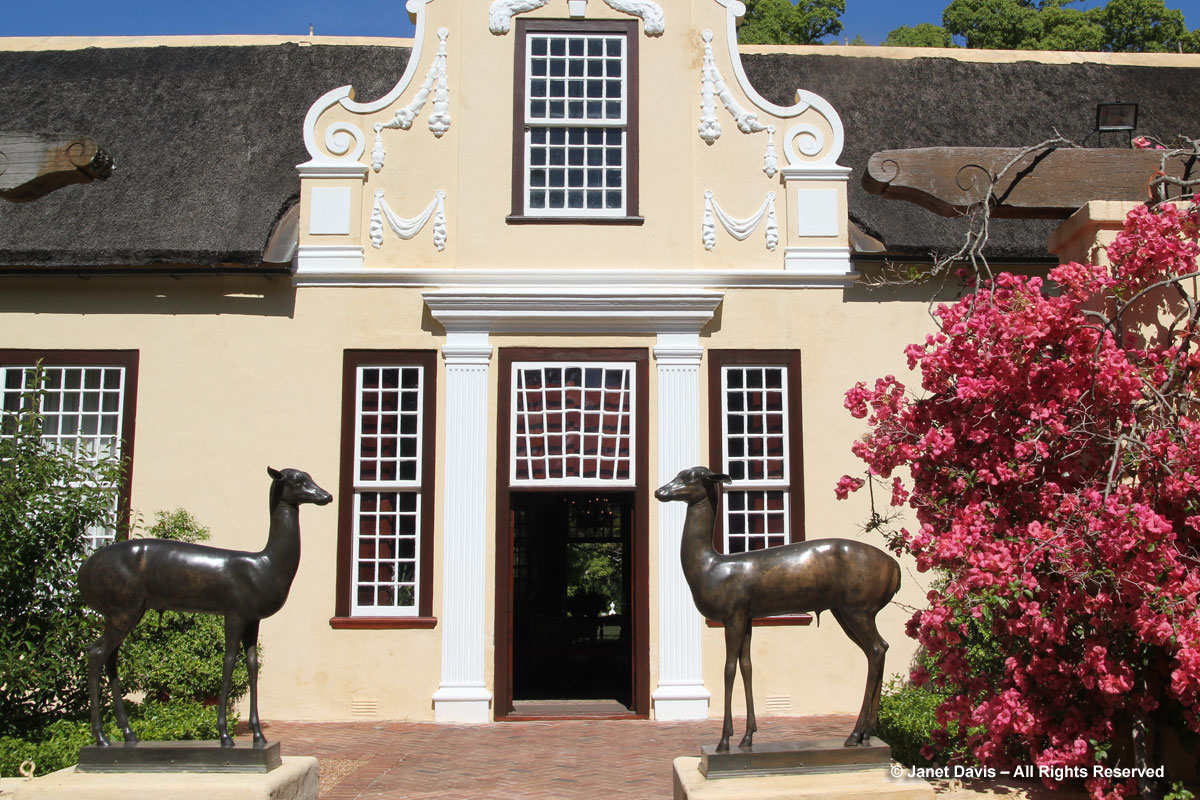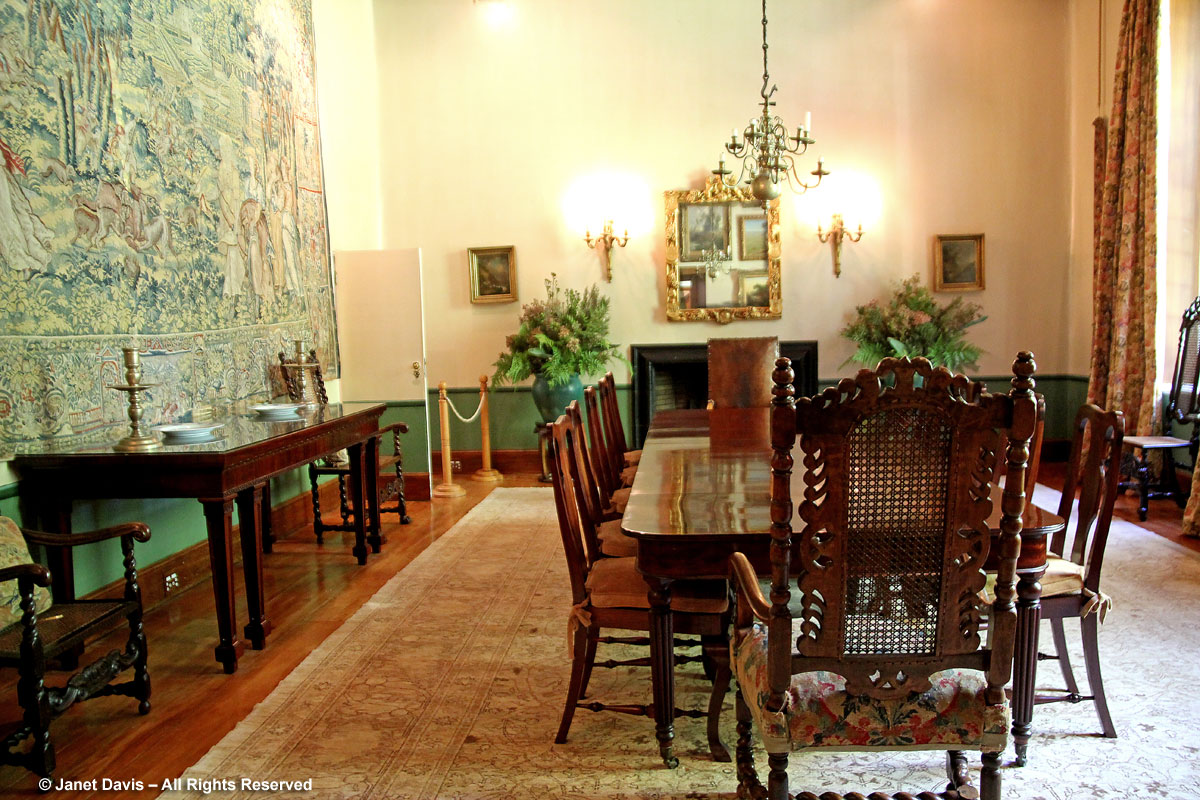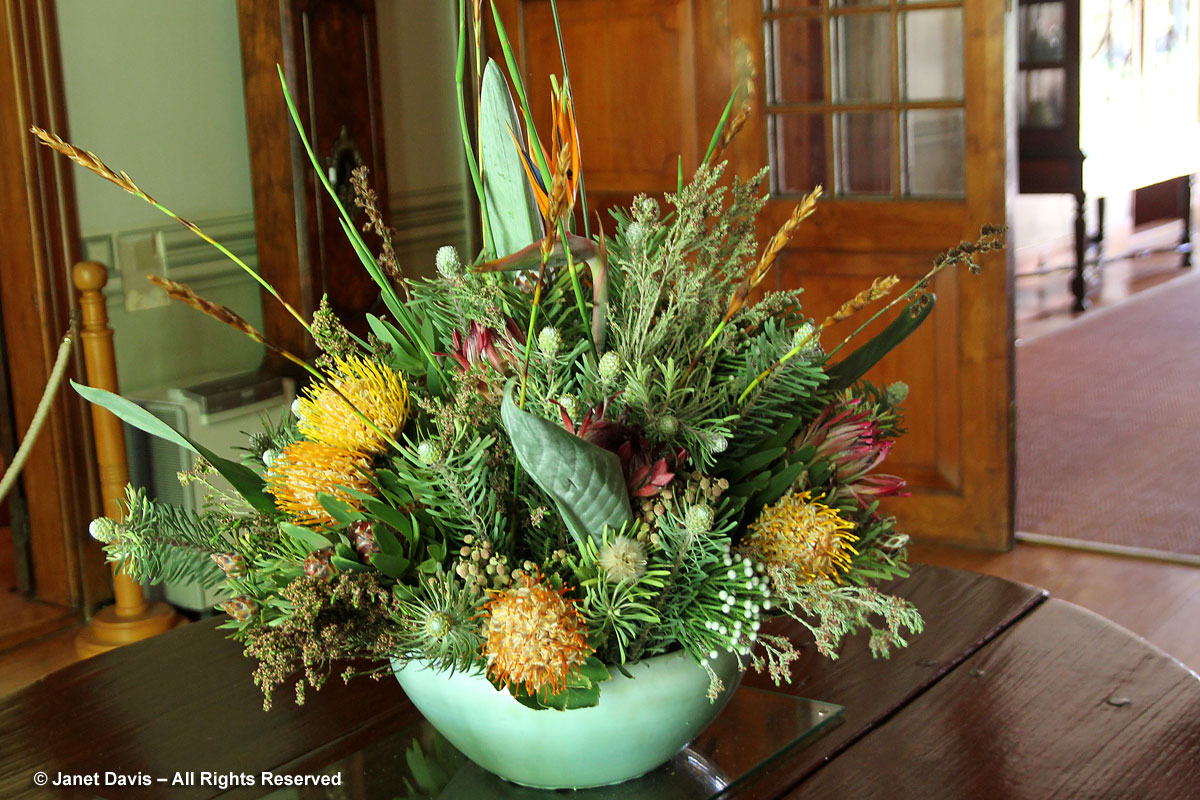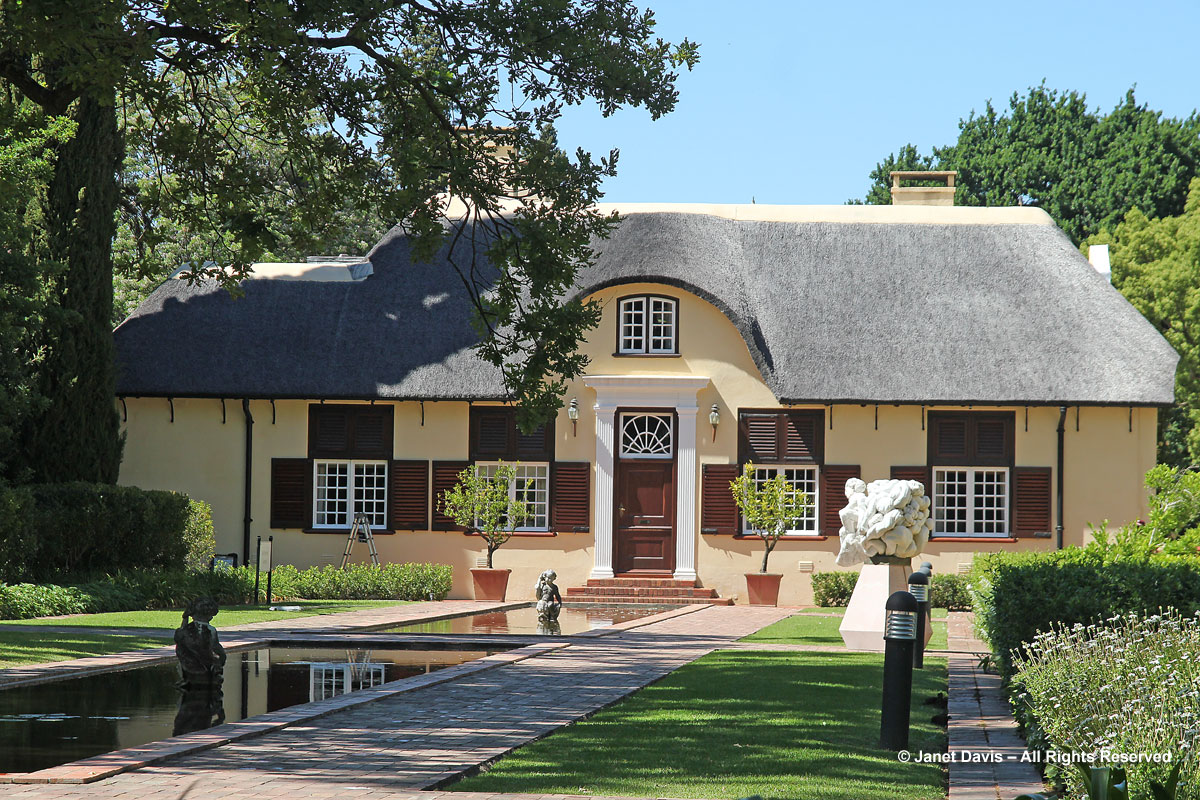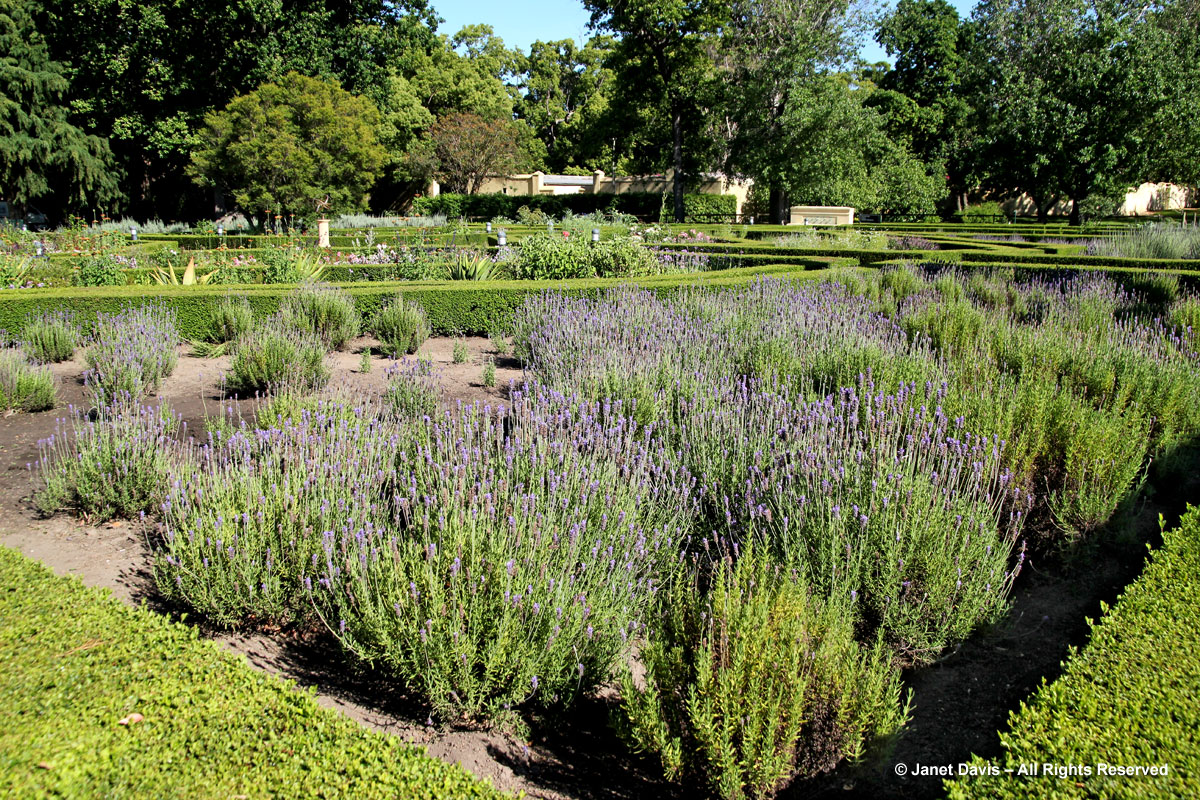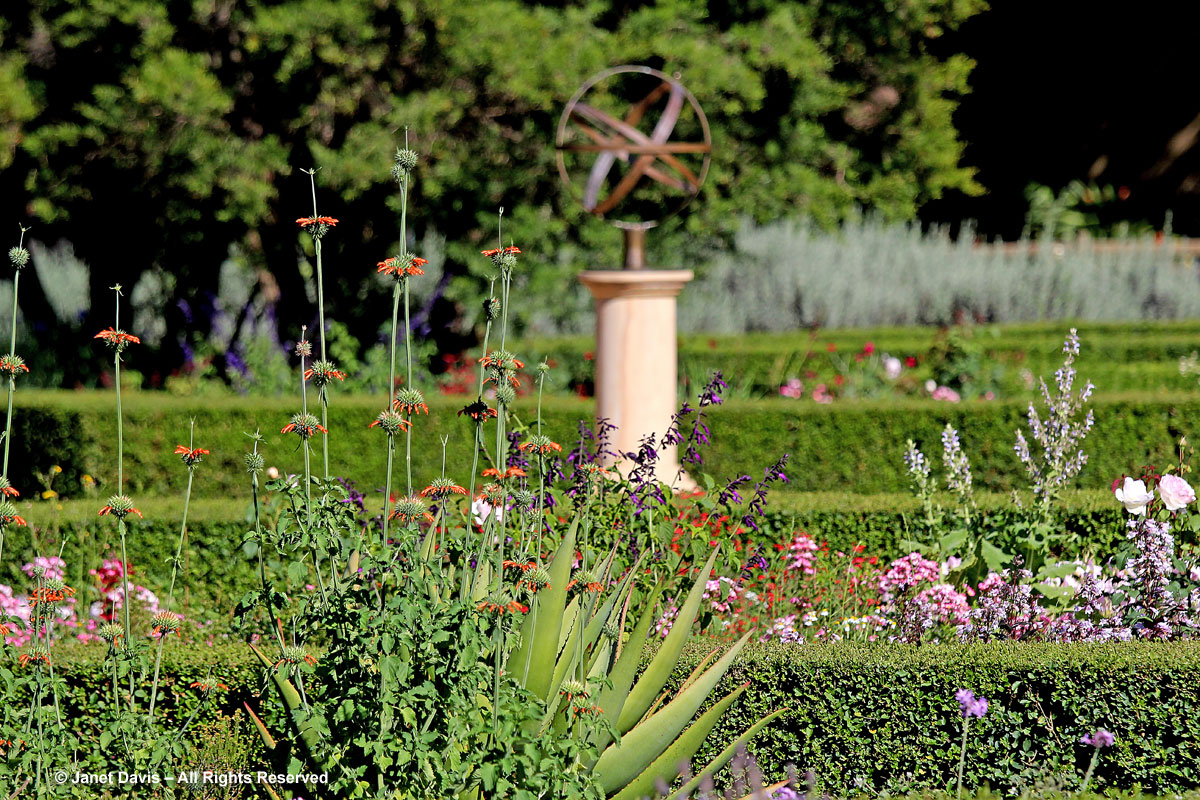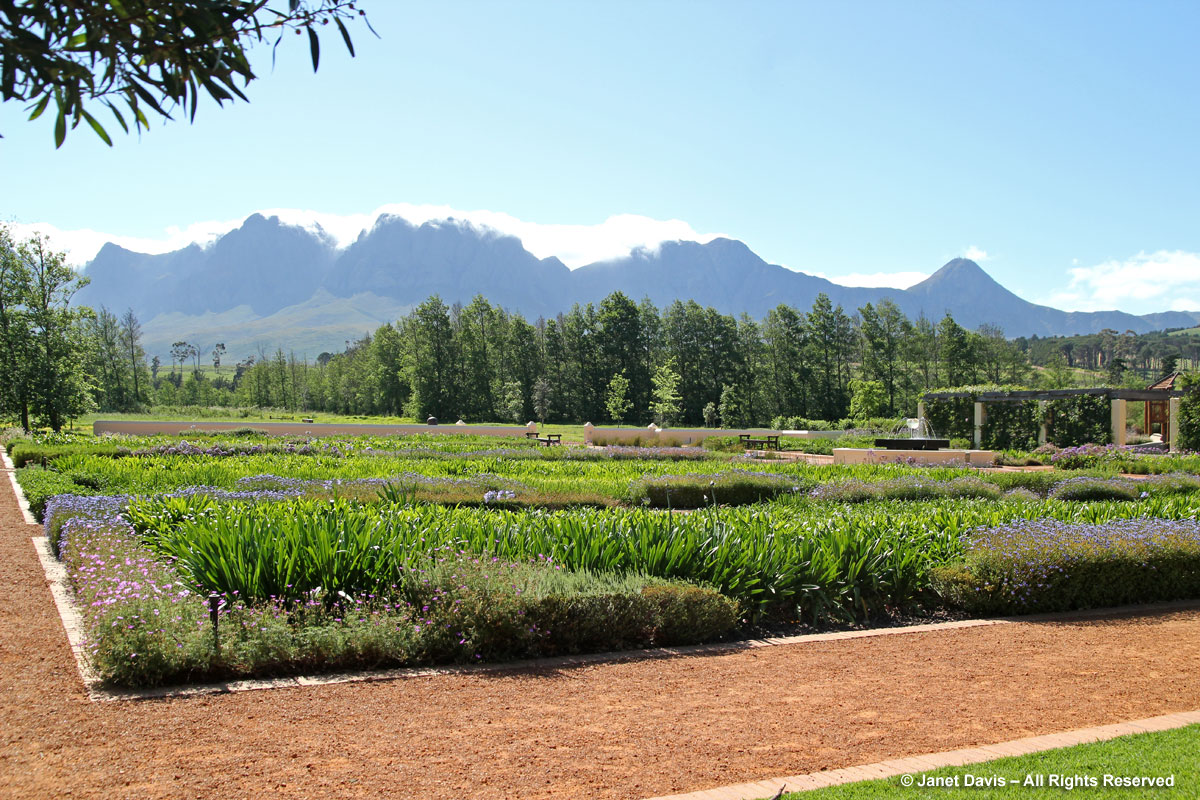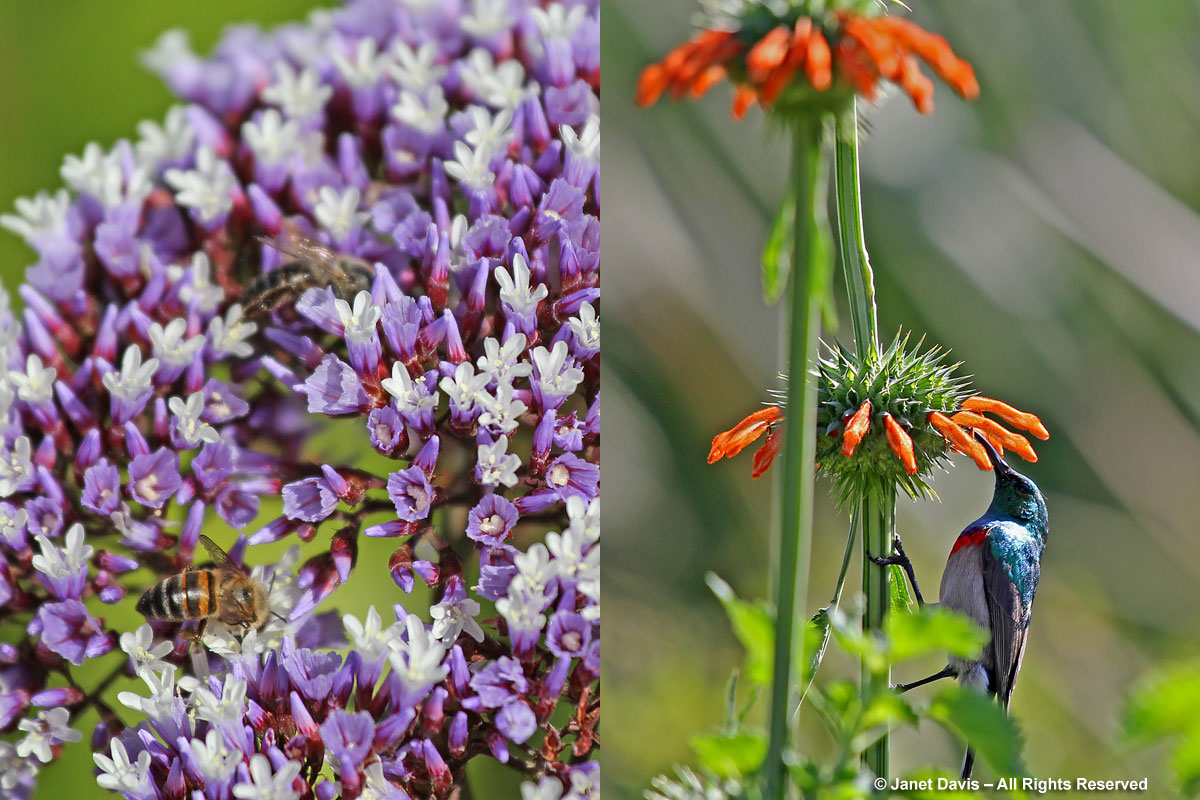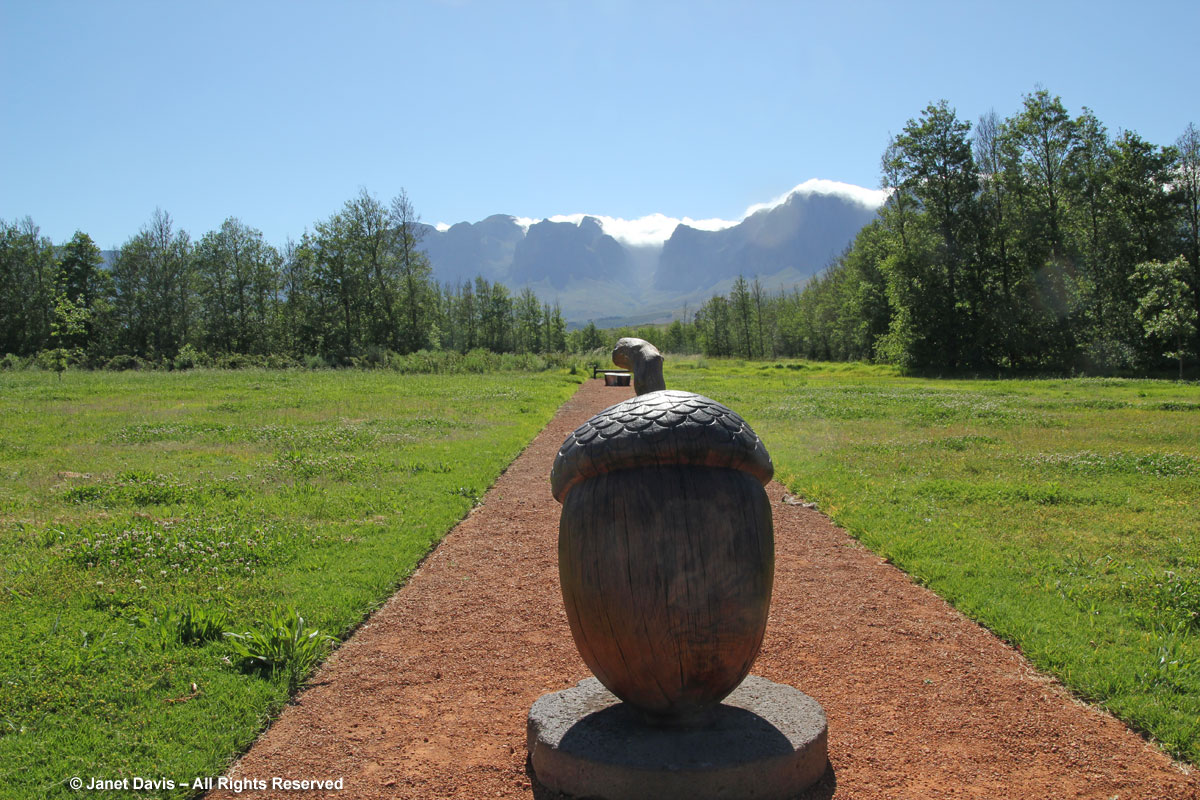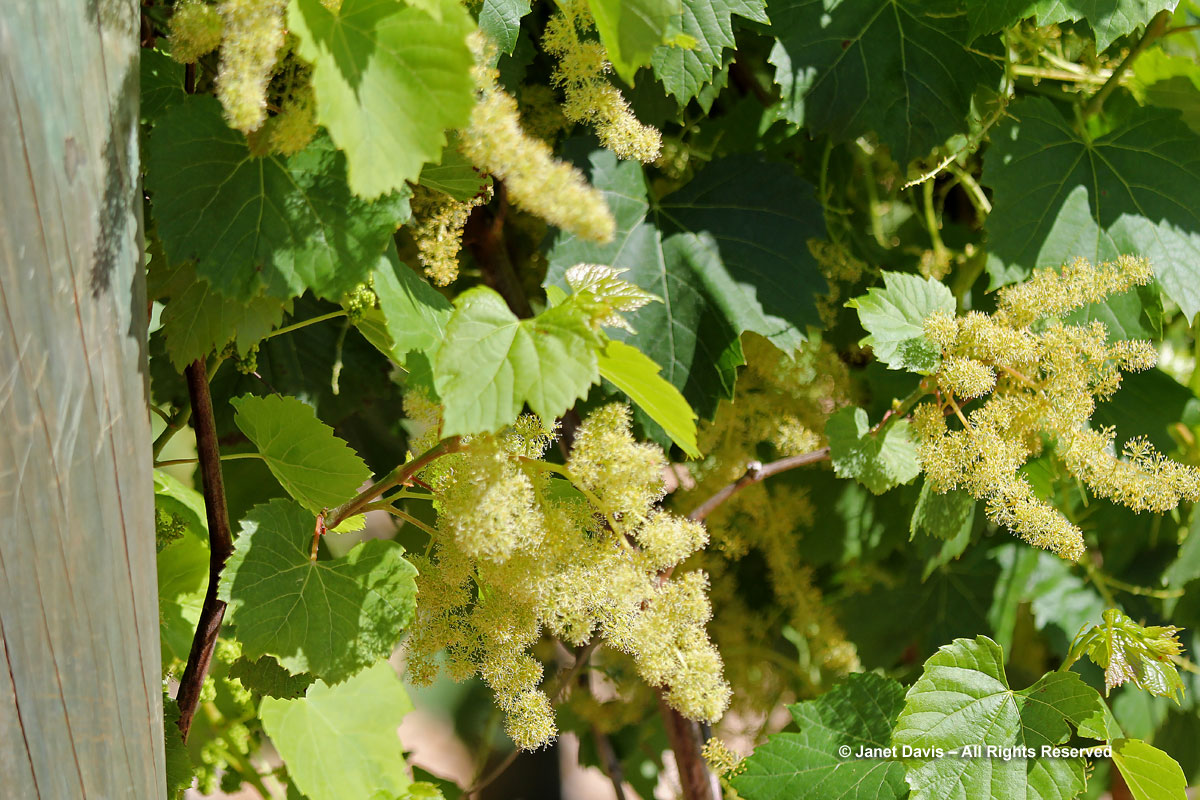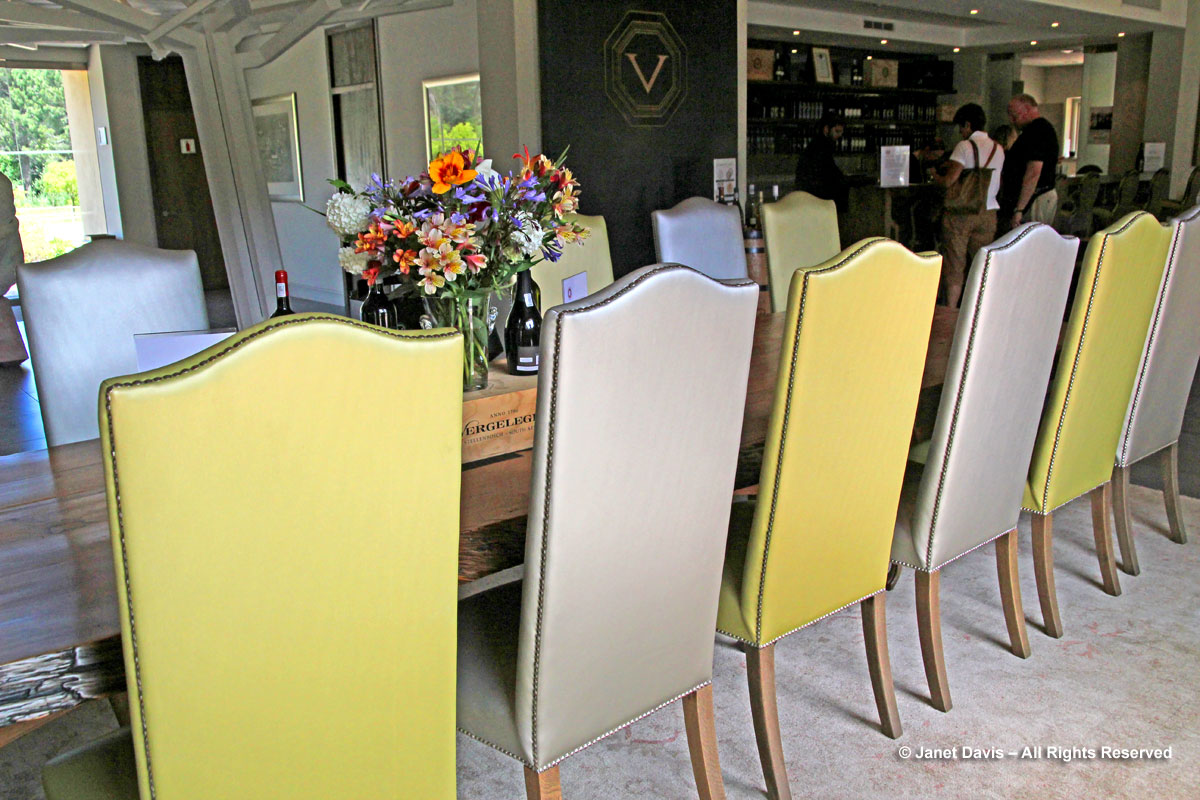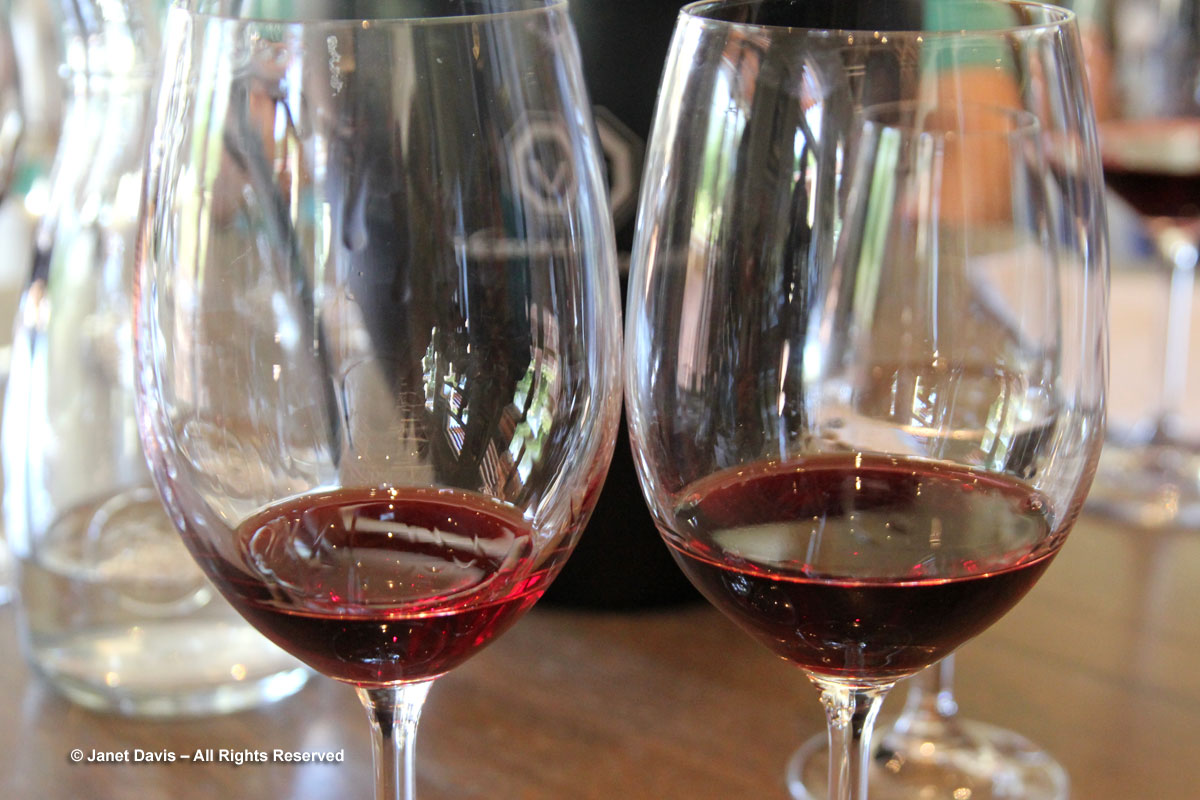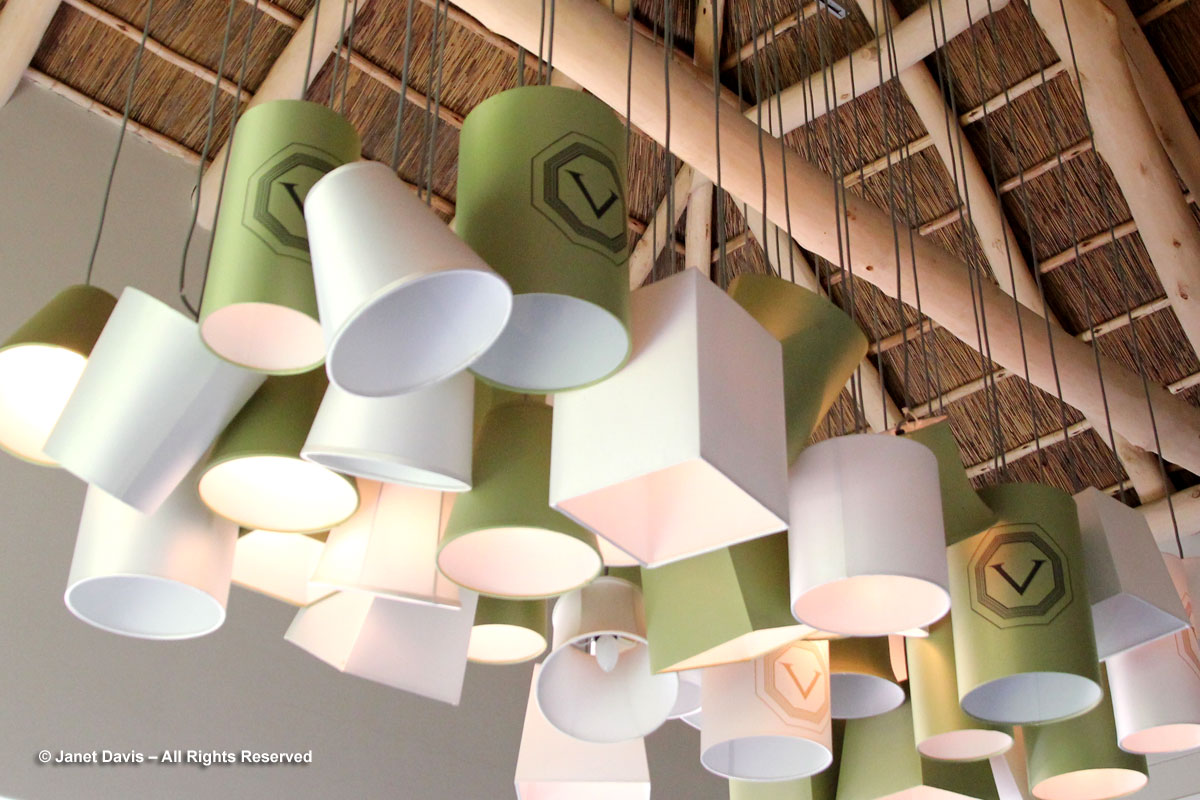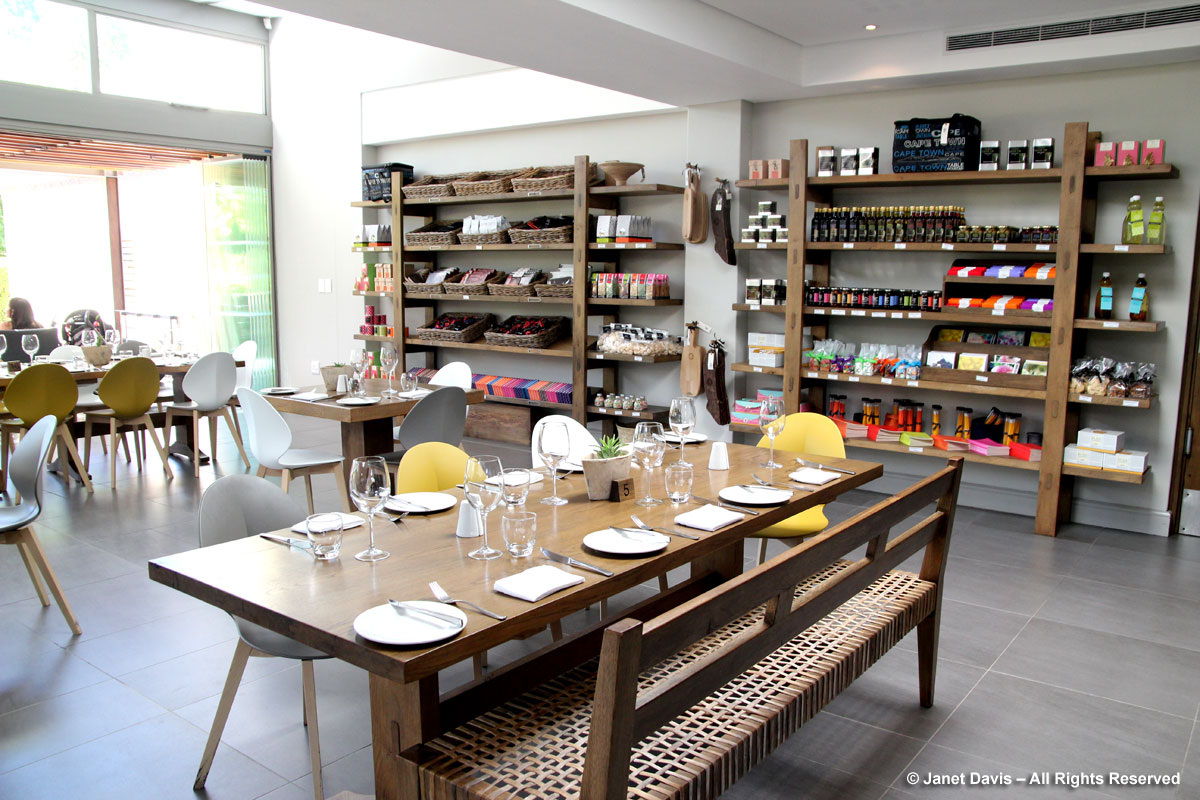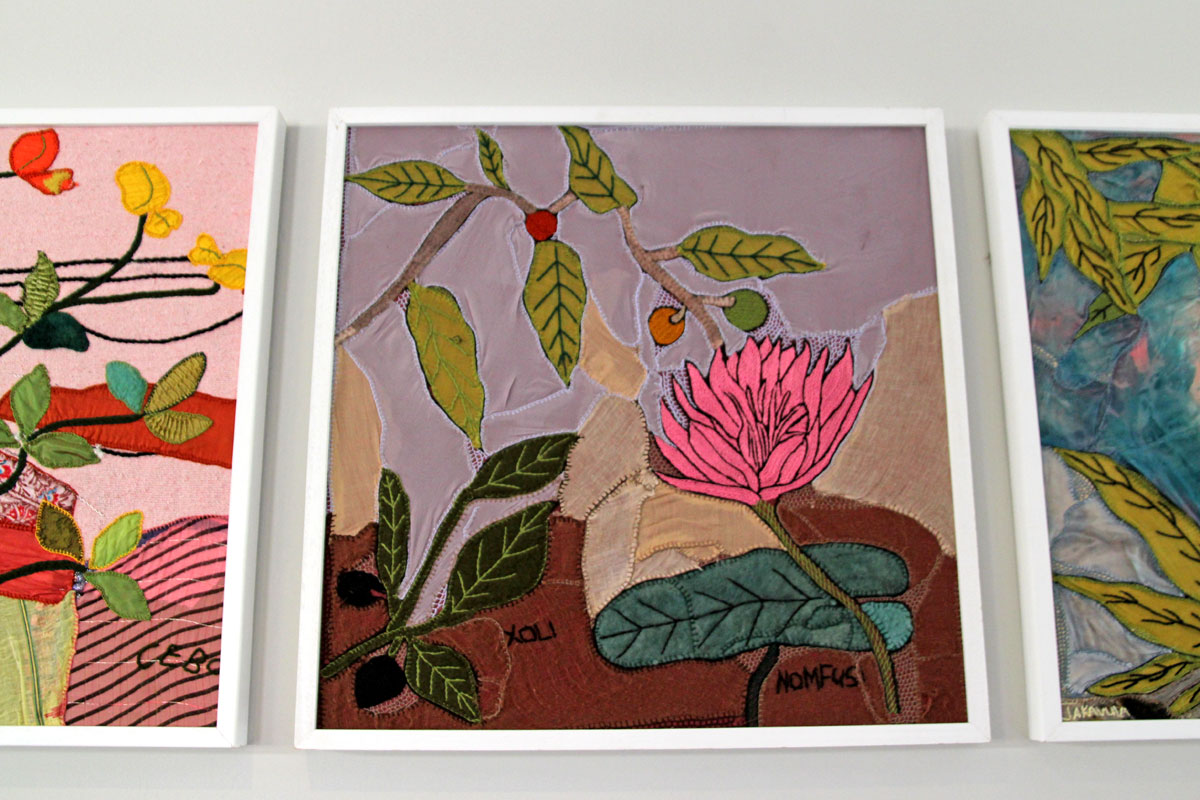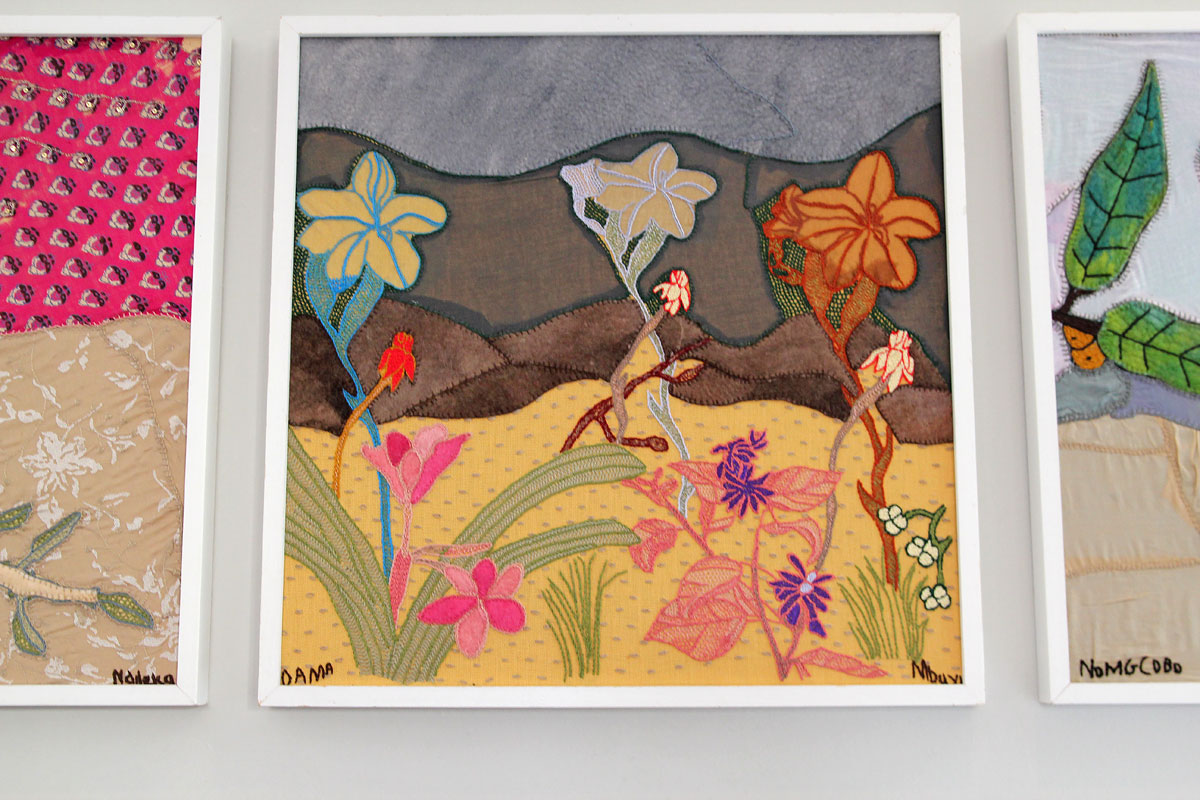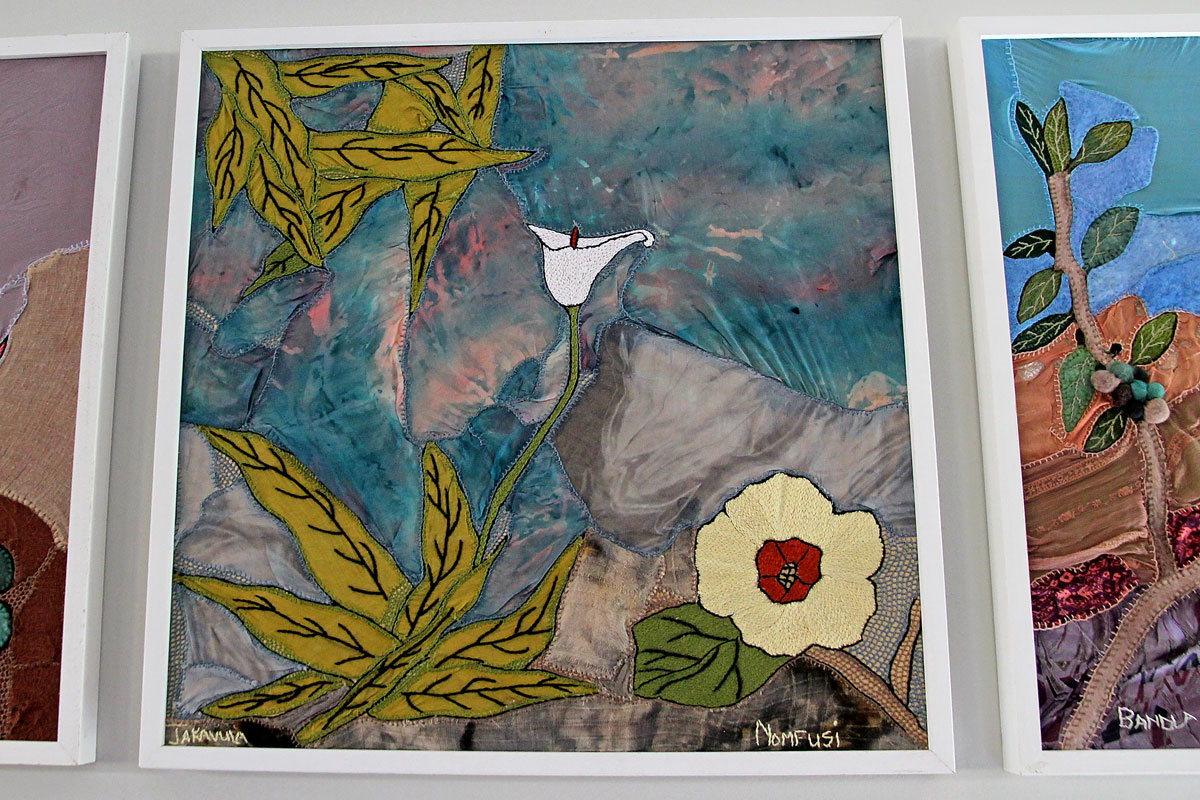Before I get to Somerset, a memory. On a trip to South Africa almost a decade ago, I enjoyed all the gardens our tour guide Donna Dawson had organized, but my very favourite was Babylonstoren in the Franschhoek wine district outside Cape Town. “Bedazzled by Babylonstoren” is the blog I wrote on my autumn 2014 visit. It combined all the best features of a truly great garden: a stunning design by Italian-French architect Patrice Taravella; diverse and beautiful ornamental and edible plantings, all organic; a vineyard that stretched for miles; a gift shop and charming farm-to-table restaurant; and an elegant spa hotel whose cottages nestled along the edge of the gardens. All that in a picturesque setting overlooked by the craggy peaks of Simonsberg.
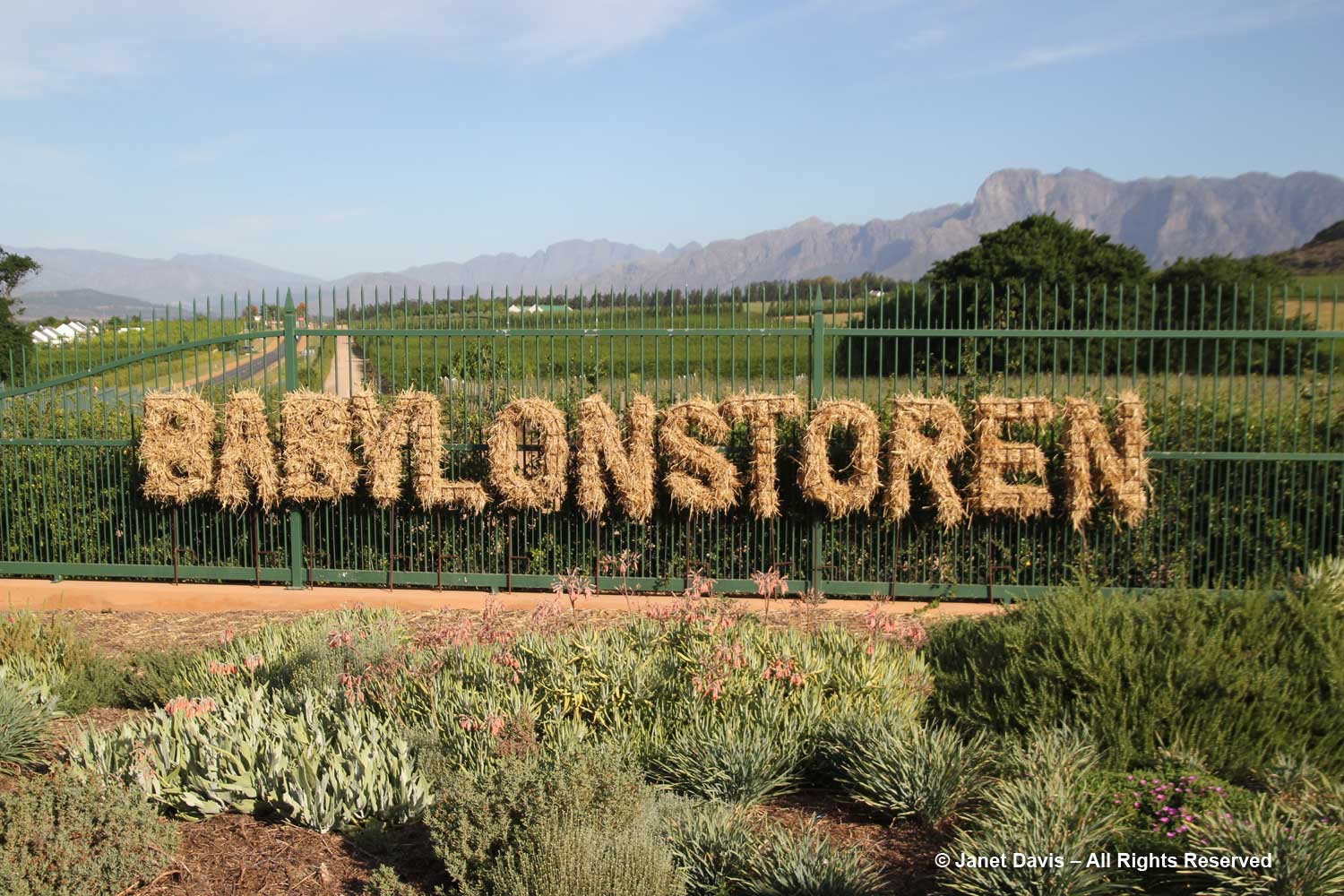
So when Babylonstoren’s owners, telecom billionaire Koos Bekker and his wife Karen Roos, the former editor of Elle Decoration South Africa, came to England looking for a farm in the country, it made perfect sense that they would choose an historic 17th century estate in leafy Somerset. That rumor has it they had to outbid actor Johnny Depp to make their successful £12 million purchase only added to the cachet. Then they spent 6 years developing the property, working again with Patrice Taravella to create a second unique, complex organic garden and farm while transforming the house into an exclusve hotel & spa. The map below is available as a detailed pdf online.
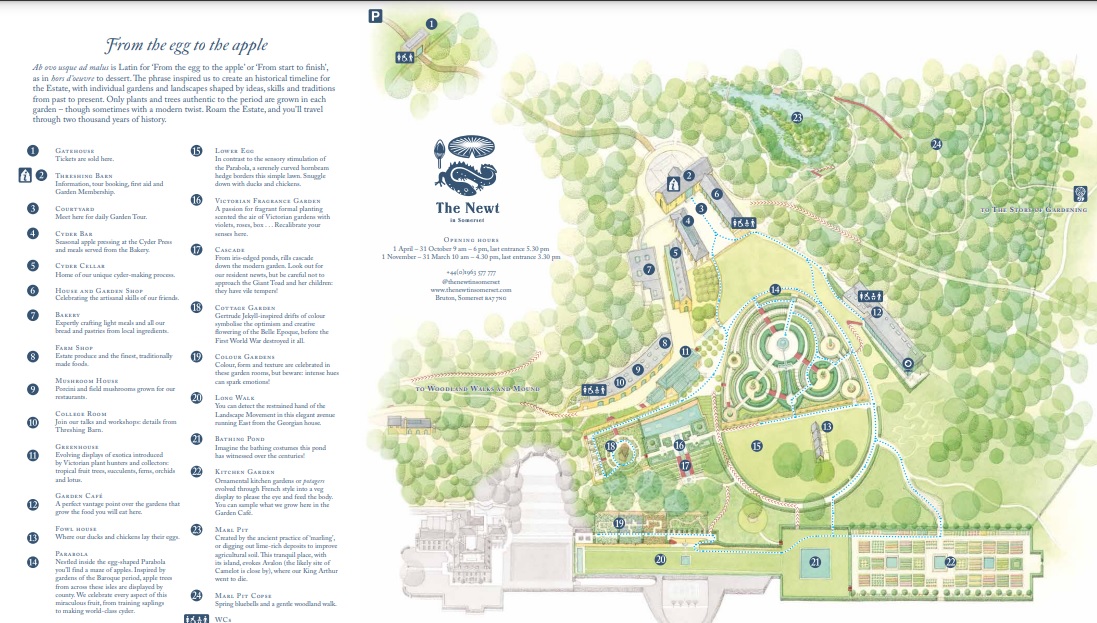
Somehow, as we drew into The Newt’s parking lot on my June 2023 visit with Carex Tours, I knew most of the details about our upcoming visit and fondly remembered visiting Babylonstoren, but I hadn’t yet learned the actual name of the historic house that became the hotel. When our guide said “Hadspen” my heart leapt, for this had been the home of the renowned garden writer, designer and colourist, Penelope Hobhouse, who later leased it to the Canadian gardeners Nori and Sandra Pope, who went on to create what became an iconic walled garden focused on colour. Noel Kingsbury wrote an affectionate essay on the Popes, the Hobhouse estate and the drama associated with its direction. As many of my readers likely know, I’ve long had an interest in colour in the garden, focusing on it in my blog and in my photography. But 25 years ago, I also wrote a book review, below, for my column in Toronto Life Gardens on Nori and Sandra Pope’s book ‘Color by Design, so I was very familiar with the colour ethos of Hadspen House. Would I find it today? Stay tuned.

We entered The Newt via a gatehouse and a long, sinuous boardwalk through rich woodland.
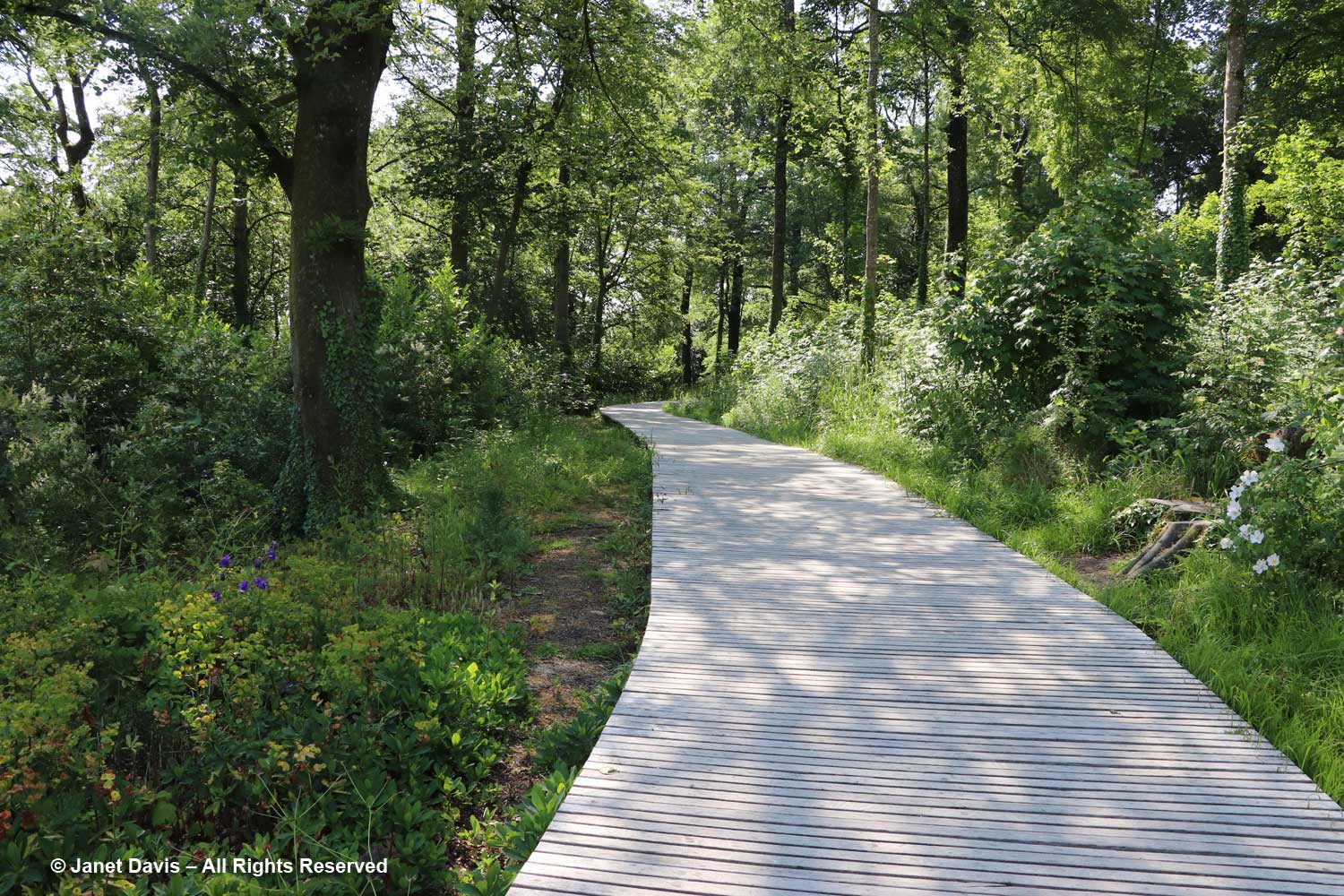
Stacks of cut wood were placed along the pathway like mossy, natural works of art that double as habitat.
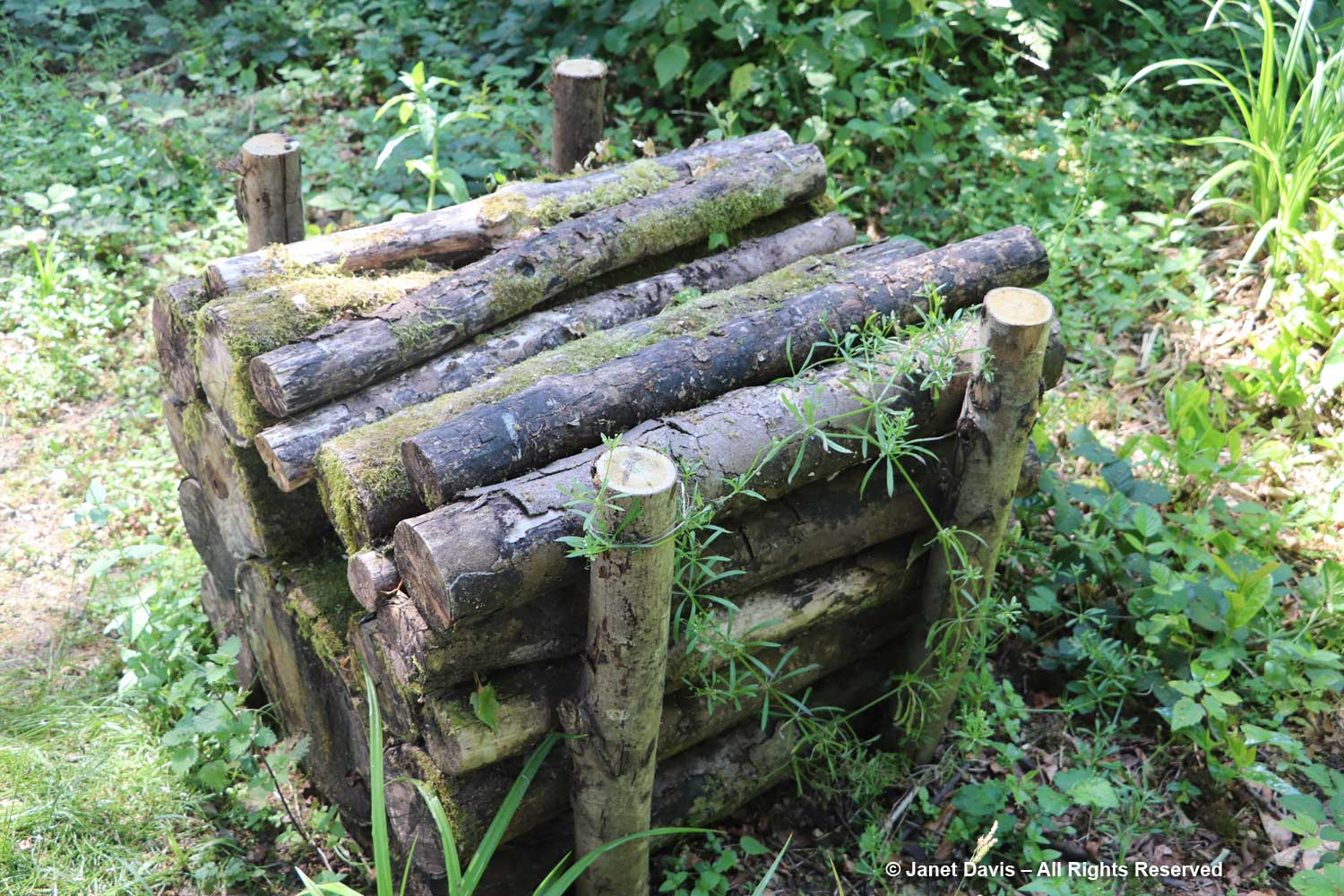
I walked through the entrance courtyard past the threshing barn, cyder bar and gift shop and made my way quickly to the Cottage Garden below. Beyond that was the Fragrance Garden and Cascades. (Though hotel guests have access to the gardens, Hadspen House itself is off-limits to garden visitors – I tried.)
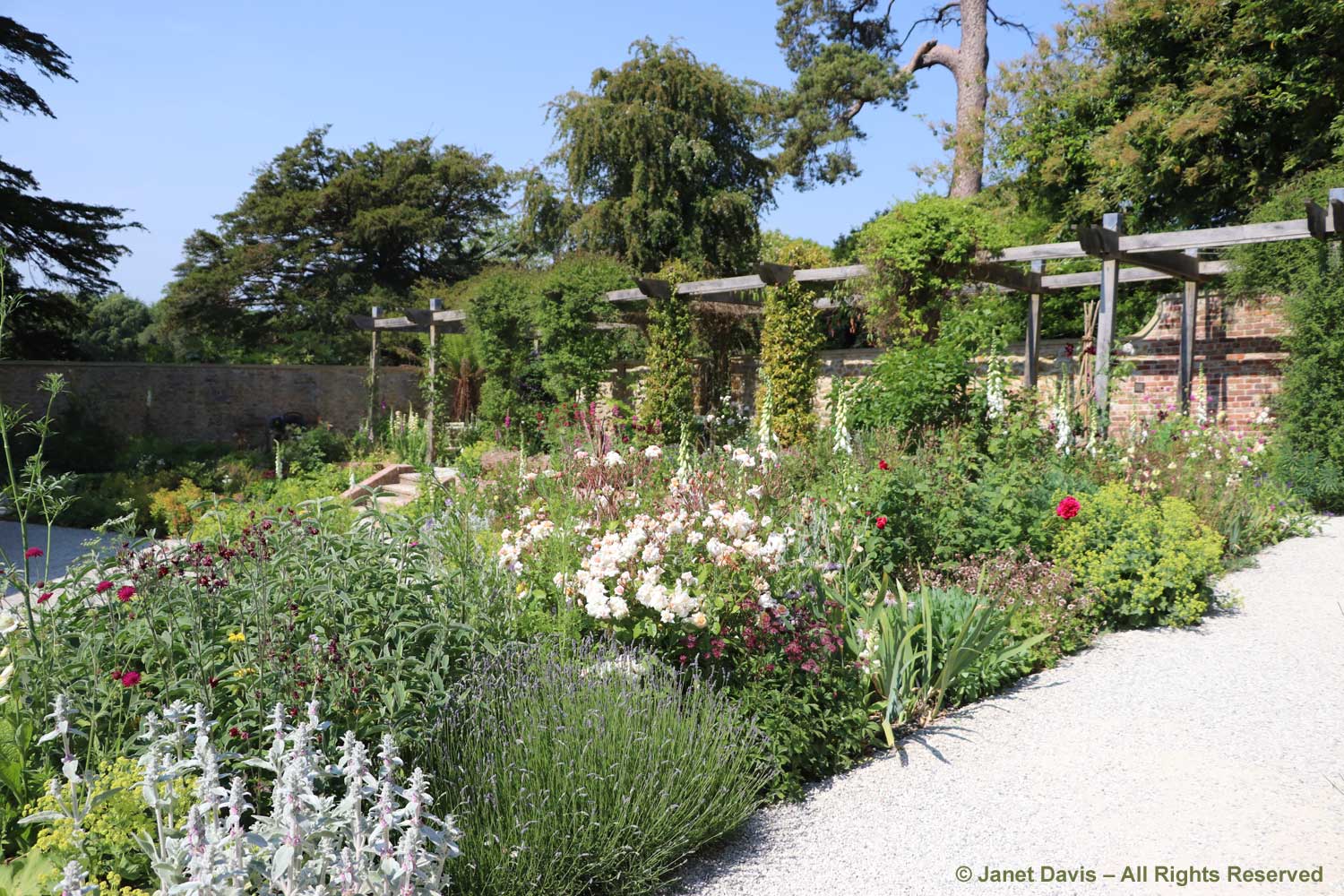
There were familiar pairings of lavender and lambs’ ears…
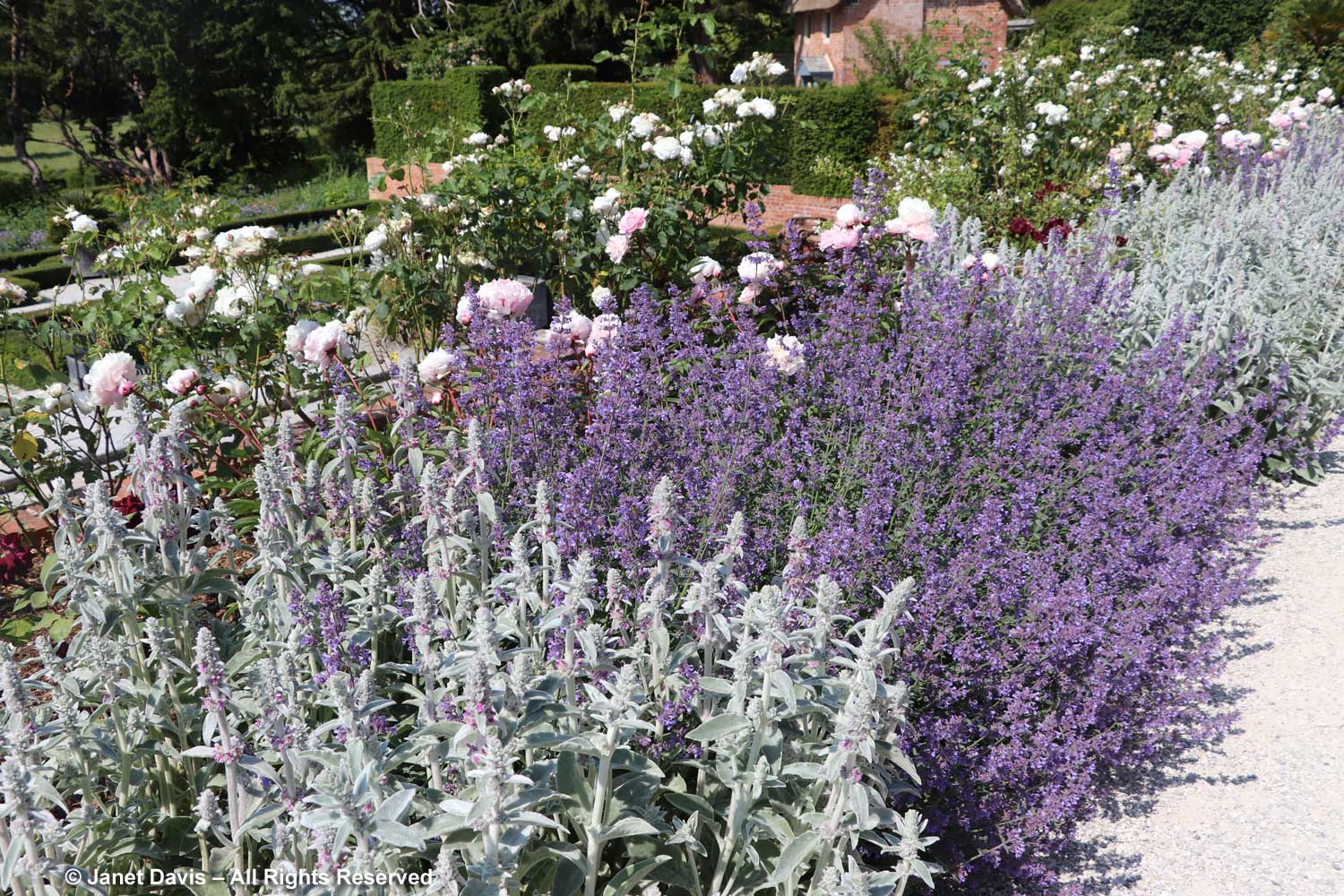
…. and Jerusalem sage (Phlomis russelliana) with pale yellow-eyed grass (Sisyrinchium striatum)…
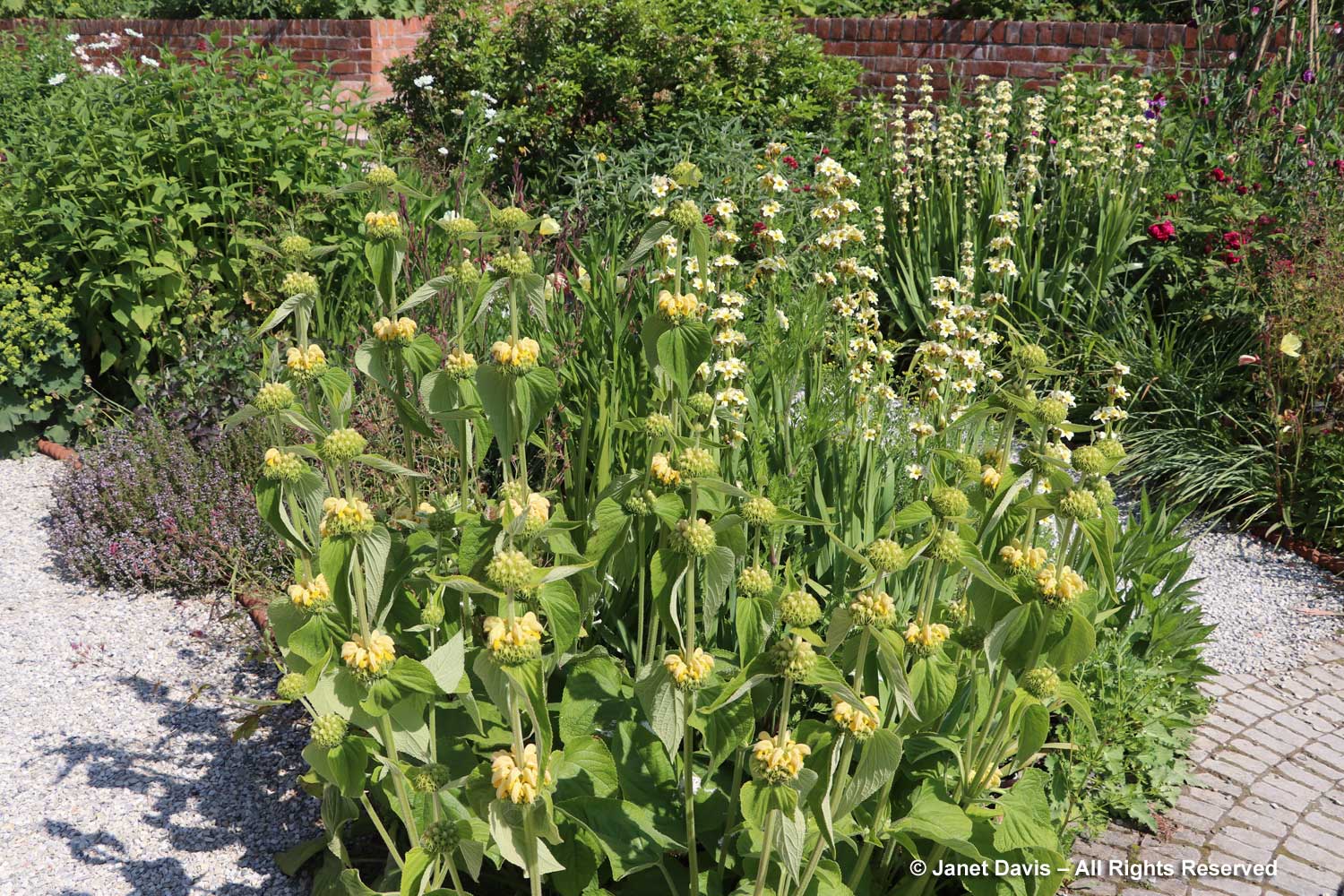
… and in the Cascades, moisture-loving Rodgersia pinnata ‘Superba’ with primulas and royal ferns.
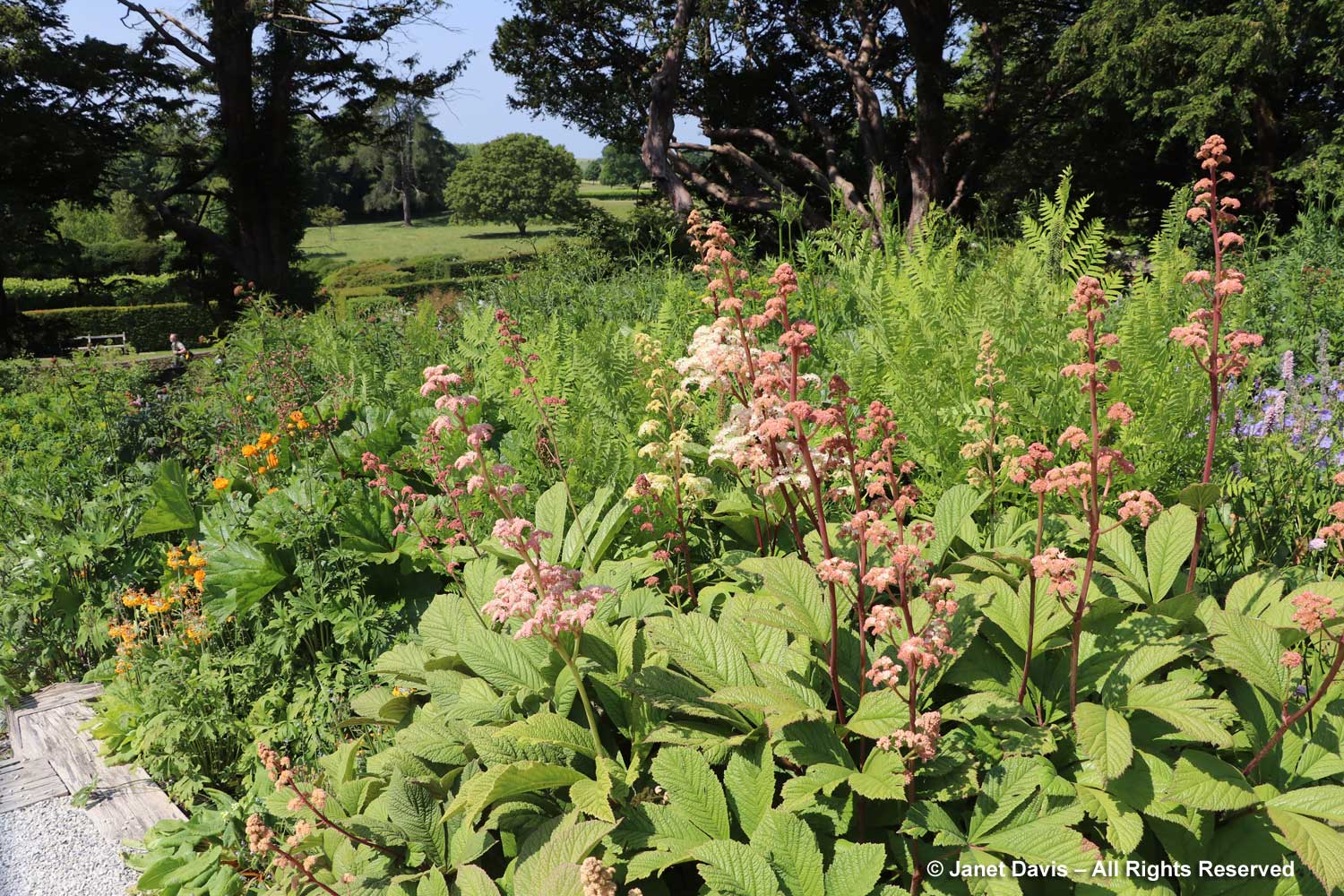
The Cascades features a waterfall emptying into a rectilinear pool planted with waterlilies.
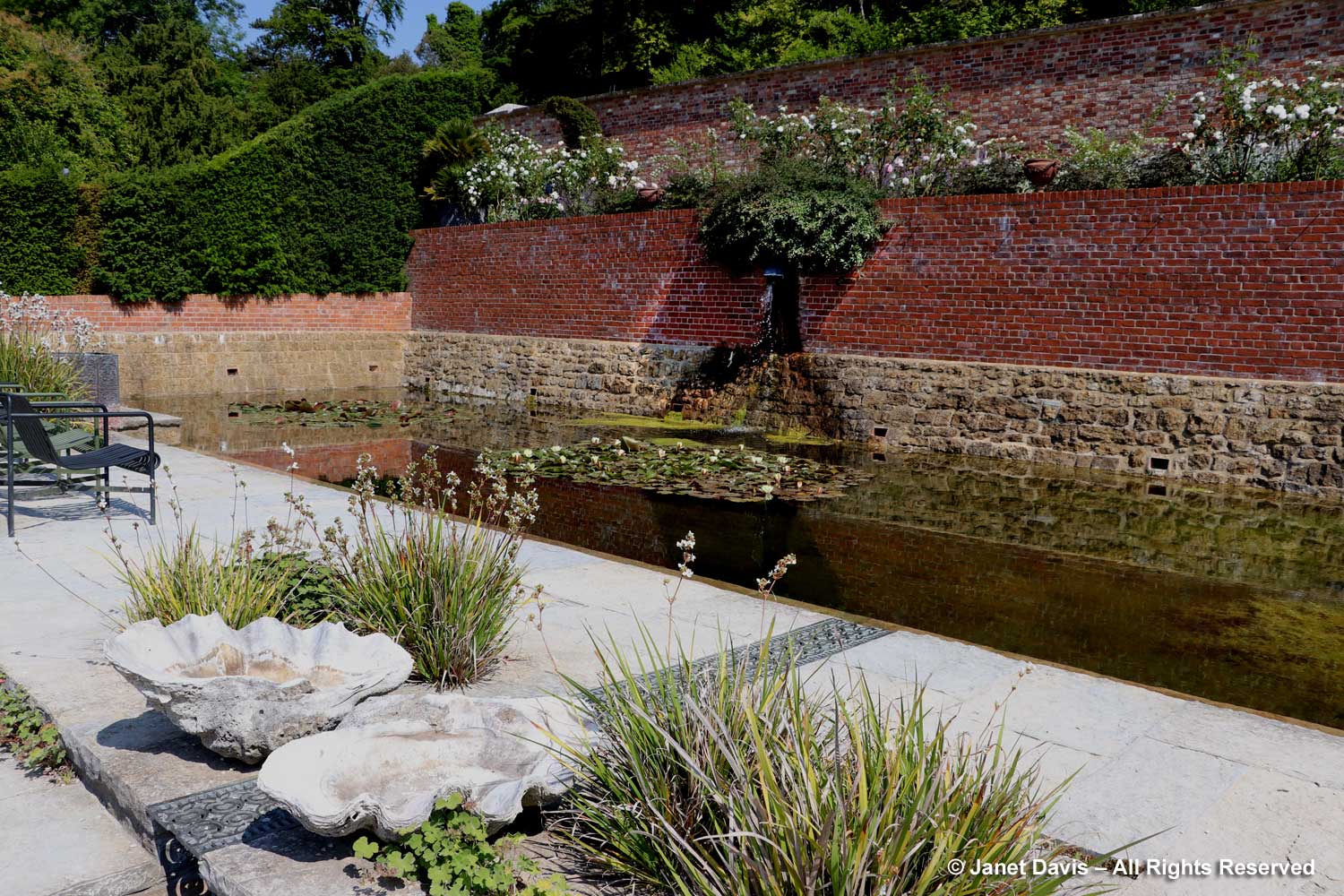
Next, I came to my favourite part of The Newt, the Colour Garden. It is actually a series of wattle-walled, colour-themed gardens bisected by a stone path, and you can view what’s ahead through oval windows in the wall of each garden.
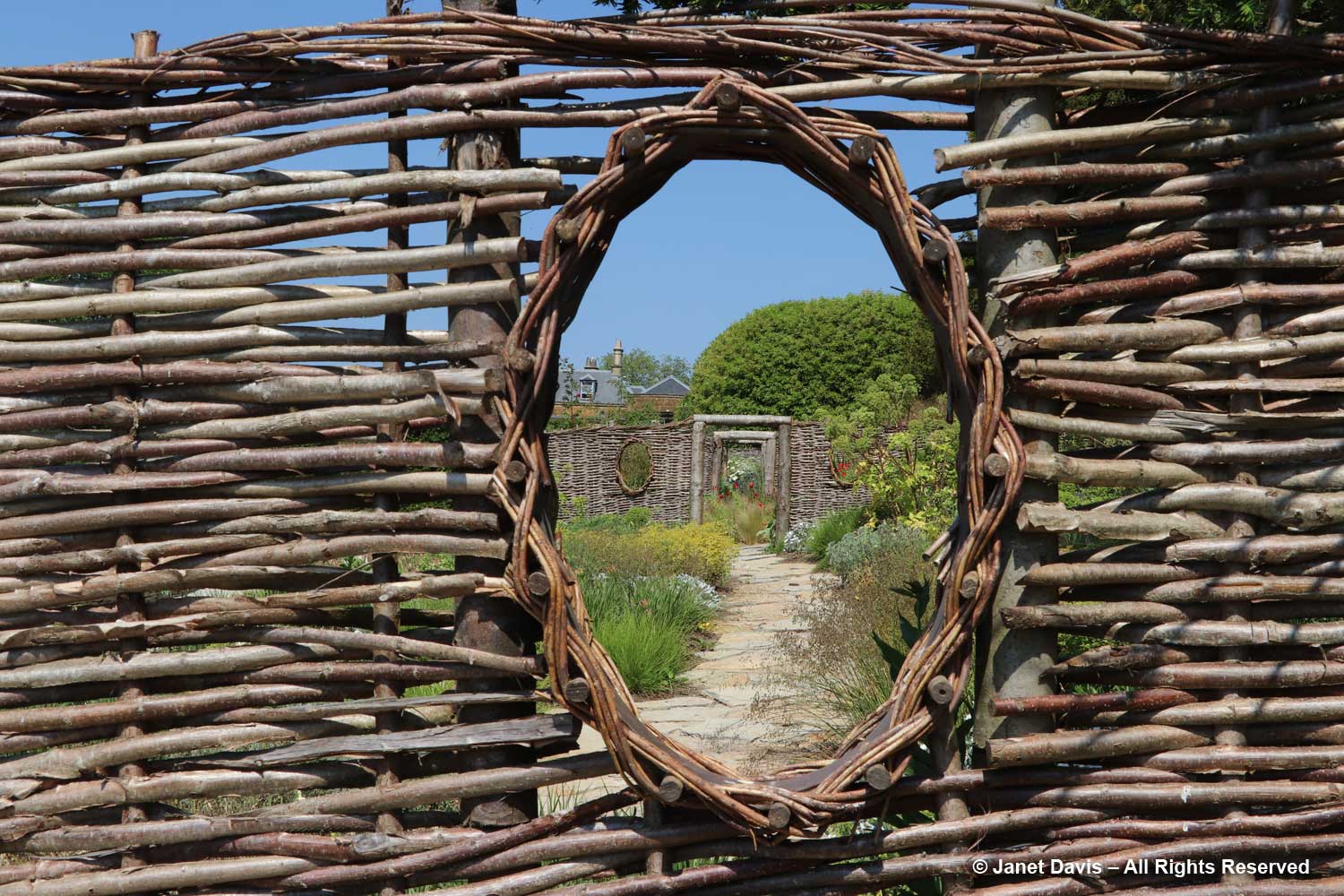
Alongside, there was a touching dedication to Sandra and the late Nori Pope.
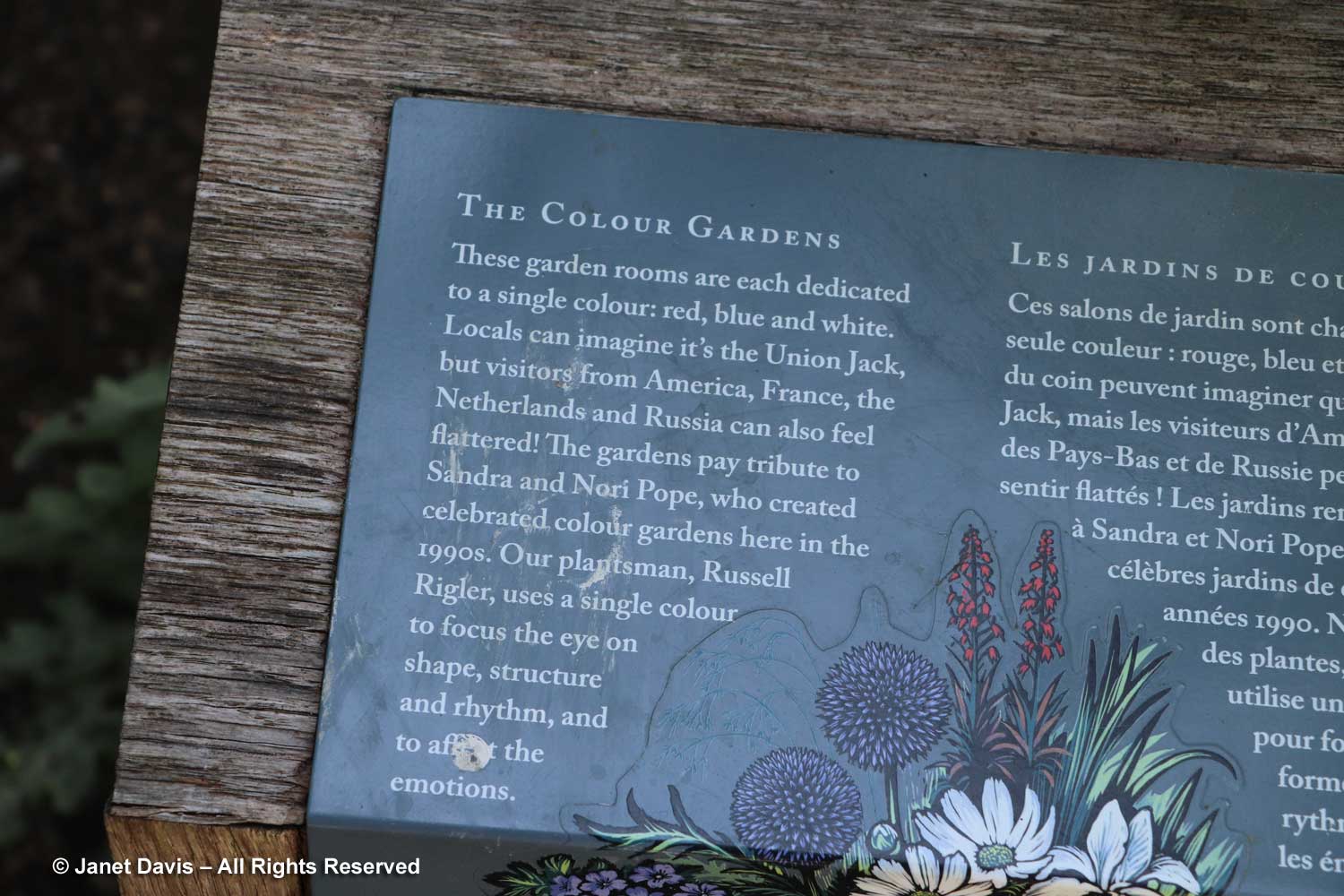
It pleased me that the new owners understood how well-loved the Popes had been, and how many people missed their creativity, including Vancouver landscape architect Ron Rule, who captured Sandra in the garden long ago.
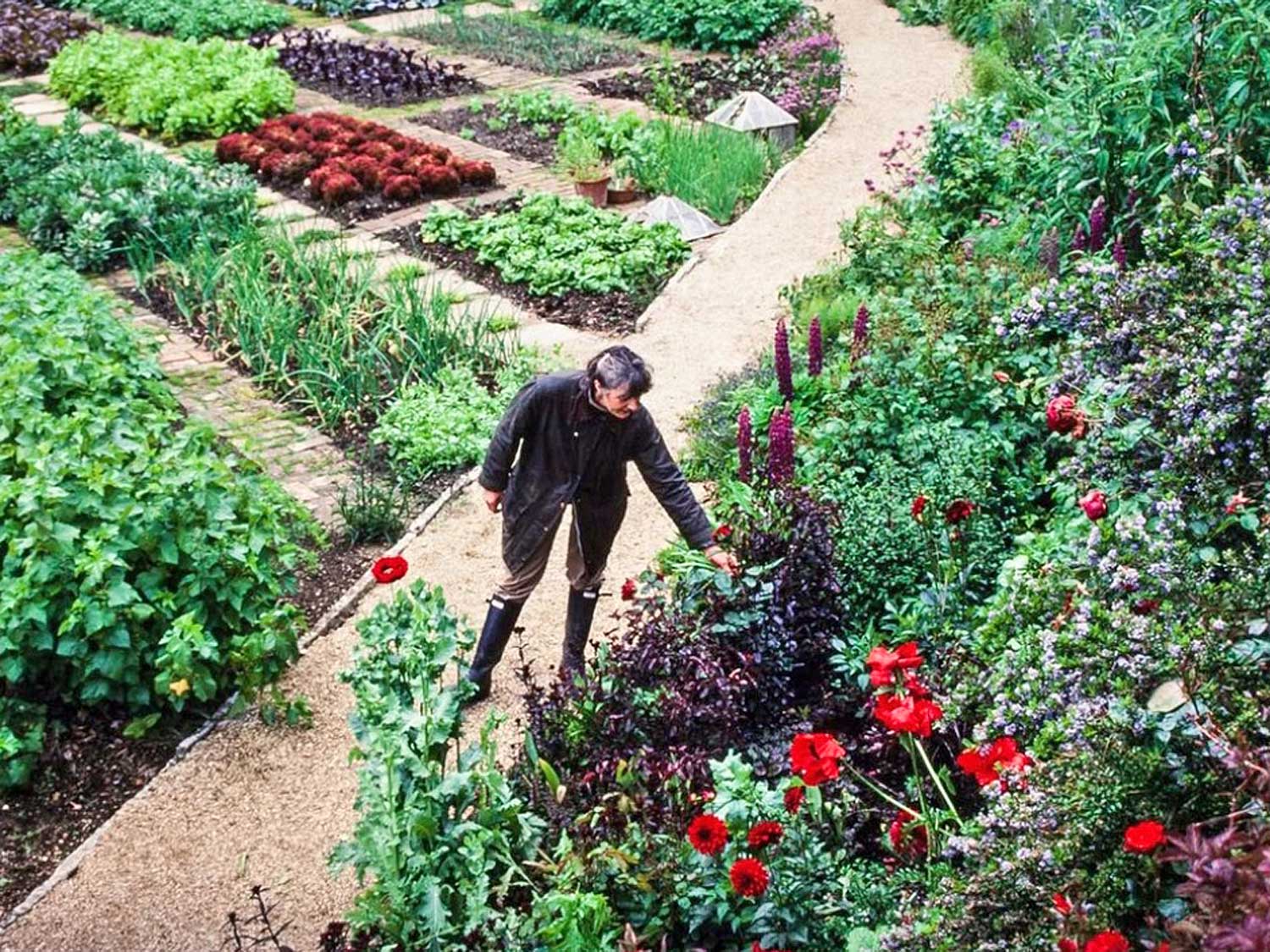
The Newt’s version of the Colour Garden begins with a Green Garden with lots of ornamental grasses and green-flowered plants like tall Angelica archangelica…
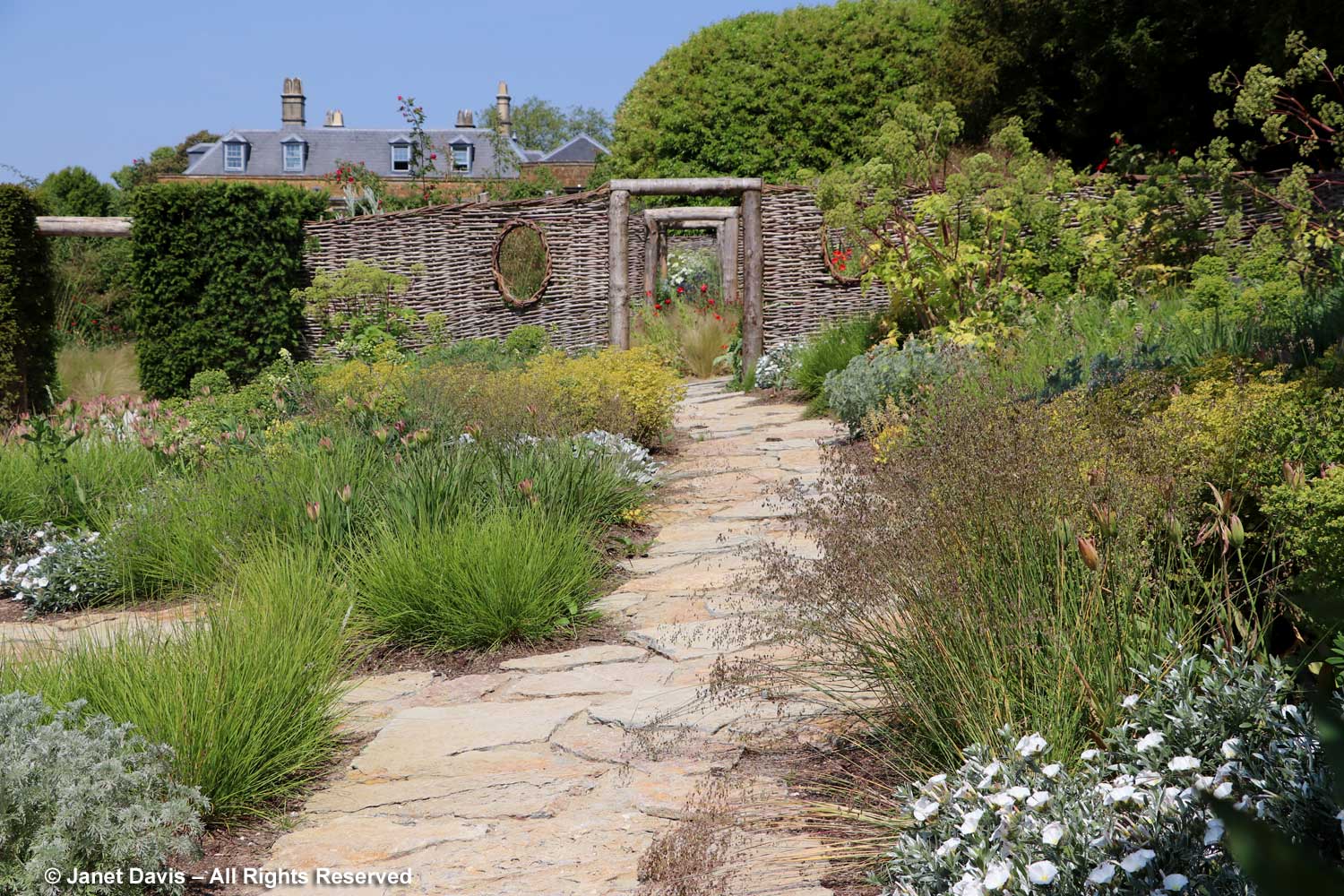
….. and euphorbias, too.
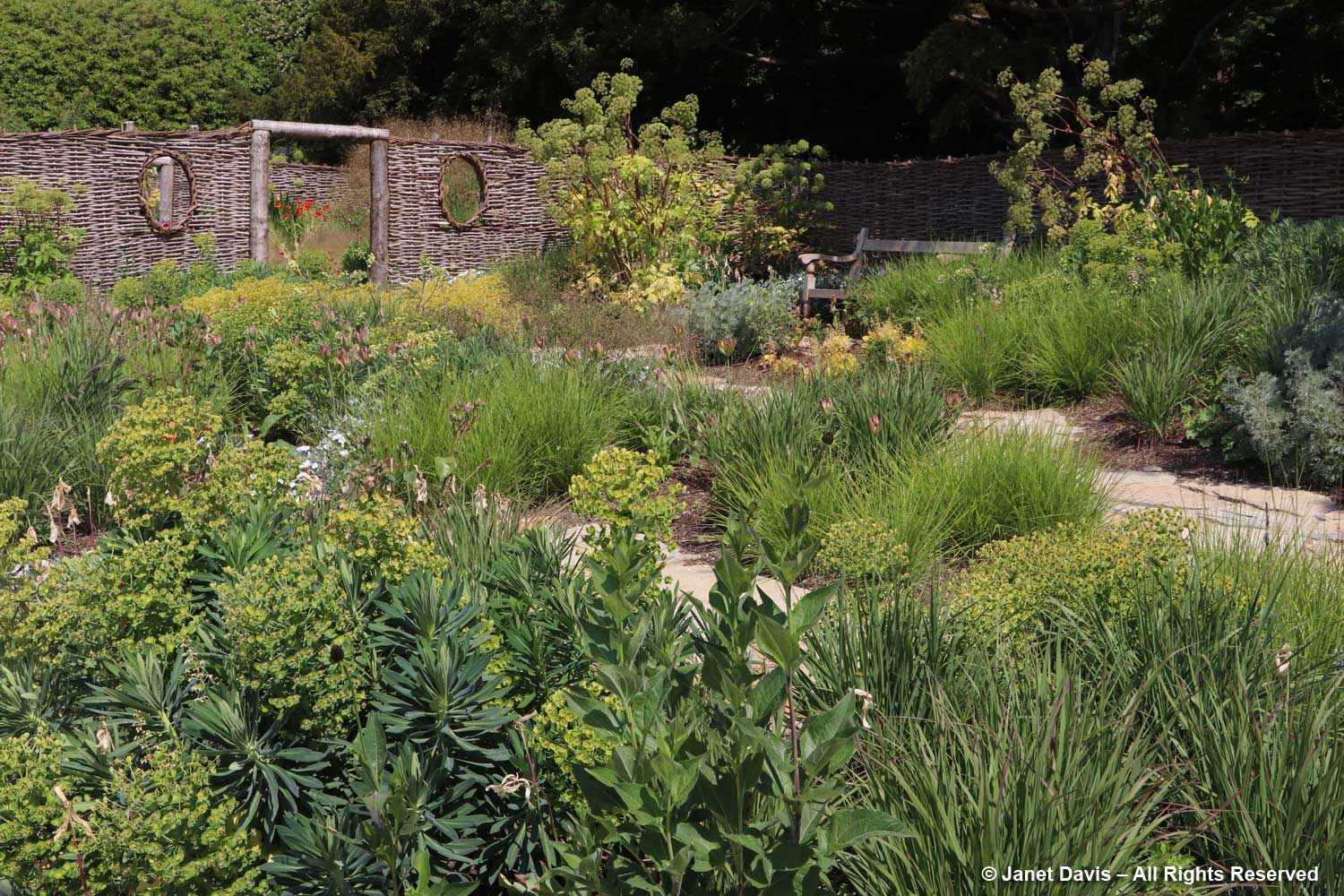
Then comes the spectacular little Red Garden….
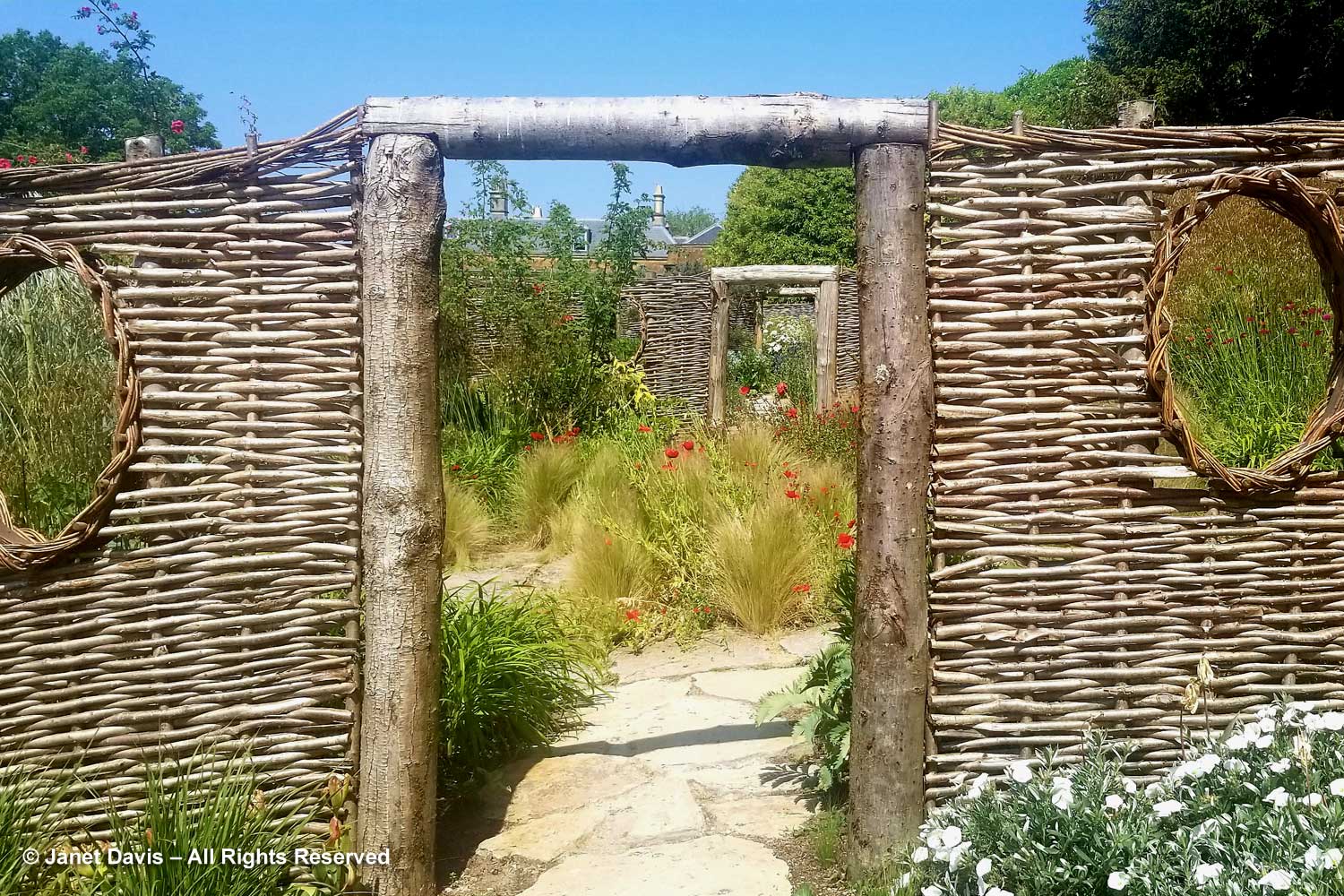
…. with dancing corn poppies (Papaver rhoeas) and swishing Mexican feather grass (Nassella tenuissima). I noticed angelica in that garden as well – such a great plant for pollinators.
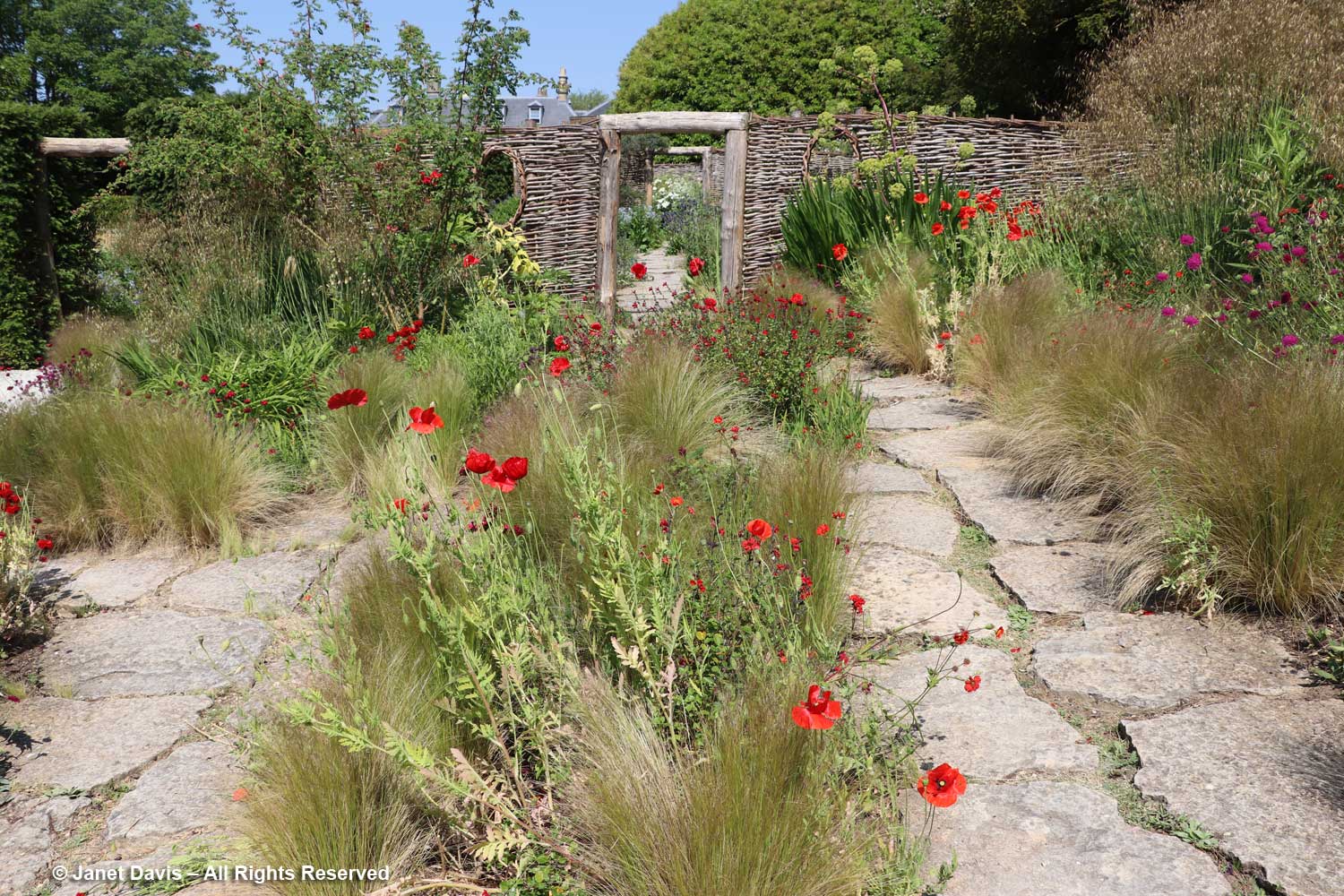
In early June, the Red Garden stretched the colour palette into hot pinks and magenta with Carthusian pink (Dianthus carthusianorum) and masterwort (Astrantia major).
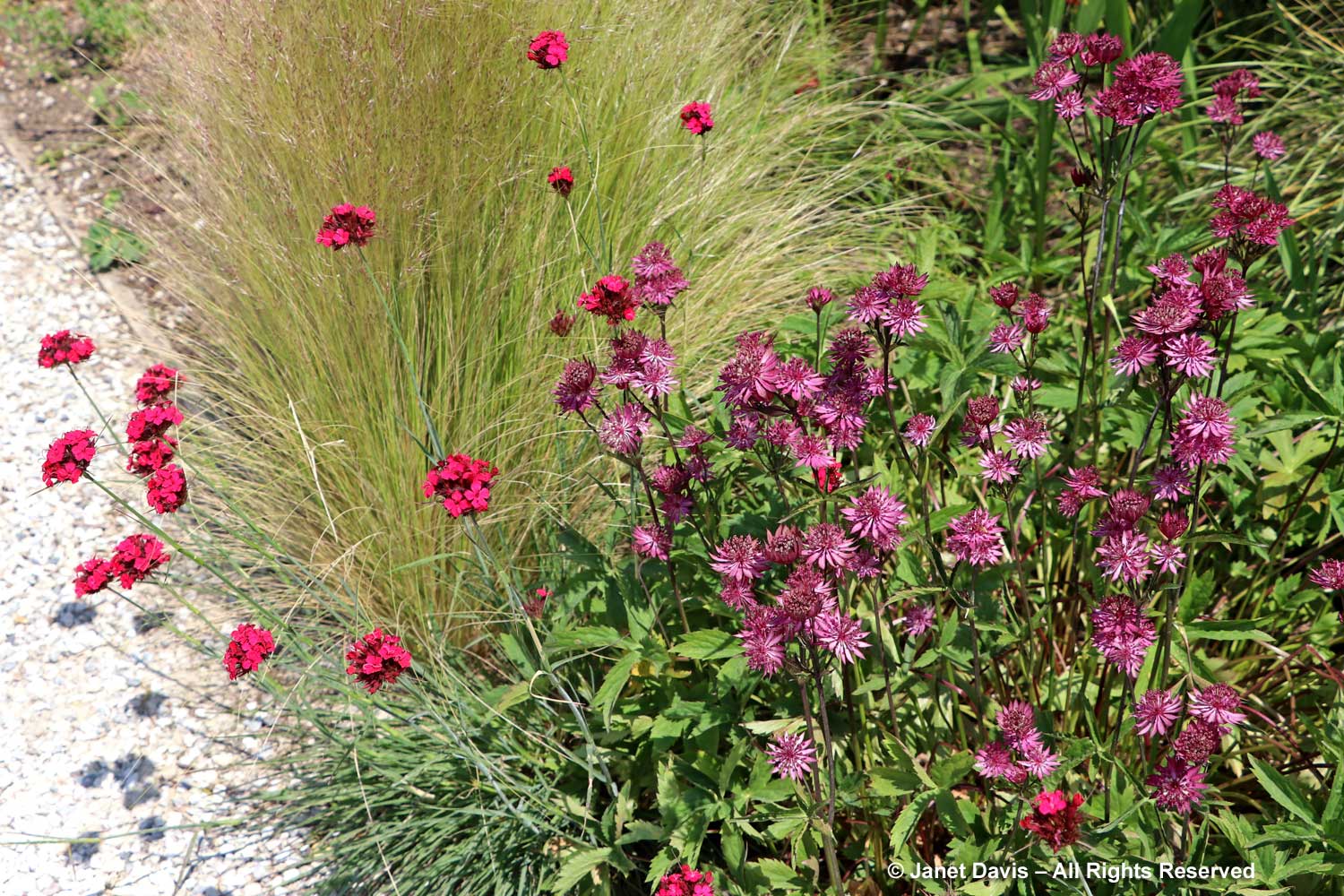
A bumble bee was foraging on the geum.
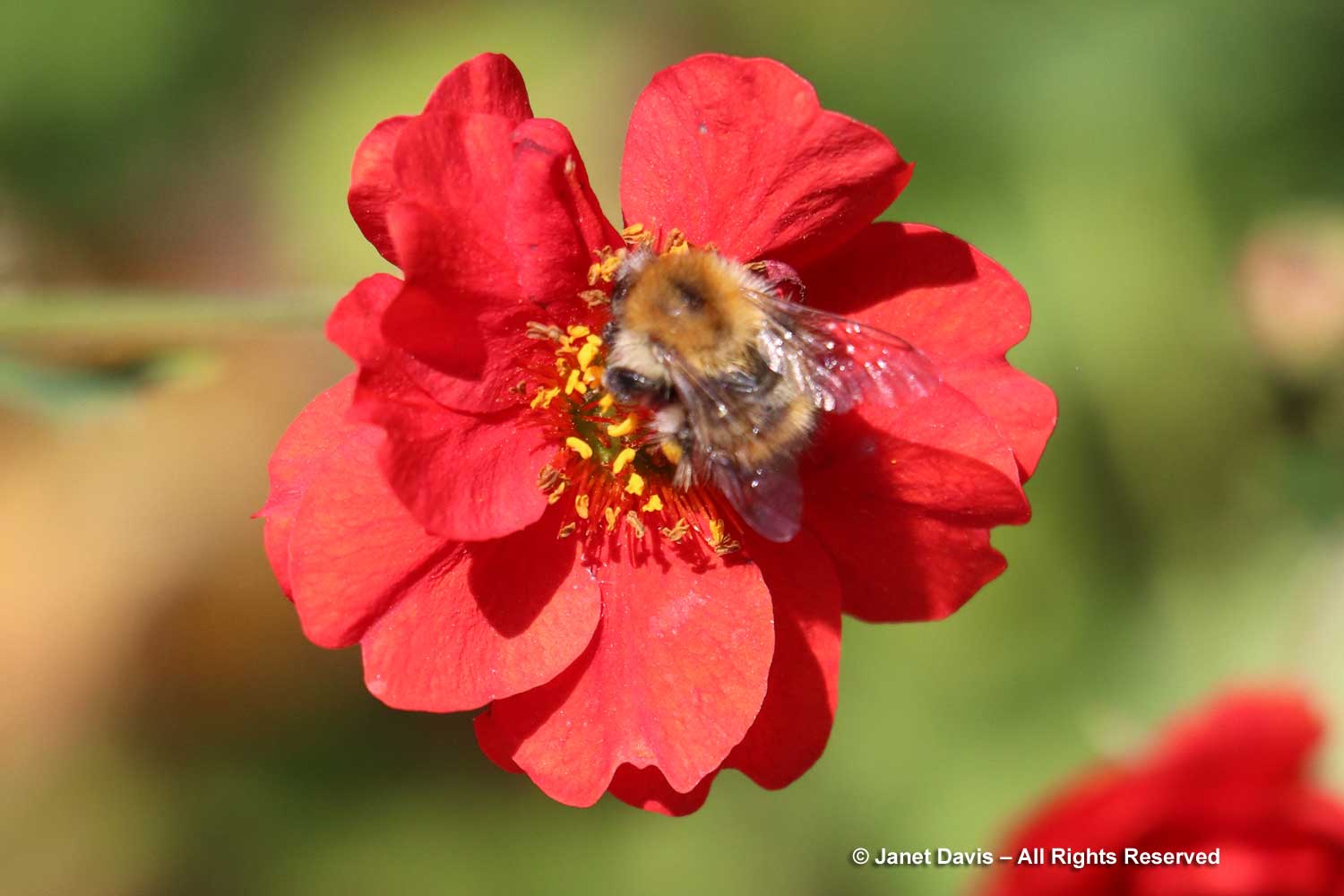
It was a terribly sunny day (how could that happen for so many days in a row in England?) so my photos of The Blue Garden in particular were difficult.
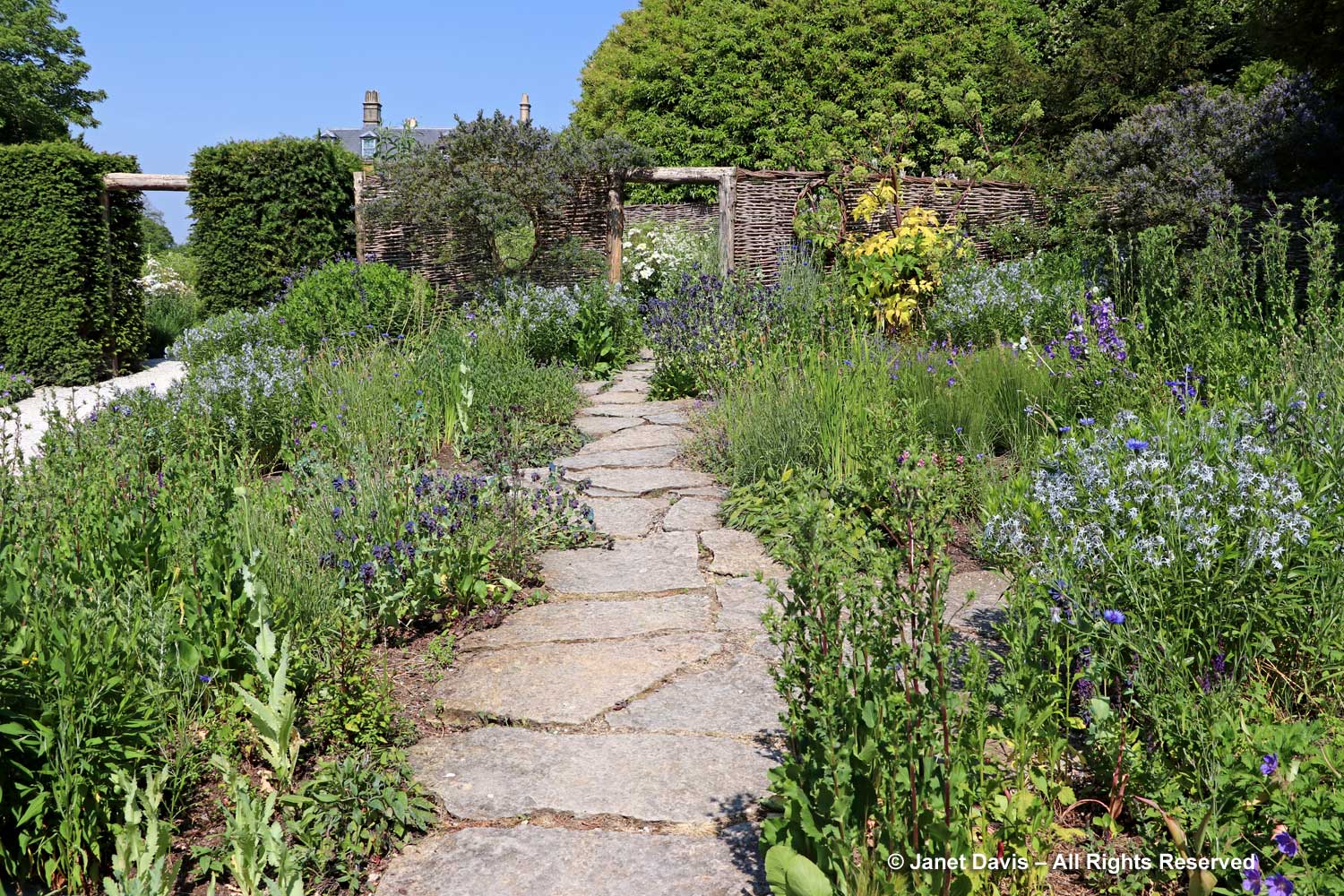
Amsonia and cornflowers took centre stage. but there were campanulas and delphiniums sprinkled in as well.
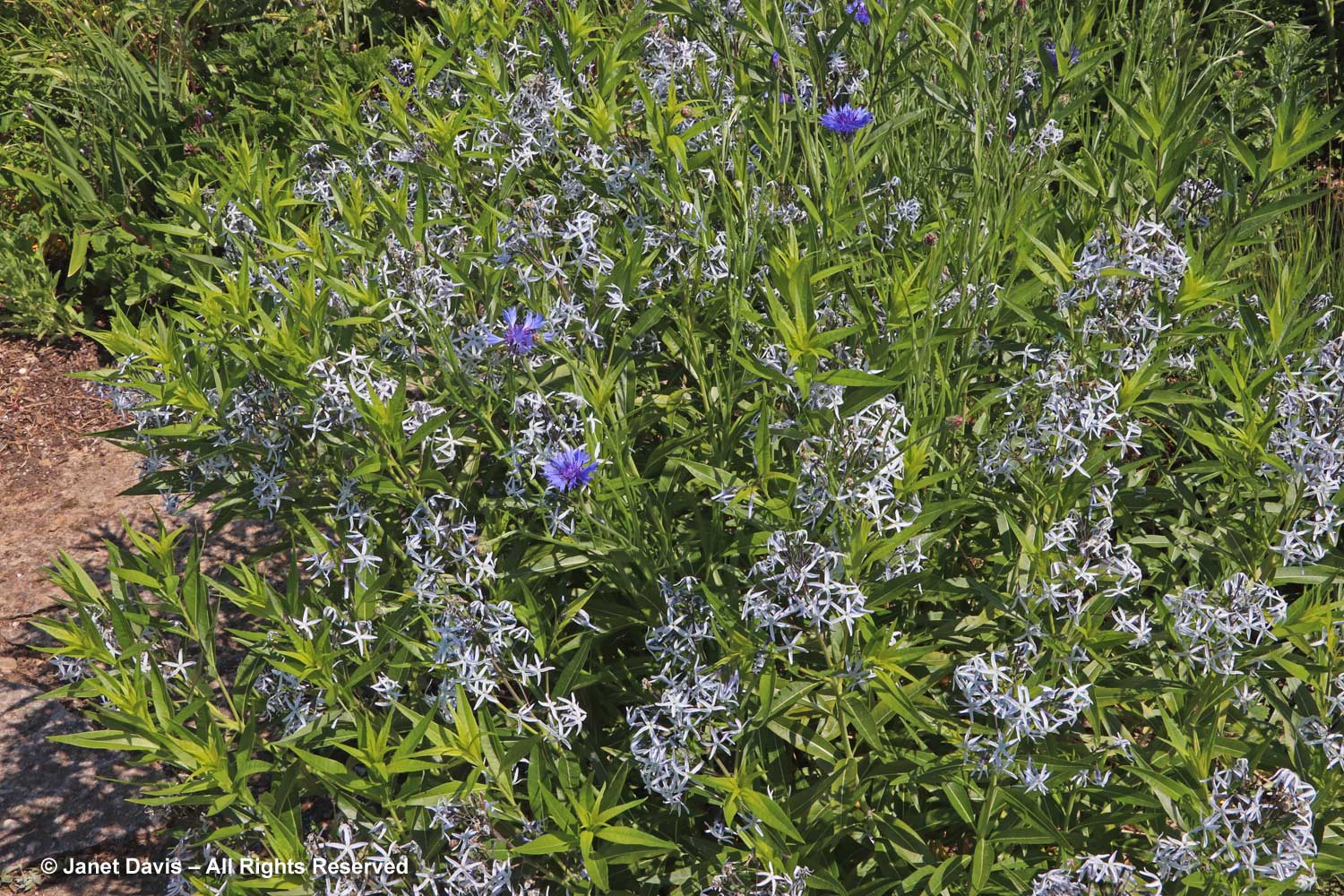
Navy-blue honeywort (Cerinthe major ‘Purpurascens’) was a feature in many of the gardens I visited in England.
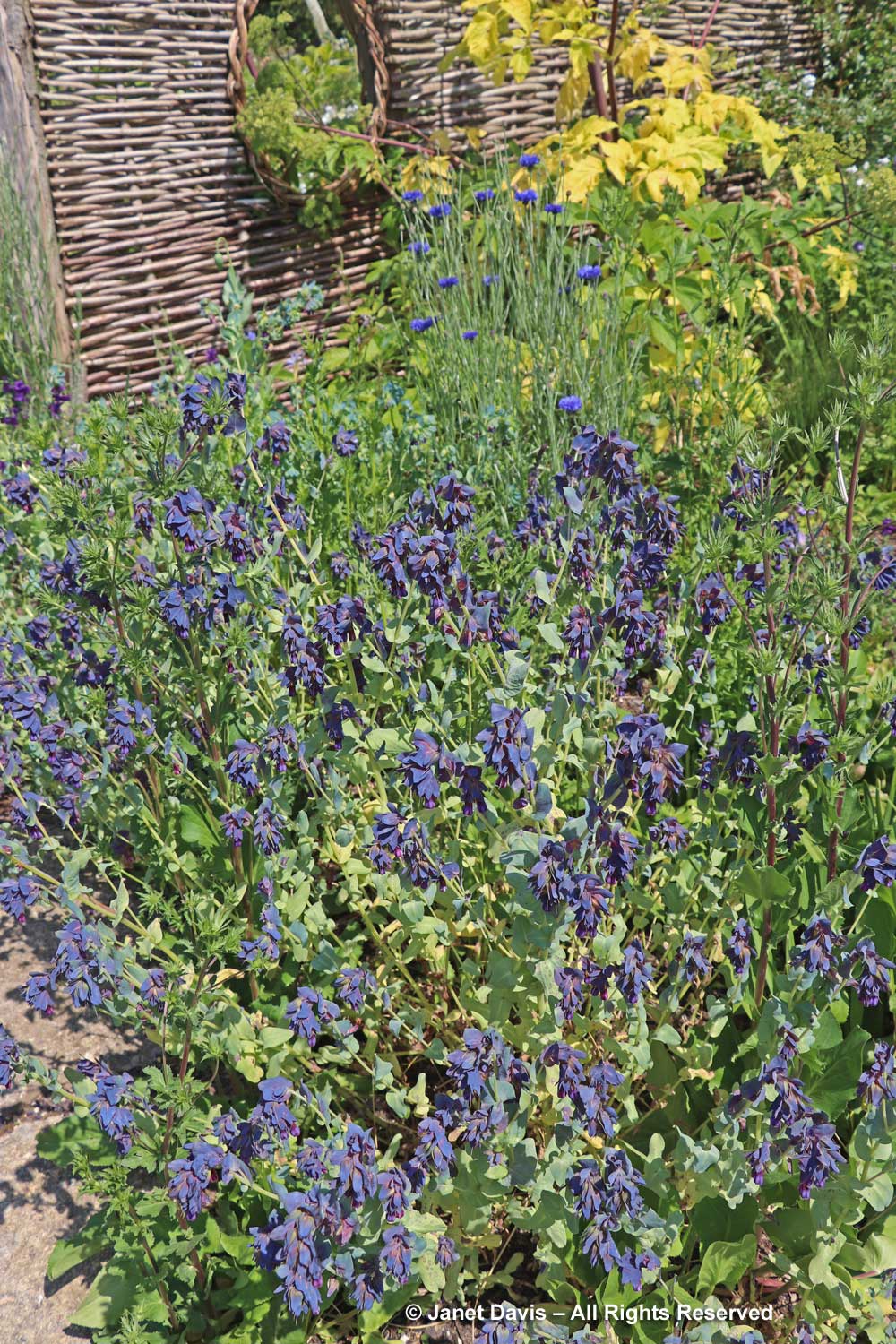
The White Garden is the final colour garden….
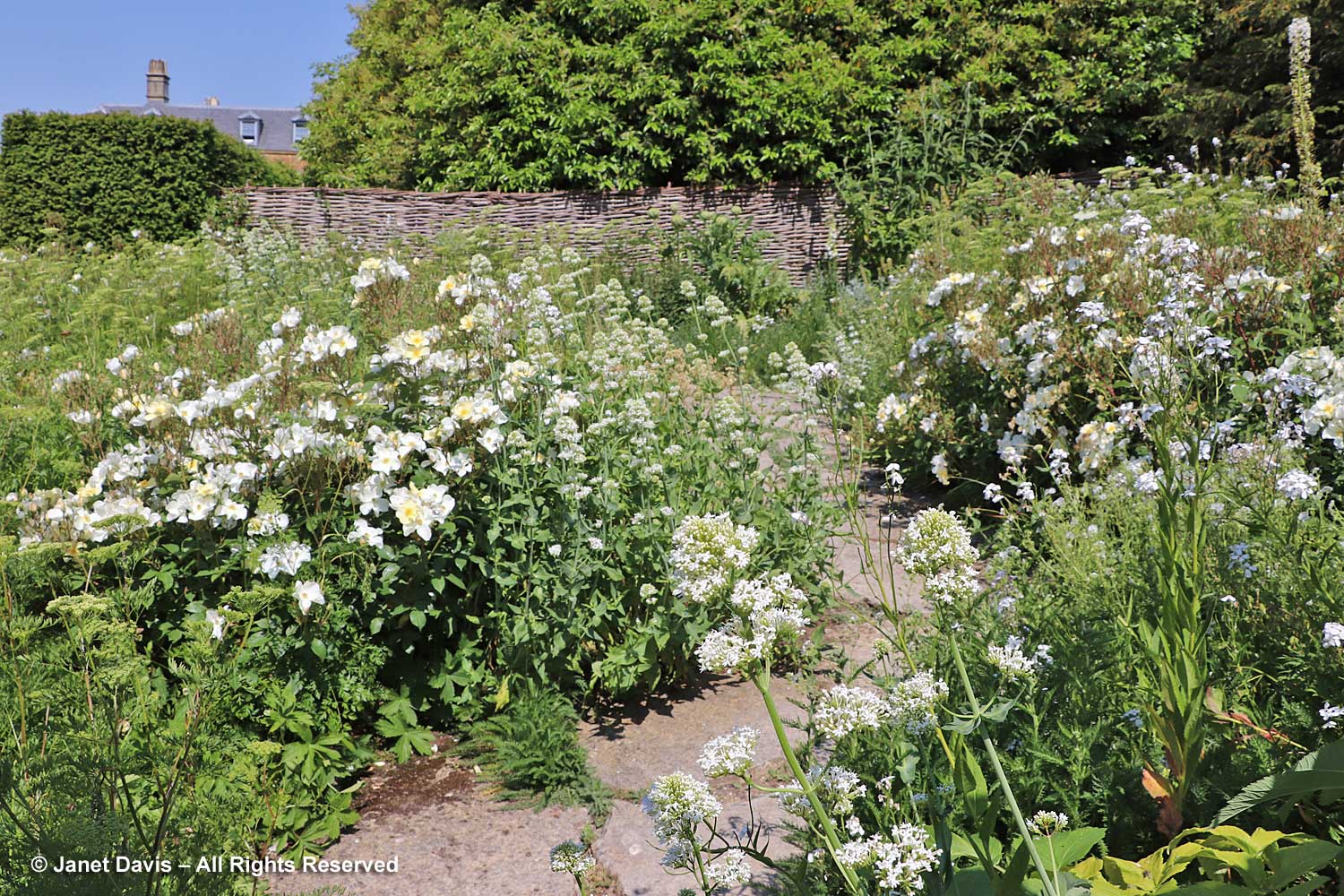
…. and the predominant plants in bloom in early June were the Hybrid Musk rose ‘Kew Gardens’ (which I had photographed earlier that week at RBG Kew in London) and the white form of red valerian or Jupiter’s beard, Centranthus ruber ‘Albus’.
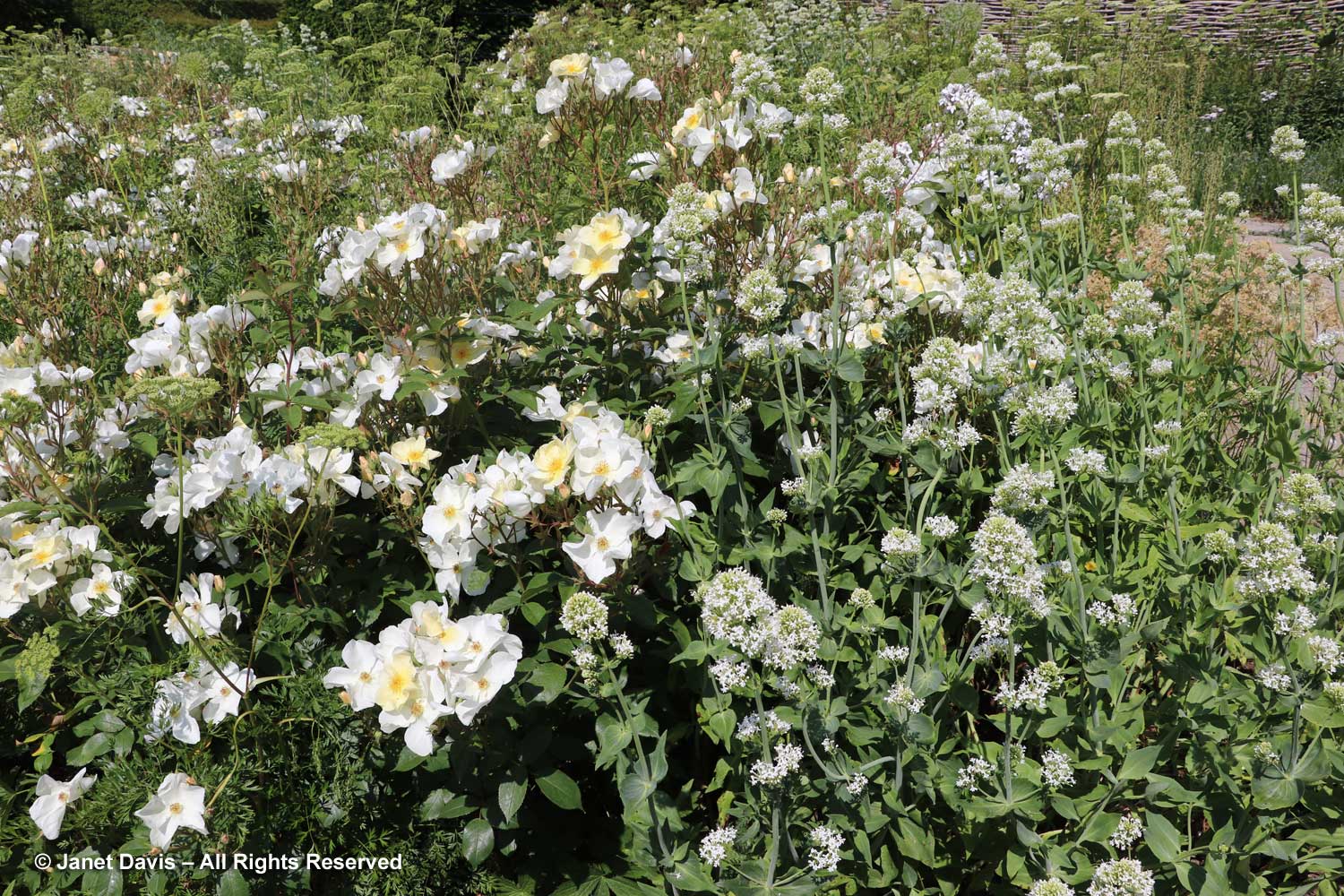
On leaving the Colour Garden, I took a stroll down the Long Walk which moves down a gentle slope flanked by a stone wall overhung with white Jupiter’s beard (Centranthus ruber ‘Albus’). In the background is the hotel.
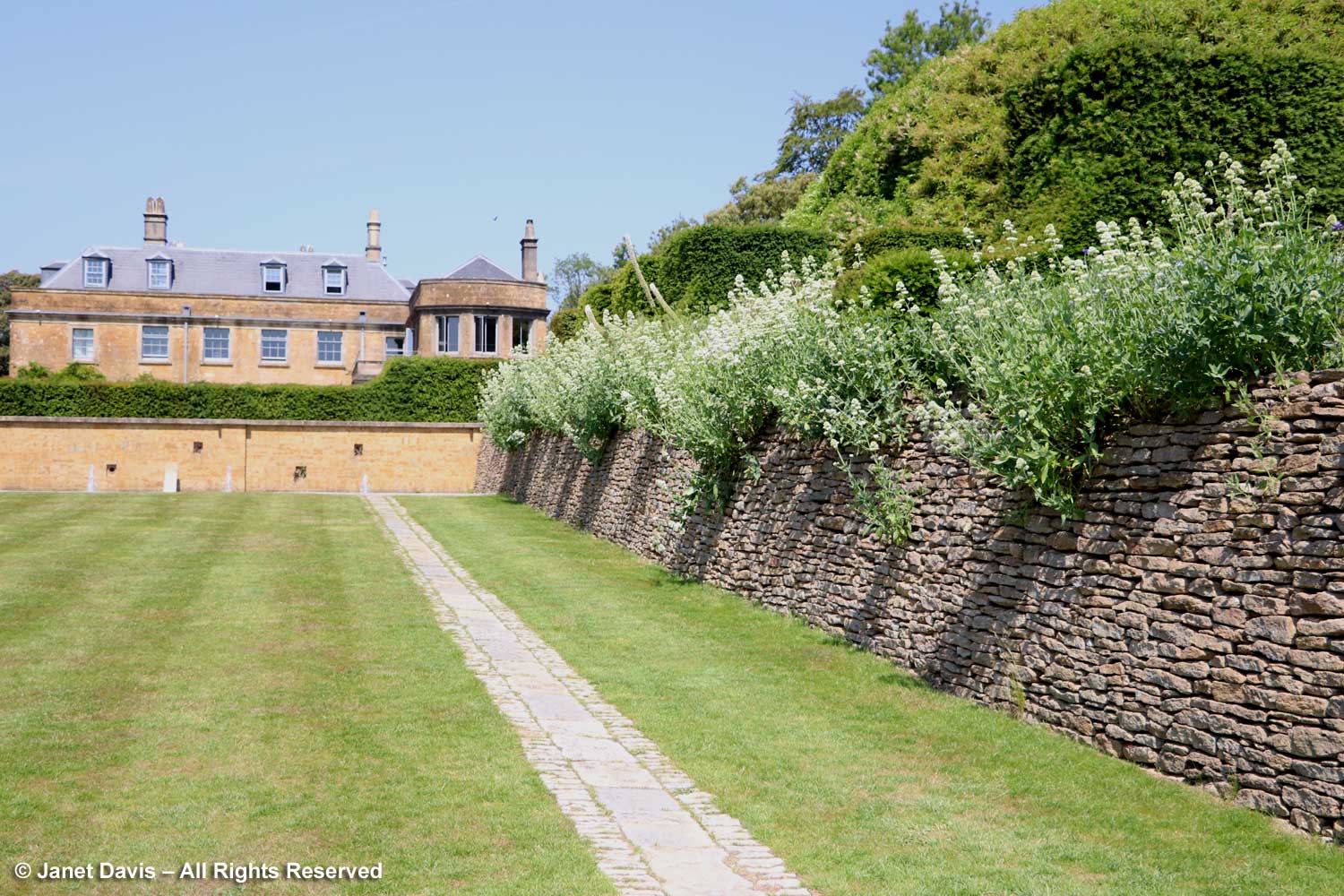
The Long Walk has its own water features like this pool at the top….
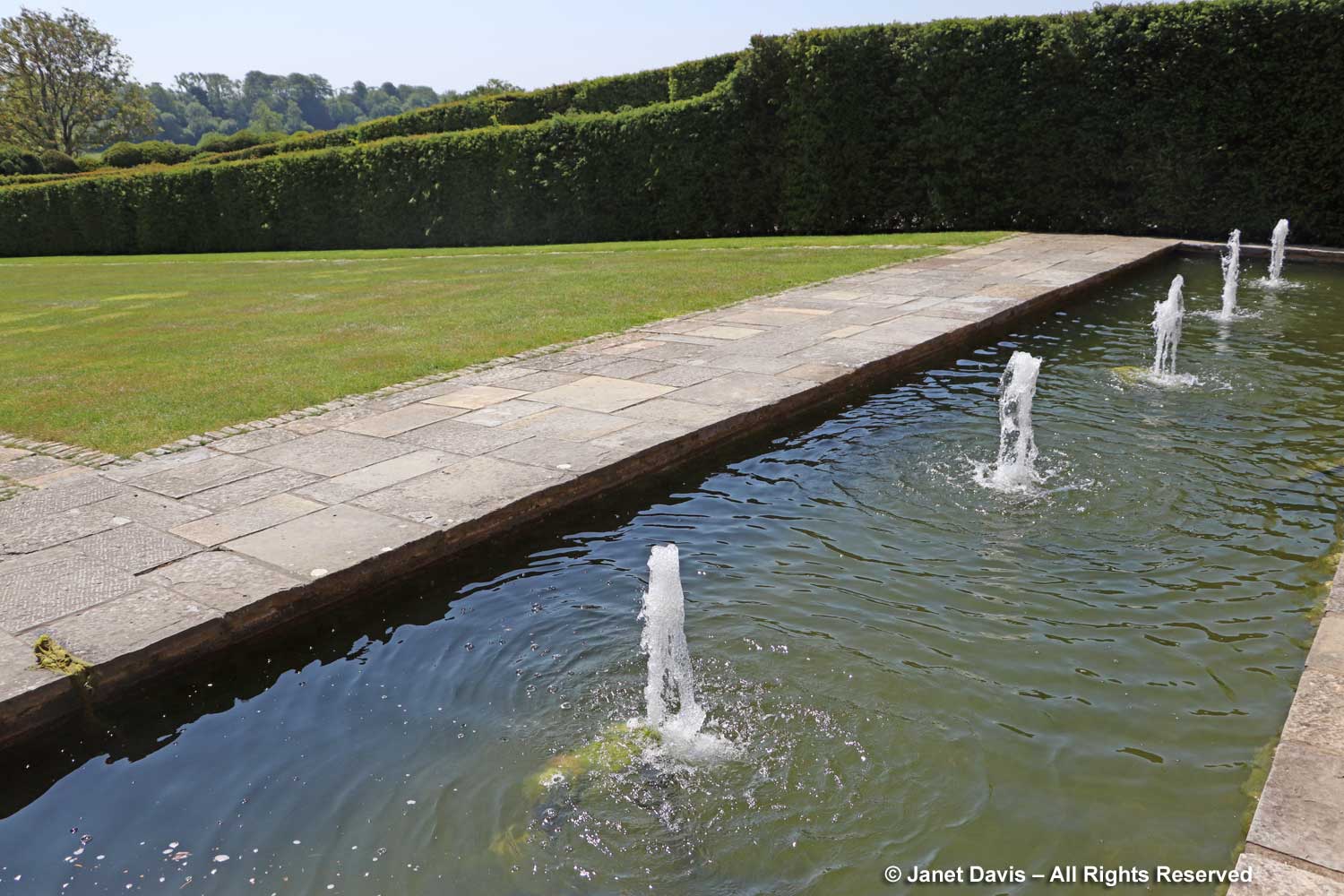
…. and a square waterlily pool fed by a rill, beyond which is another pool. In the distance are two screened houses in the produce garden.
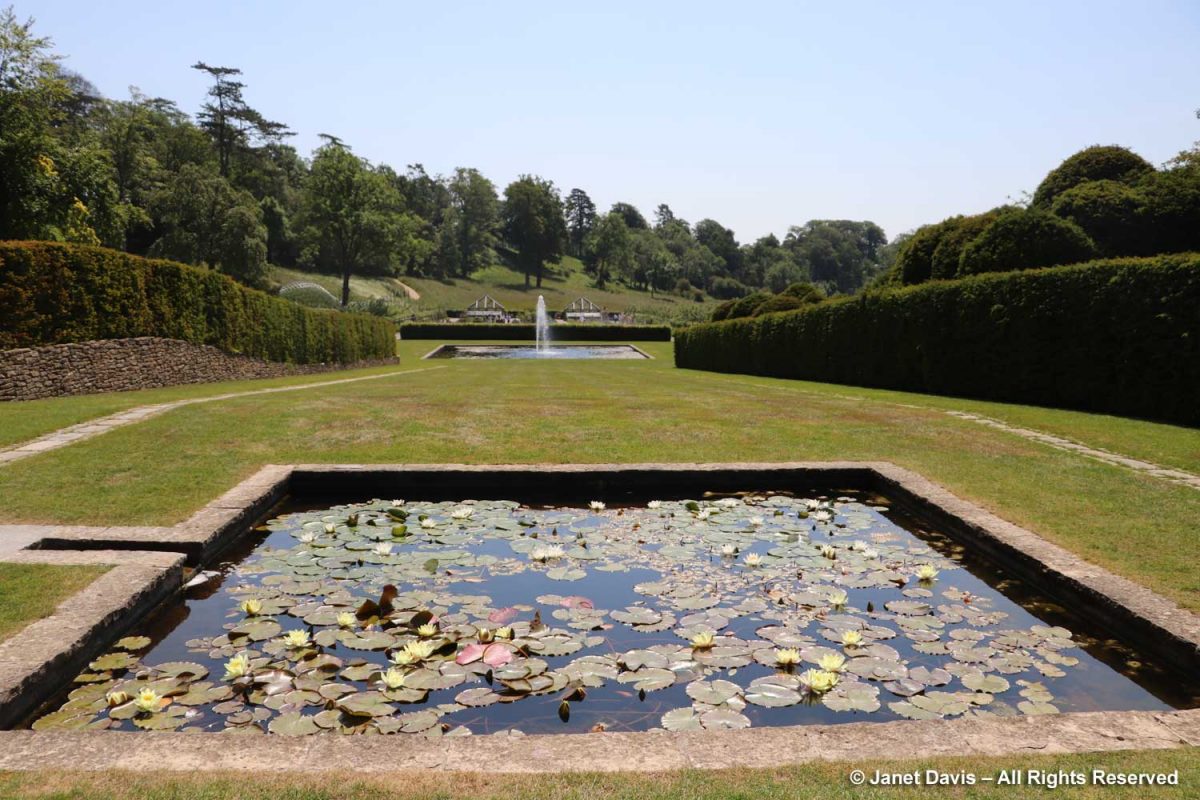
Then it was into the Parabola Garden. In the language of mathematics, a parabola is a U- or D-shaped curve that features a vertex and symmetrical axis – like a rainbow, for instance. The Newt’s version occupies a walled garden that was originally designed as a kitchen garden by Henry Hobhouse II. Two centuries later, it was framed by Sandra and Nori Pope’s iconic colour border, below.
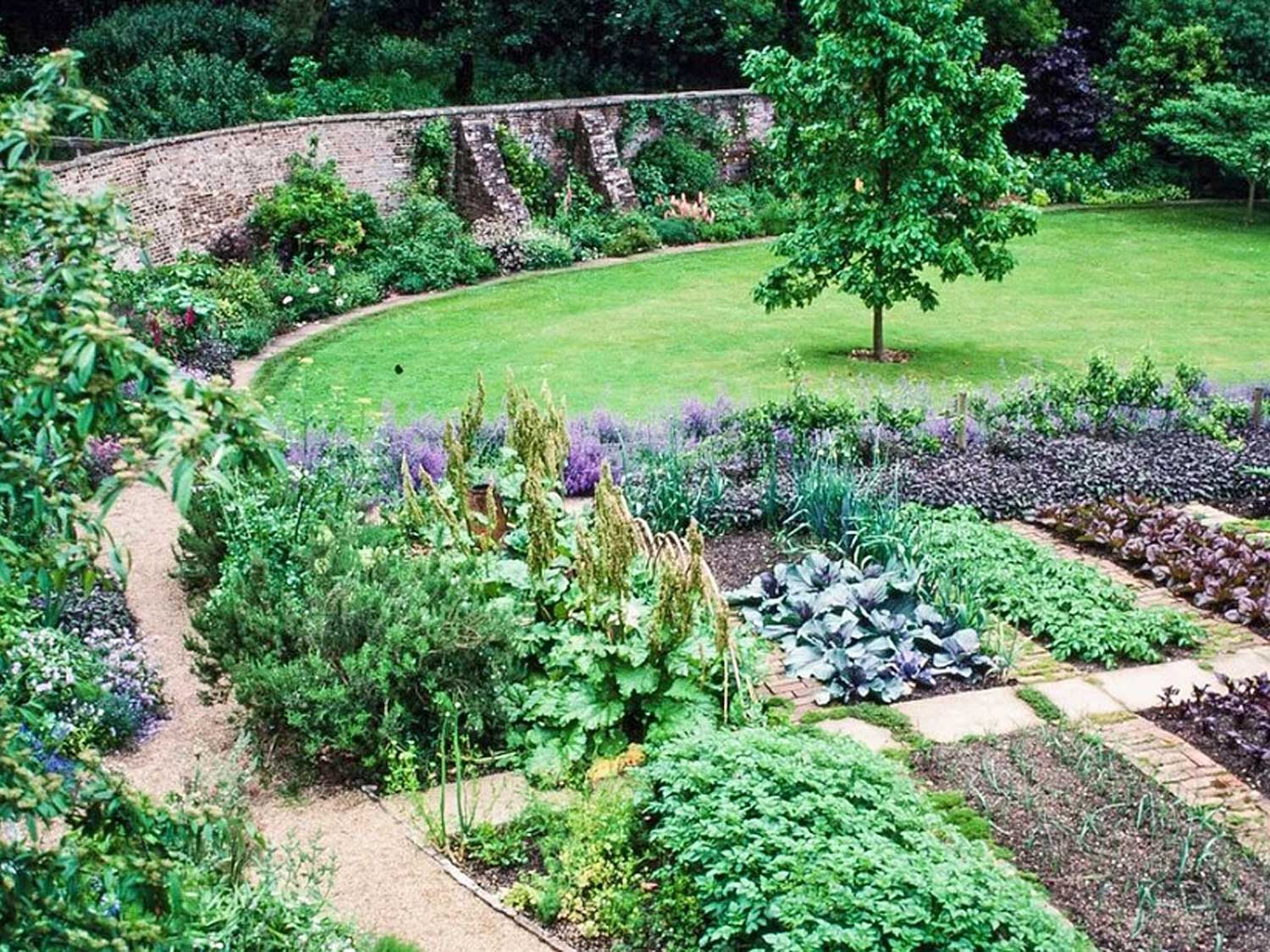
Today, the Parabola Garden is designed as a maze and home to a collection of 267 cultivars of apple trees representing each apple-growing county of England. They grow in cordons, fan-espaliers and various other space-conserving methods. (The Cyder Bar near the garden’s entrance also pays homage to apples and features tastings.) That stone wall at the top of the photo below surrounds the garden and….
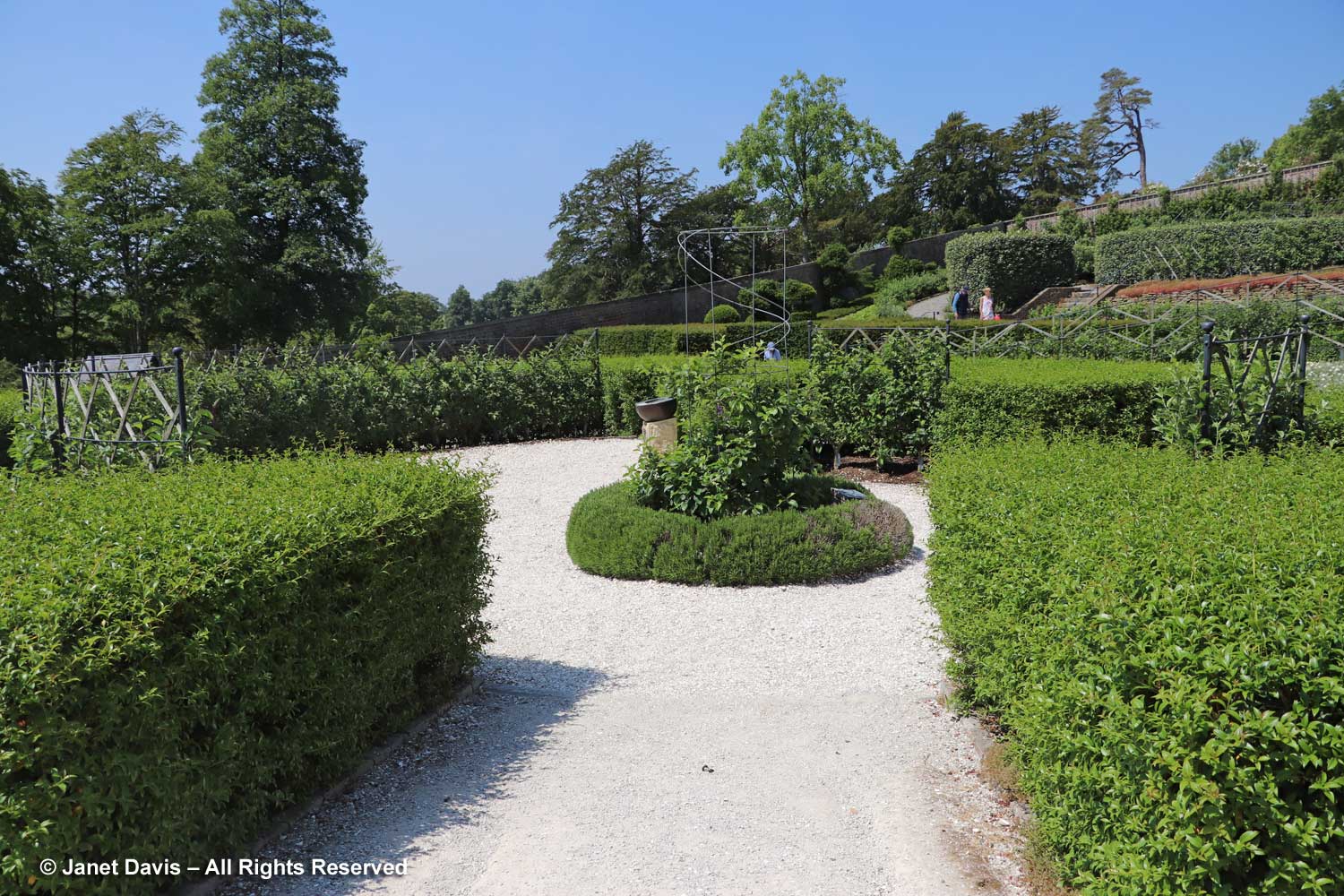
…. features the names of the apple-growing counties. Each year in the 3rd week of October, the Newt hosts a celebration called Apple Day featuring juice pressing, apple games and recipes.
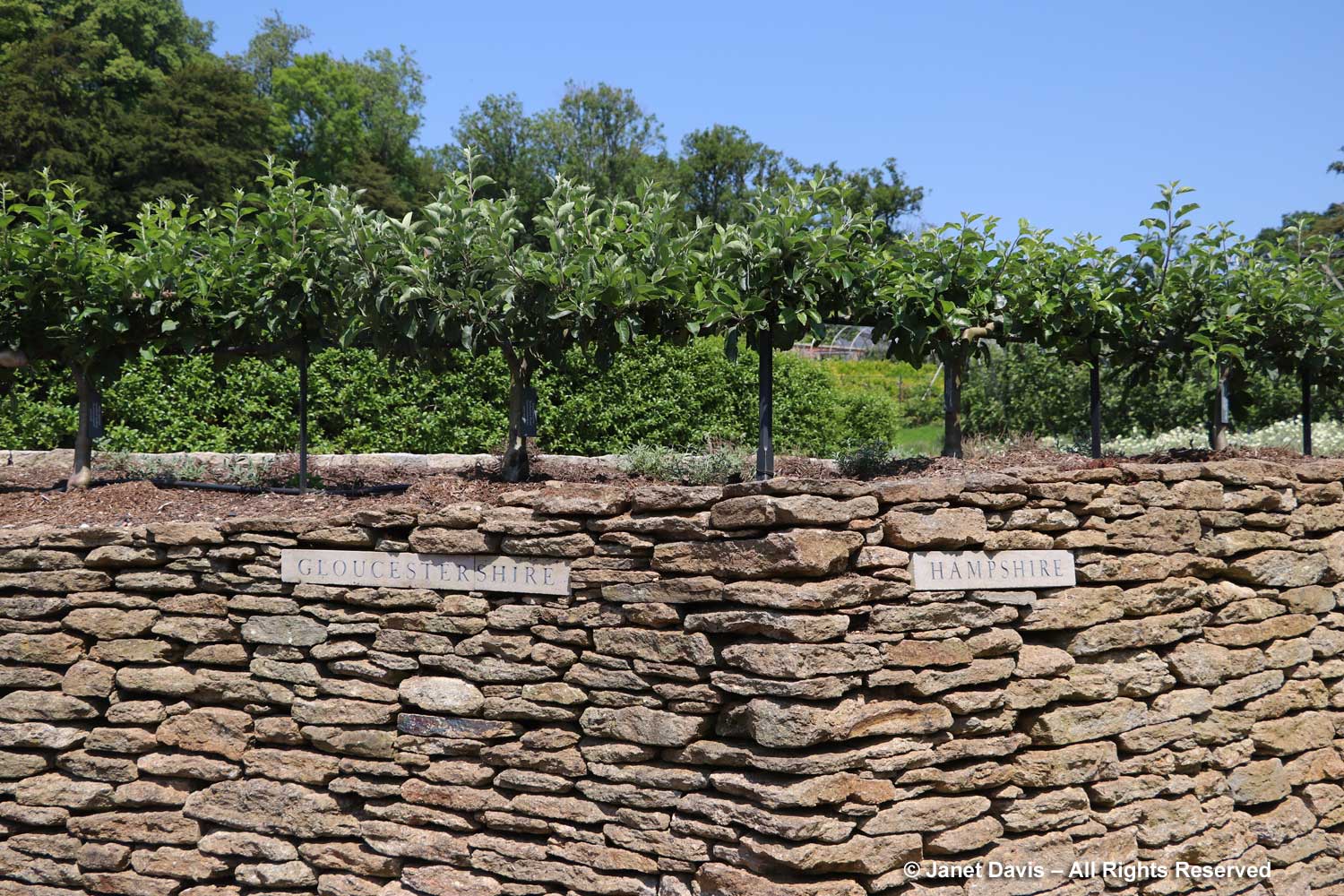
Although England is famous for its hen parties, the Parabola Garden features the real thing. This pair obviously wandered up from the henhouse below.
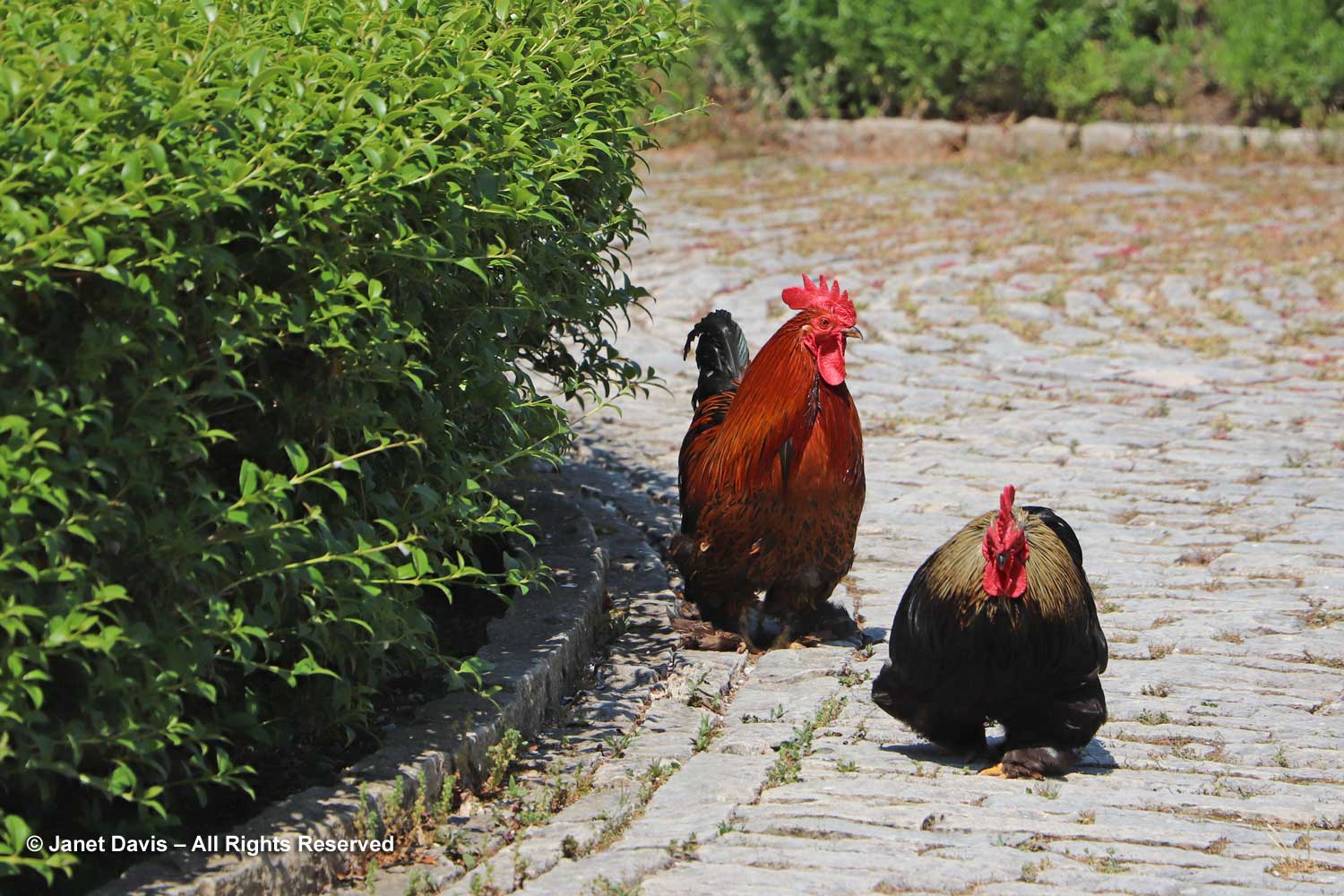
Yet another water feature forms a central focal point in The Parabola.
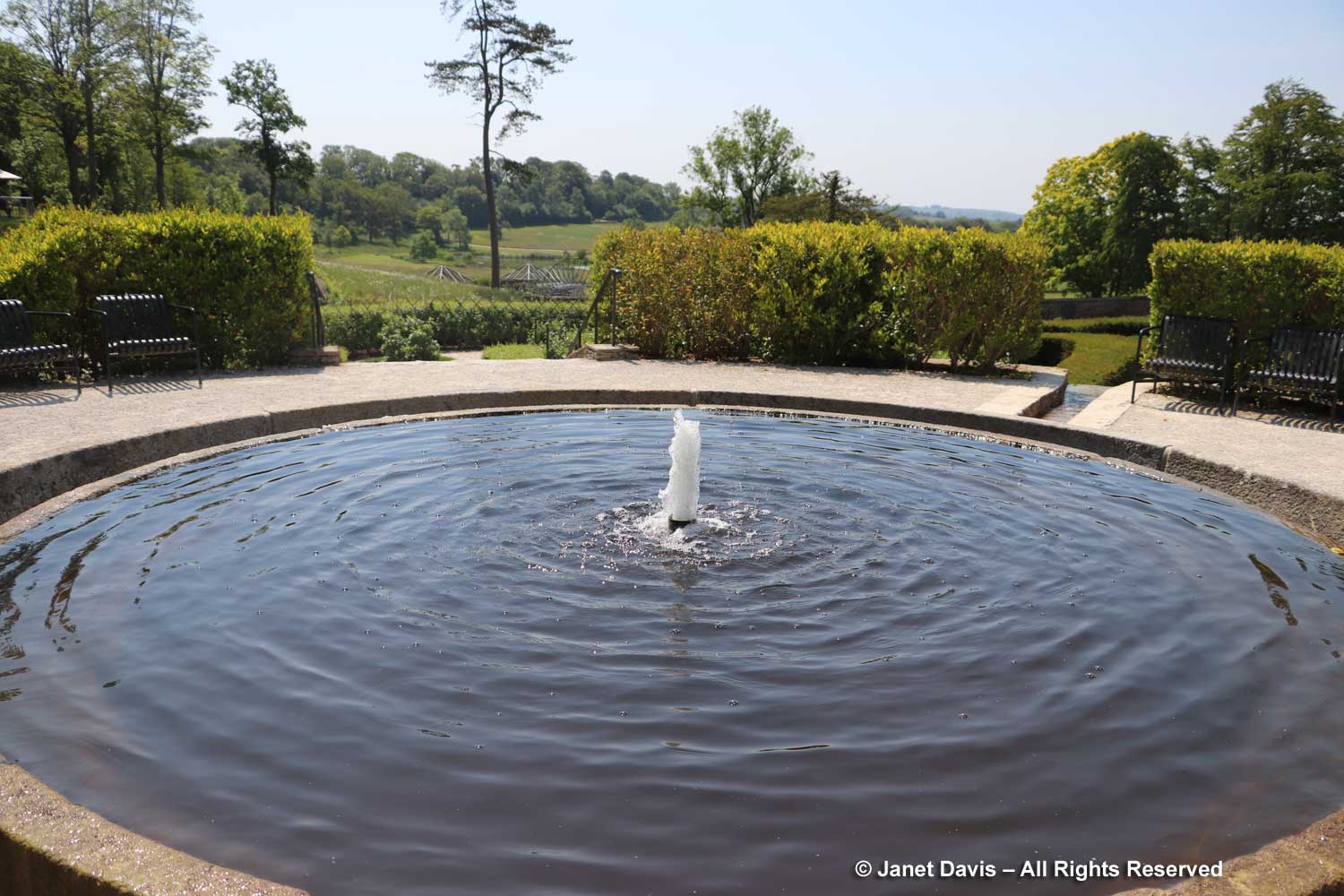
Then it was under the Caterpillar Tunnel weaving through meadows towards the Produce Garden.
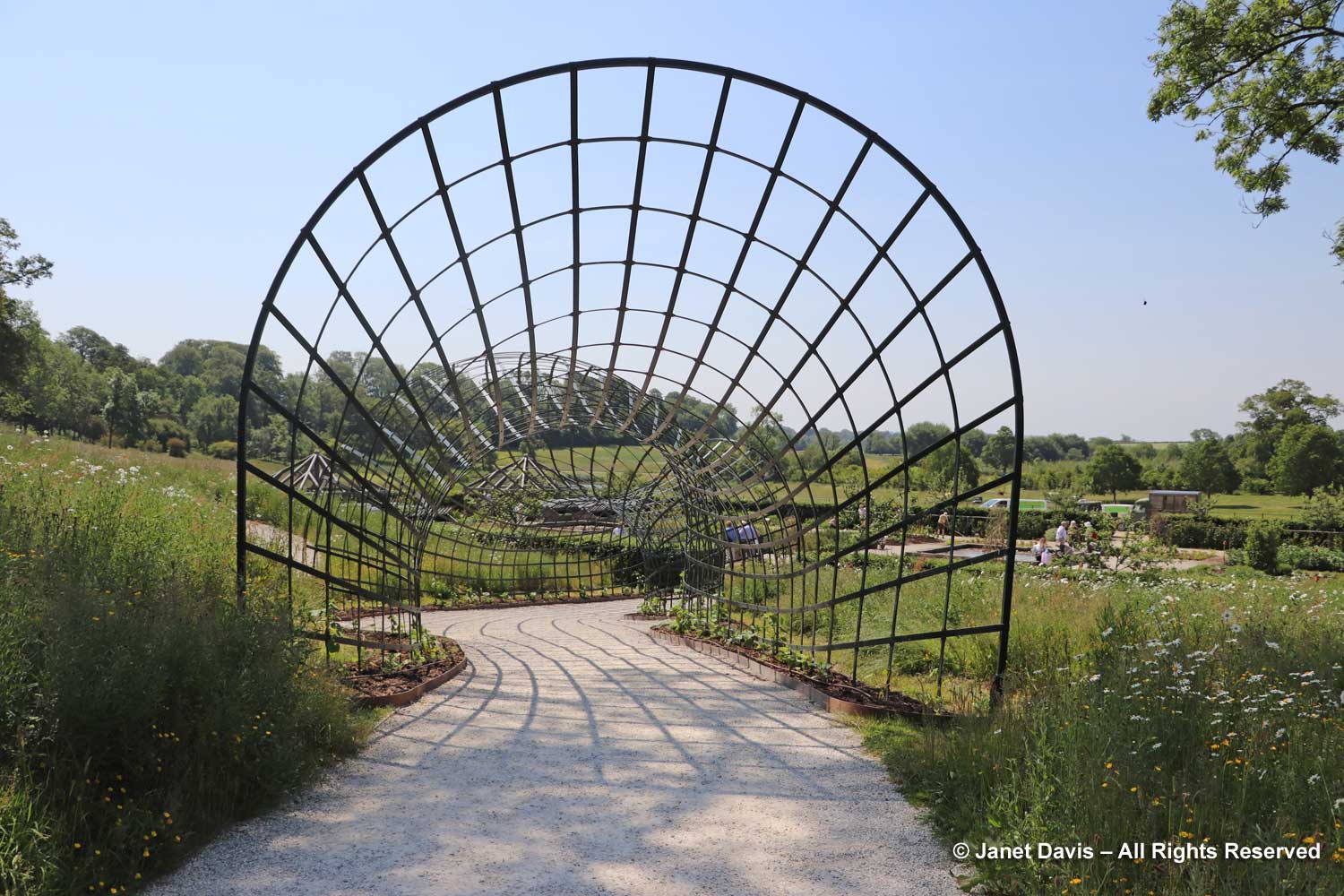
The base of the tunnel is planted with tromboncino, bottleneck and other varieties of squash which create a leafy canopy by late summer.
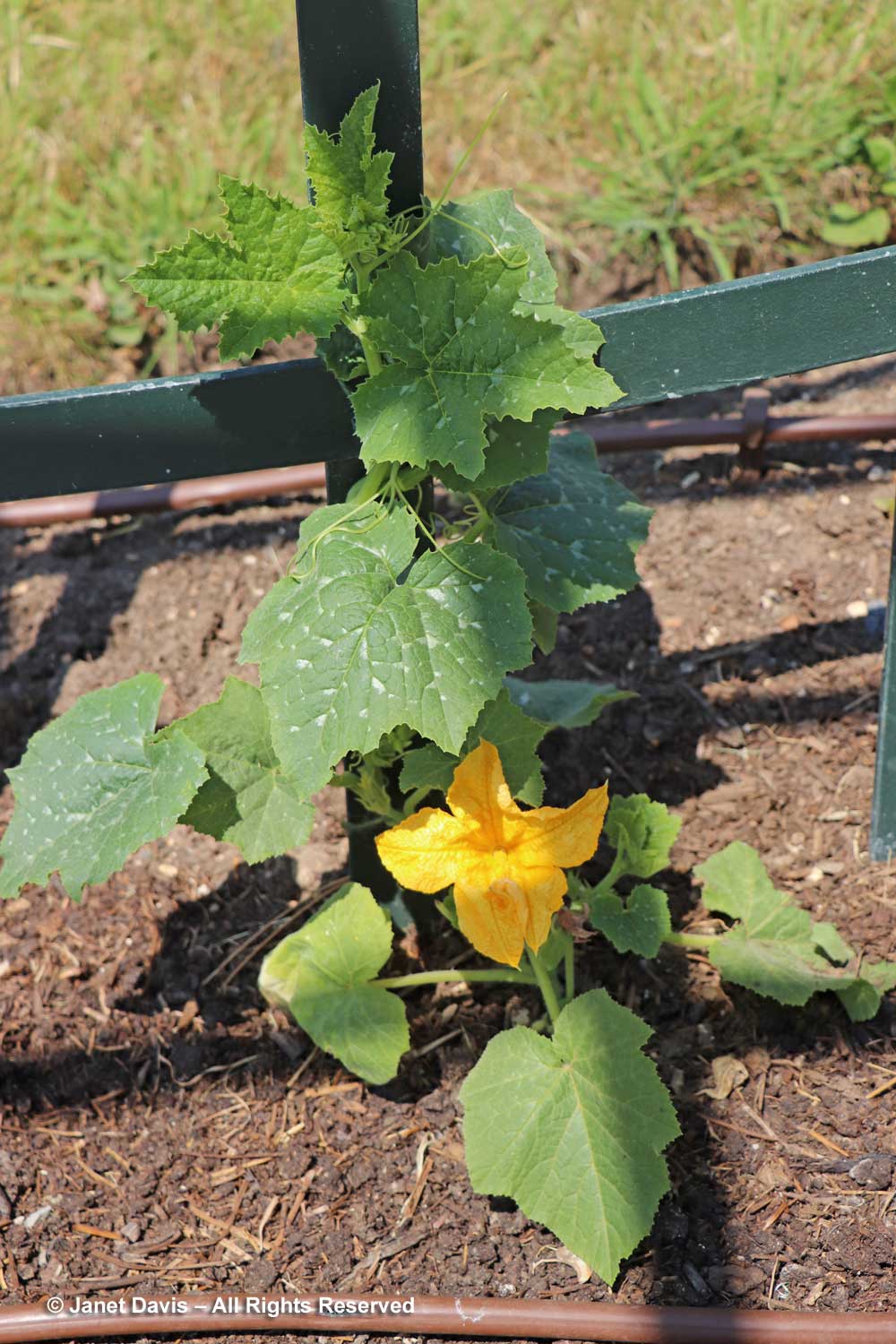
I loved the shadow play along the path.
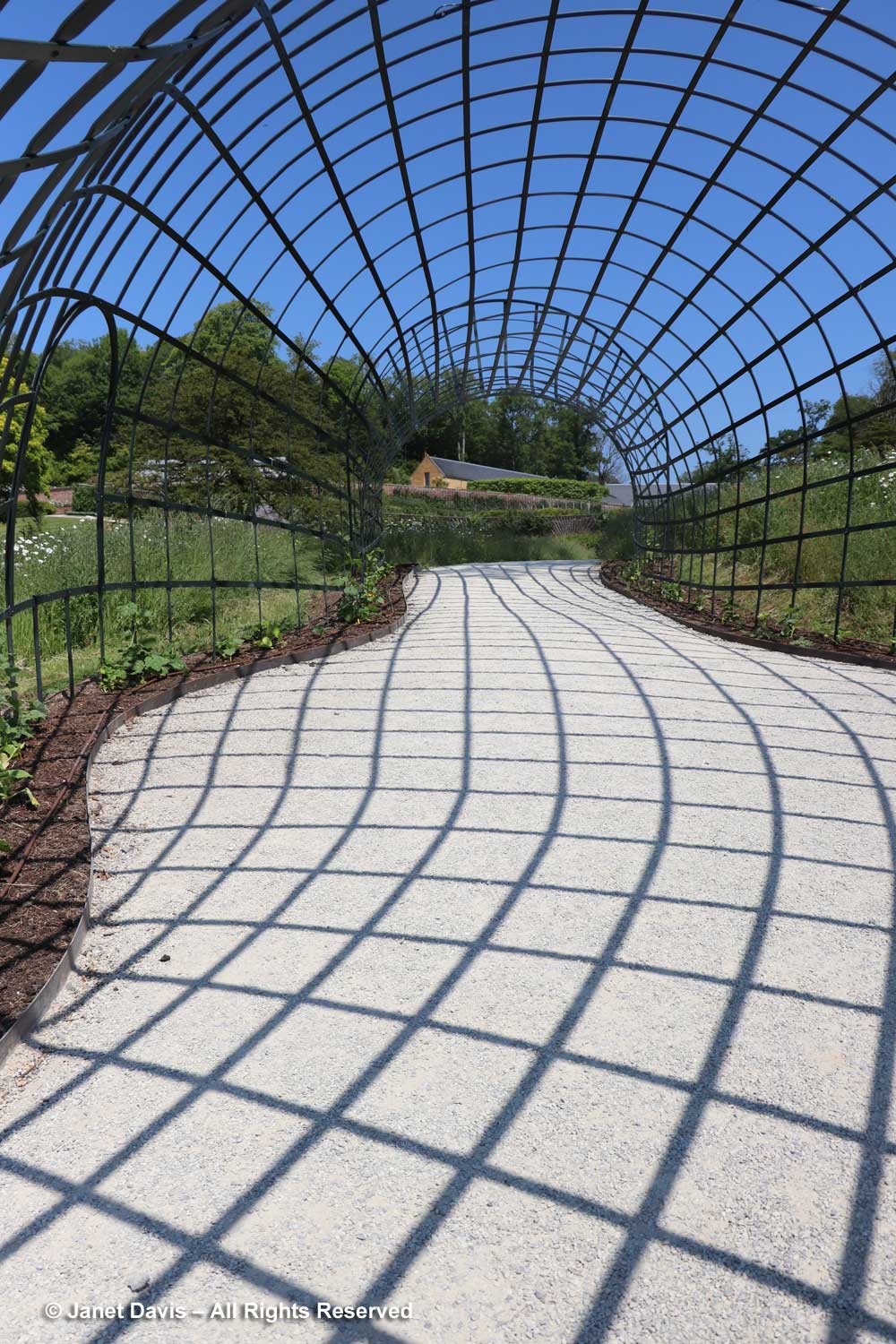
Chives, herbs and vegetable seedlings were newly planted in mulched beds separated by pretty wattle screens. More than 350 varieties of edibles are planted here.
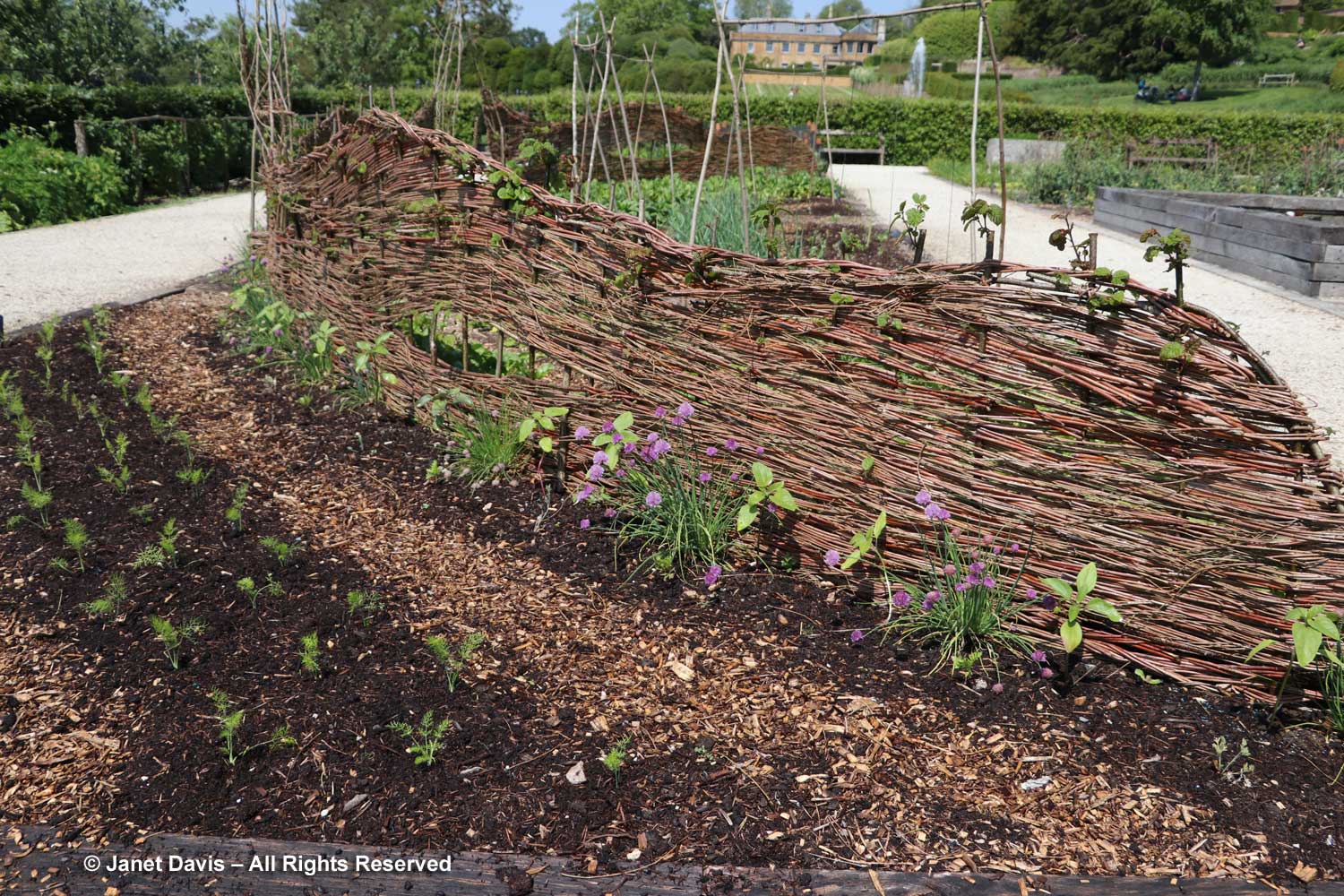
Coldframes held plants too tender to be planted out just yet.
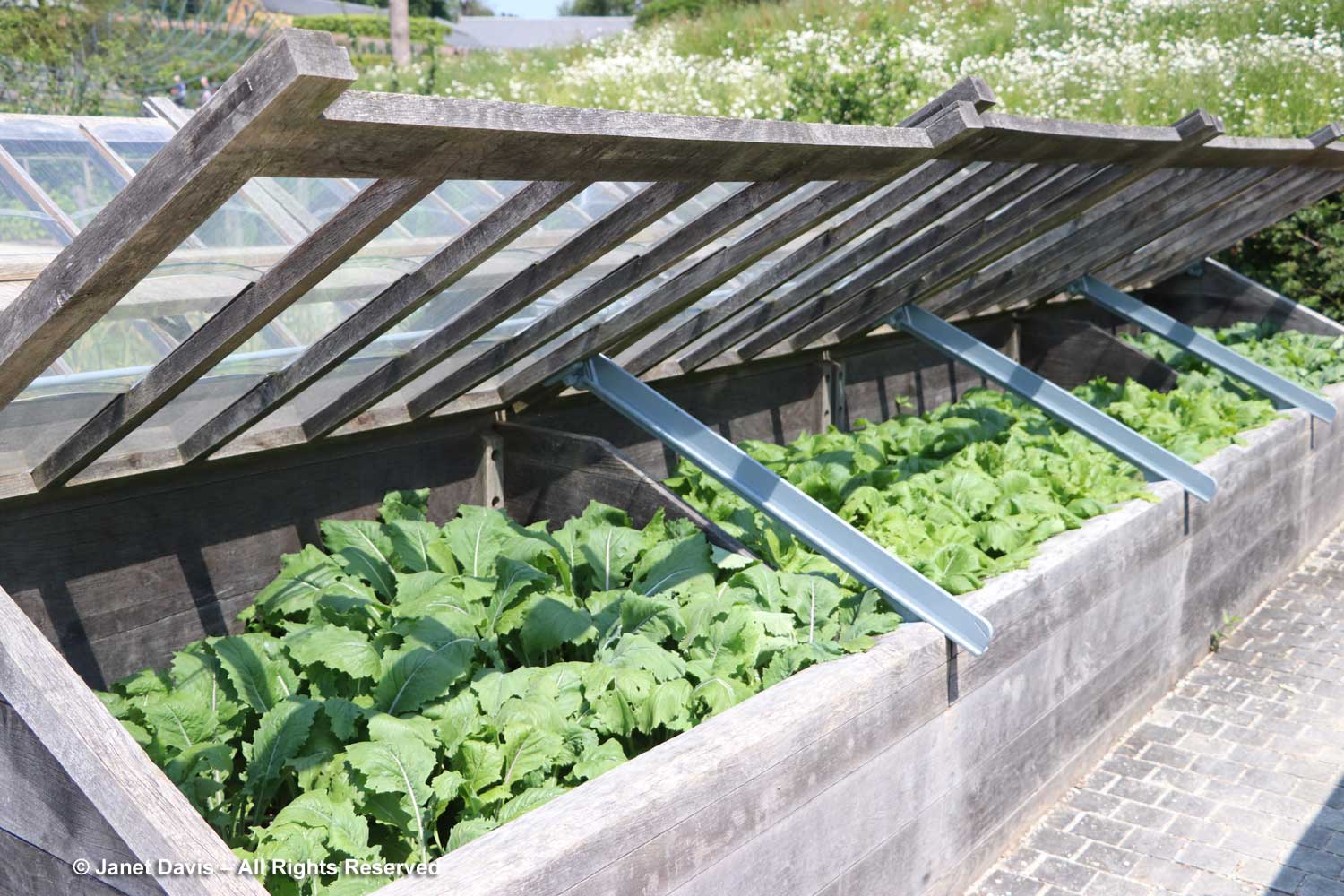
And an oak-timbered fruit cage, one of a pair, protected berry bushes from hungry birds and critters.
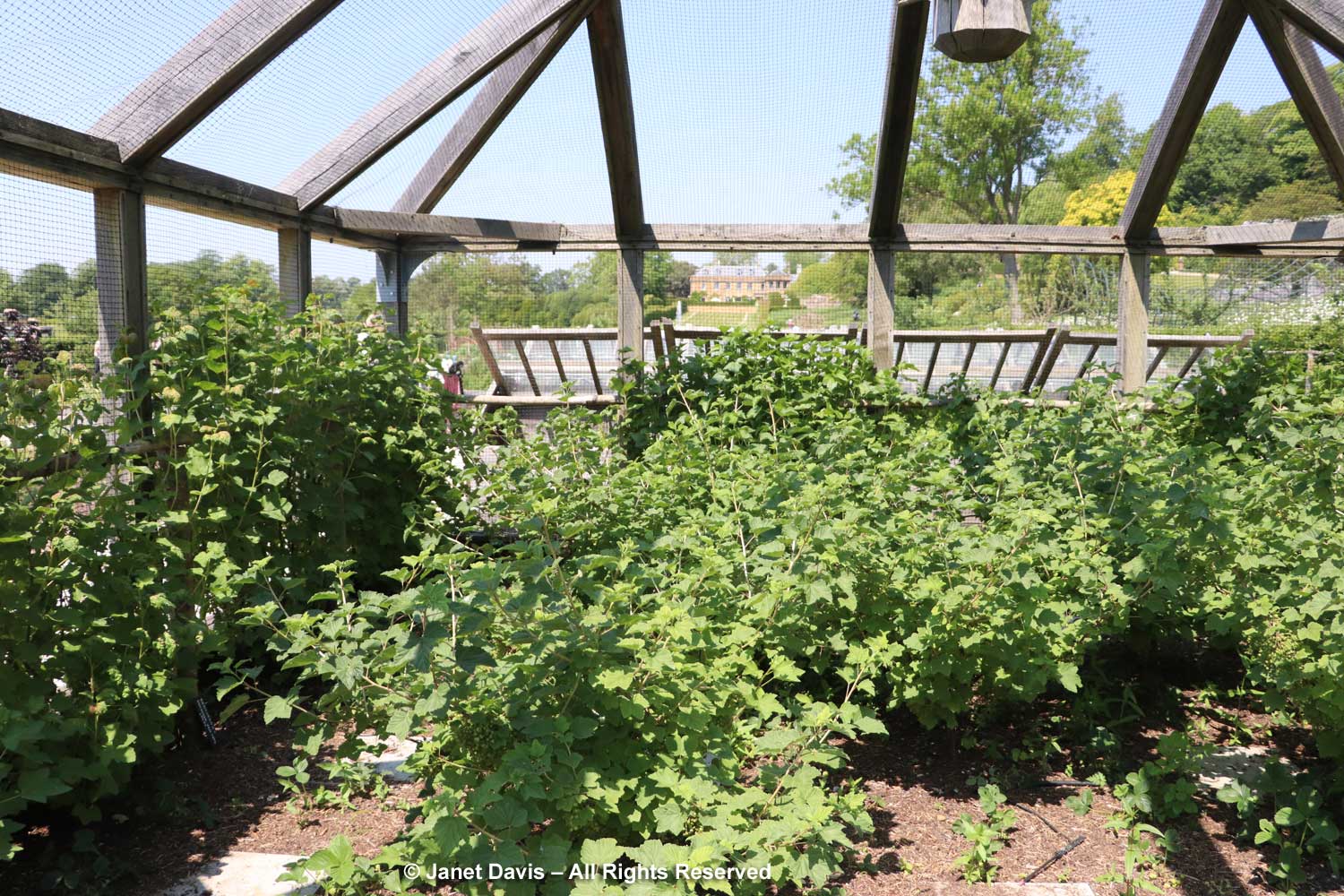
I heard there were living newts in the produce garden’s raised, naturalistic pond, but I looked in vain. However, I did spy a handsome, green-eyed emperor dragonfly (Anax imperator).
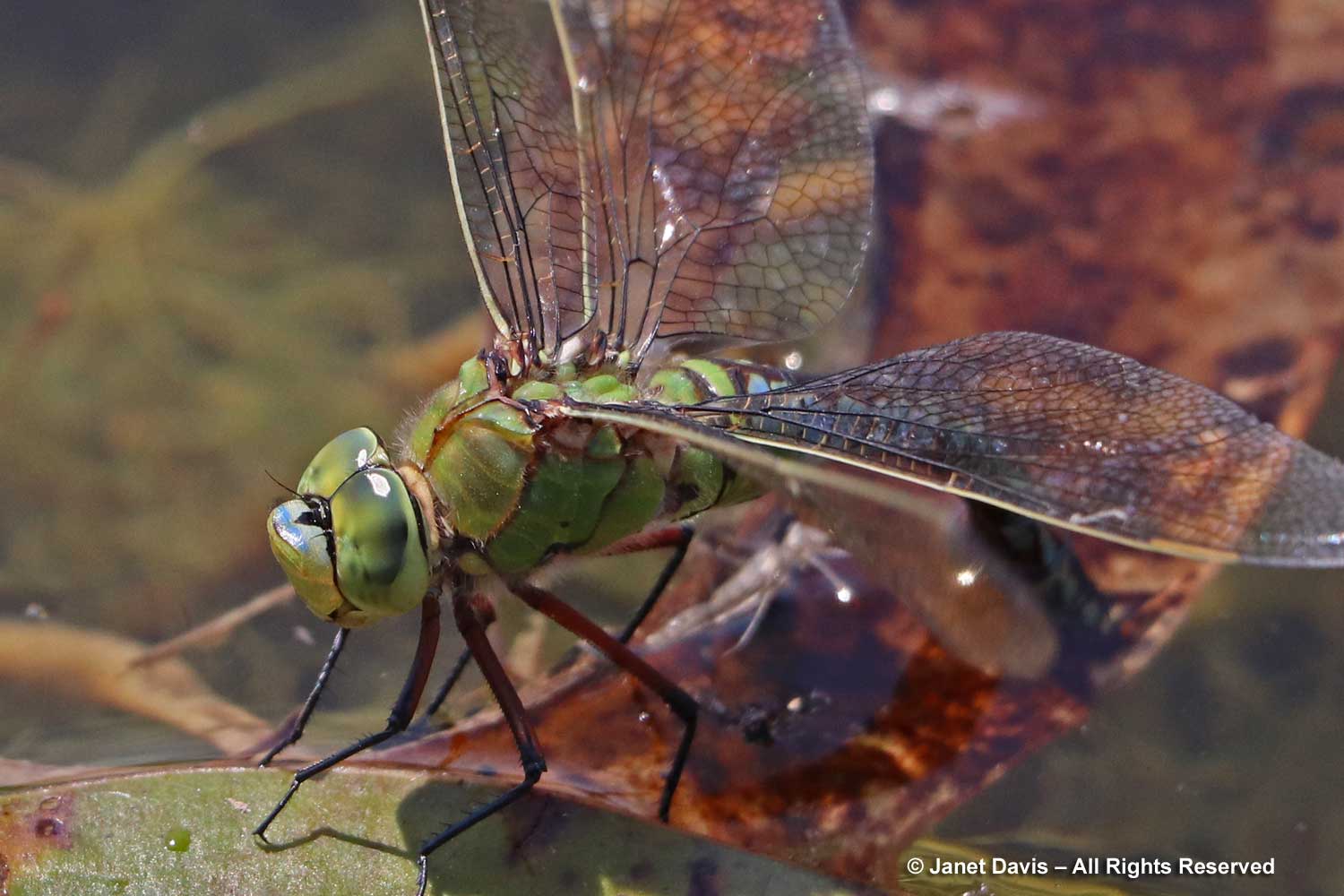
Sadly, it was time to make my way back to the bus via a quick stop for a delicious al fresco lunch. Afterwards, I had just a few minutes to take a walk through the Winter Garden, kept at 20-25C all year long and filled with ferns, orchids, succulents, tropical fruits and tender beauties from far away…..
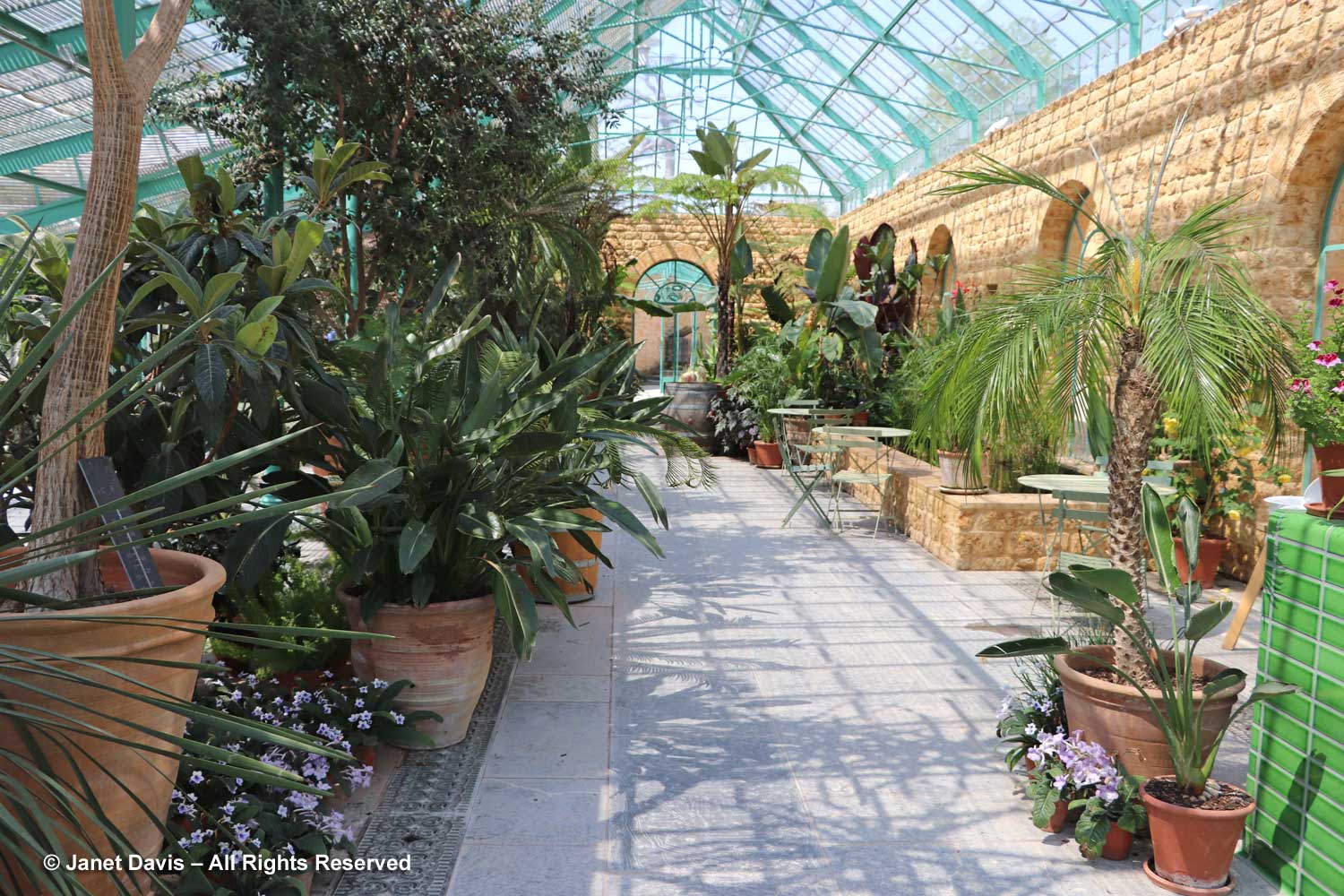
….. like the South American firecracker plant (Dicliptera suberecta).
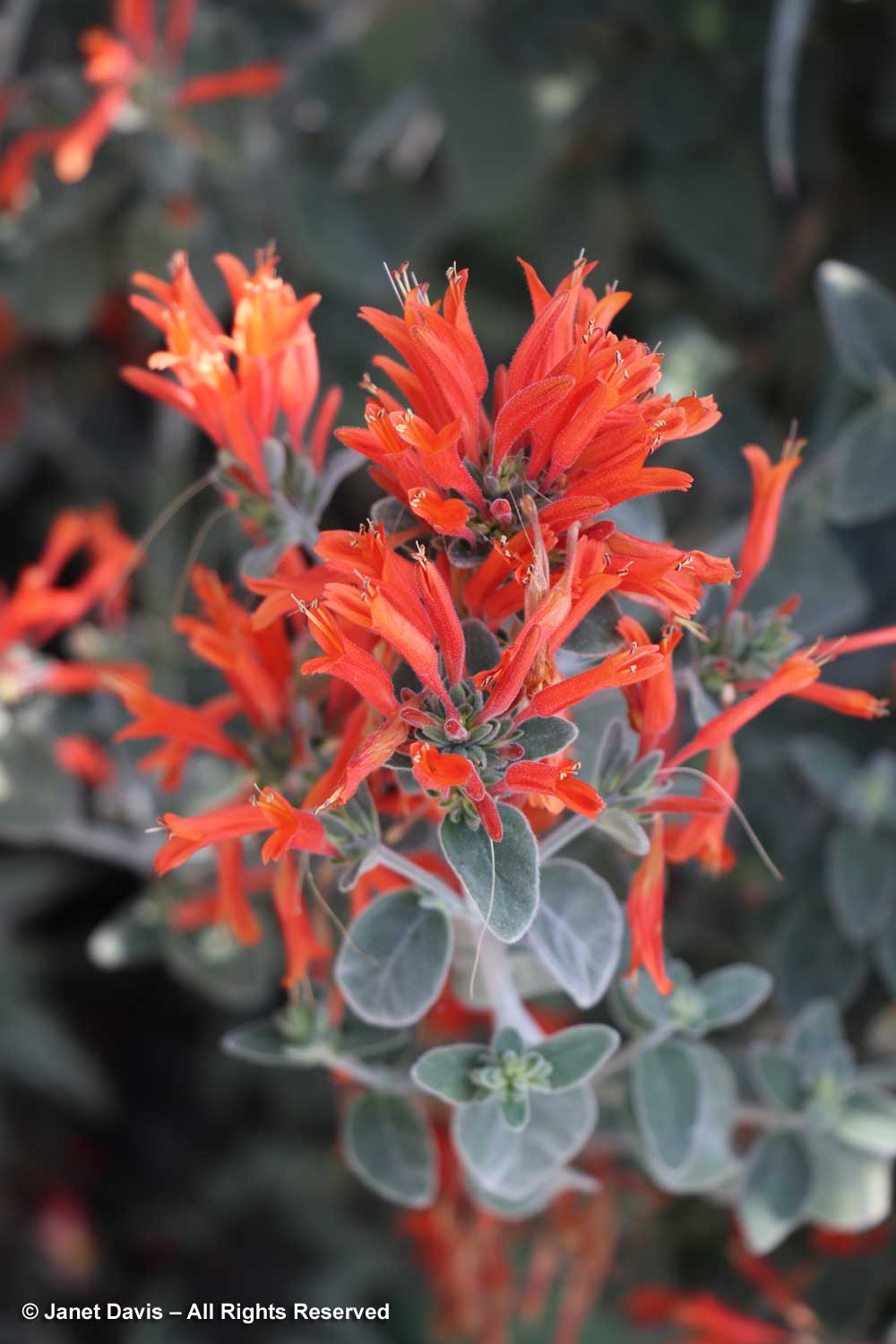
And how did The Newt compare to Babylonstoren? I think they were as different from each other as Somerset apples are to Franschhoek wine grapes, yet they share the same elegant rusticity and exquisite attention to detail. And though The Newt pays homage to its English garden roots, to the Hobhouse and Pope eras, it is very much its own lovely creature, still young and growing, but looking to the future, not the past.
*******
The Newt is open to visitors by annual membership only and includes many benefits, including free garden tours, special events and an impressive list of seasonal workshops. It also includes entrance to partner gardens including Kew, Wakehurst, Blenheim, Great Dixter, Lost Gardens of Heligan, Tresco, Chatworth and others. Clearly, amidst all the comings-and-goings of a working farm and an award-winning boutique hotel, it is aiming for a level of exclusivity and community.
*********
Here are my blogs on a few of the other English gardens I visited in 2023:
Sissinghurst in Vita’s Sweet June
Boldly Go: June Glory at Great Dixter

